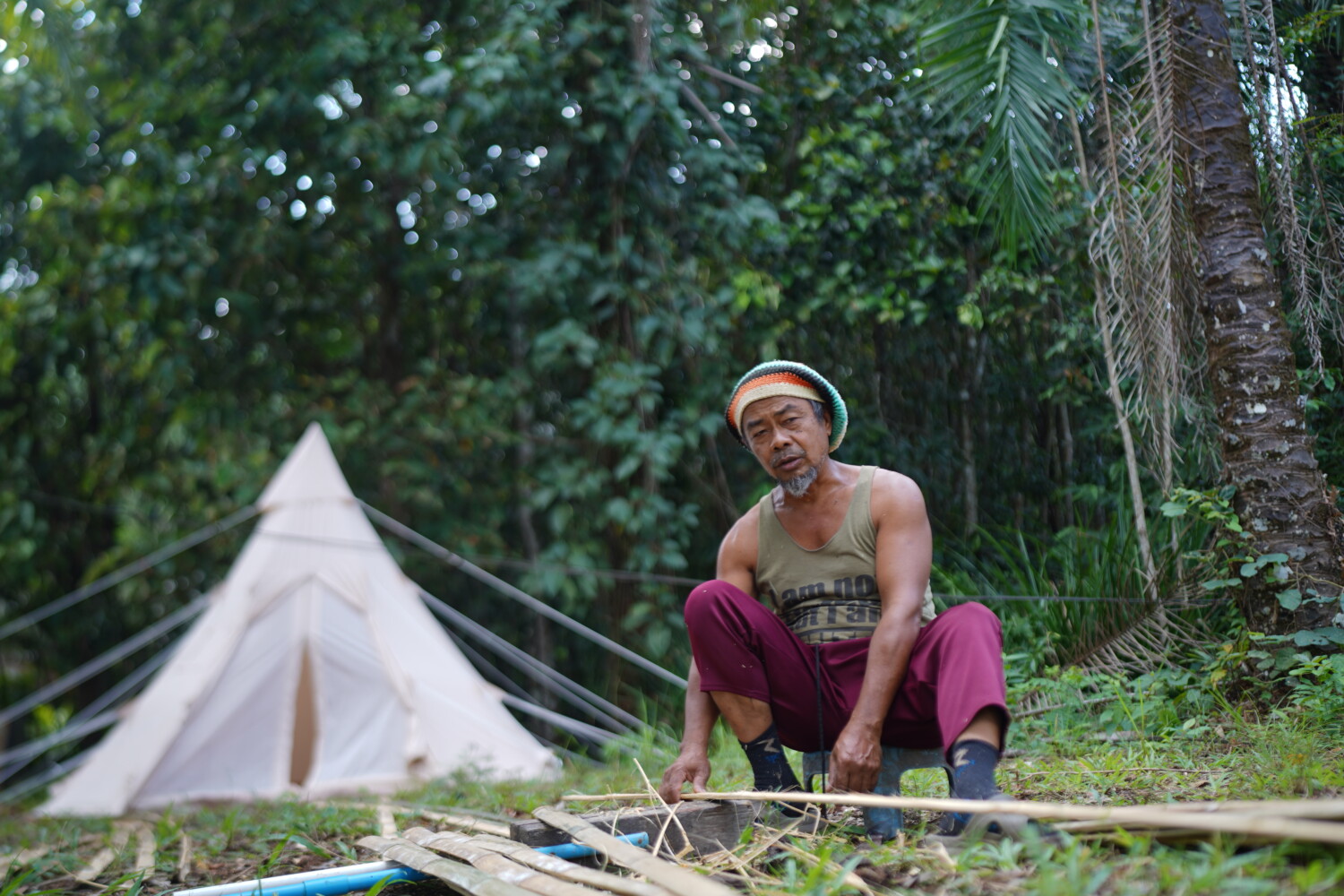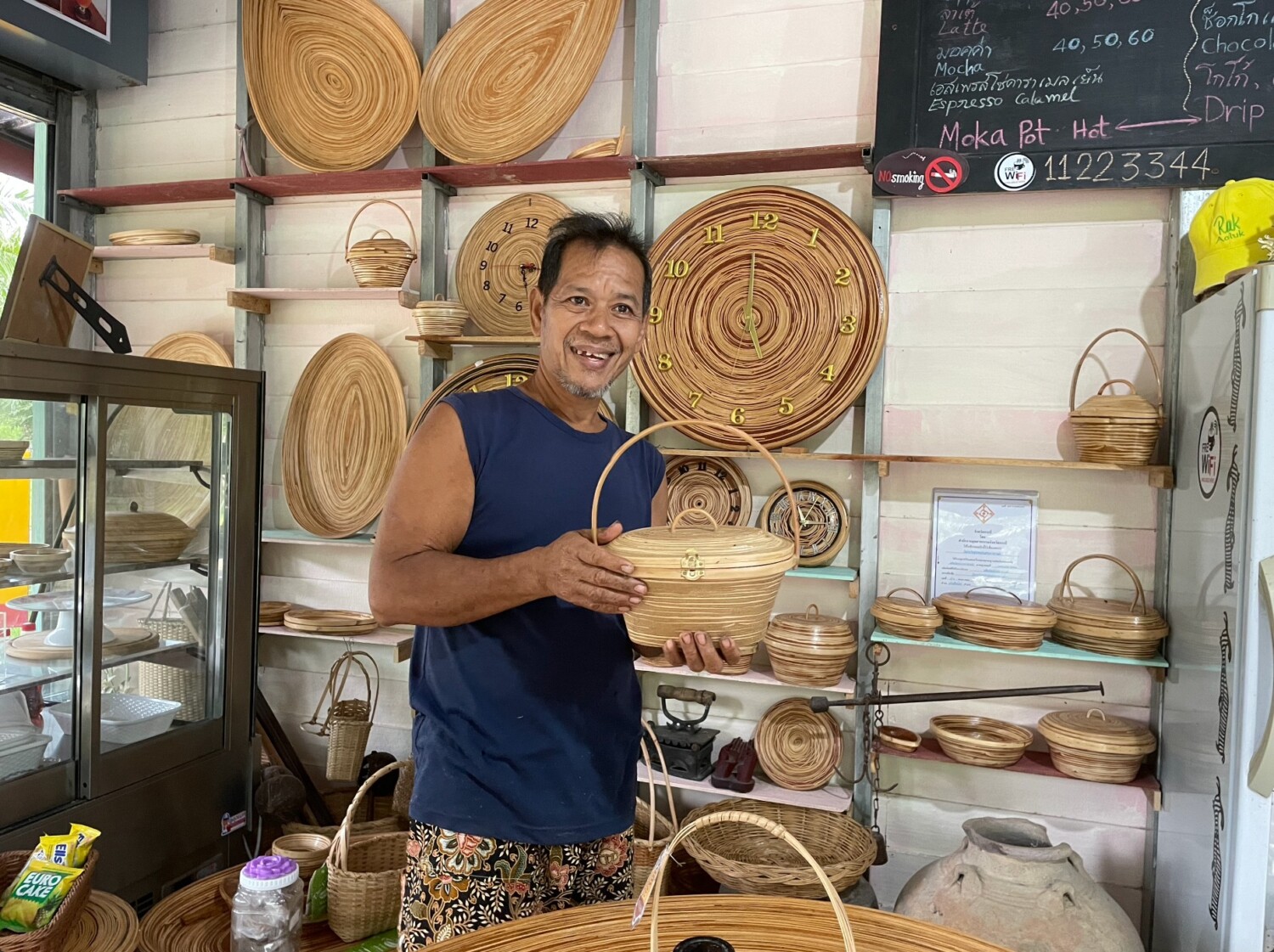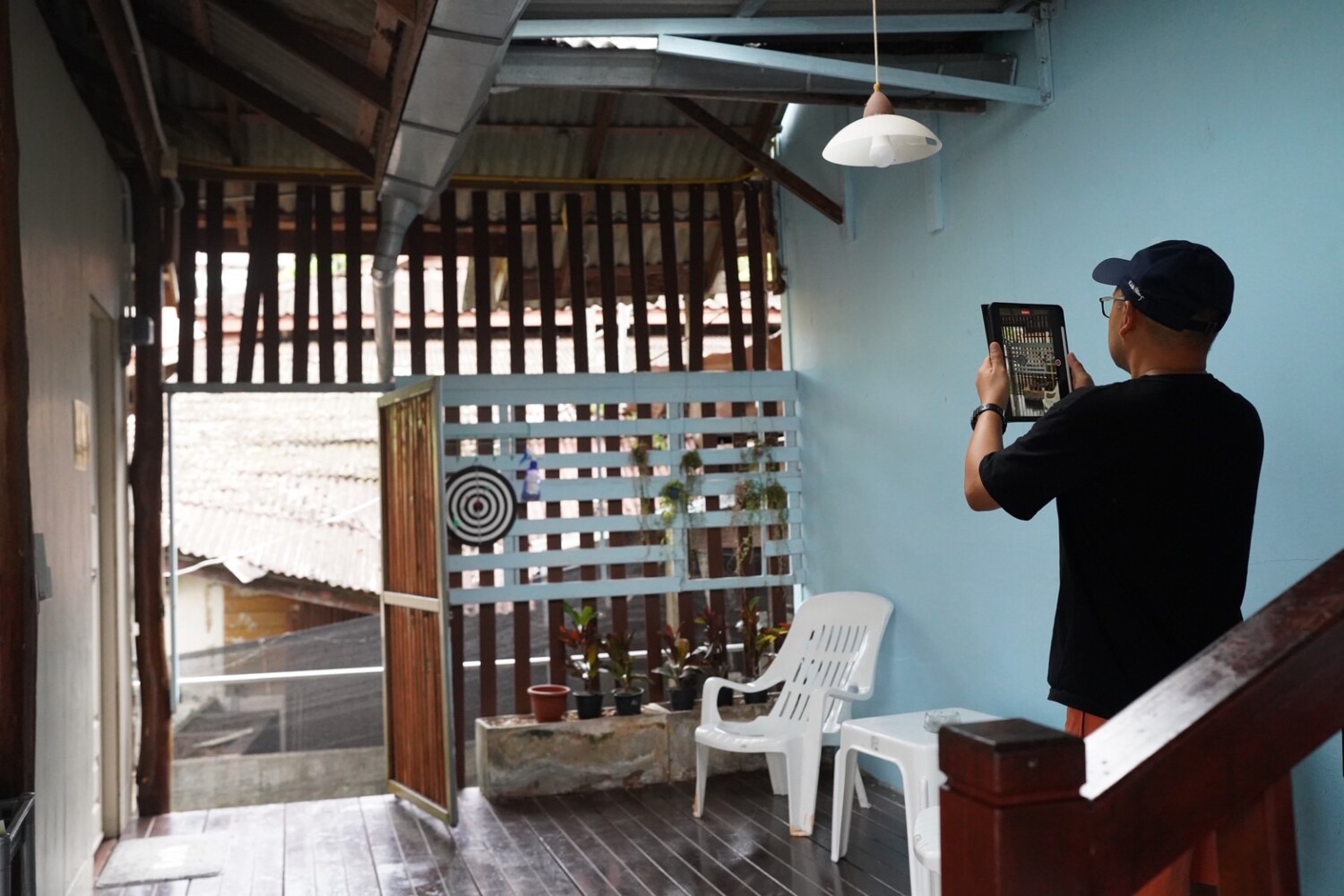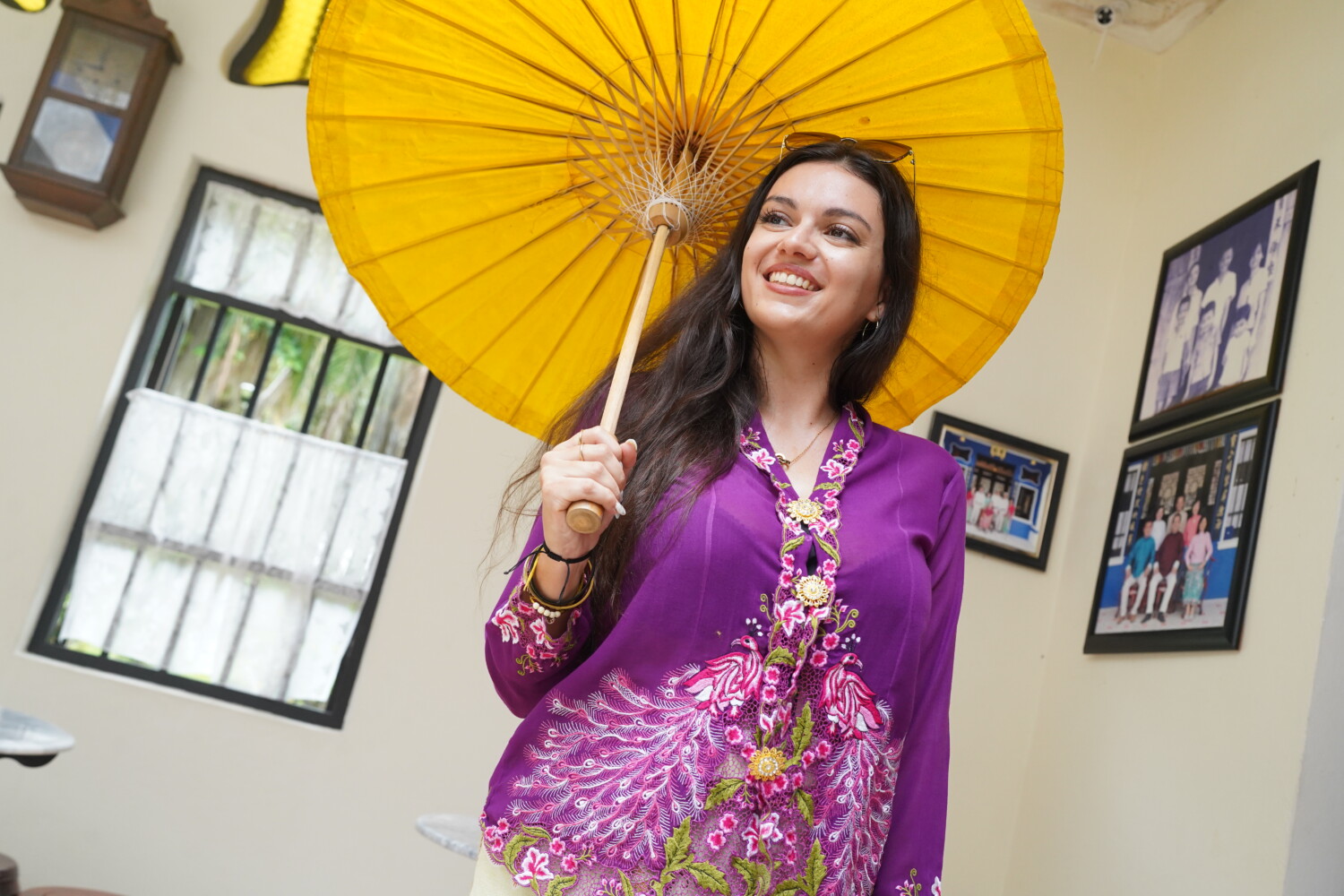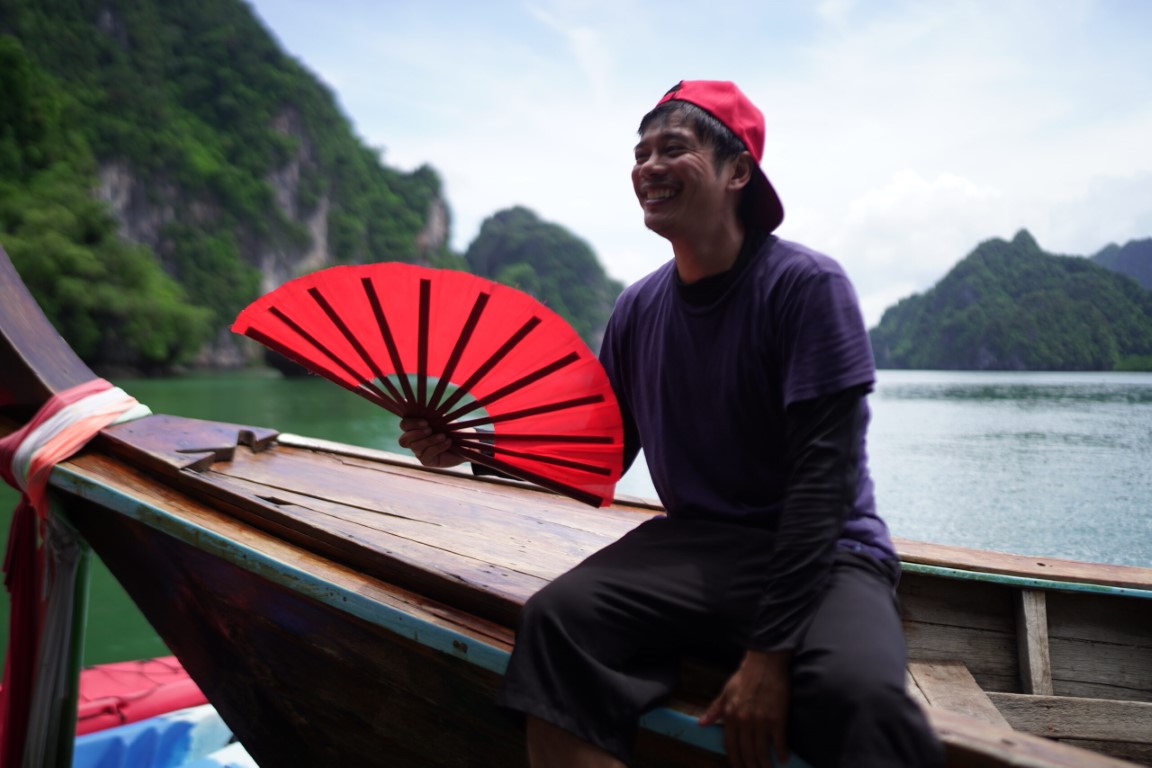Eco-Construction Internship Program in Ao Luek, Krabi Province, Thailand
Host Organization: Green Guardians Association
Location: Nature Living Institute, Ao Luek, Krabi Province, Thailand
Program Duration: 3 Months
Participants: 3 French Construction Students
Report Prepared For: Green Guardians / Program Coordinator
Date: 08 June 2025

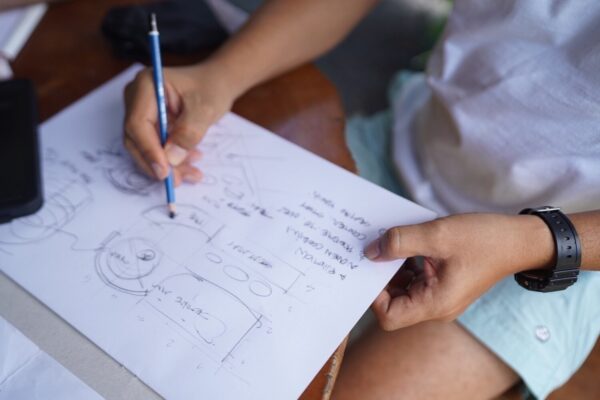
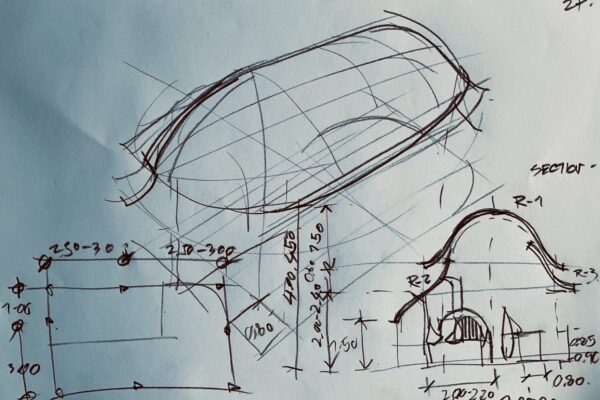


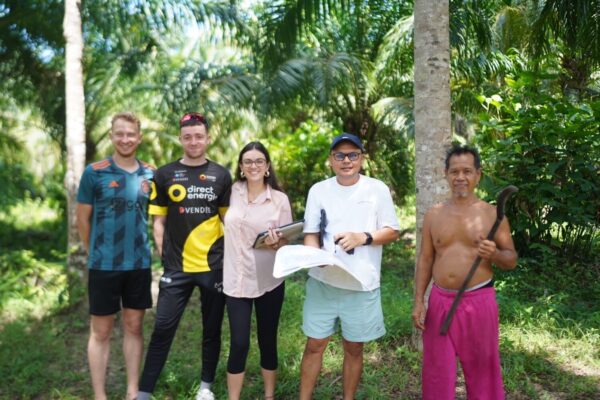
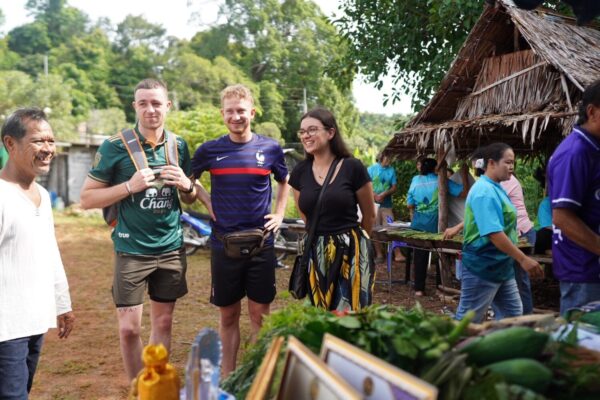

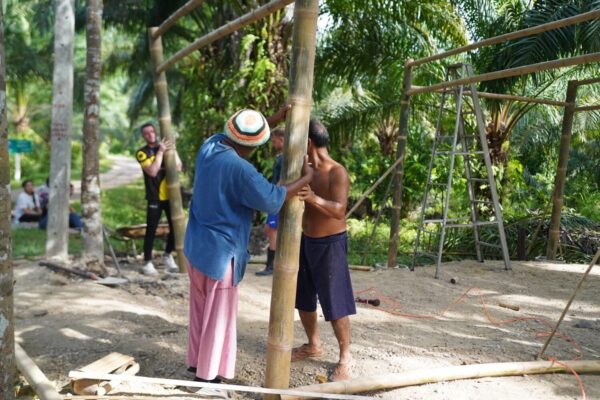
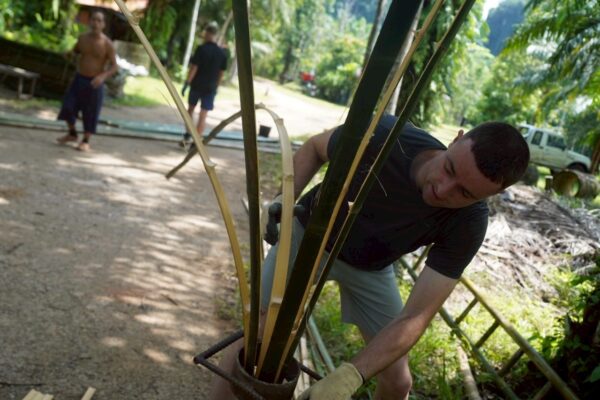
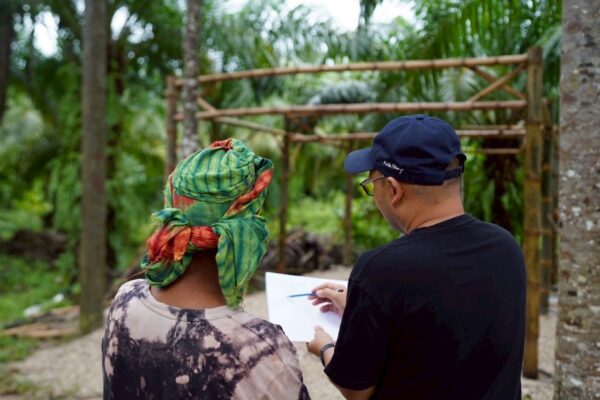
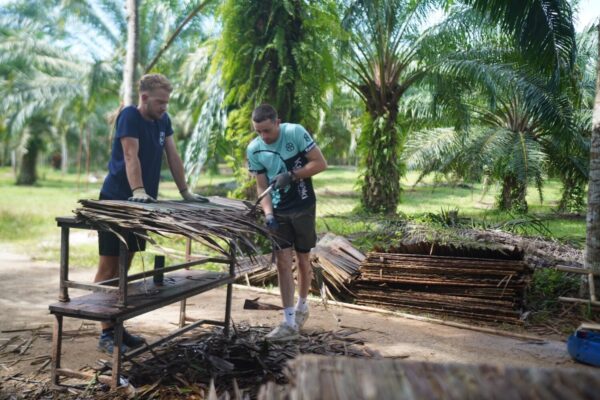
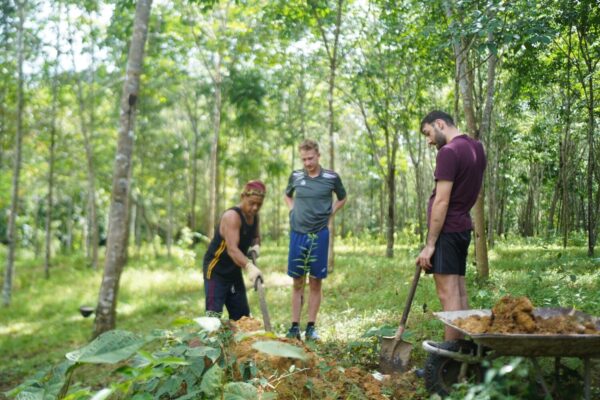
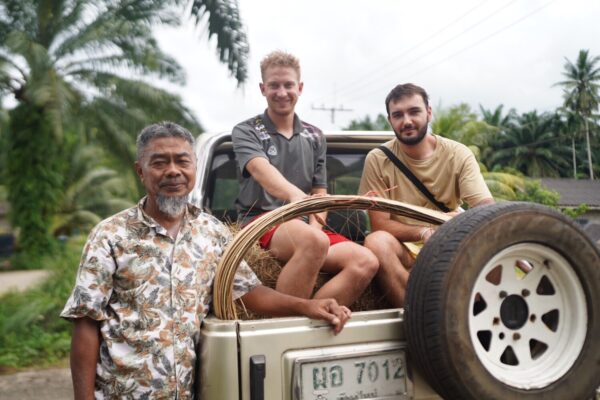
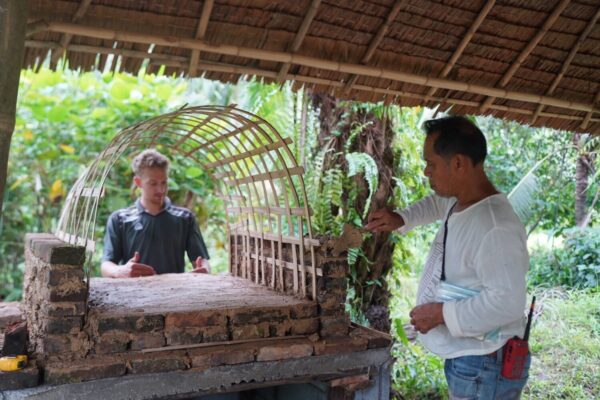

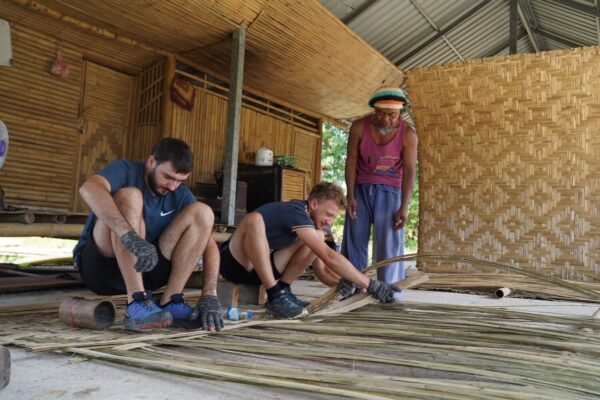
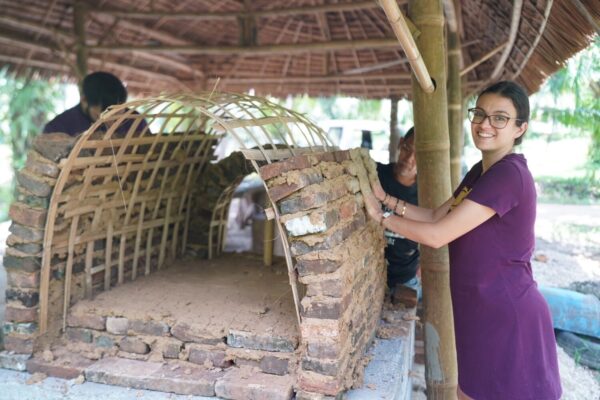
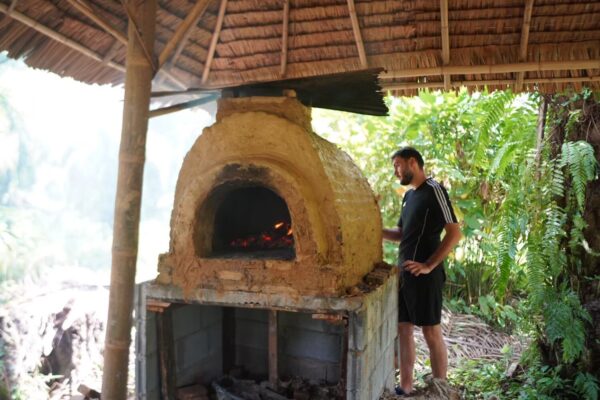
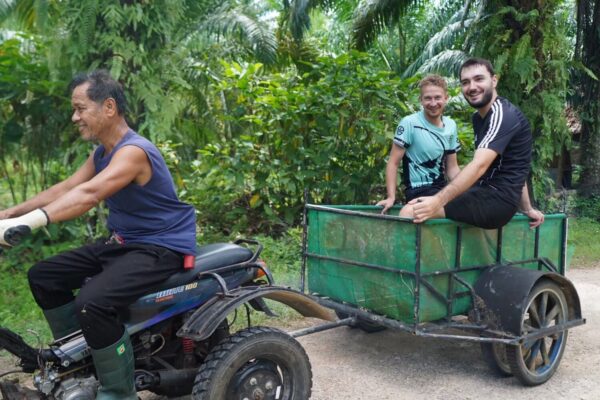
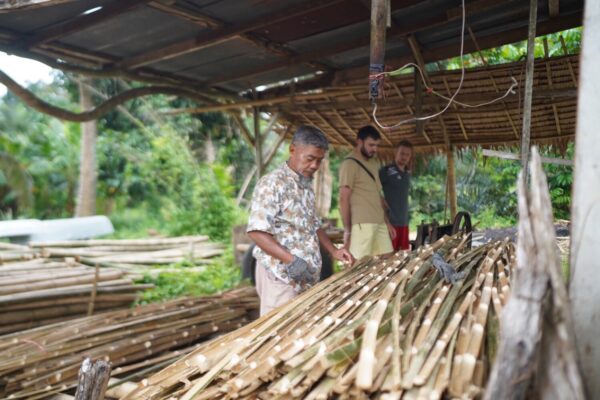

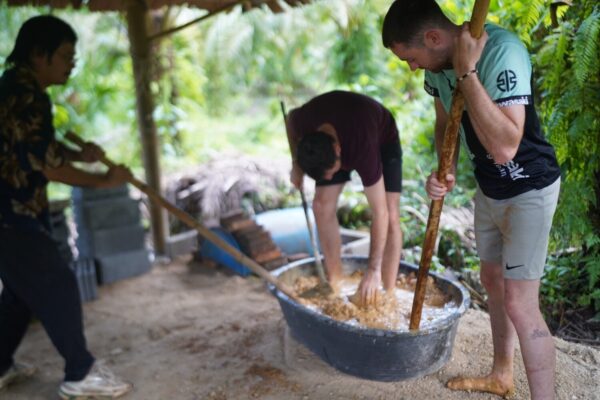


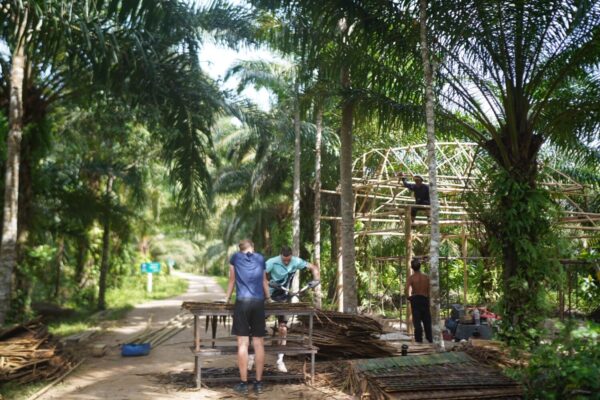
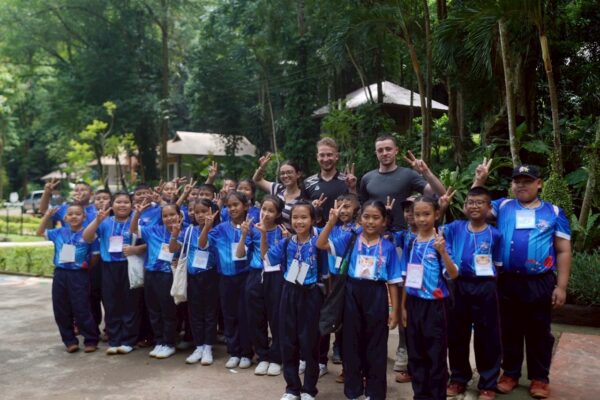

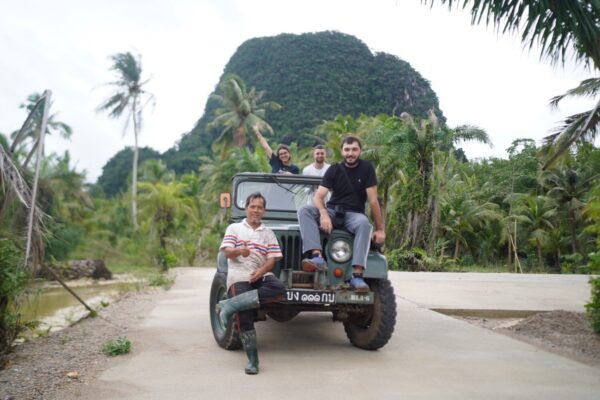
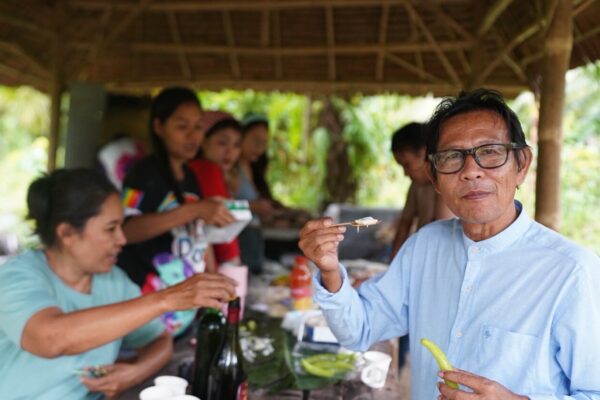
1. Introduction
Thai Spirit Life is honored to welcome three construction students from France for a three-month internship program focused on eco-construction techniques using natural, local materials. The program is based in Ao Luek, Krabi Province, a culturally diverse and environmentally rich community in Southern Thailand.
The internship is designed as a practical, immersive learning experience in sustainable construction that also introduces students to Thailand’s traditional building techniques and way of life. The core project involves designing and constructing a fully functional outdoor kitchen using materials such as bamboo, nipa palm, palm waste, and clay.
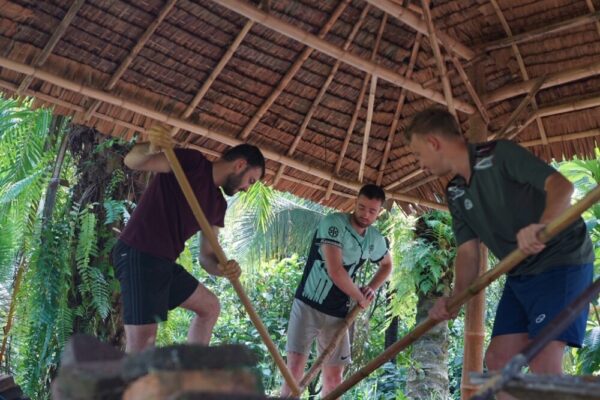

2. Objectives
To provide practical training in ecological construction methods using renewable local materials.
To foster cross-cultural understanding through community immersion.
To develop design and construction skills in a regulatory context different from Europe.
To complete a community-use outdoor kitchen as a final project.
To empower students to think creatively about sustainable building methods.
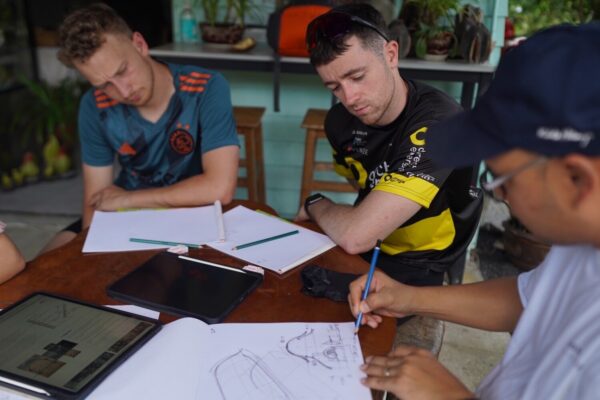
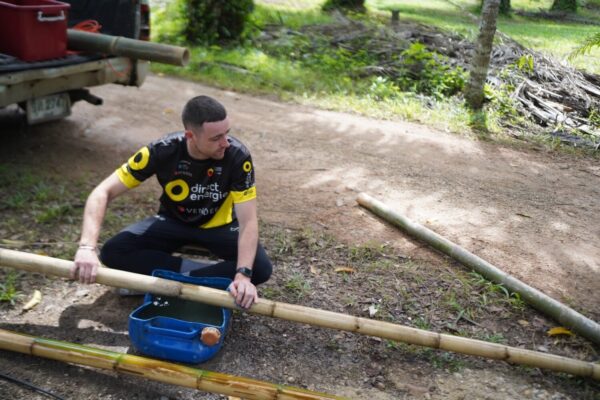
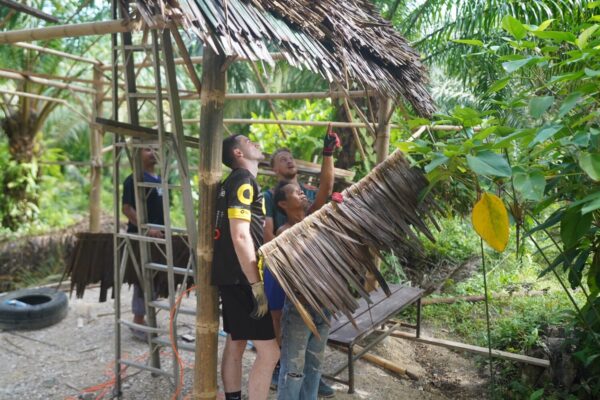
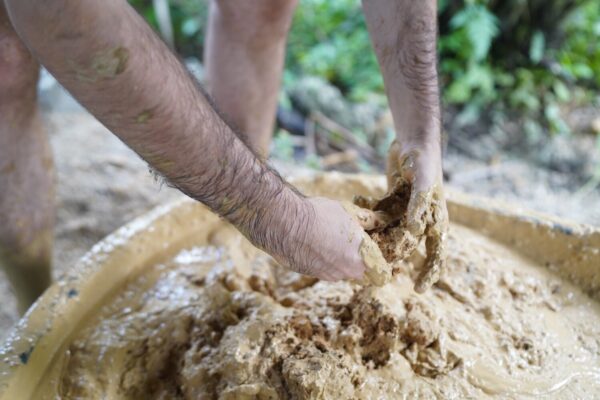



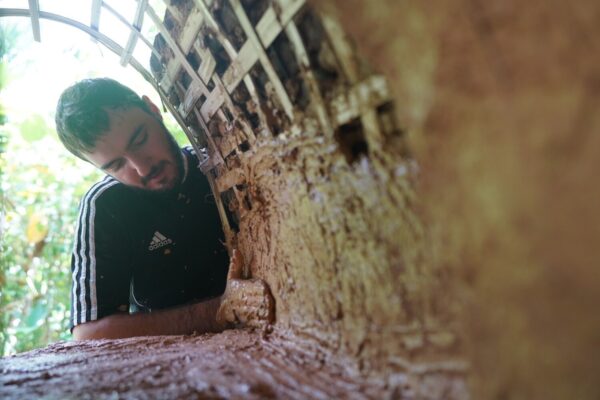
3. Learning Outcomes
By the end of the program, students will be able to:
Design and sketch an outdoor kitchen using eco-design principles.
Construct a bamboo-framed structure based on Thai traditional methods.
Install roofing using dried nipa palm leaves.
Weave bamboo flooring panels.
Create furniture and decorative items using palm waste.
Build a functioning clay wood-fired pizza oven.
Adapt architectural thinking to a tropical climate with minimal regulatory constraint.
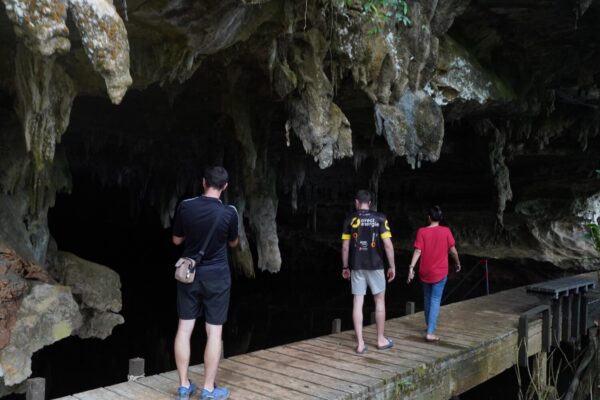

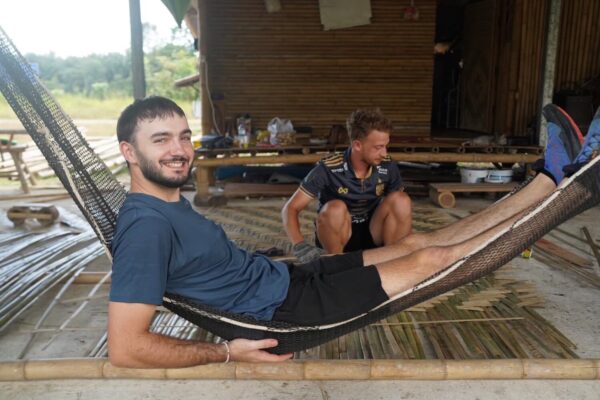
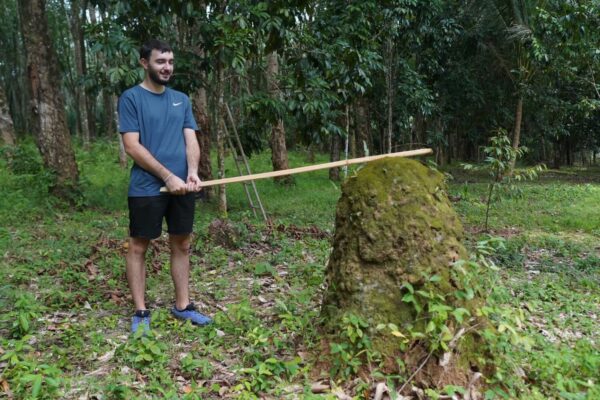
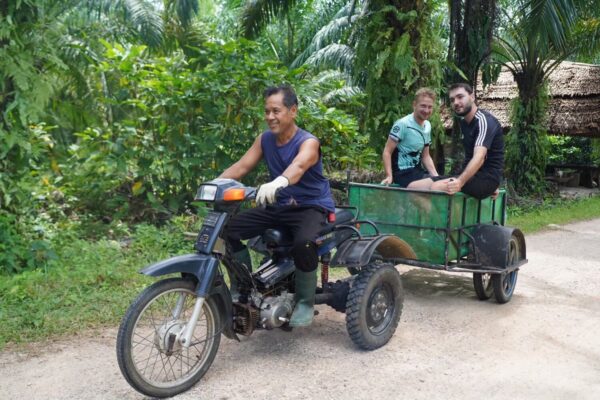

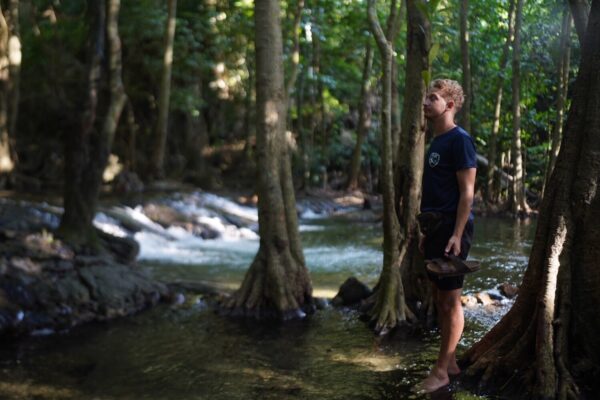
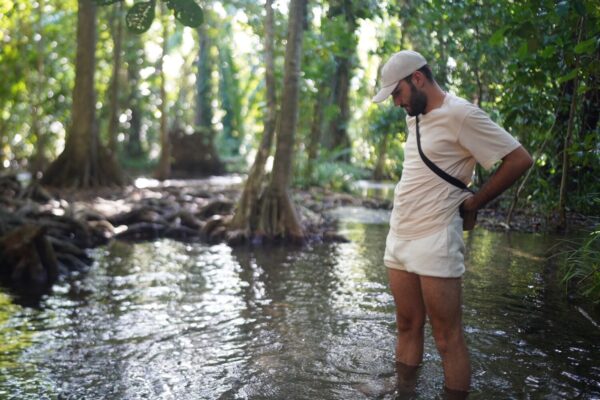




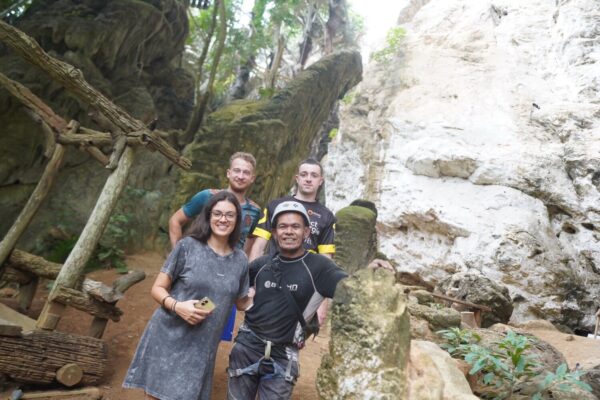
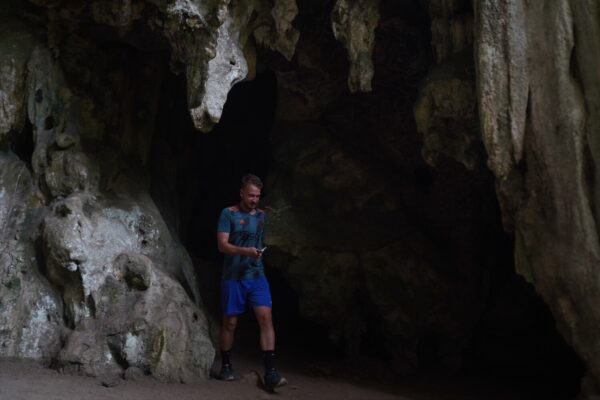

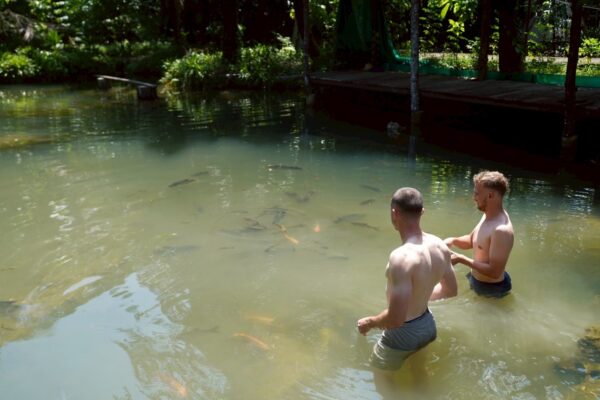


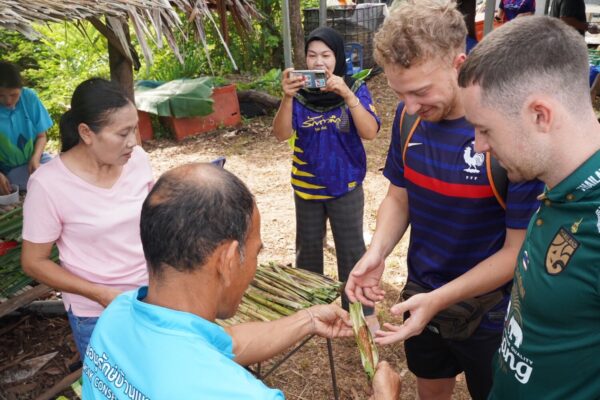
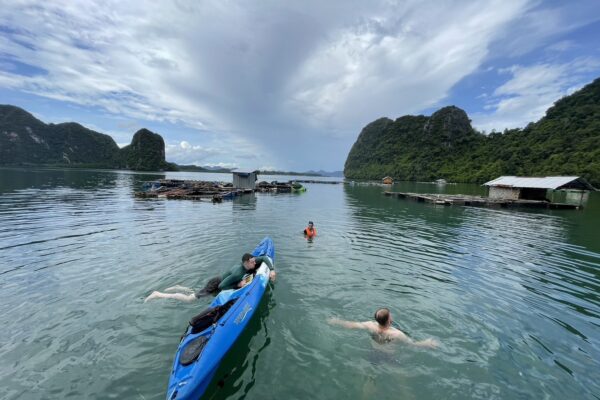
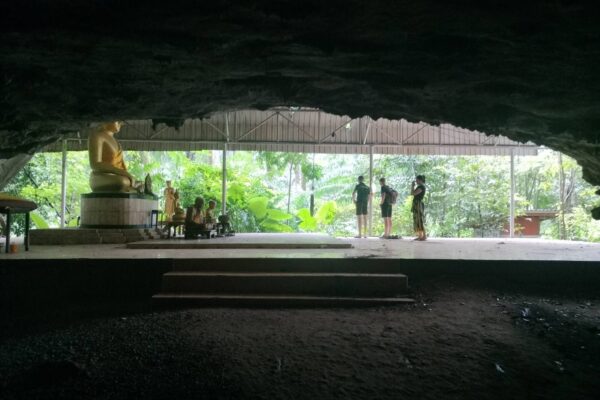

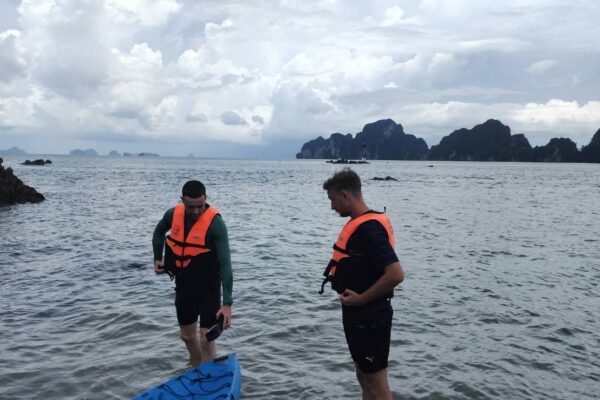
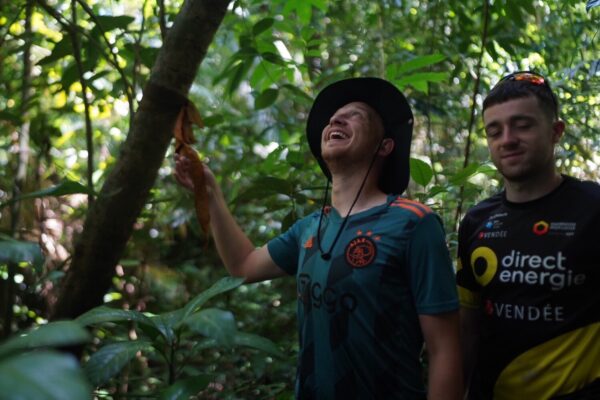
4. Cultural Exchange and Integration
Beyond technical training, the internship encourages deep cultural immersion. Students will live in close contact with local craftsmen and community members, participate in traditional activities, and learn how local wisdom is applied to environmental harmony.
The community of Ao Luek — a blend of Buddhist Thai, Muslim Thai, and Chinese Thai cultures — serves as a living example of peaceful coexistence and cultural resilience, enriching the students’ understanding of global diversity in sustainable living.
5. Program Schedule Overview
| Week | Topic | Description |
|---|---|---|
| 1 | Cultural Orientation | Thai language basics, safety, local customs |
| 2–3 | Design & Planning | Sketching kitchen layout, site prep, material study |
| 4–5 | Bamboo Structure | Cutting, treating, framing and assembling bamboo |
| 6 | Nipa Palm Roof | Traditional roofing techniques |
| 7–8 | Bamboo Weaving | Traditional flooring construction |
| 9 | Palm Waste Crafting | Creating eco-furniture and decor |
| 10–11 | Clay Pizza Oven | Building and curing a functioning oven |
| 12 | Completion & Celebration | Final checks, pizza night using finished kitchen |
6. Final Project and Community Event
The internship culminates in a communal pizza celebration, using the students’ completed outdoor kitchen and pizza oven. Local families, artisans, and project supporters will be invited, symbolizing the union of learning, cultural sharing, and sustainability.
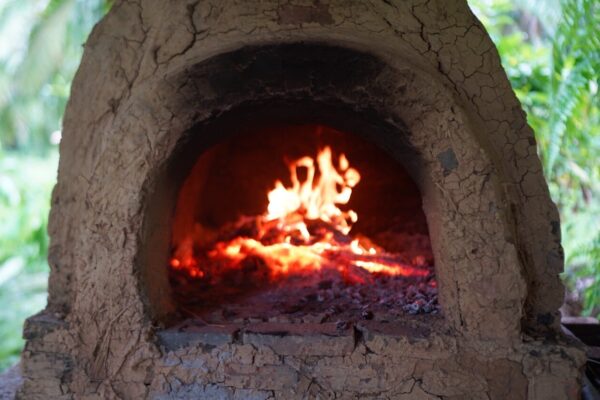

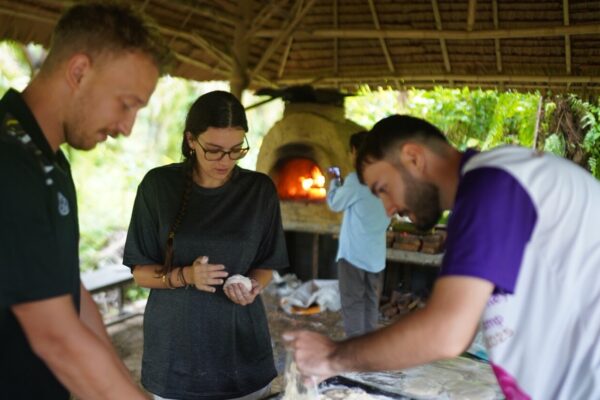
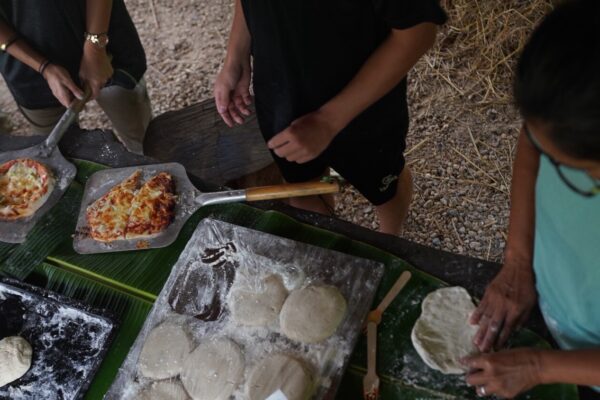


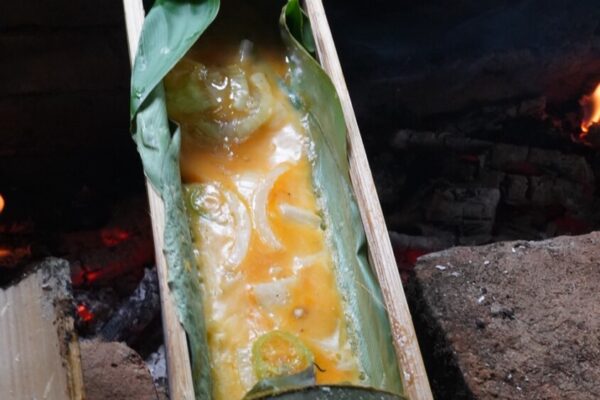
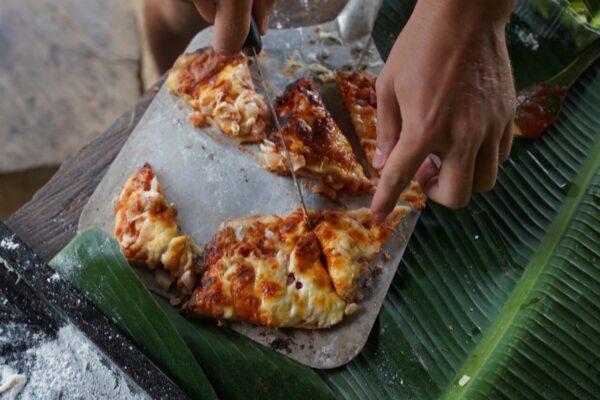
7. Conclusion
This internship is not only a skills-based program but also a cultural and ecological journey. The students will return with practical experience, a broader world perspective, and an enriched appreciation for how ancient traditions and modern sustainability can coexist.
We would like to sincerely thank Green Guardians Association and the University for your support, trust, and collaboration in making this internship possible. Your commitment to hands-on, international learning has opened a door for cultural exchange and skill development that will leave a lasting impact on both the students and our local community. We deeply value this partnership and look forward to continuing this meaningful collaboration in the future.
Report
First Day with French Students at Nature Living Institute
Today was a wonderful start to our project with two French students who have come to learn about eco-construction and Thai culture at Nature Living Institute. One student is specializing in landscaping, while the other is a civil engineer with expertise in concrete — a combination that brings valuable perspectives to our team.
We began by introducing them to Aek, our architect and designer, who is guiding the project. The team sat down together, exchanged ideas, drew sketches, and made a clear and realistic plan for building our outdoor kitchen and pizza oven. We aim to construct them entirely with sustainable materials, including bamboo, nipa palm, clay, bricks, and stones.
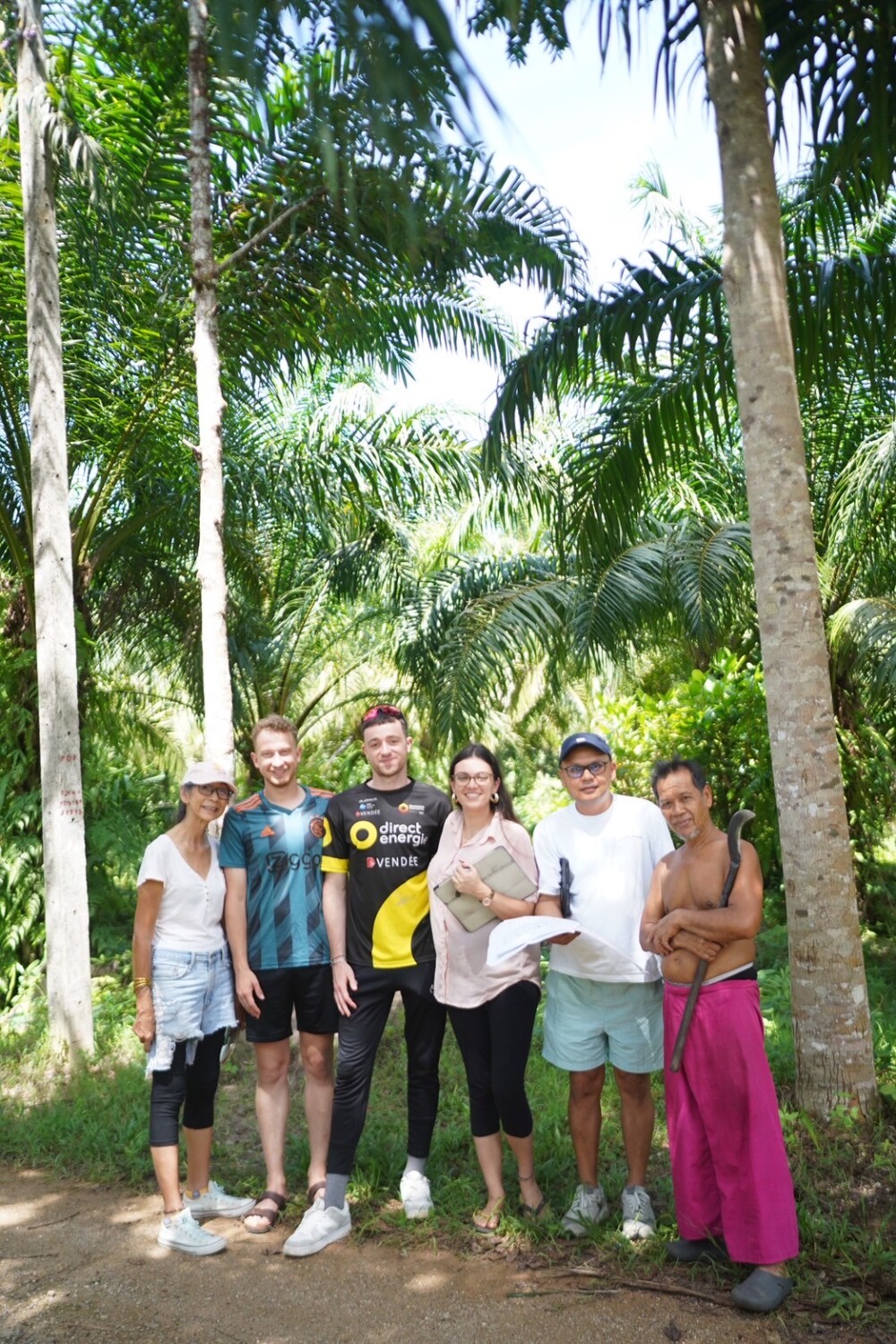
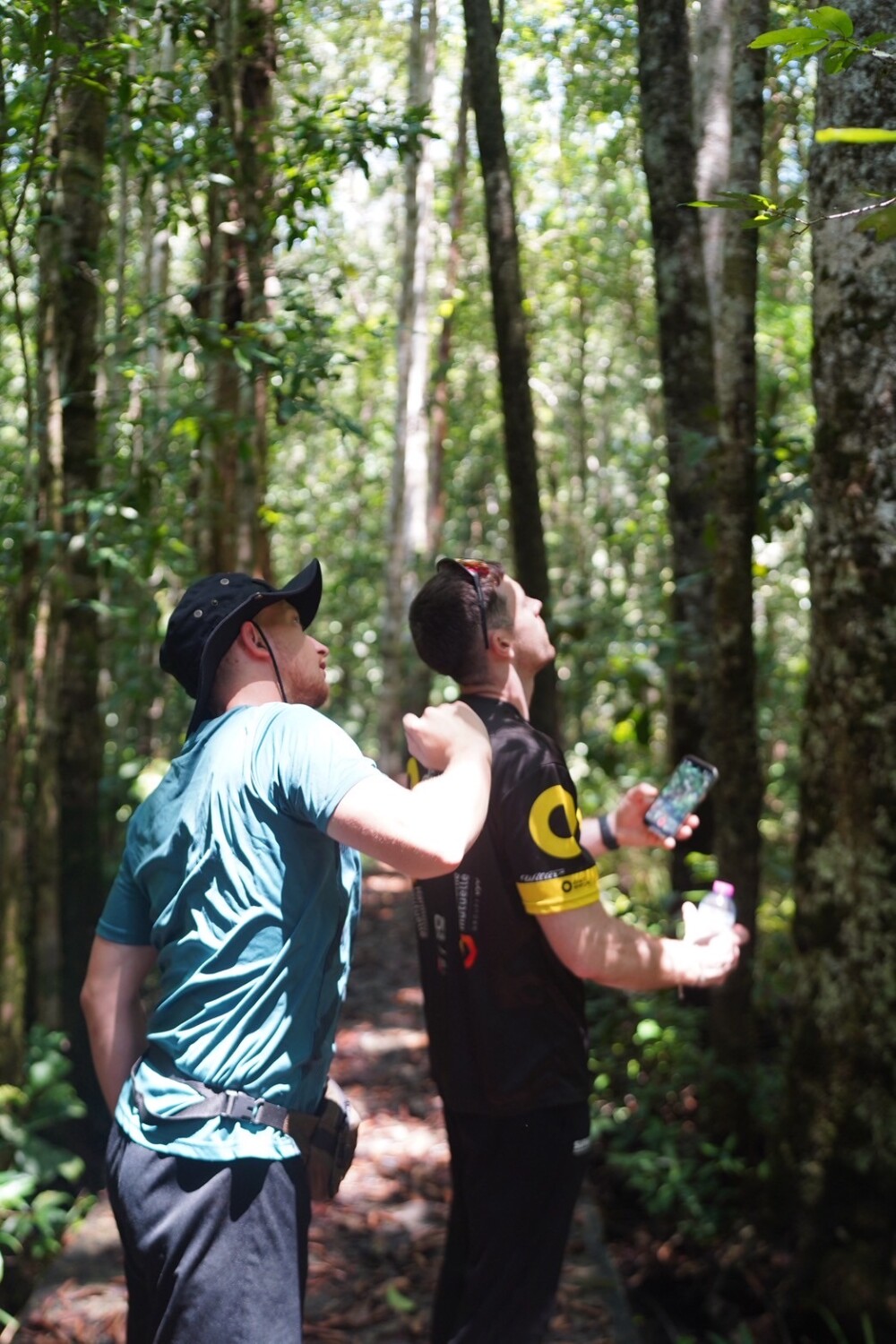
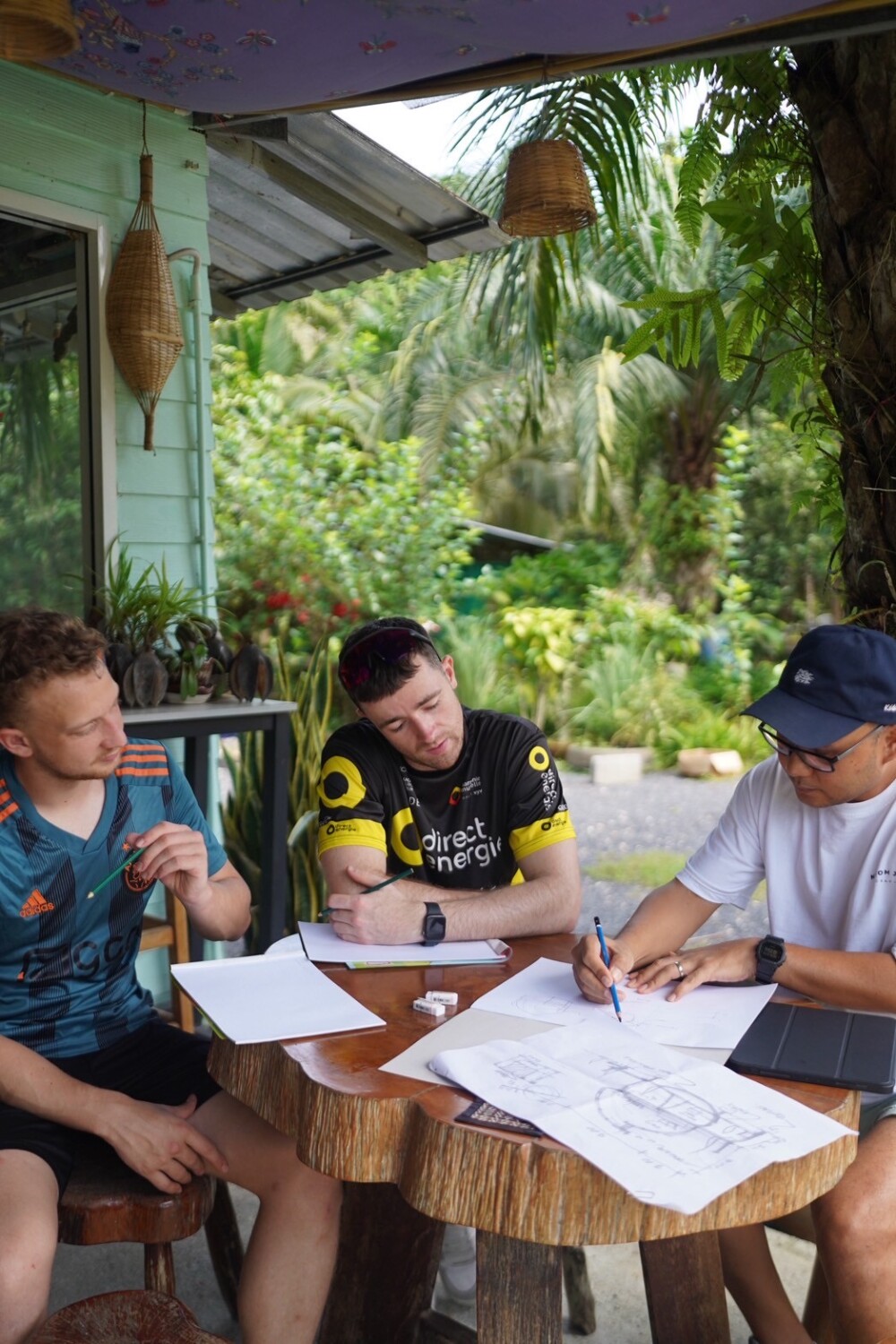
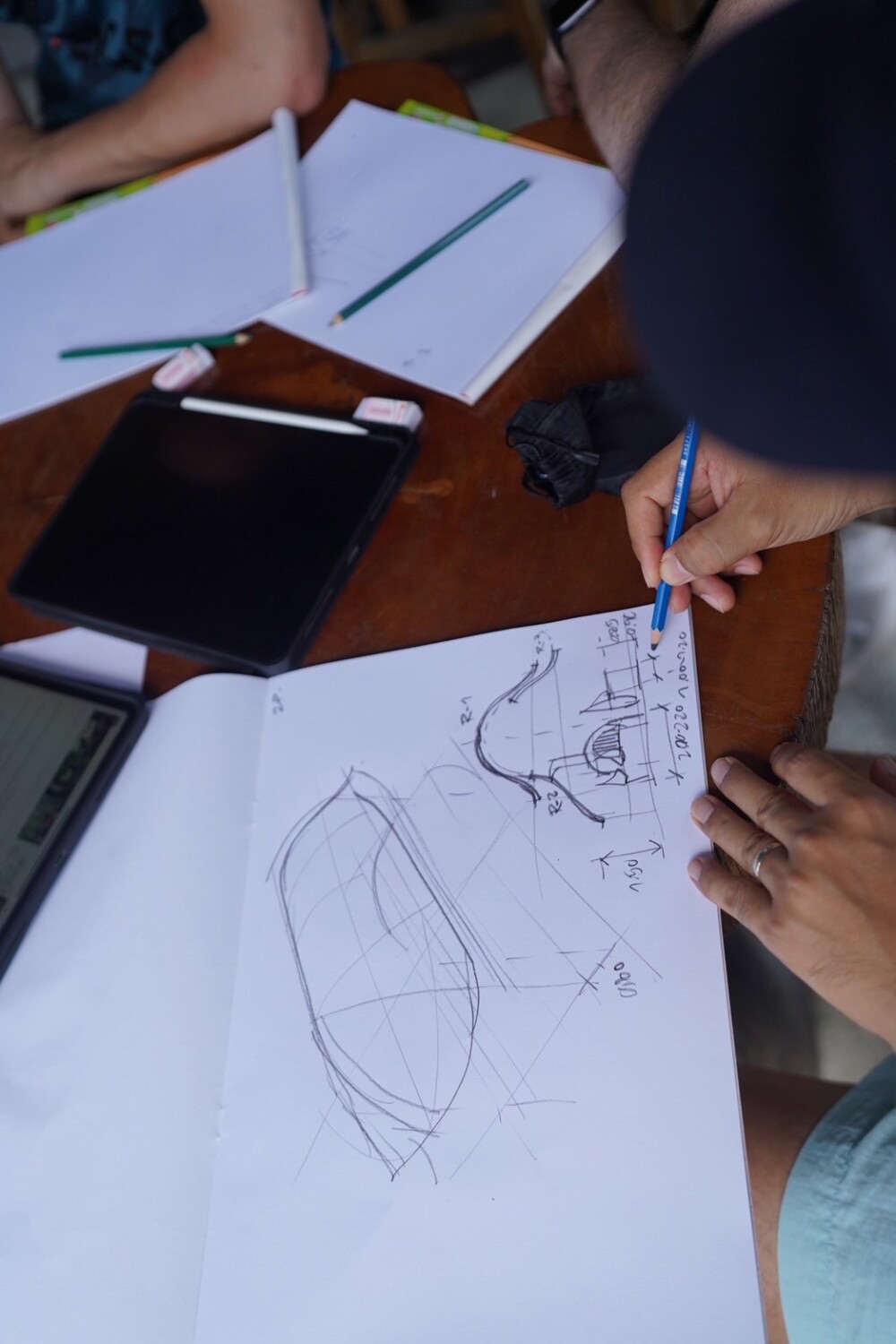
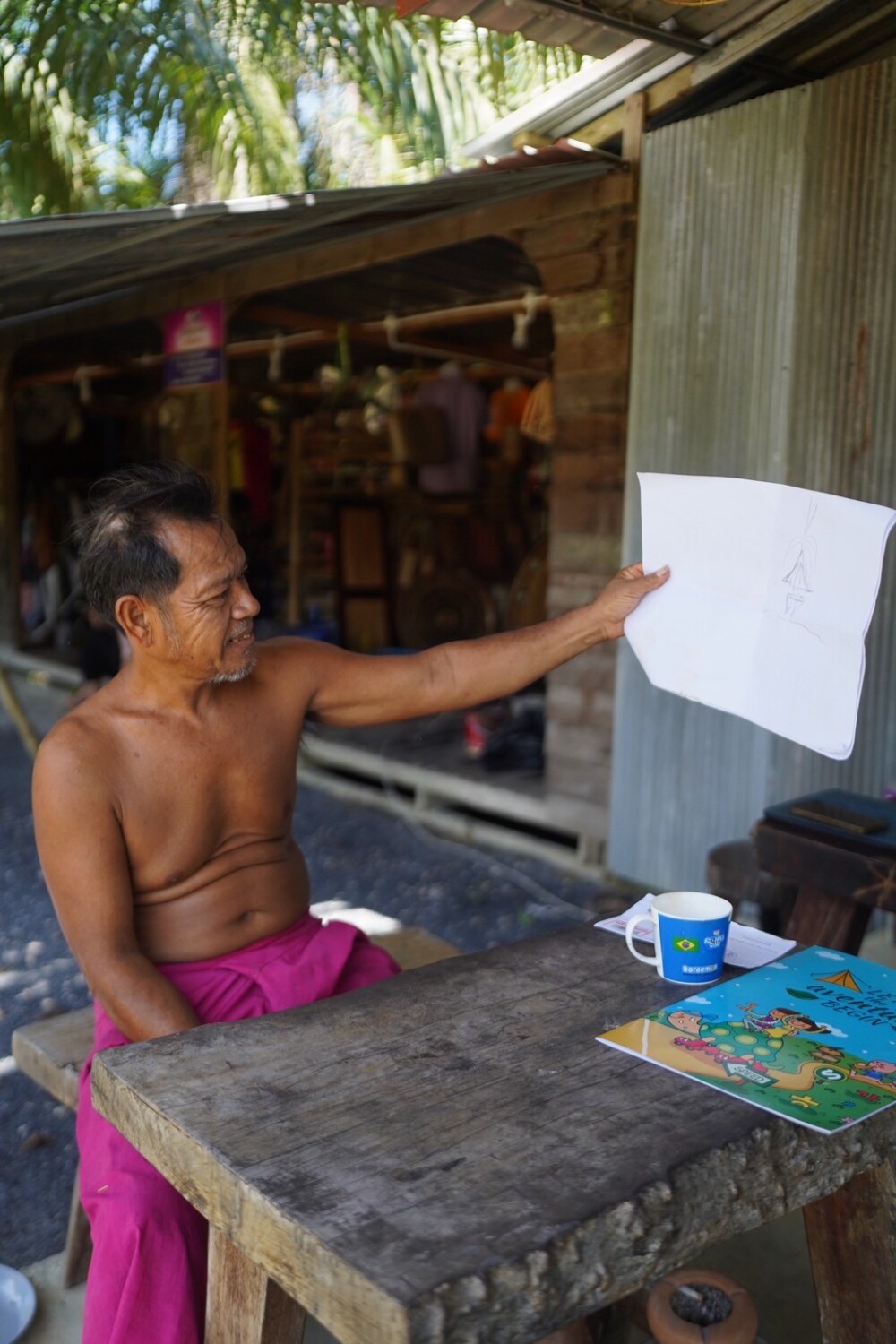
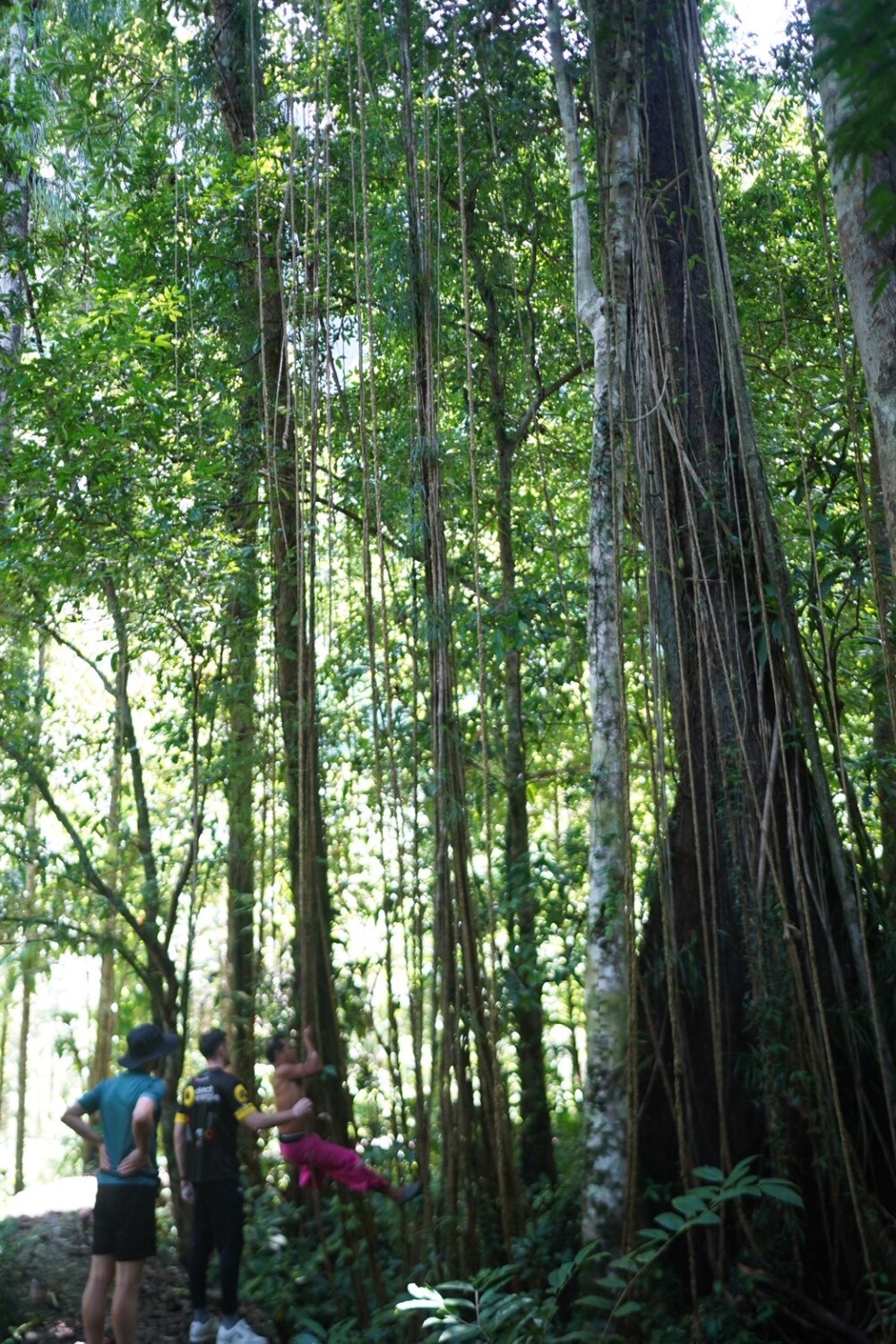
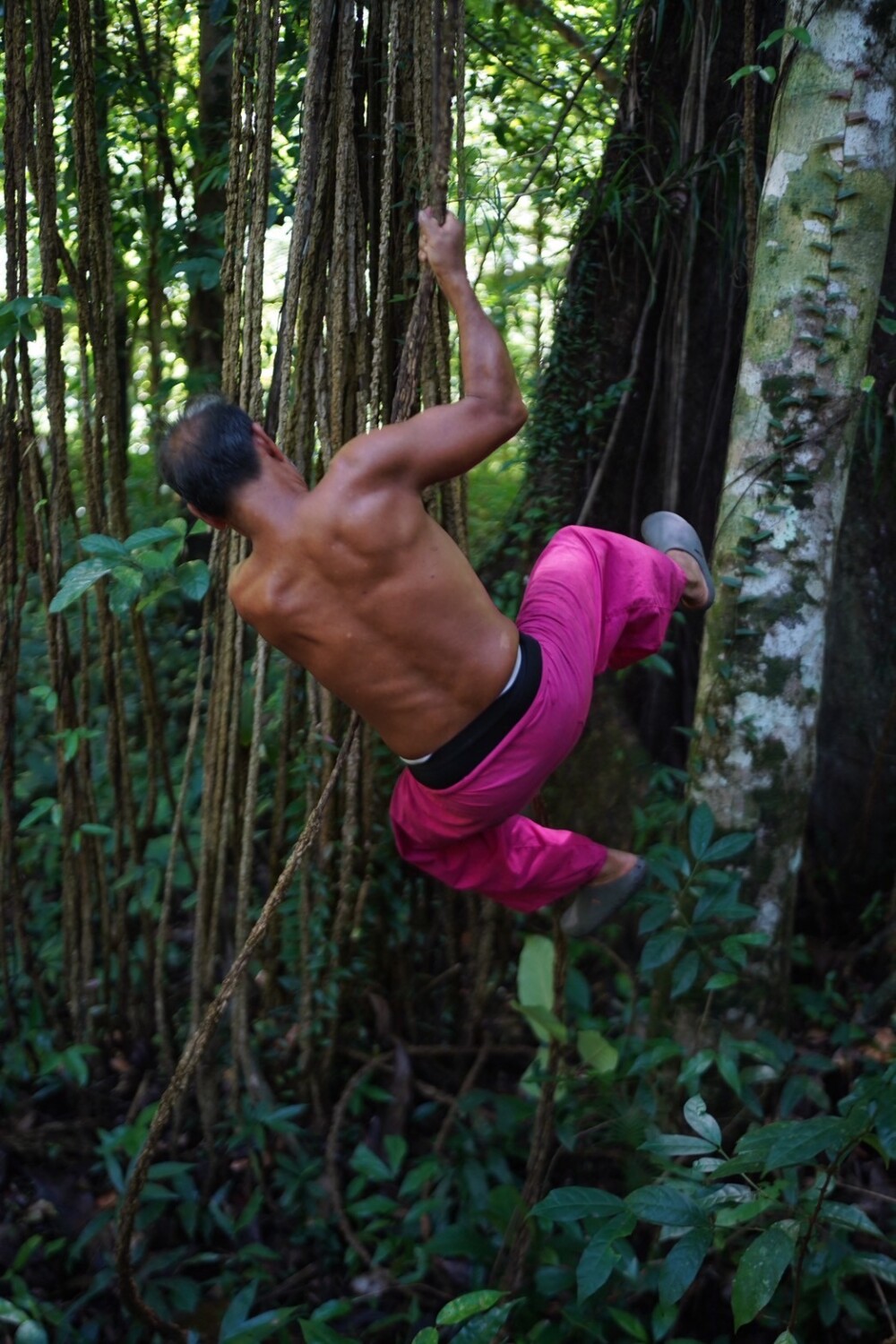
At lunchtime, KhunNai, the owner of our on-site café, prepared a traditional Thai meal a plate of Thai fried rice with chili kept aside, to ease their adaptation to Thai cuisine, which can be quite spicy for European palates.
After lunch, we took a walk along our jungle trail, which is 2.8 kilometers long and rich in both flora and fauna. During their walk, the students saw groups of monkeys and noticed many trees adorned with colorful fabric. Our team explained a unique Thai tradition: wrapping trees in cloth as a way of honoring their spirit and protecting them from being cut down — reflecting the deep reverence for nature in Thai culture.
Later in the afternoon, we began clearing the land where we plan to construct the outdoor kitchen. The space measures 6x4m — a total of 24 square meters. We removed grass and fallen palm branches to prepare it for soil delivery. Afterwards, 16 tons of soil were brought in to level the ground in preparation for the structural phases, starting with the installation of poles to protect the site from rain during this monsoon season.
Overall, it was a rewarding first day — filled with exchanges of knowledge, culture, and team spirit — as we move forward together toward creating something sustainable and beautiful.
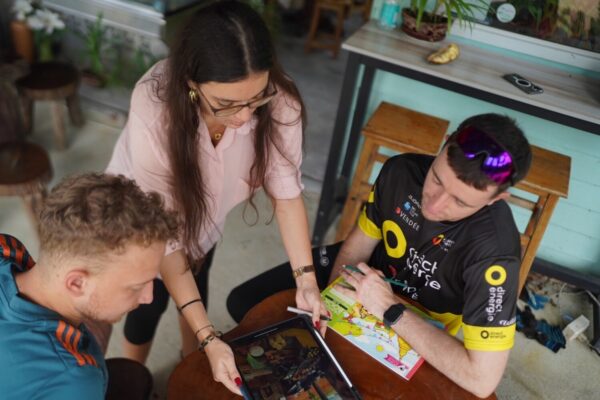
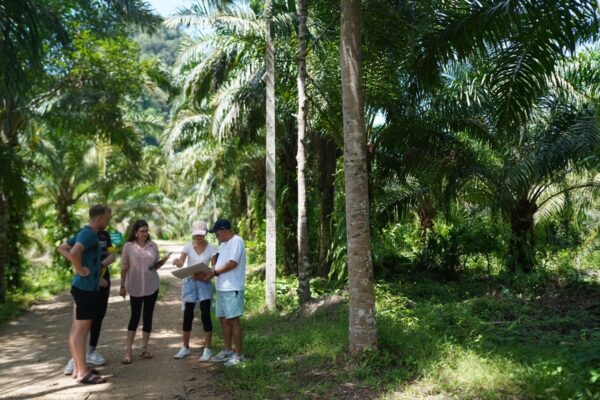
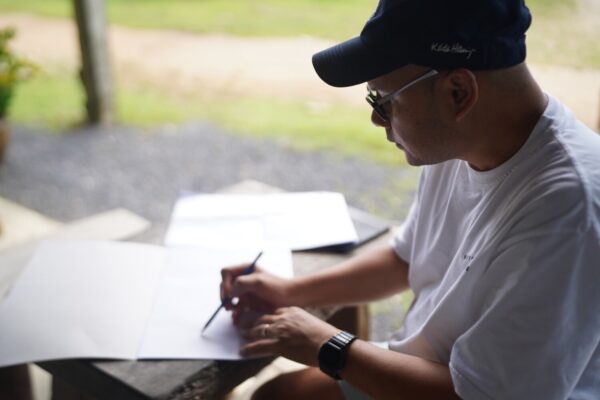





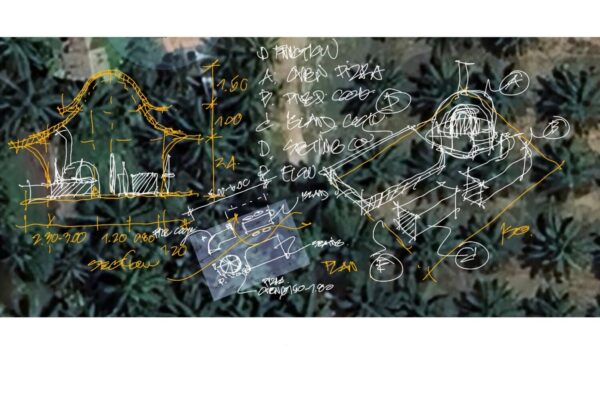


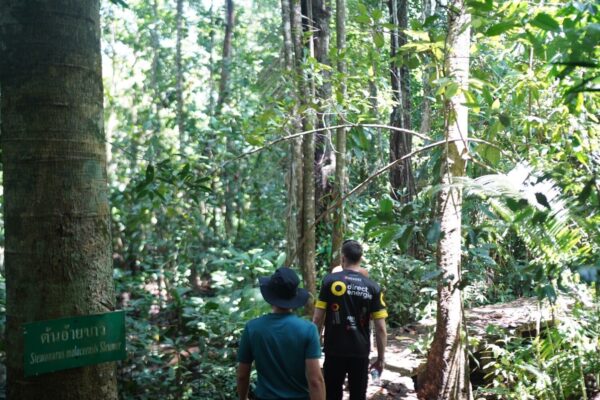
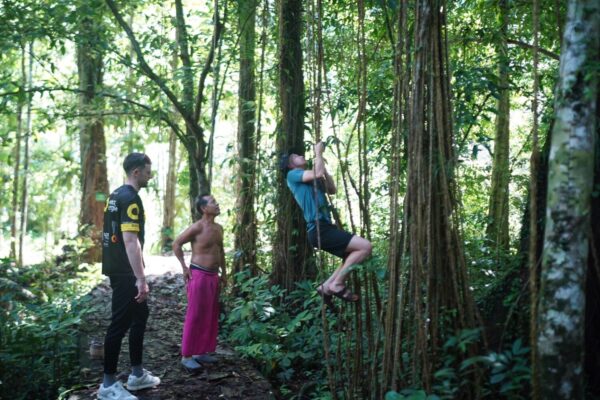
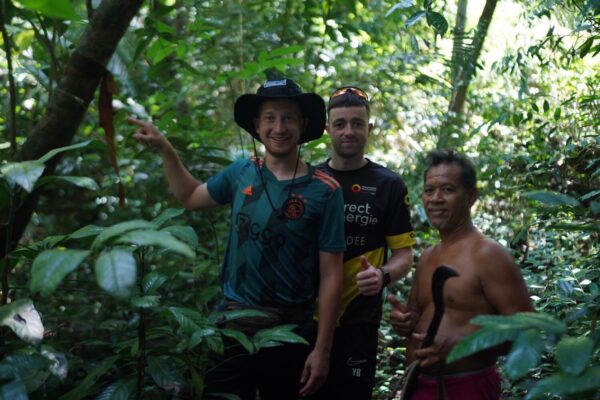
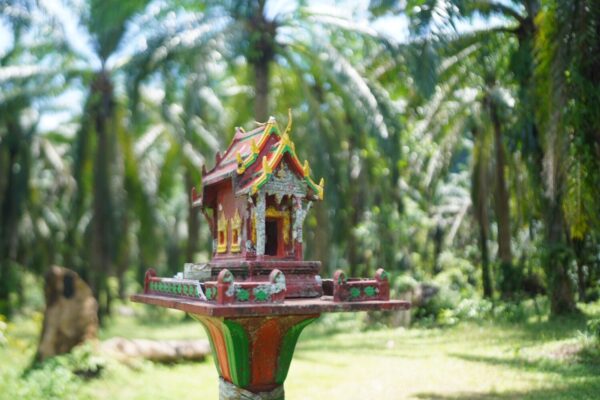
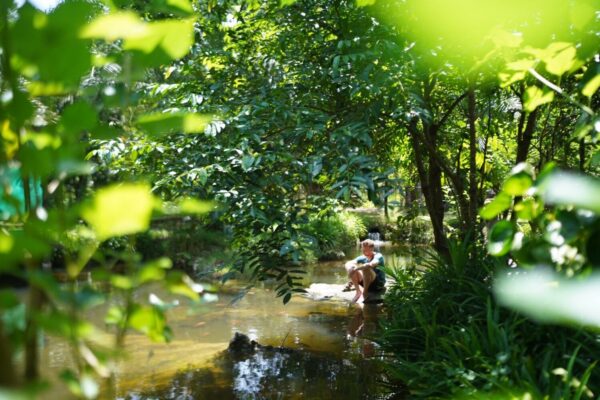
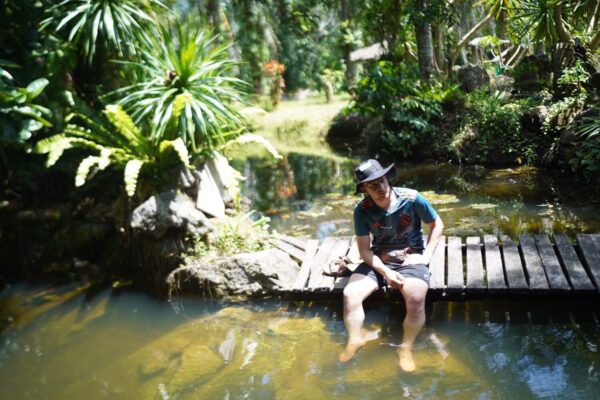
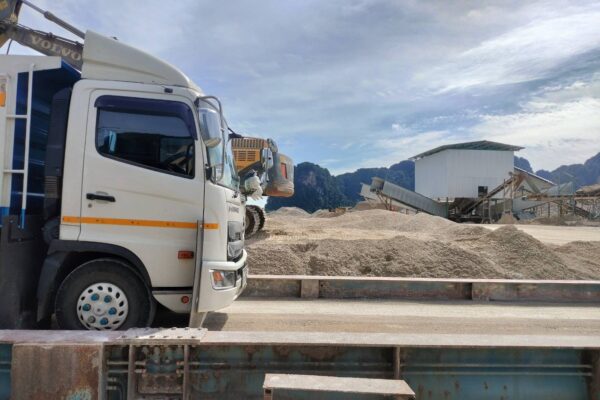
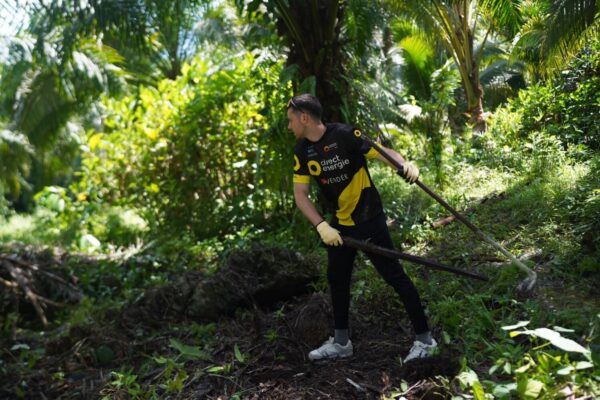
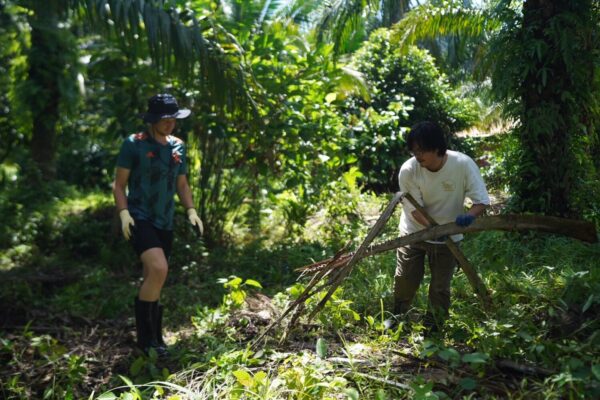
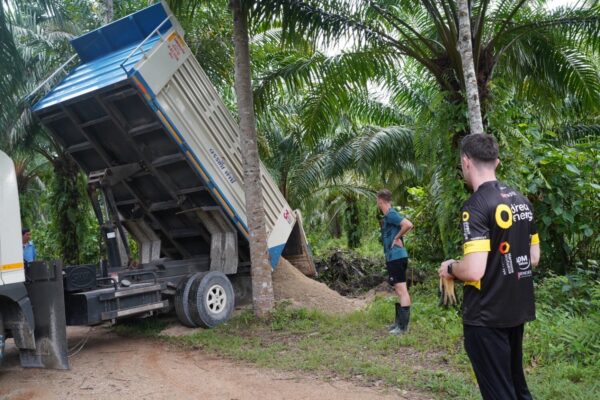
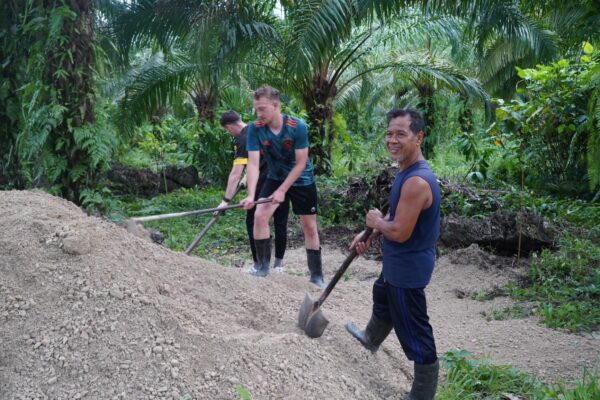
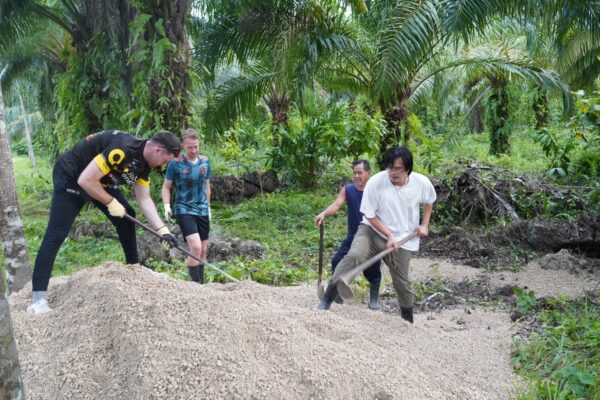

Eco-Construction Week Two: From Earthworks to Bamboo Framework – A Week of Hands-On Learning and Cultural Immersion
Following the excitement of the first week—where our students began working closely with the architect and explored the fundamentals of design planning—week two was all about getting their hands dirty, both literally and figuratively. It marked a significant transition from planning to building, with a perfect balance of technical learning, cultural discovery, and team bonding.
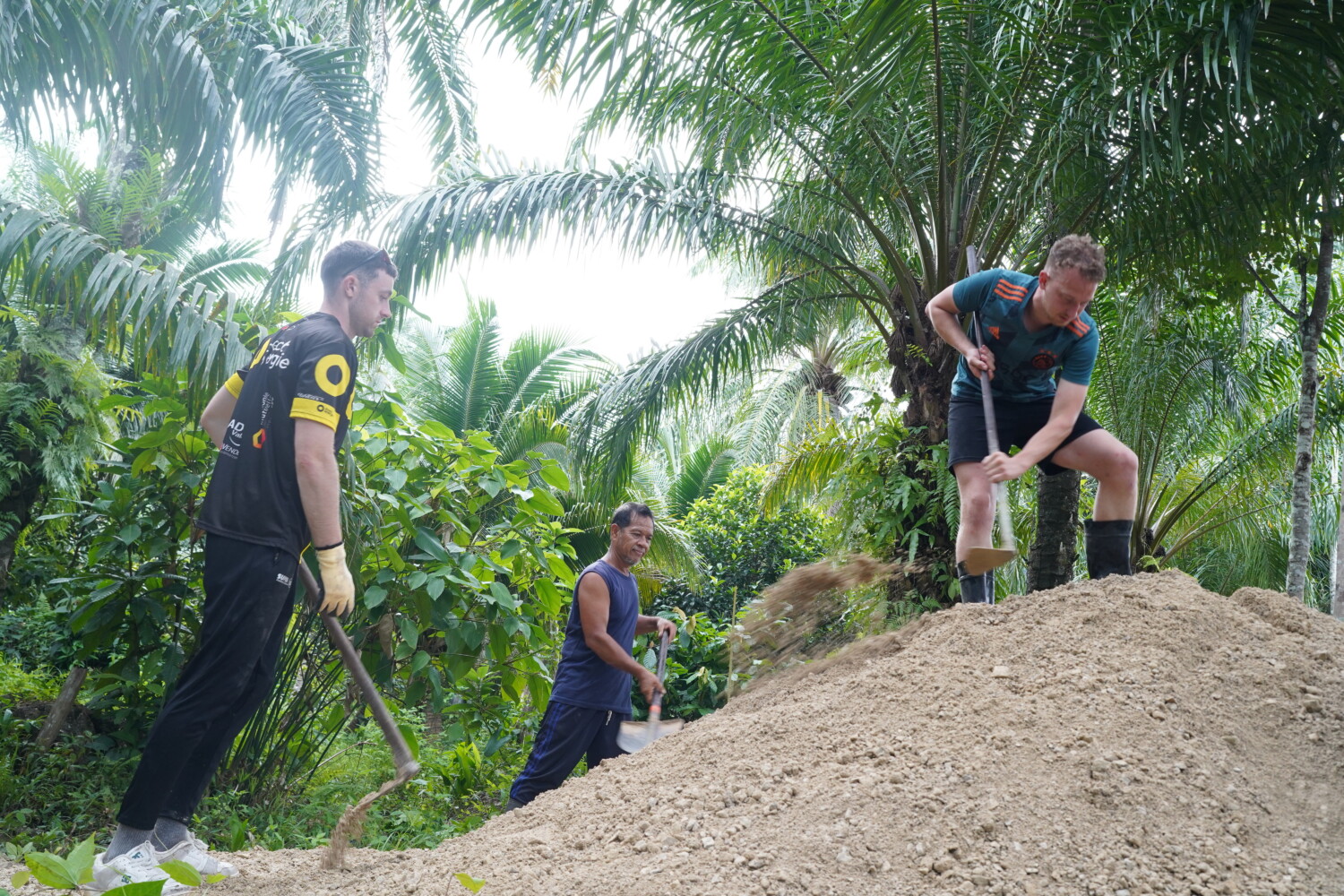
Day 2: Earthwork Begins – 16 Tons of Effort
On their second day, the students headed to a local material quarry to collect soil and crushed stones for floor alignment. Two trucks, each loaded with 8 tons—making a total of 16 tons—arrived at the site. The students began the demanding task of land alignment, digging and distributing the materials by hand. This was their first real taste of the physical demands of eco-construction, and they approached the challenge with admirable energy and determination.
Weekend Break and Return to the Site
After a well-earned two-day weekend break, the group returned to the site refreshed and ready for a busy start to the week.
Days 3 & 4: Cement, Termite Prevention & Student Initiative
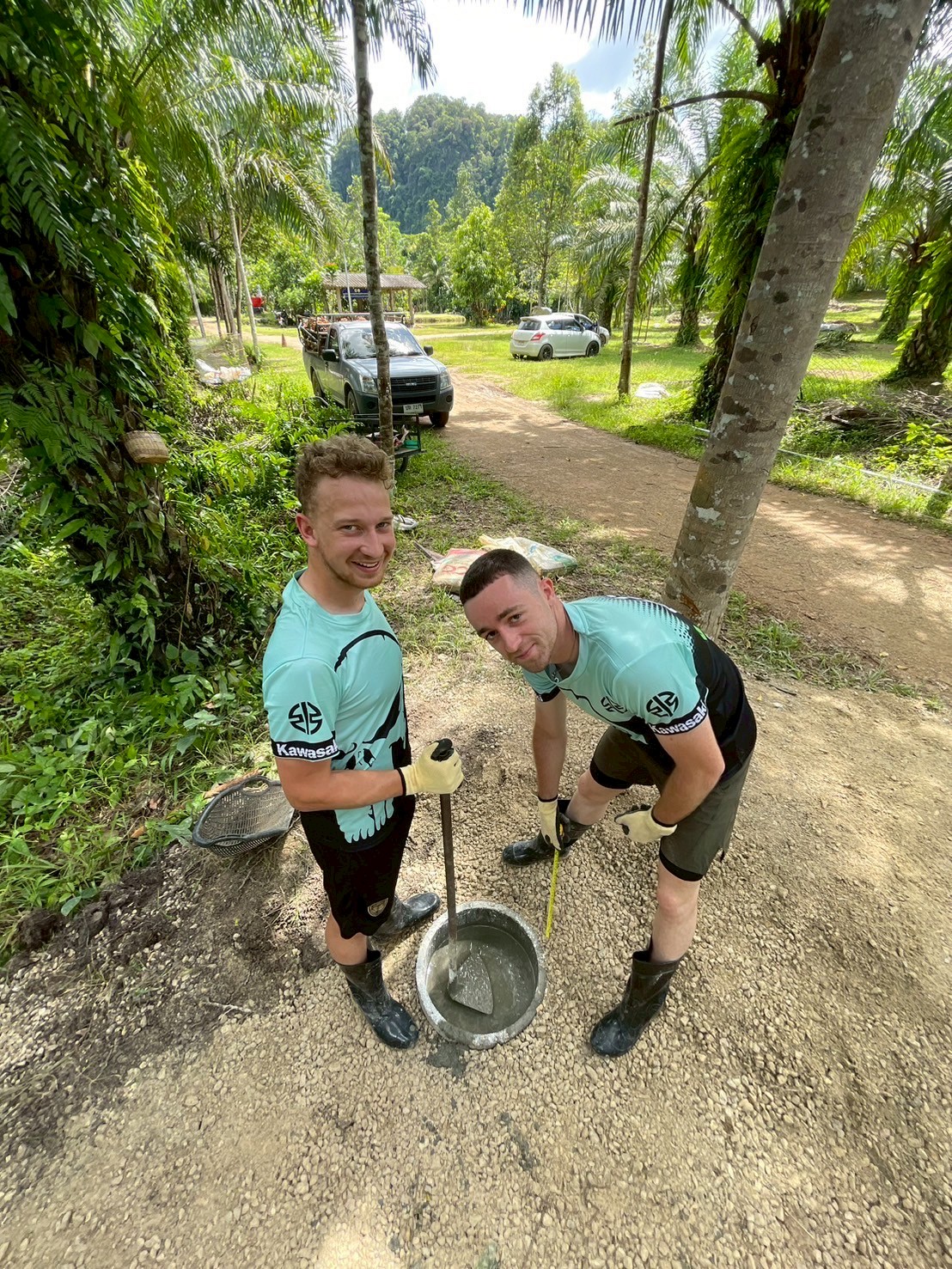
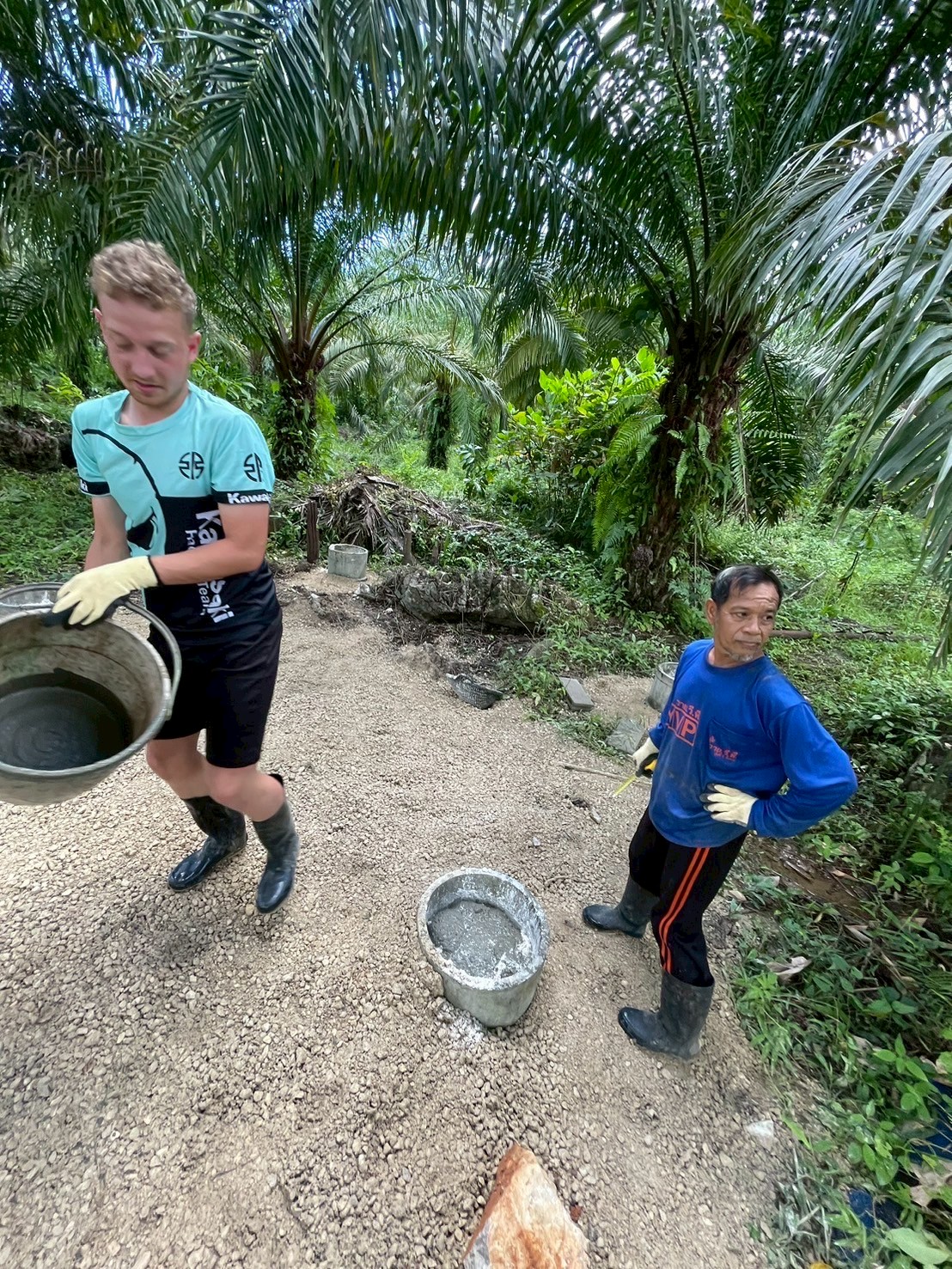
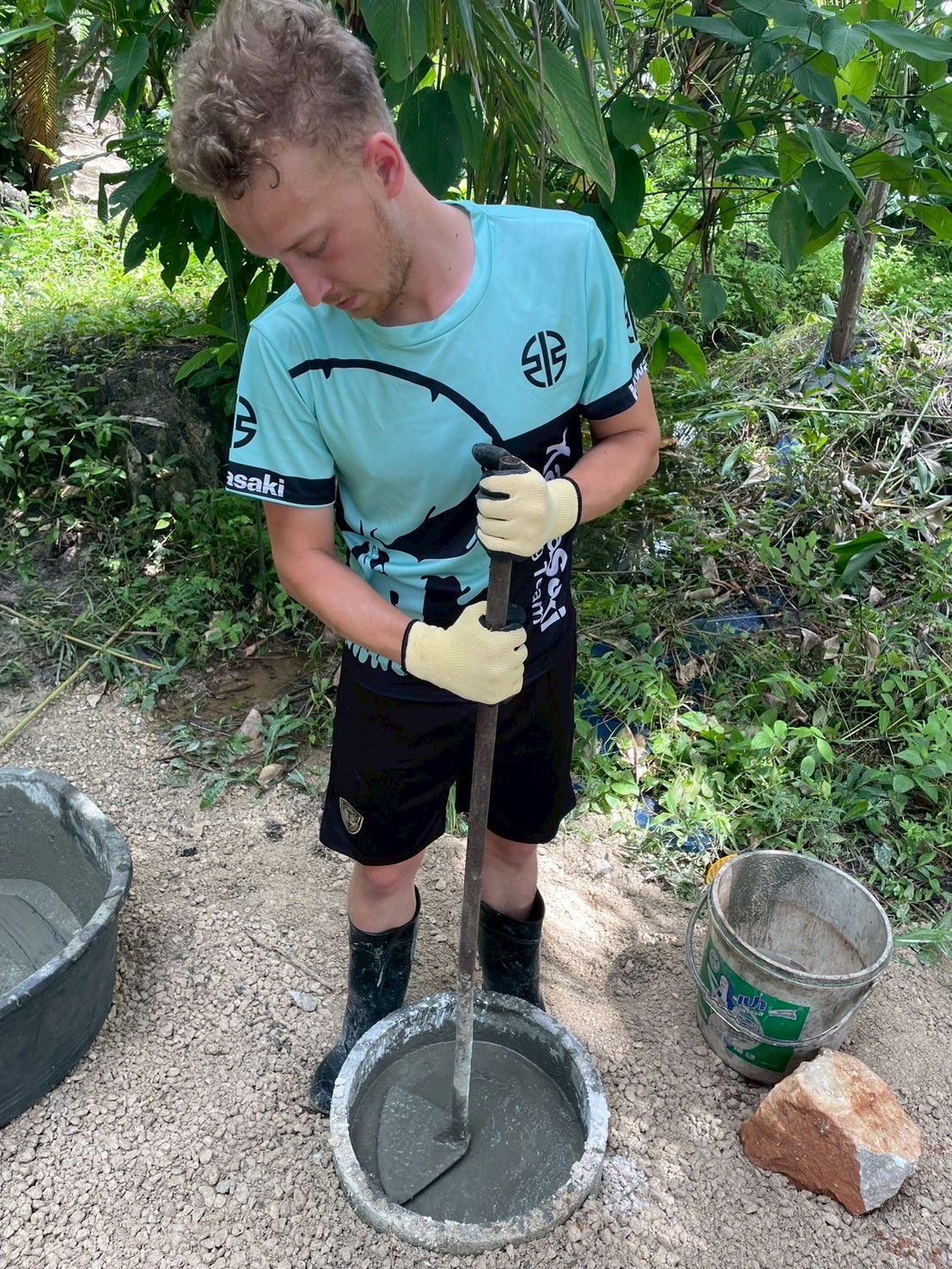

The beginning of the week focused on further elevating the land using an additional 19 tons of soil and crushed stones. The team also installed six large cement pipes, which were filled halfway with cement mixed with limestone. This important step was taken to anchor the future bamboo poles securely while also naturally deterring termites from attacking the structure.
One of the week’s standout moments came when a student took the initiative to approach a local tractor operator on his way to the site. Despite the language barrier, he successfully communicated the group’s need for assistance in spreading the soil. Thanks to his resourcefulness, a task that would have taken two full days was completed in just five minutes. This moment of spontaneous leadership boosted team morale and saved a significant amount of time.
Day 5: Cultural Immersion in Laemsak
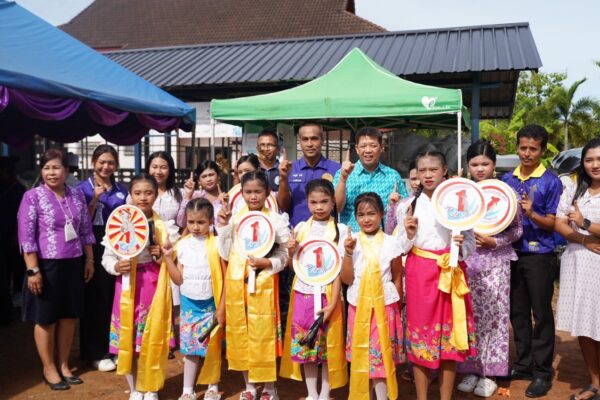
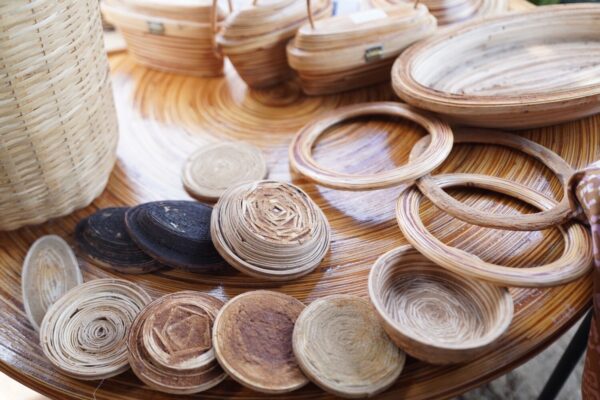
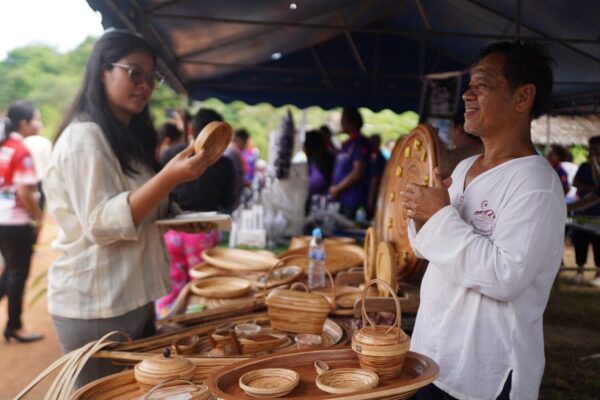
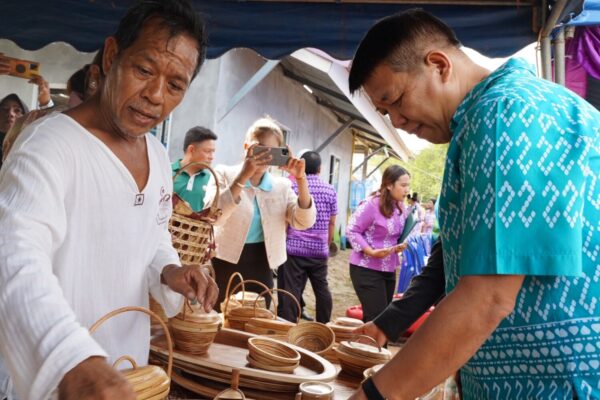
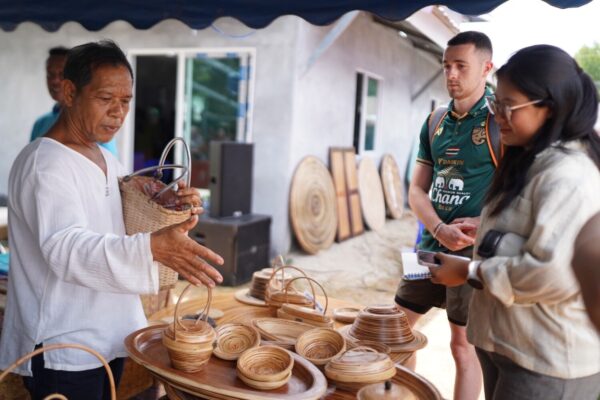






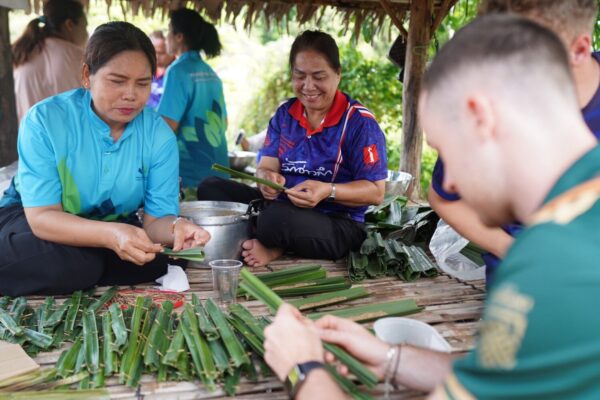
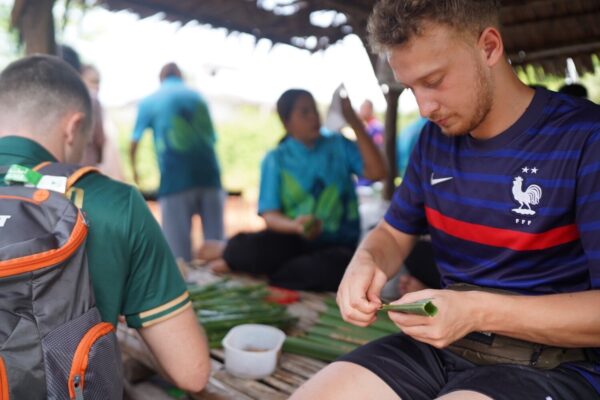
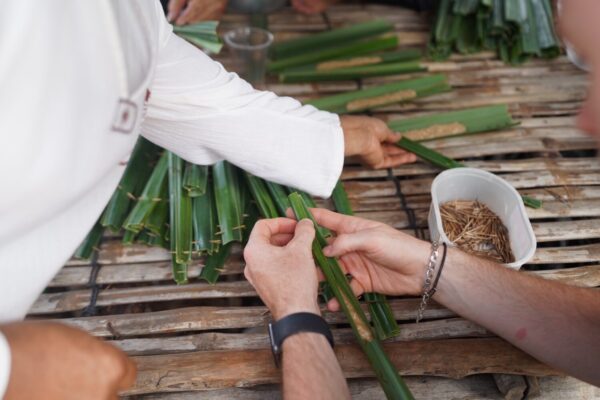
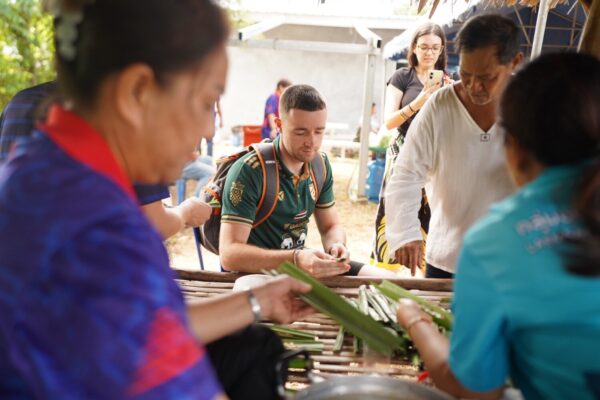

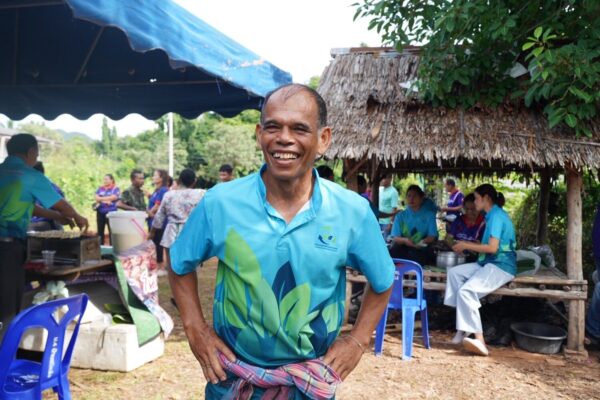
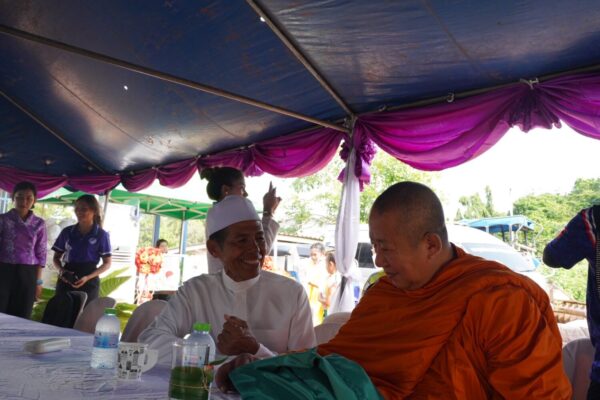
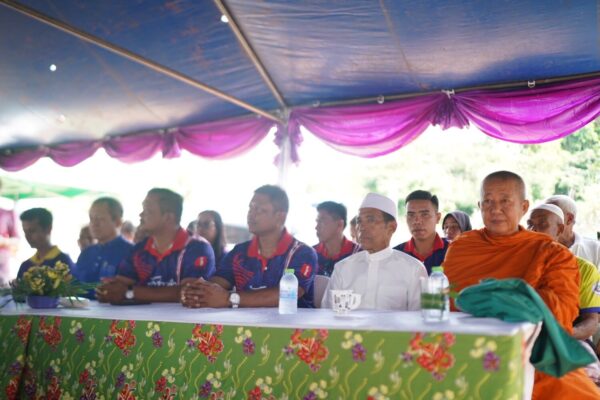
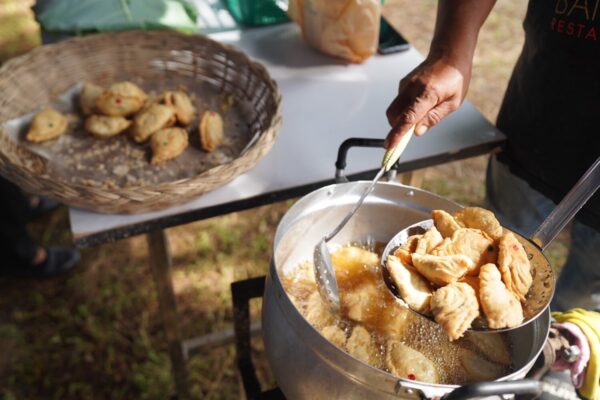
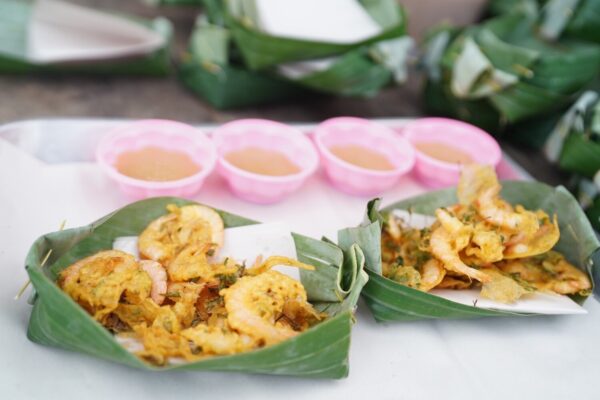
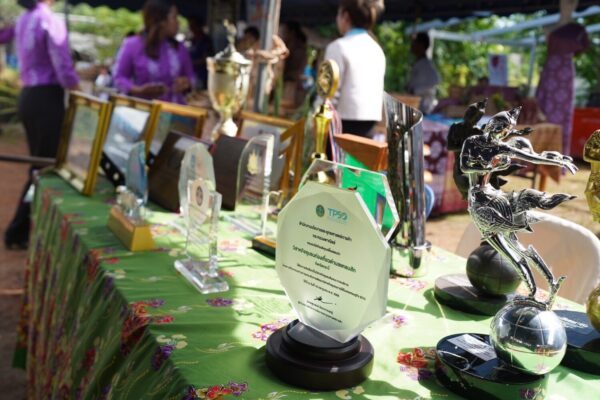



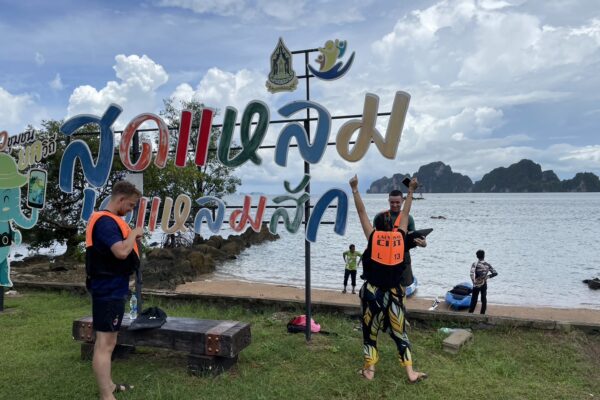
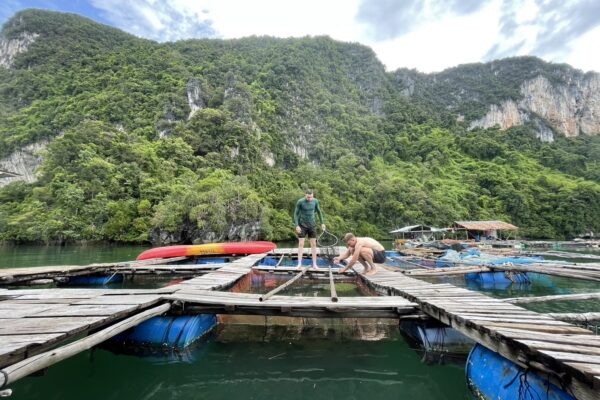
Mid-week, the students took a break from construction to explore the cultural and environmental richness of the region. They accompanied Chaiyut to the Community-Based Contest in Laemsak, where he was showcasing his innovative palm waste products. The event was alive with creativity, featuring handmade goods, local desserts, and environmentally-conscious crafts.
One highlight was a hands-on lesson in making KanomJark ,—a traditional Thai dessert made from coconut and starch, wrapped and cooked in a Nipa Palm leaf. The biodegradable nature of this leaf resonated deeply with the eco-conscious ethos of the course, and students will soon be using these same leaves to construct the roof of the outdoor kitchen.
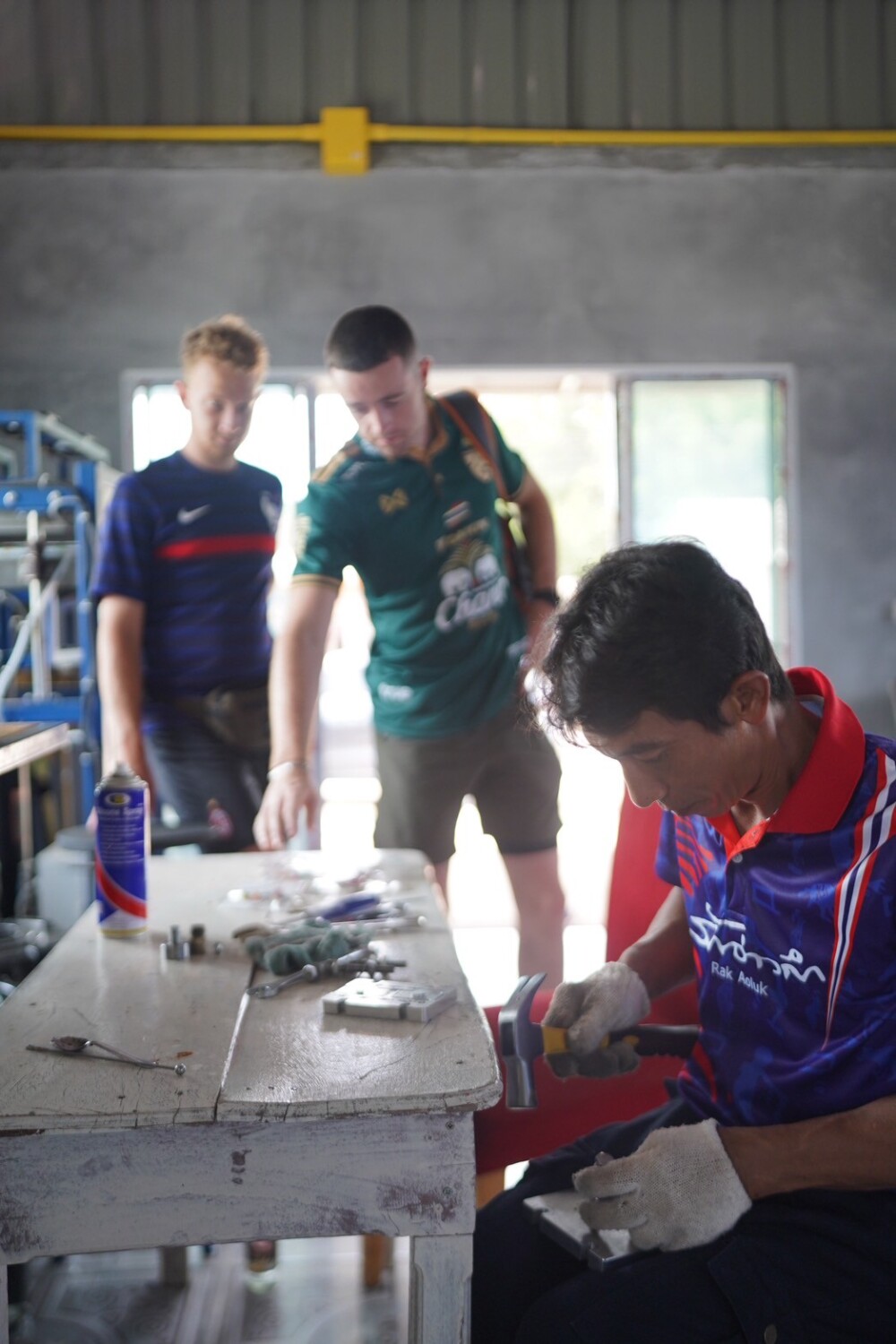
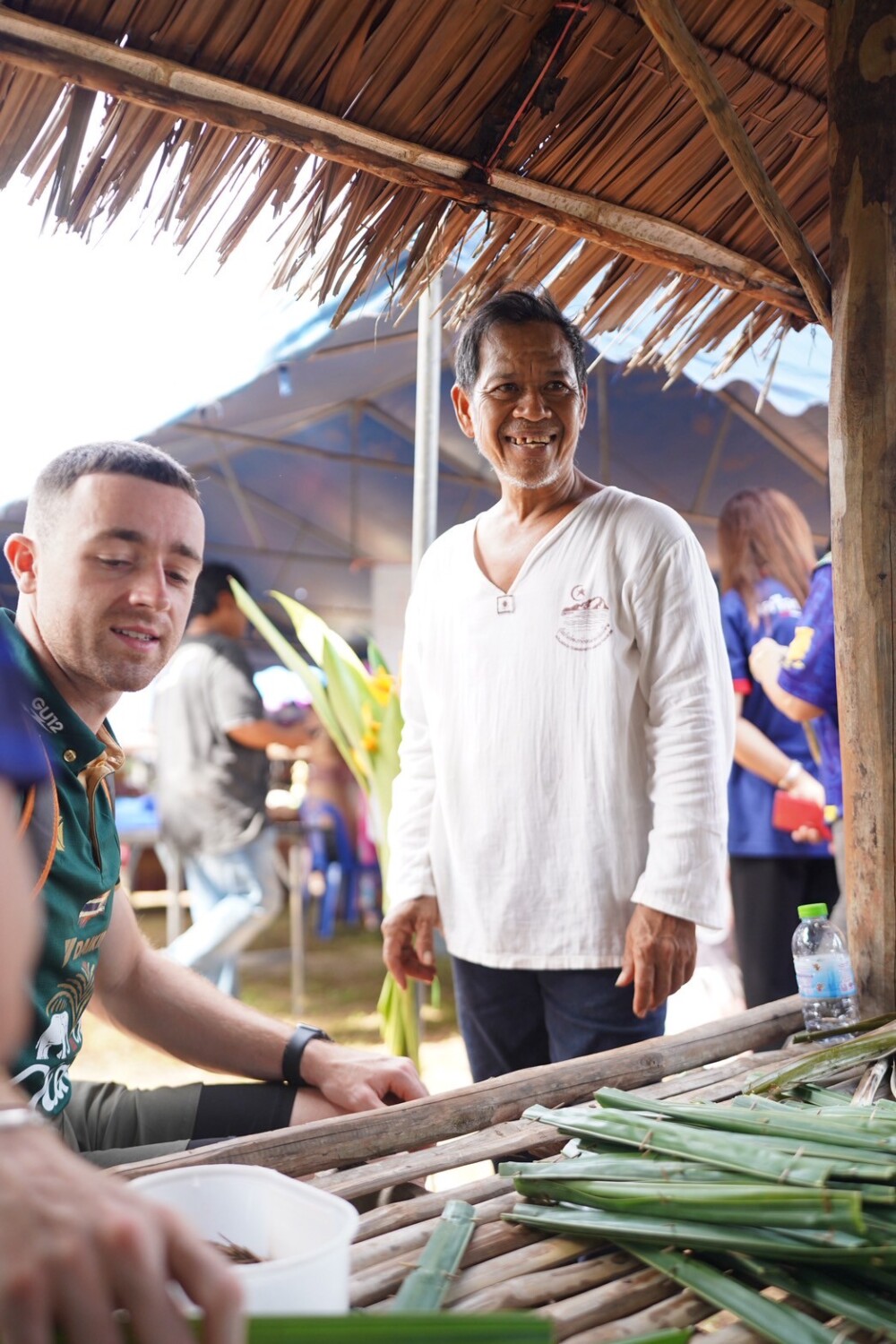


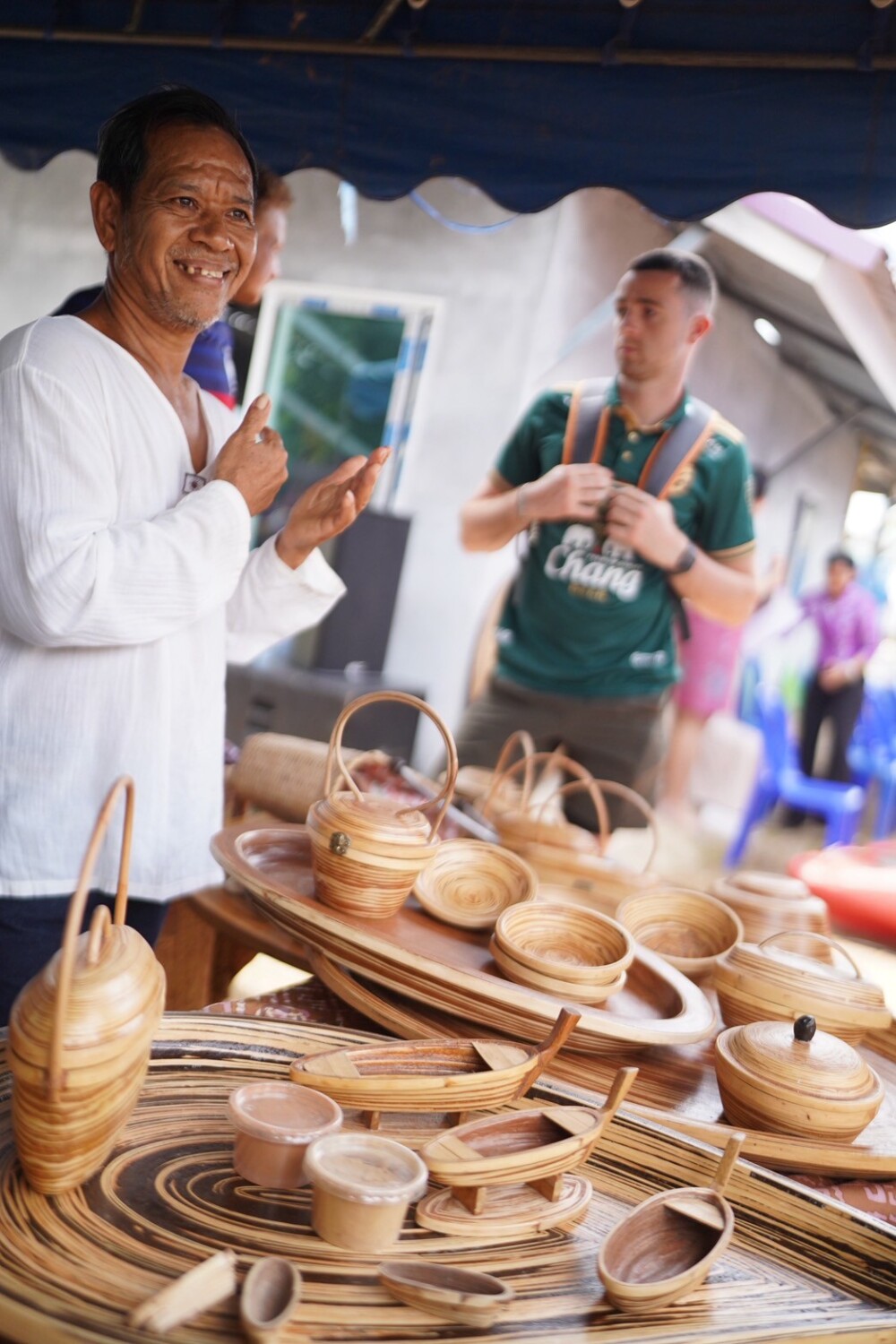
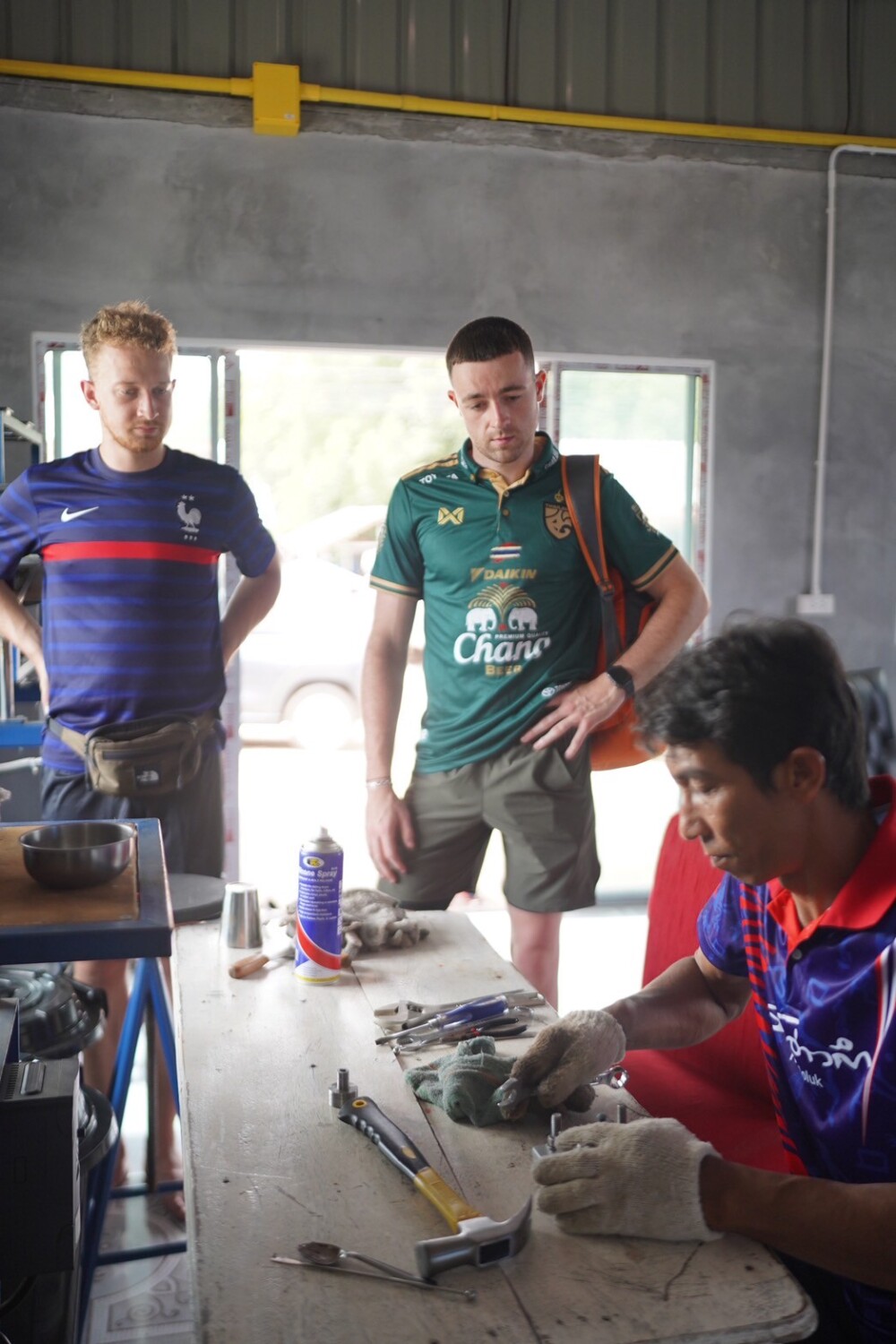
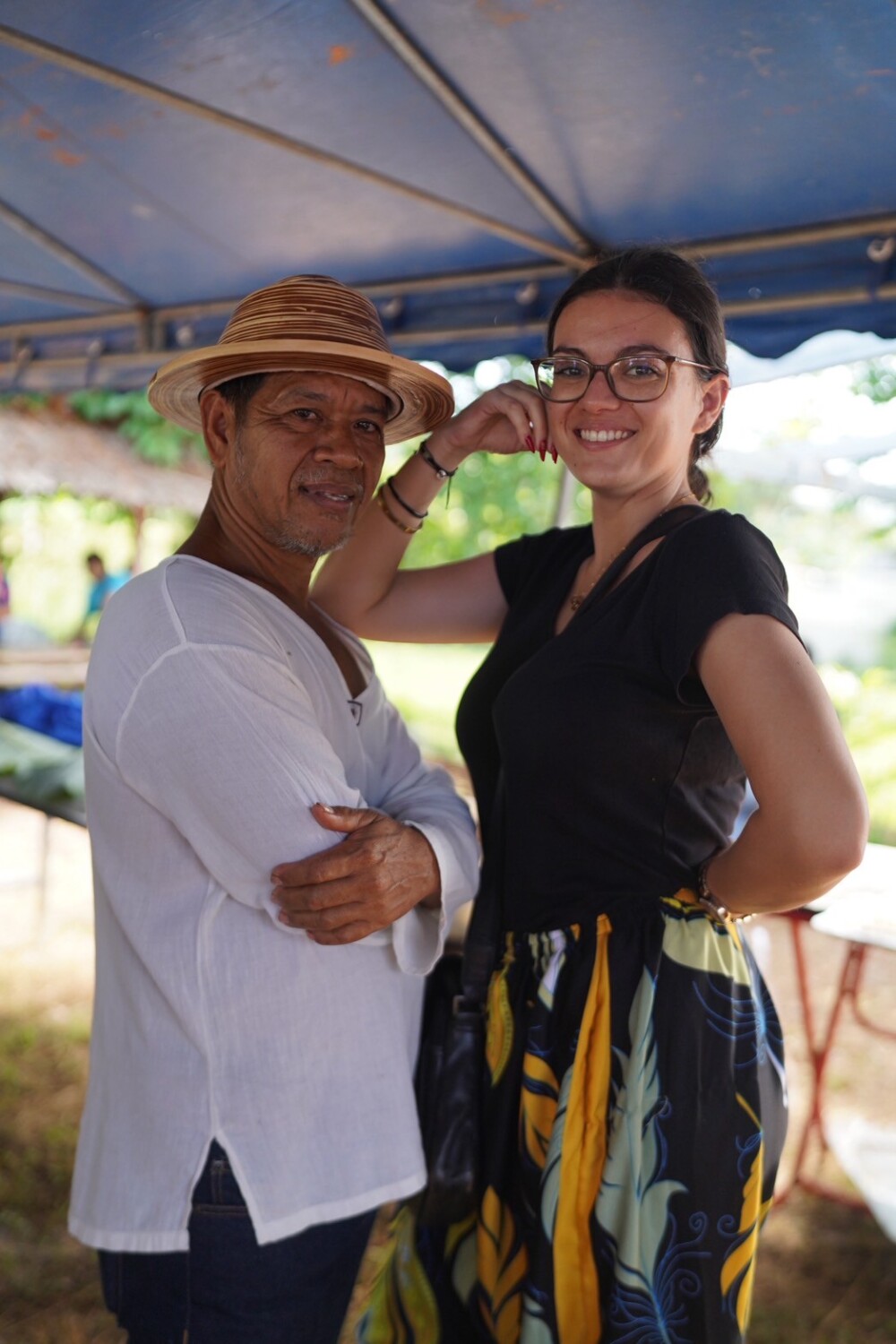
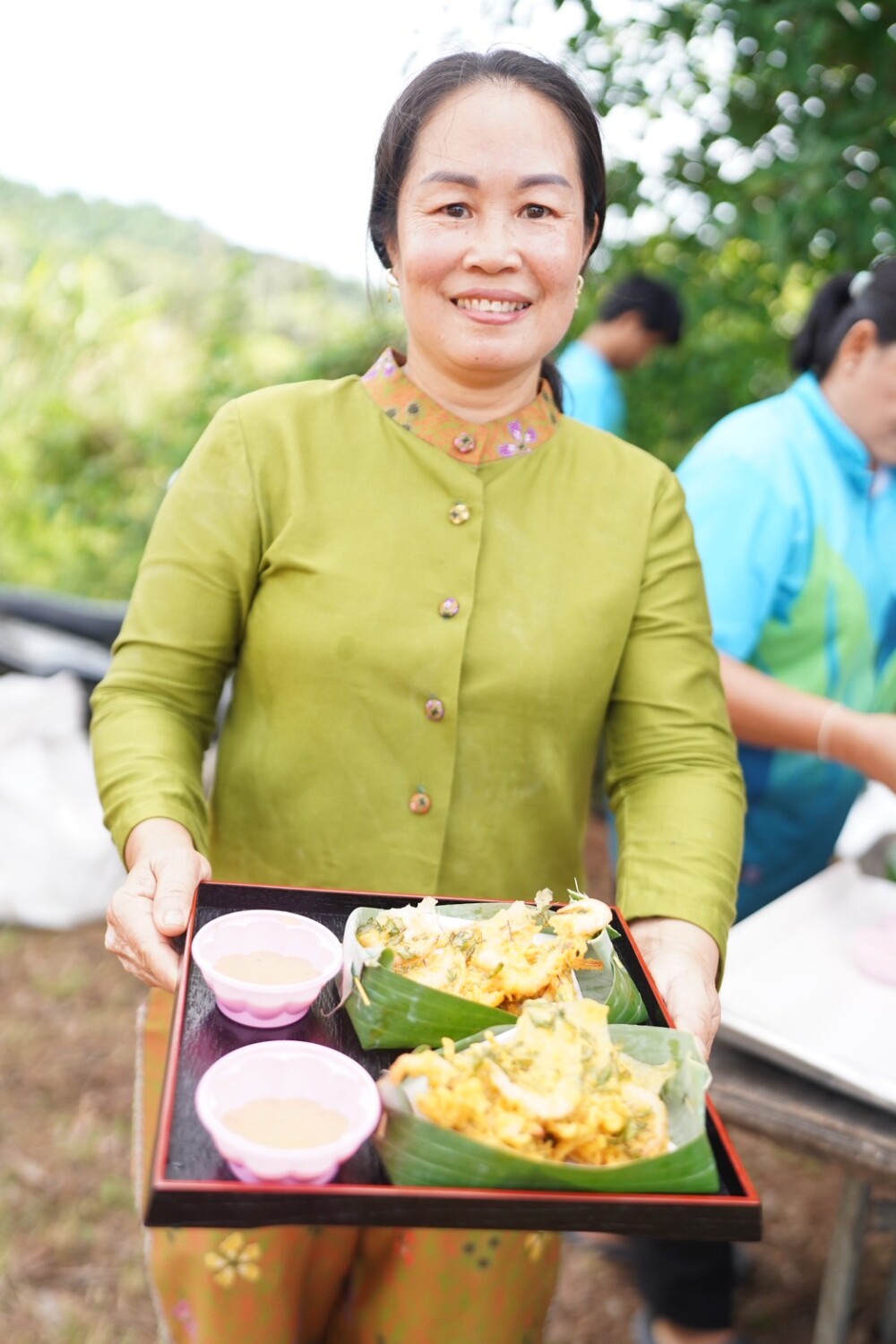




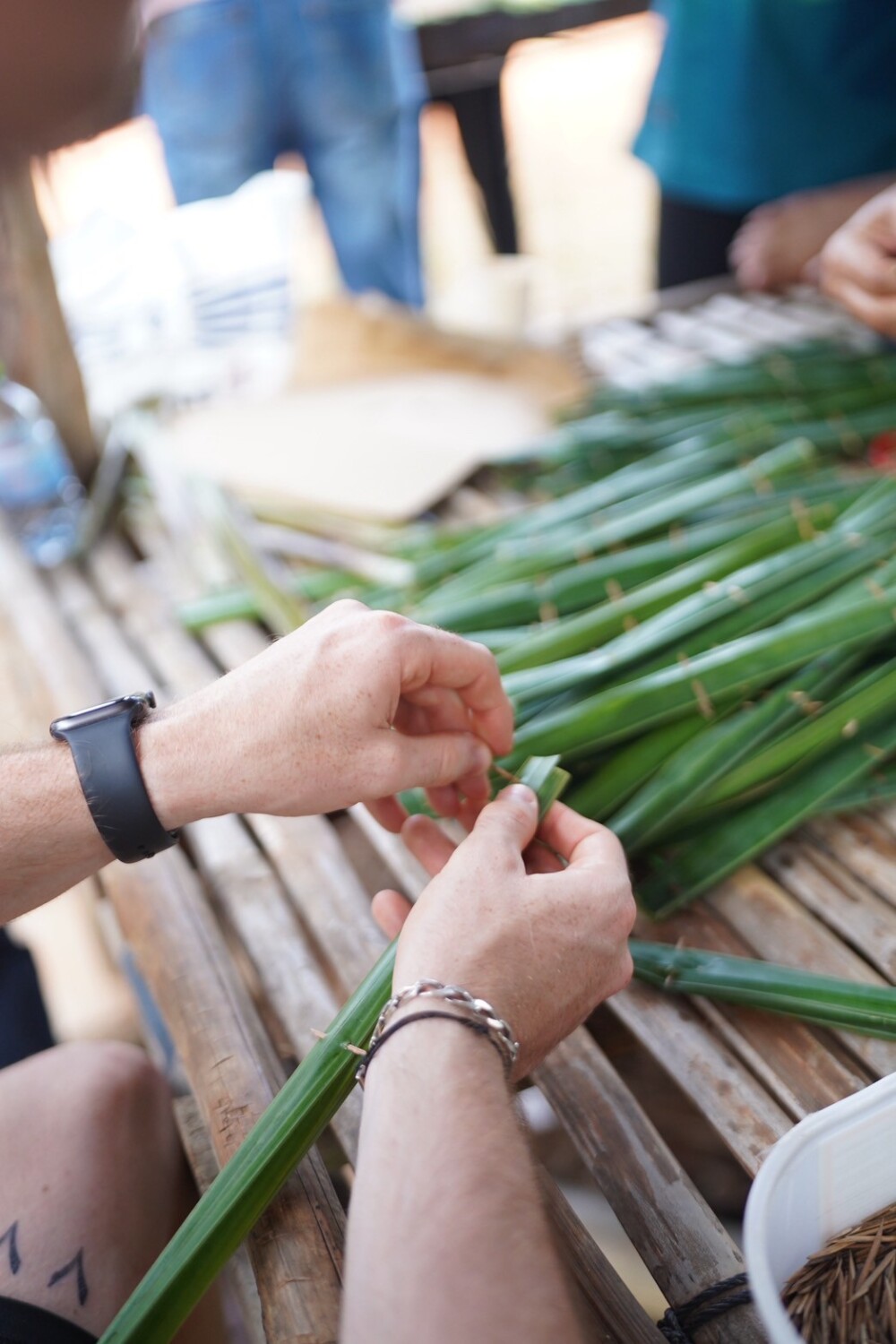
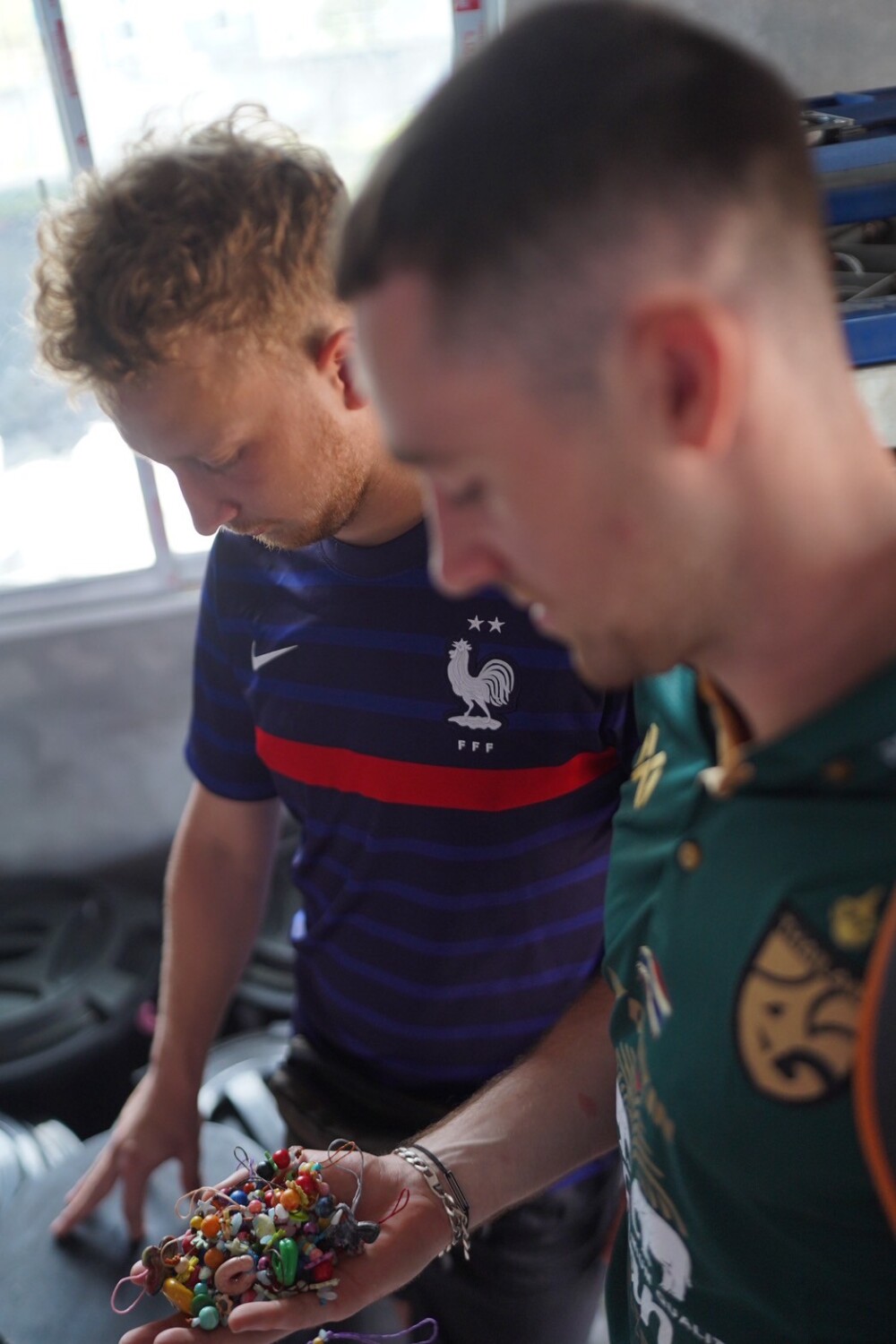
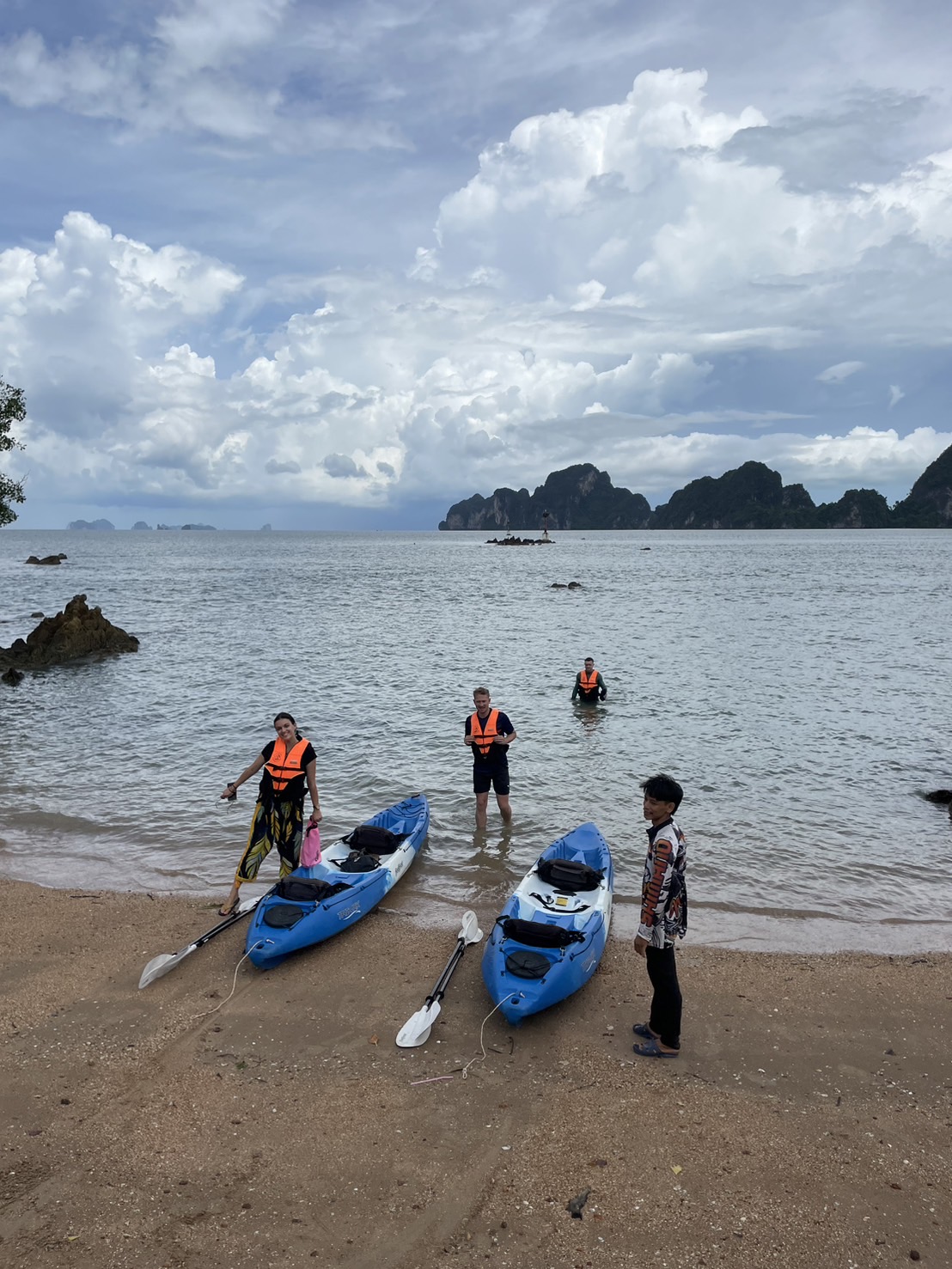
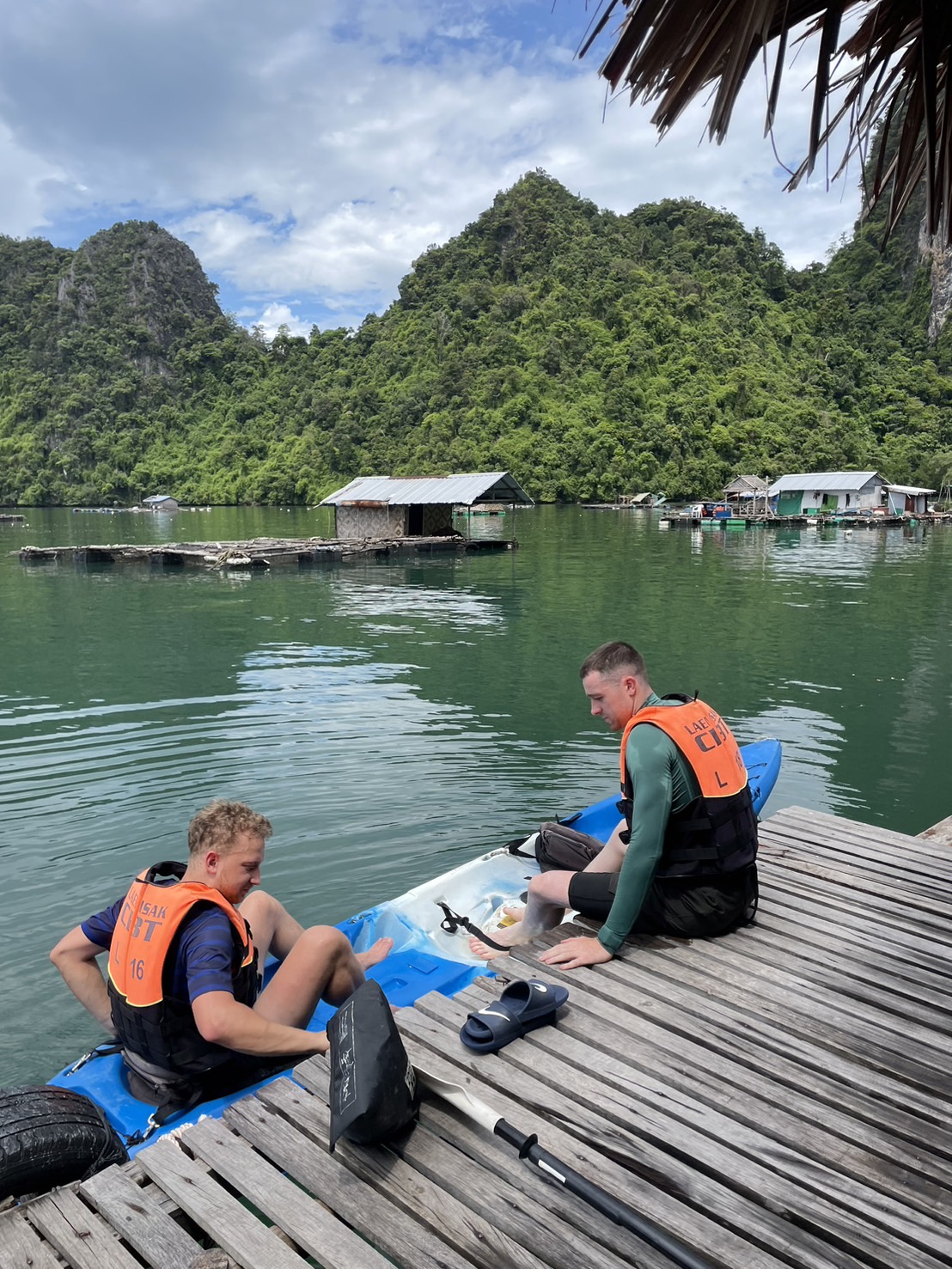
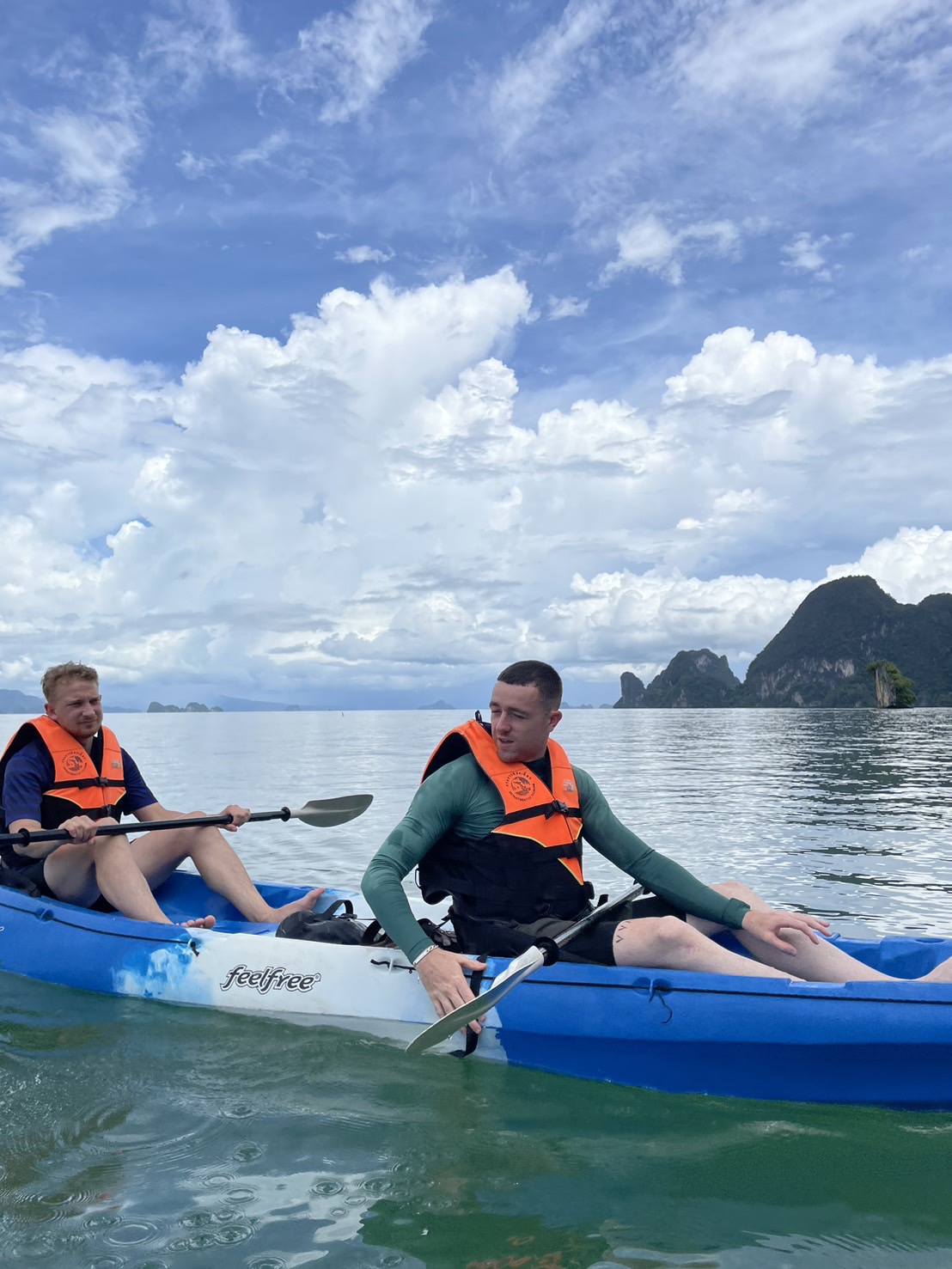

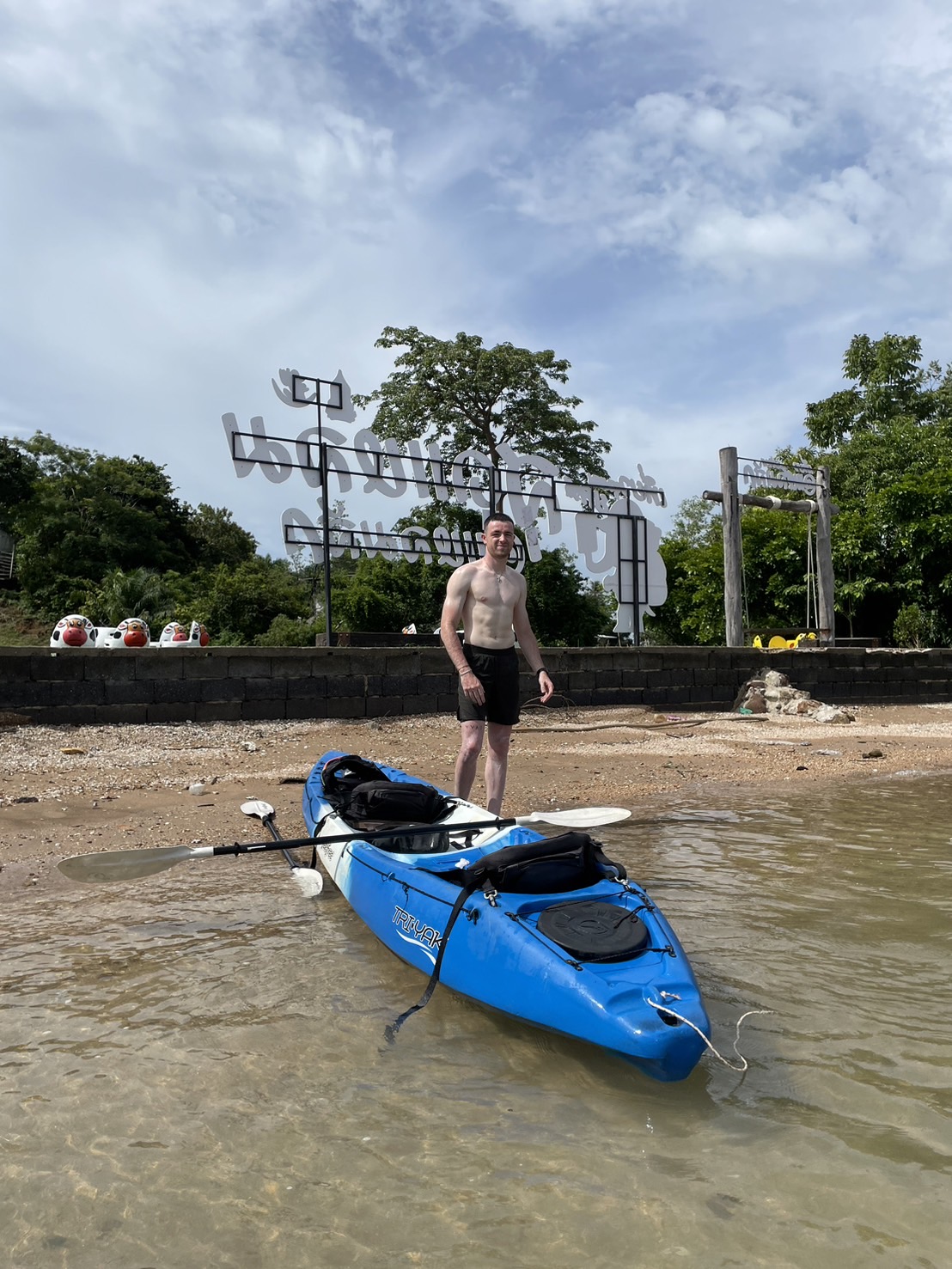
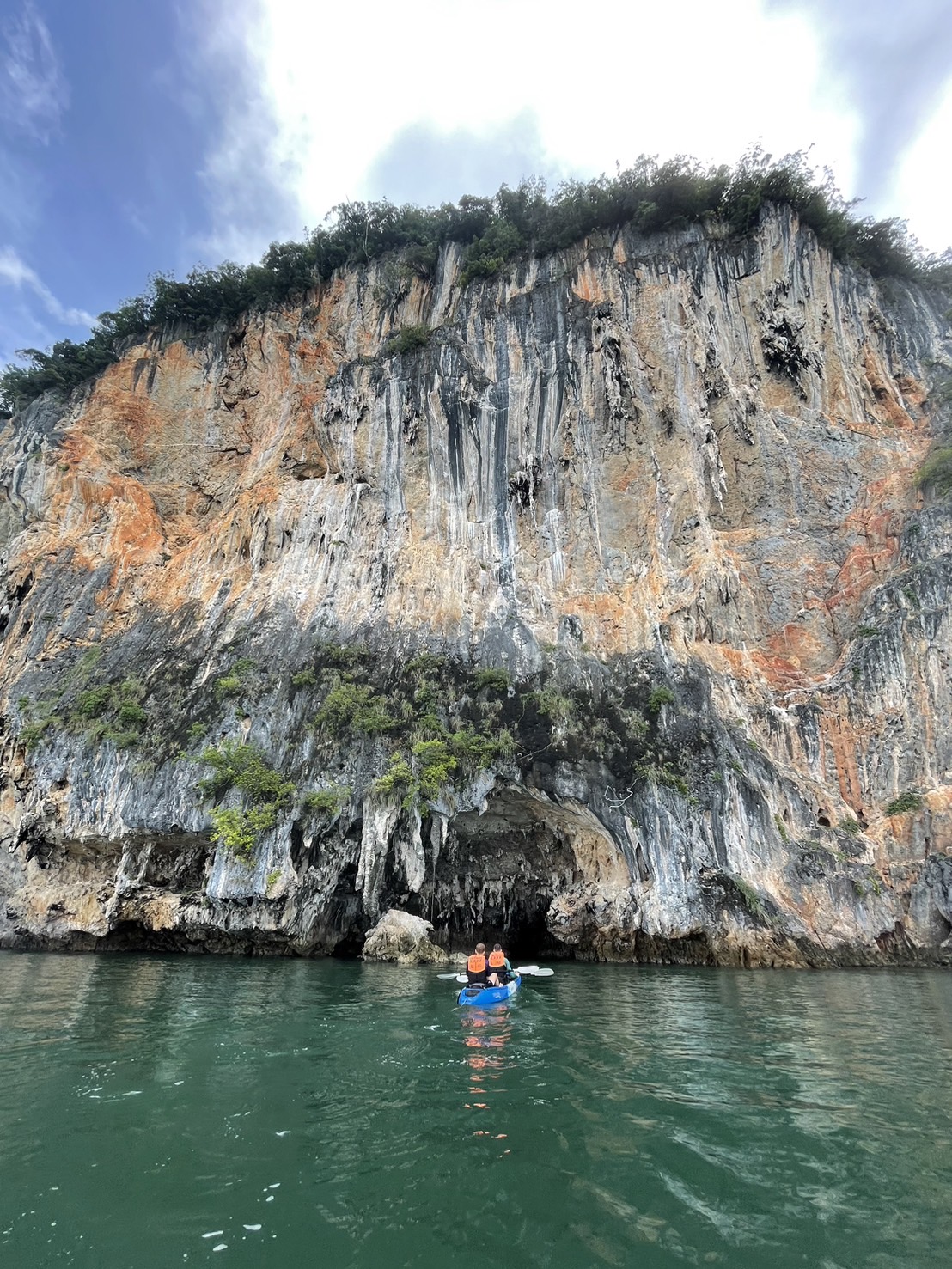
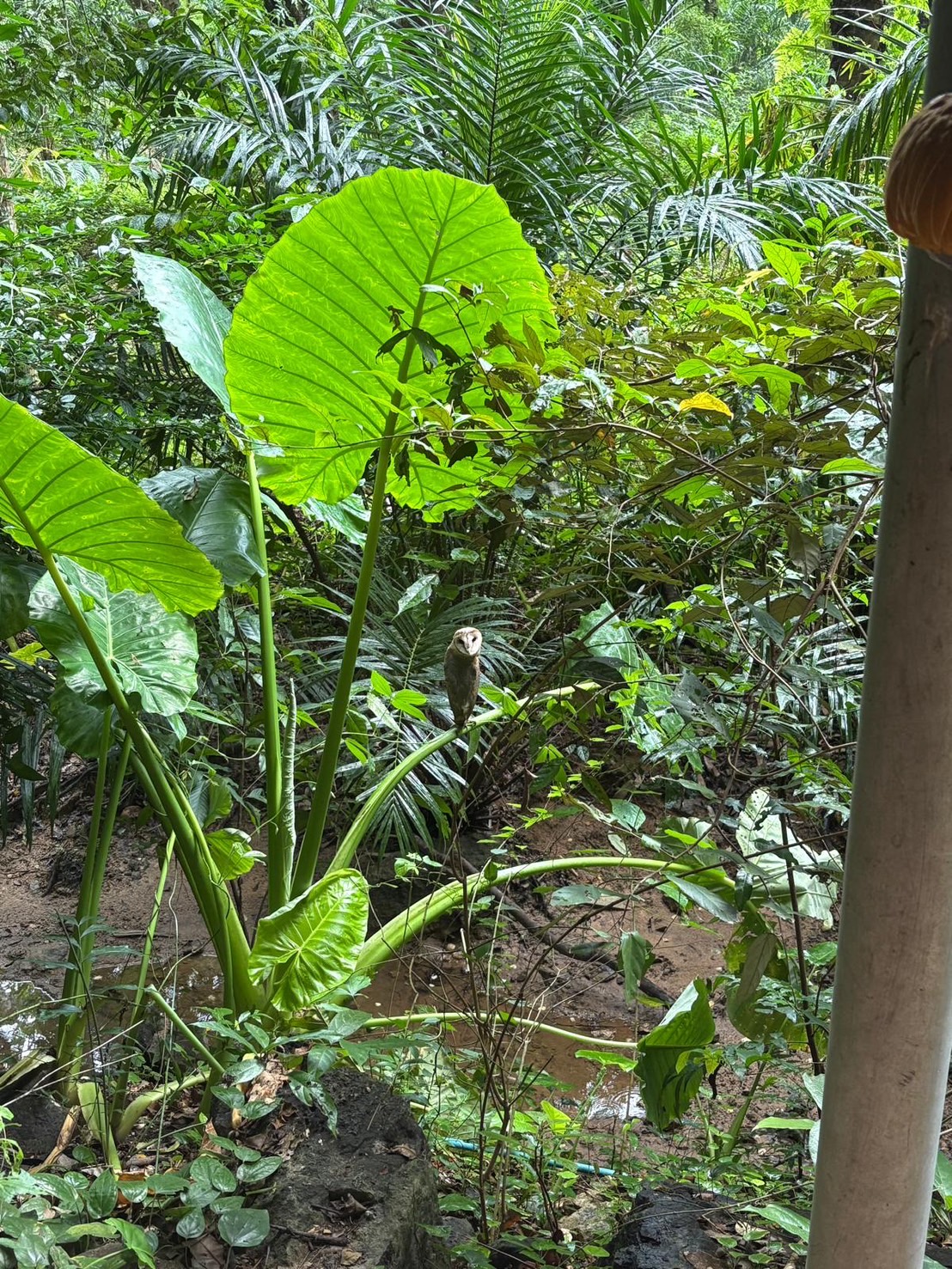
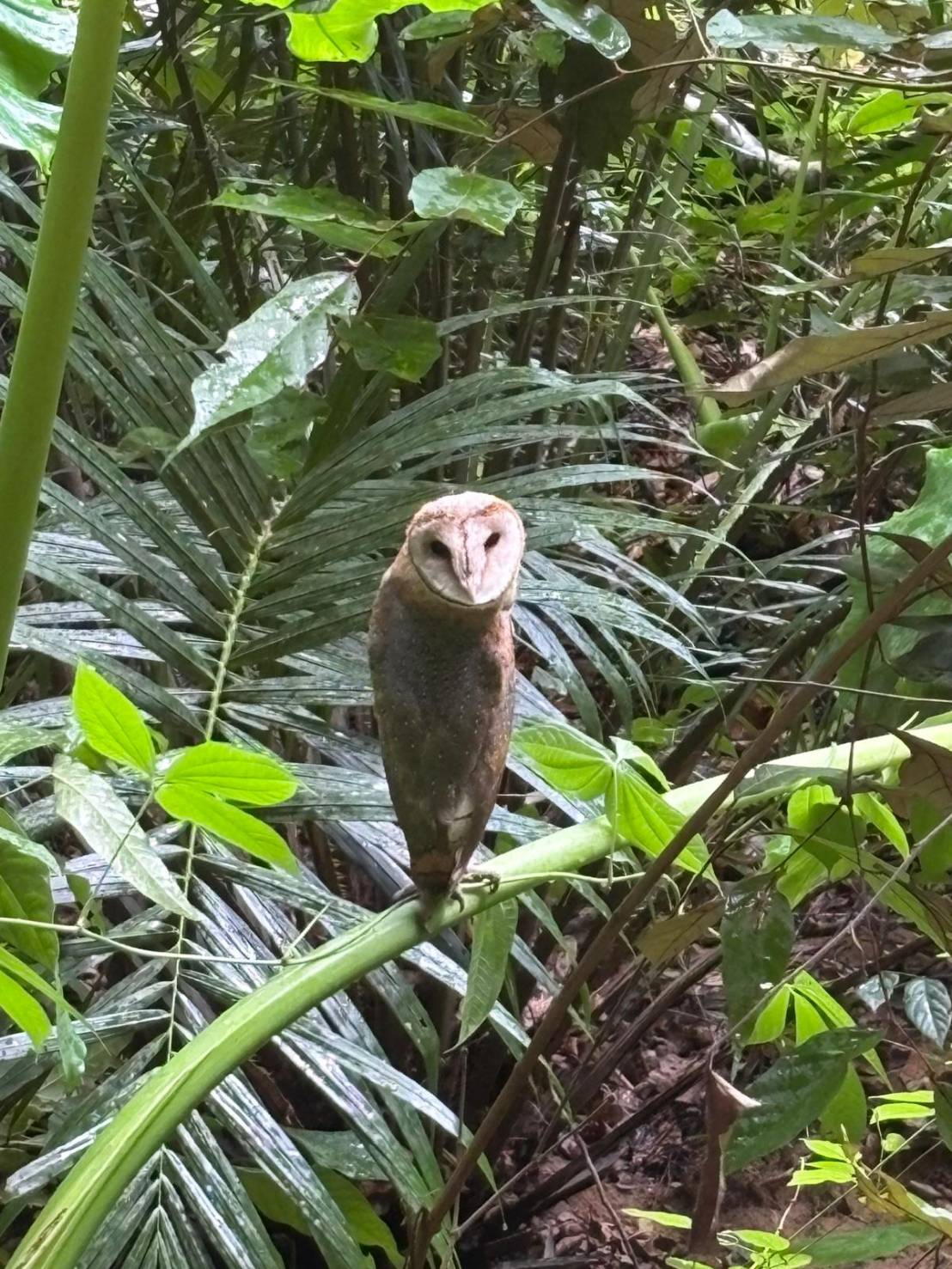
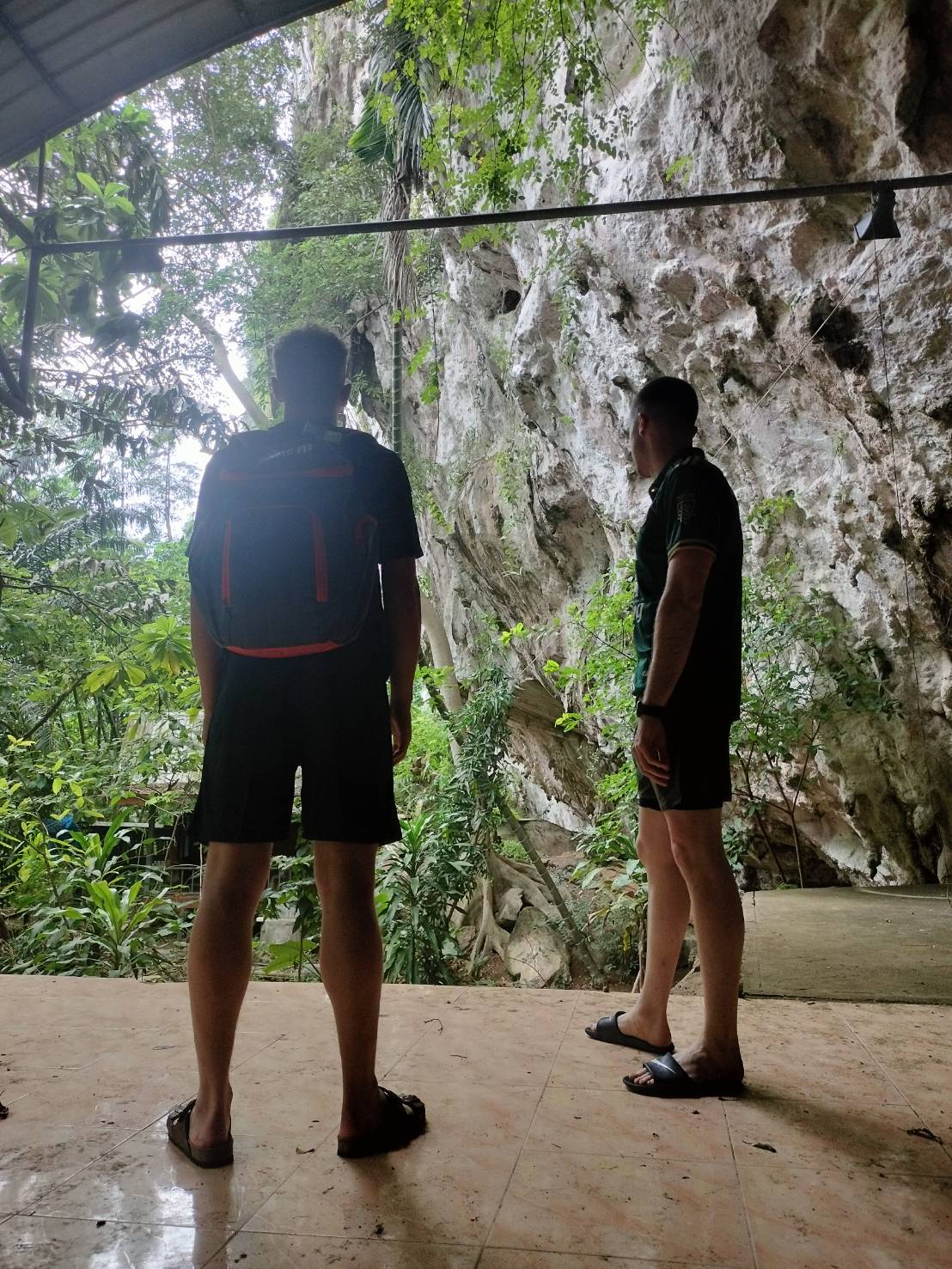
Another powerful moment was when students learned how the local community has been tackling ocean plastic pollution. They saw firsthand how 2.5 tons of plastic collected from the sea are transformed into colorful plastic beads, which are then used to make items such as jewelry and pet collars. It was an inspiring example of circular economy practices in action, reinforcing the importance of sustainability and creativity in problem-solving.
The field trip continued with a visit to a cave-temple inhabited by bats—and a rare sighting of a white owl—before students took to the water for a kayaking trip through Laemsak Bay. They swam by a floating fish farm and ended the day with a delicious Thai Muslim meal of chicken tandoori and roti, discovering yet another facet of Thailand’s diverse cultural landscape.
Day 6: Bamboo Structure Begins


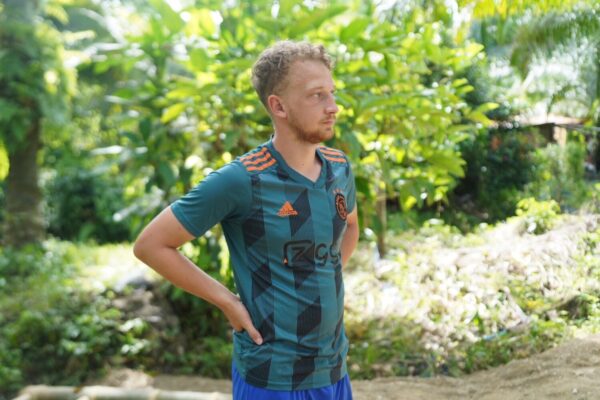
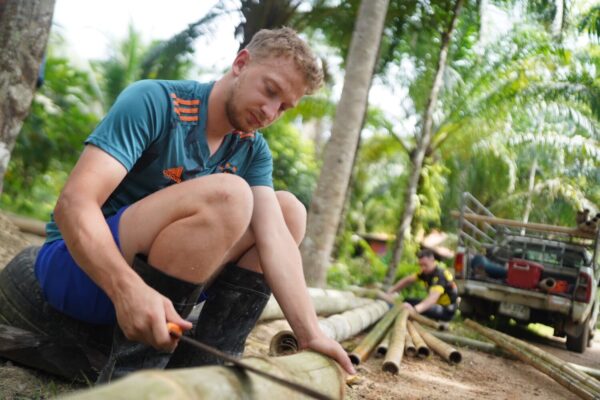

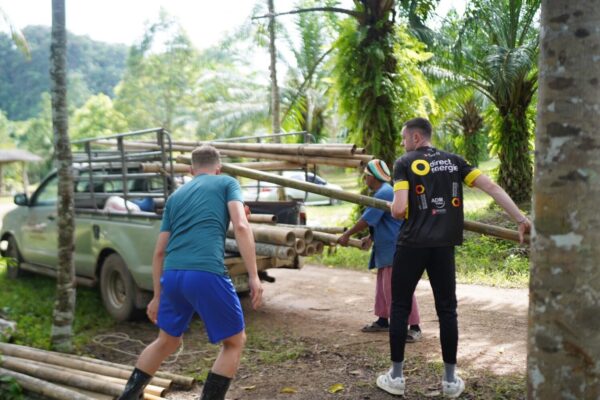

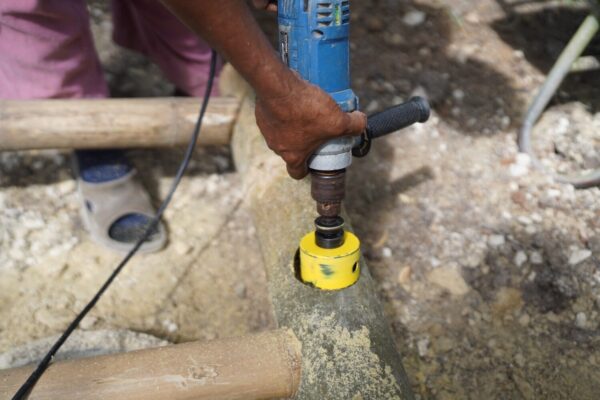
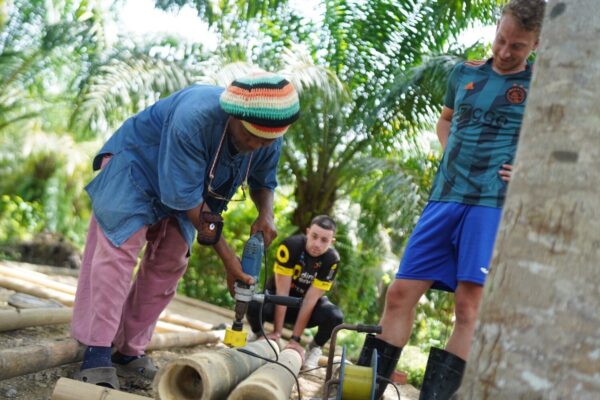
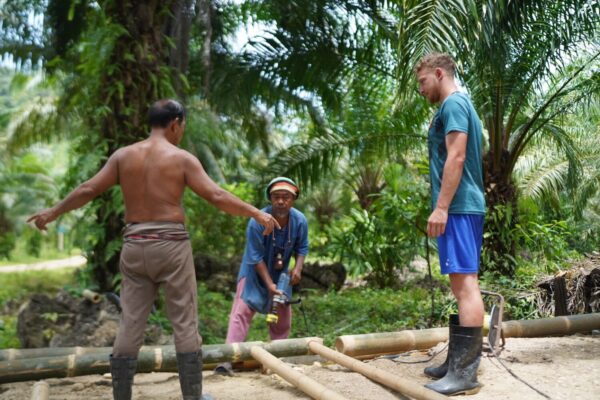
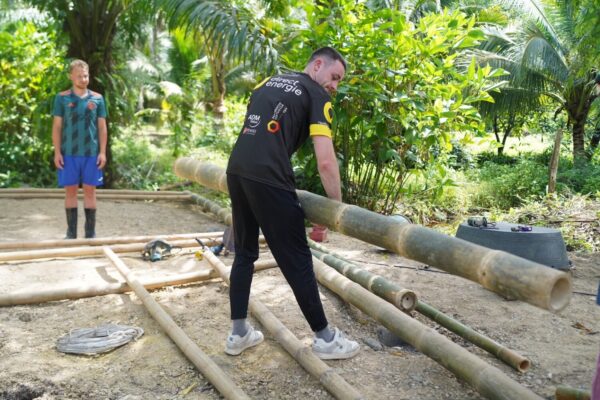
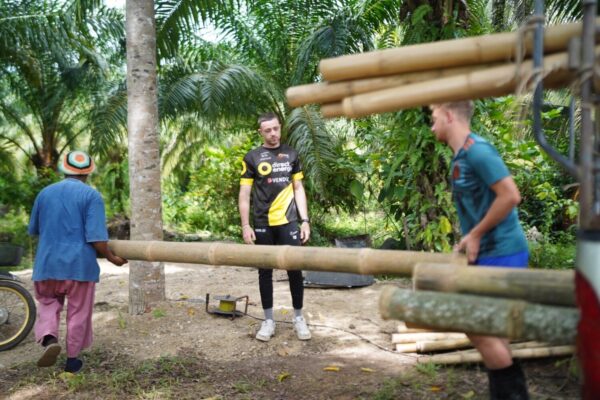
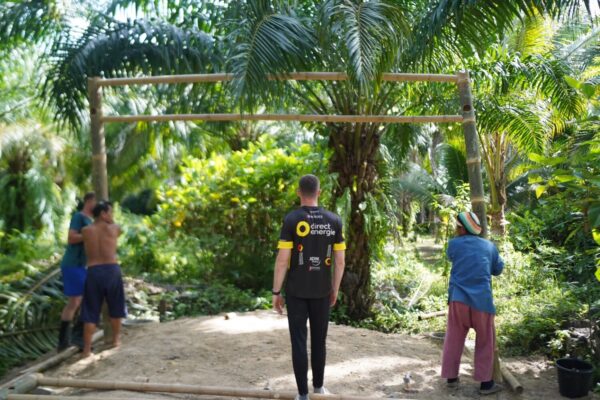
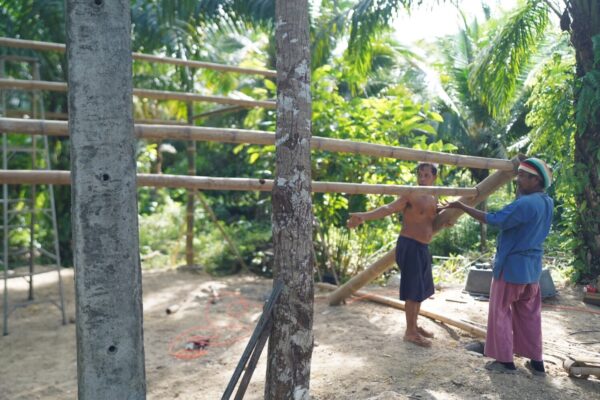
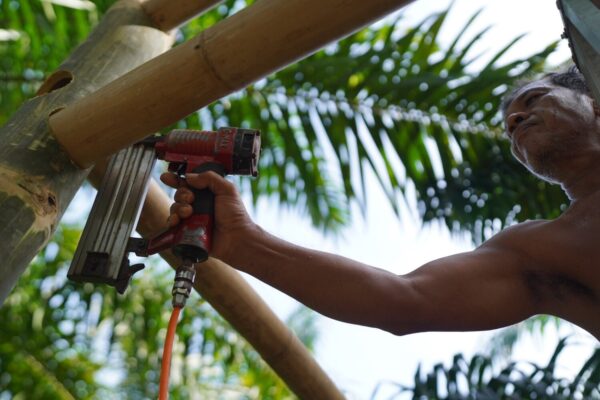
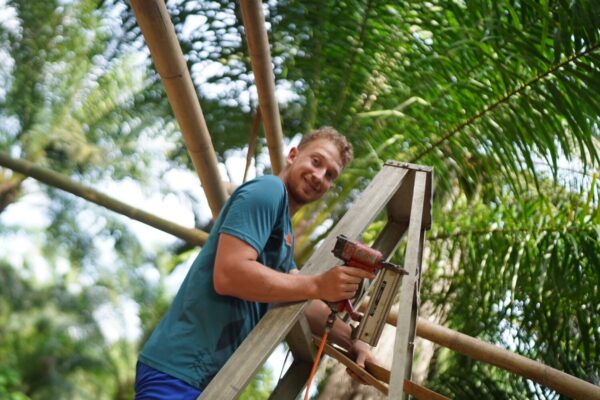
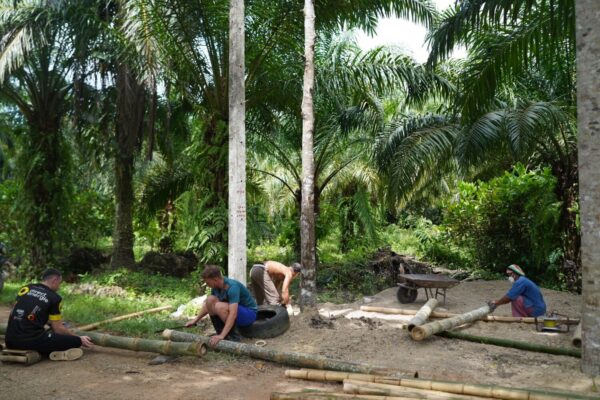
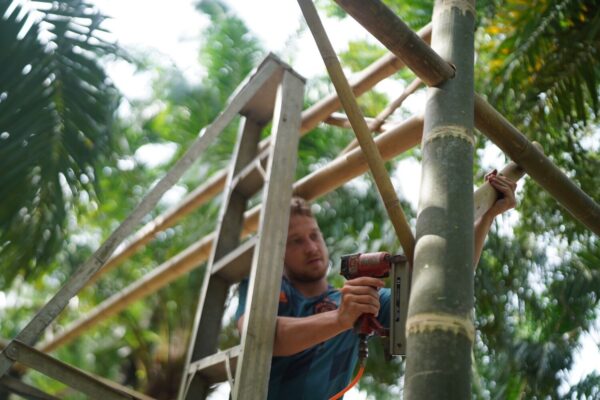
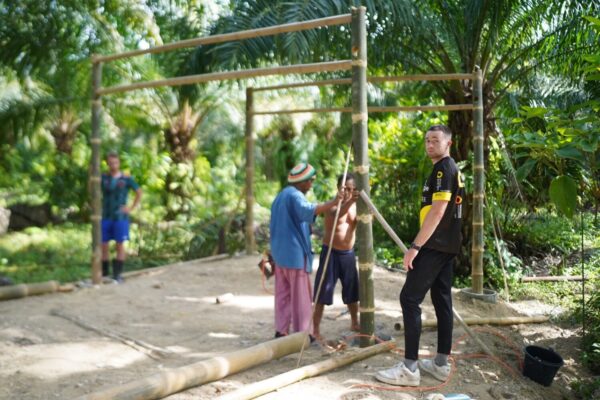
Back at the site, Thursday marked the exciting start of bamboo construction. Under the guidance of Bang Ree, our bamboo expert, students learned to clean and polish bamboo before installing the poles into the cement bases. This day was a tactile, tool-filled experience as they began to shape the physical frame of the kitchen. For many, it was the first time using specialized tools for bamboo construction, and the sense of progress was palpable.
In addition to the hands-on work, students were introduced to the different types of bamboo and their specific uses in building. They also practiced straightening bamboo pieces and mastering joint connection techniques—skills essential for creating strong, durable structures. The day offered both foundational knowledge and practical craftsmanship, laying the groundwork for the structure to come.
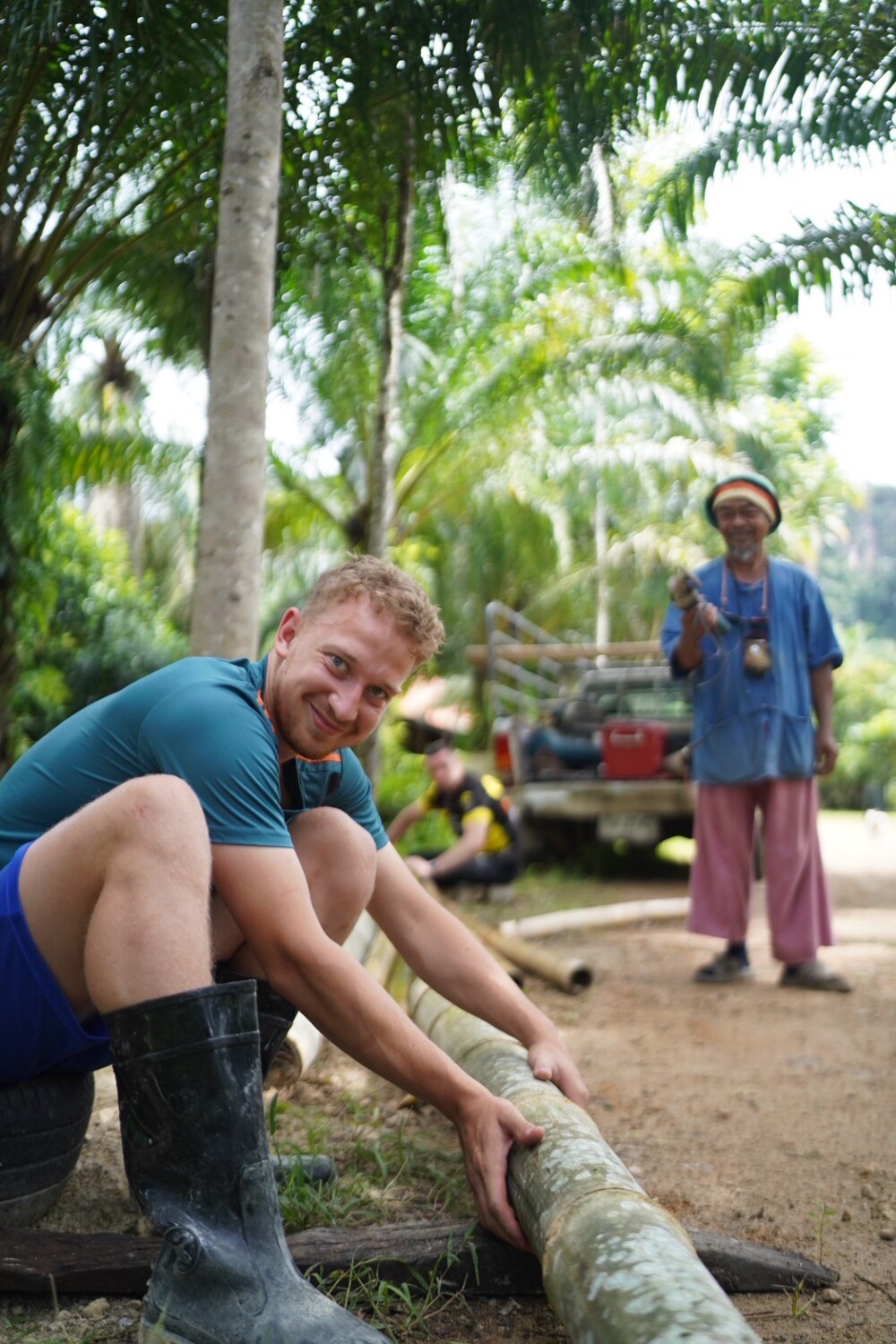
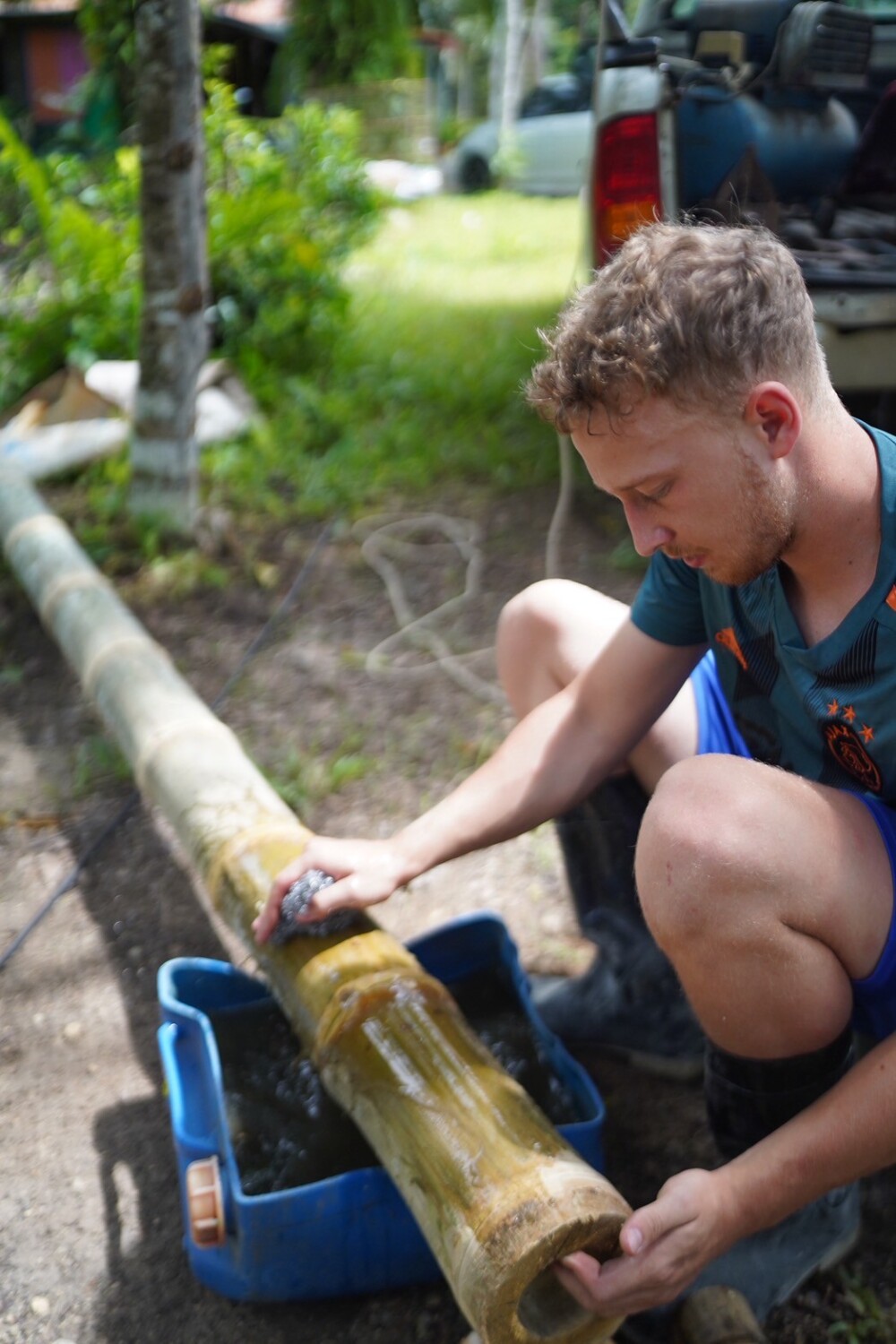

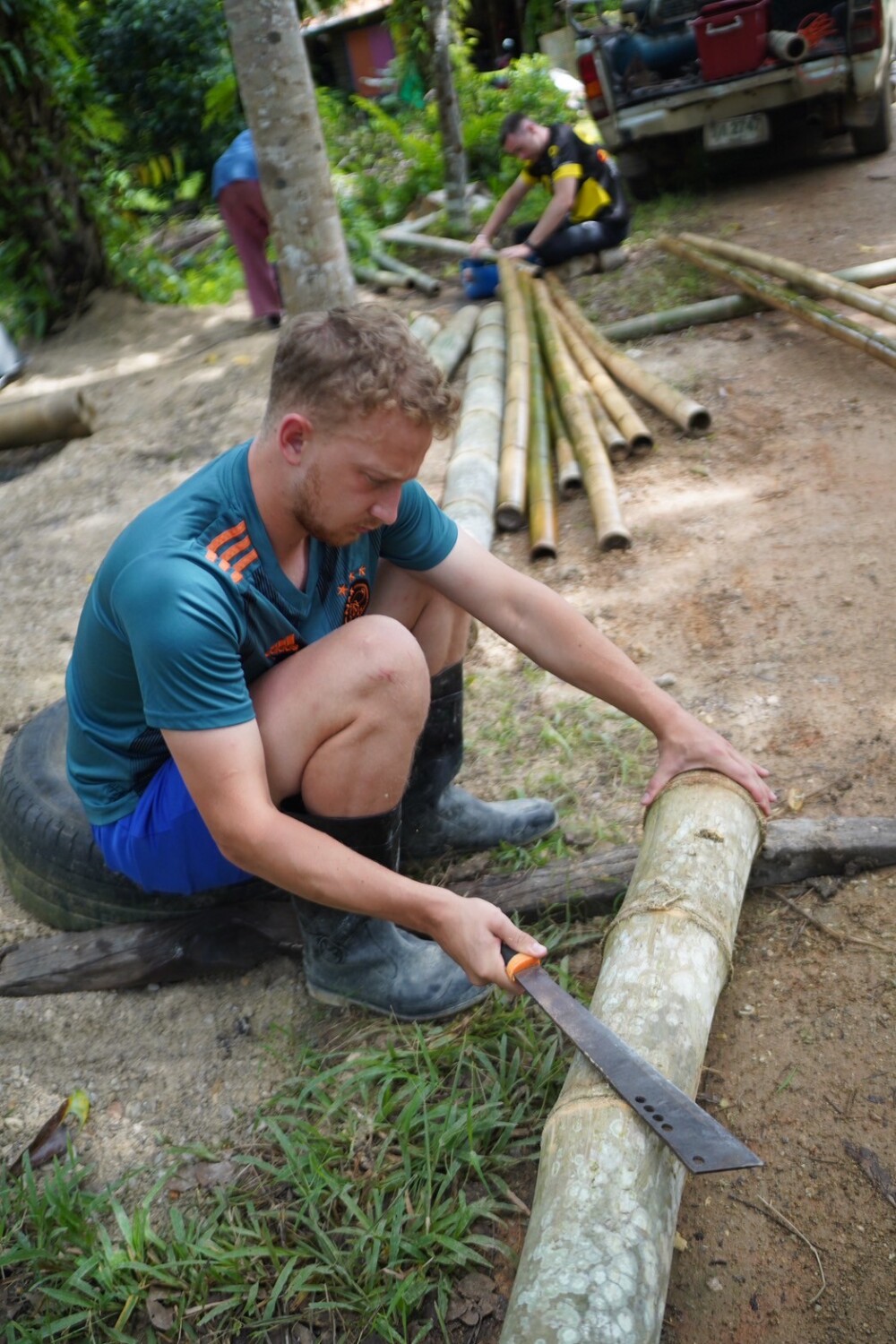
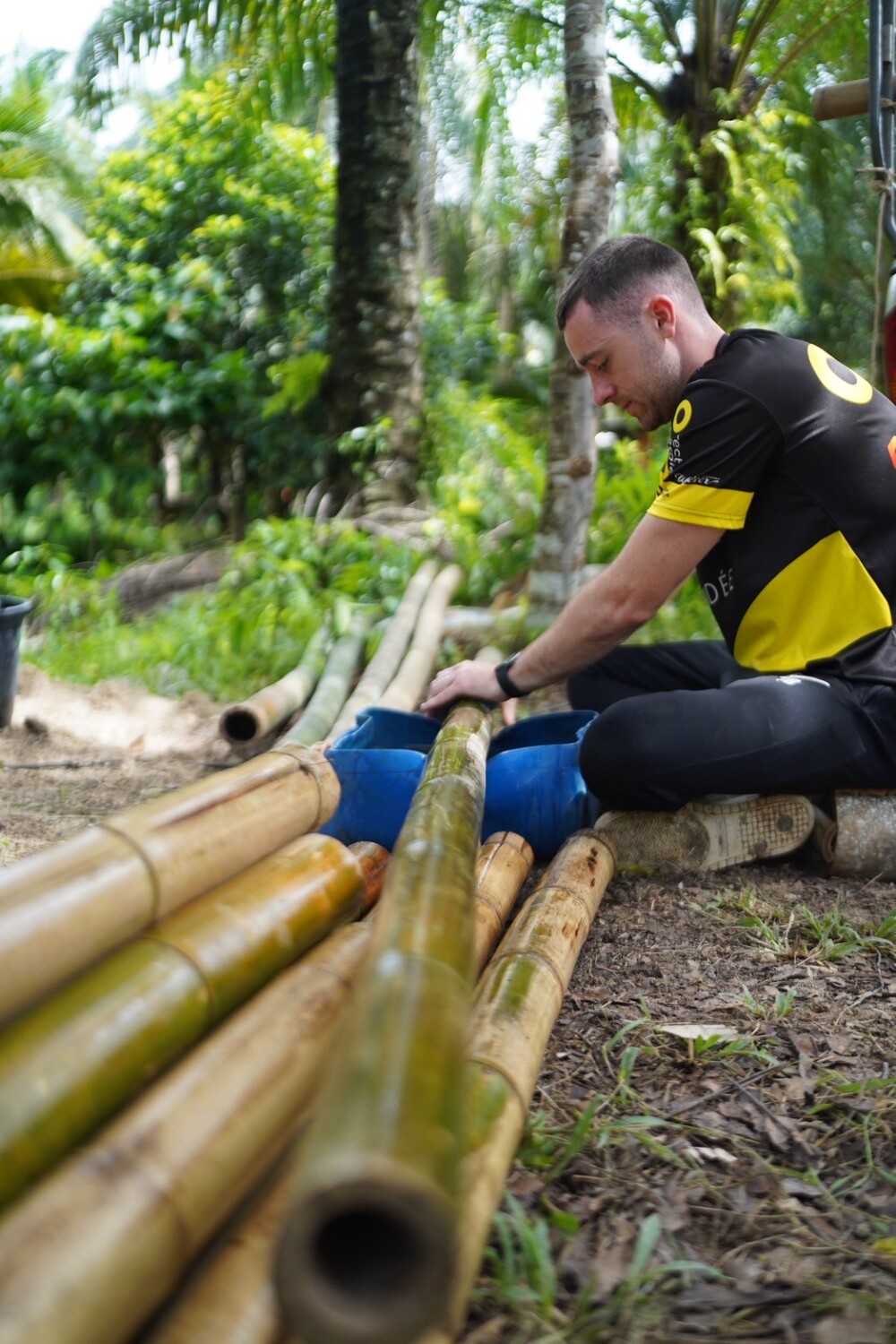
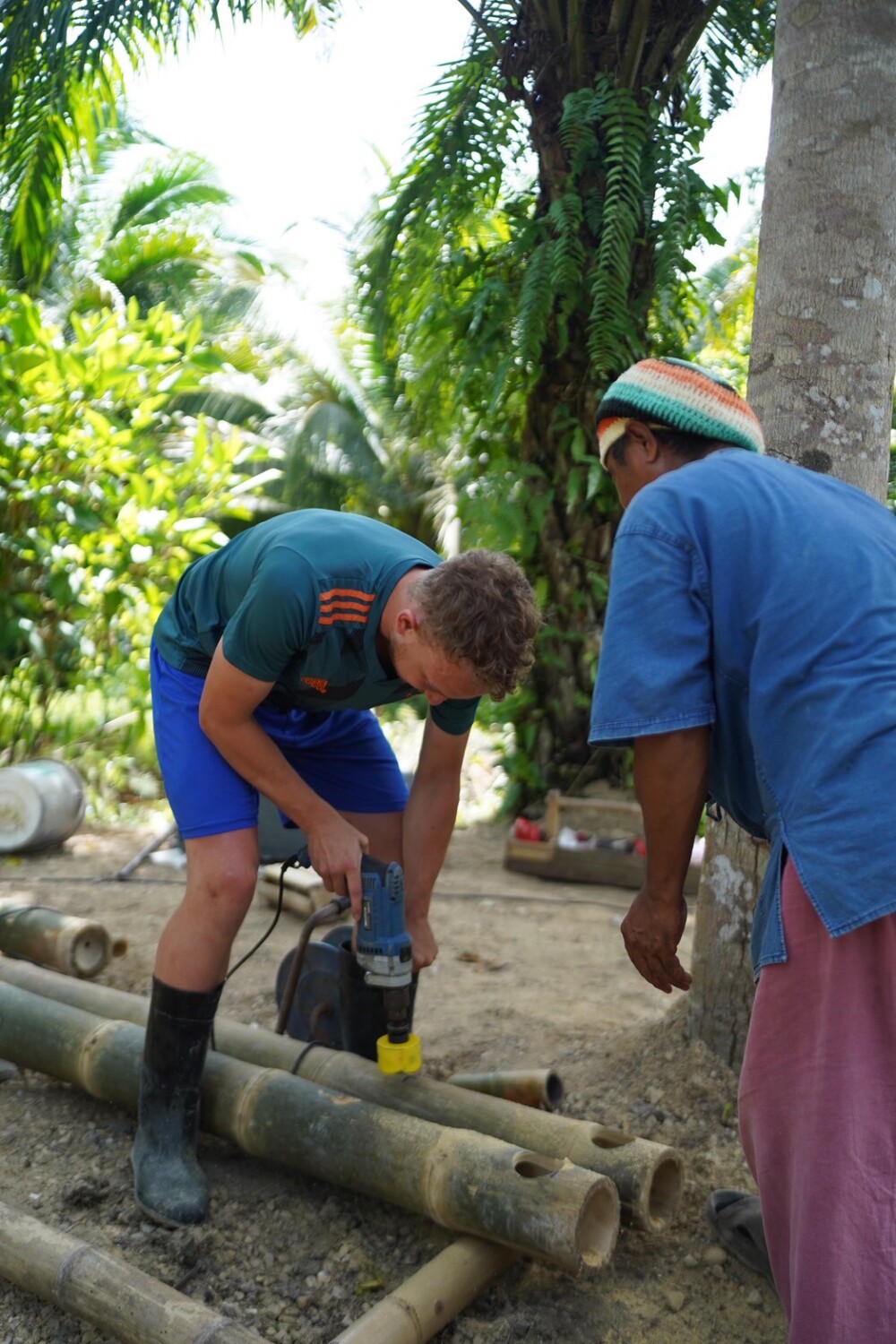

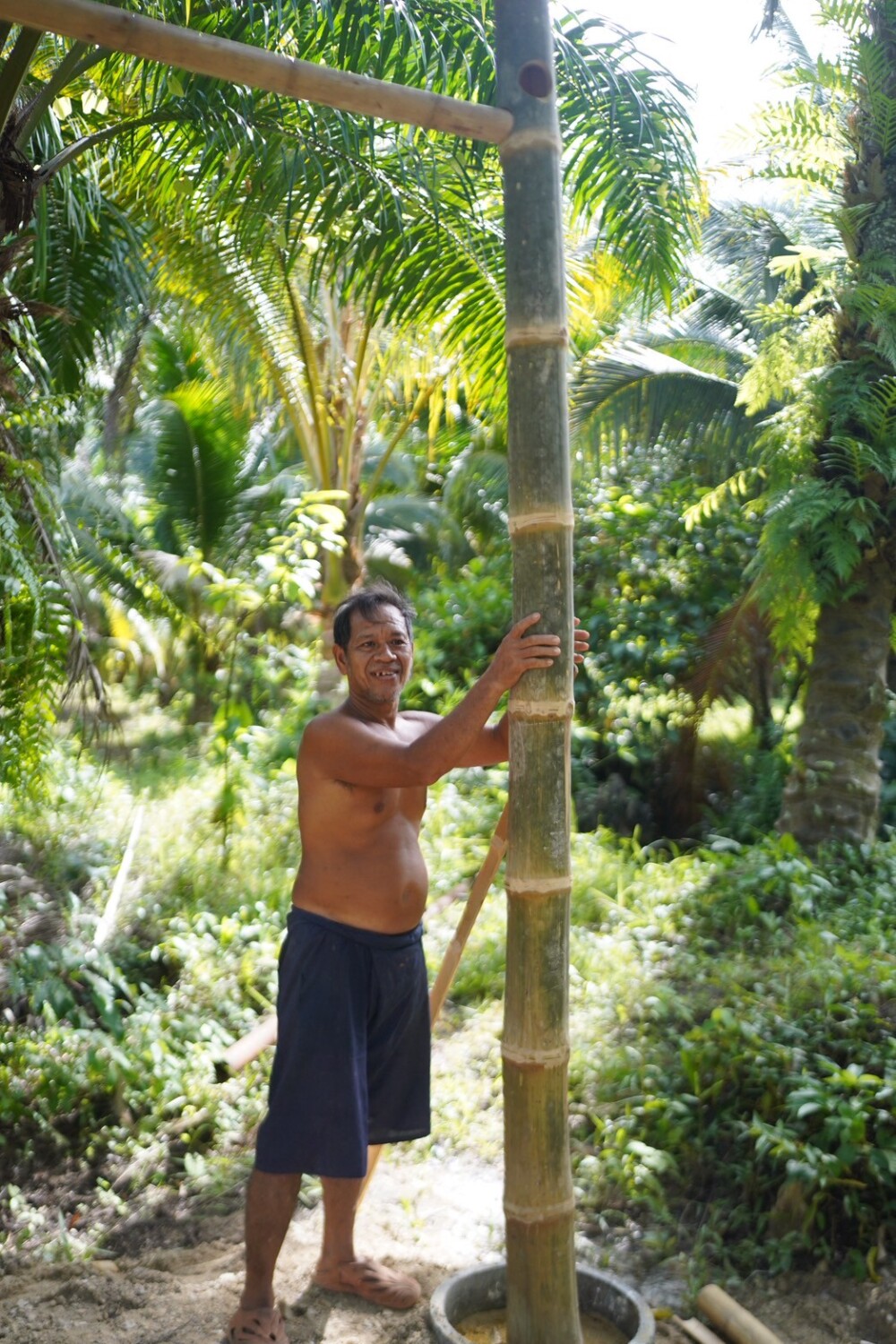
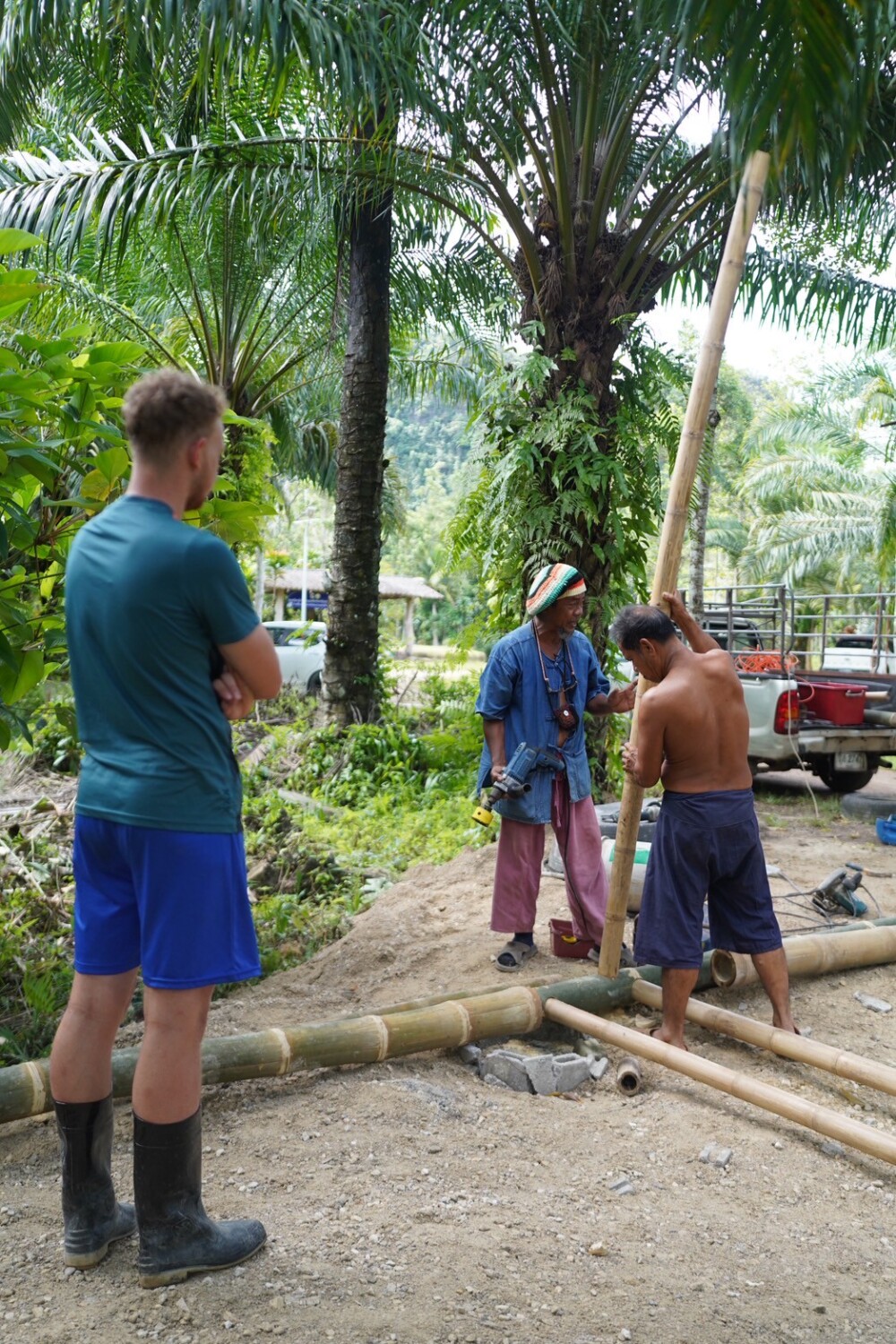
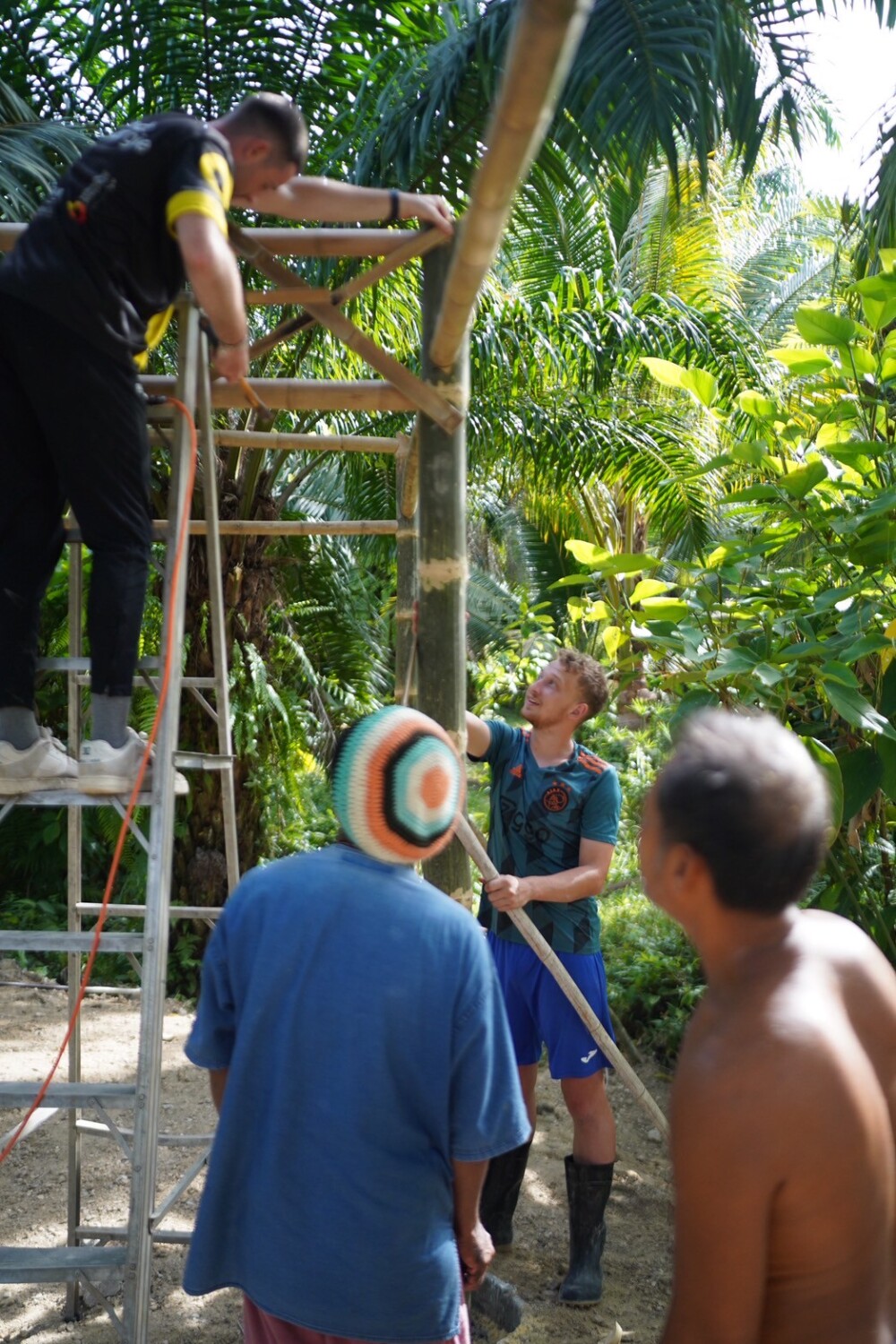

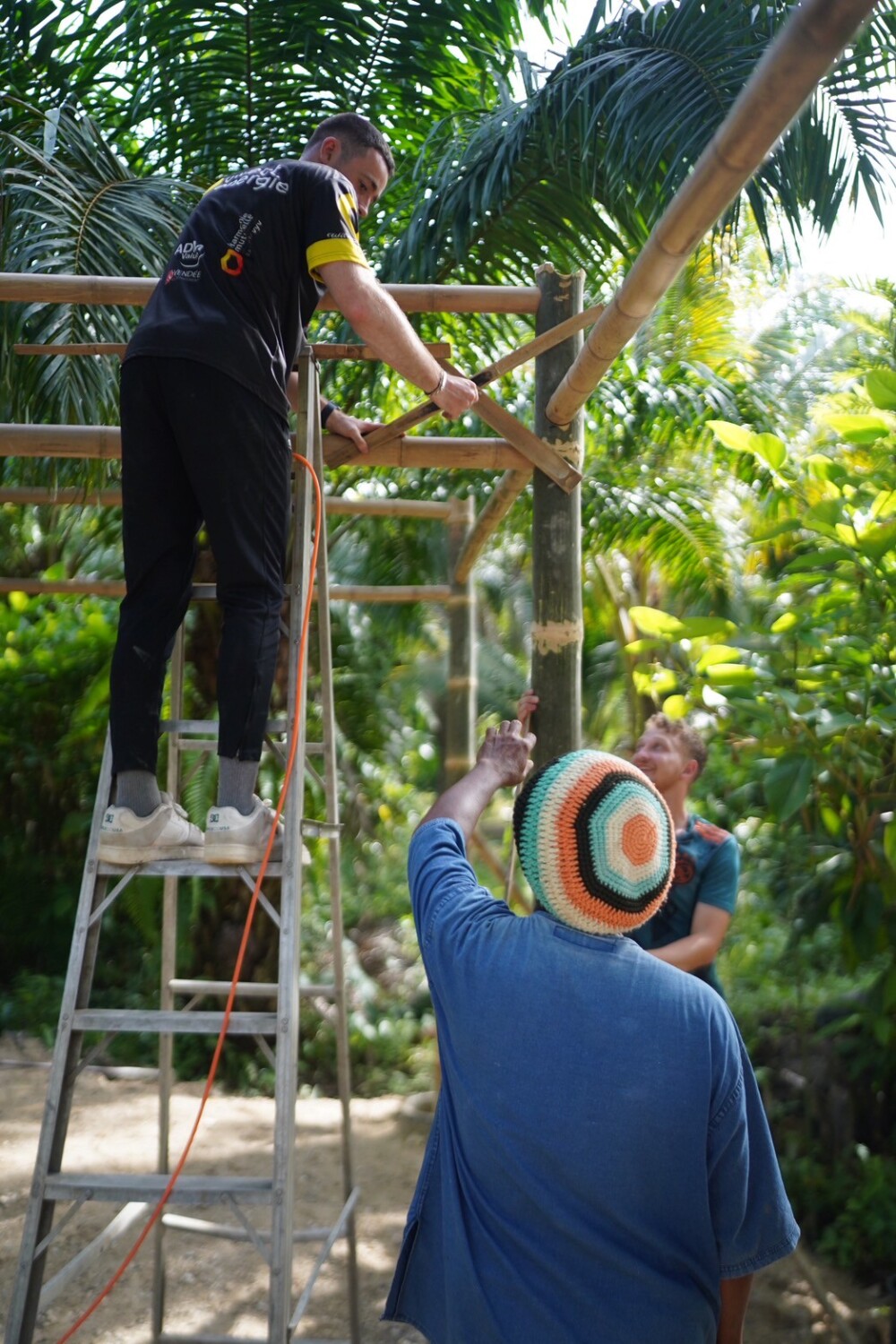
Day 7: Job Fair at Krabi Technical College

The week concluded with an inspiring visit to the Job Fair at Krabi Technical College. Once again, Chaiyut showcased his products, and students had the opportunity to explore a wide array of local innovations—from eco-printed textiles and handmade essential oils to locally produced wines made from coconut and mulberry. The fair was a fitting way to wrap up a week full of learning, growth, and meaningful community connection.
Looking Ahead
Next week, the students will continue their work on the bamboo structure and begin installing the Nipa Palm leaf roof for the outdoor kitchen. On Tuesday morning, they will be joined once again by Pi Aek, the architect, who will return to help further develop and refine the kitchen’s design. With each new step, the students are not only building a structure—but also deeper understanding, stronger collaboration, and lasting memories.
Stay tuned for more updates from the site!
Eco-Construction Internship Report – Week 3
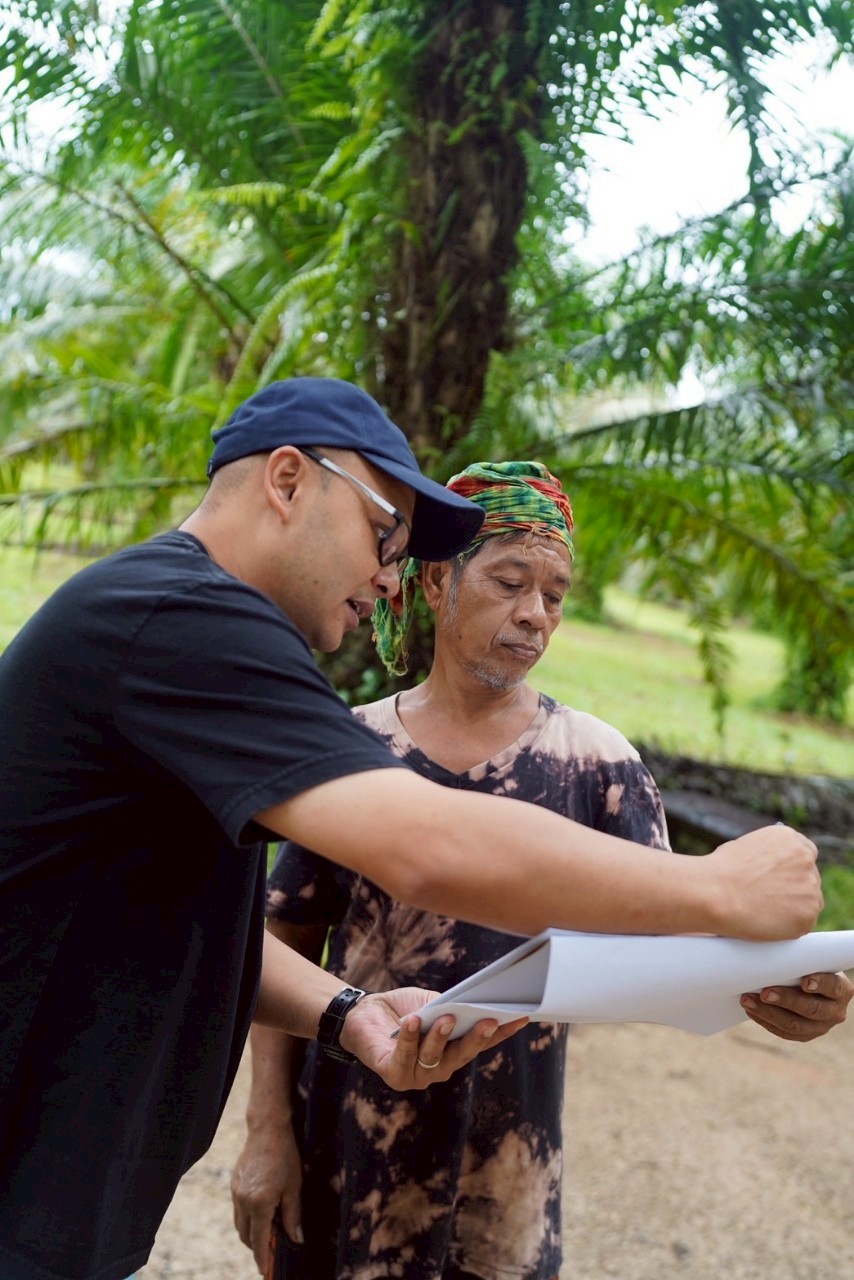

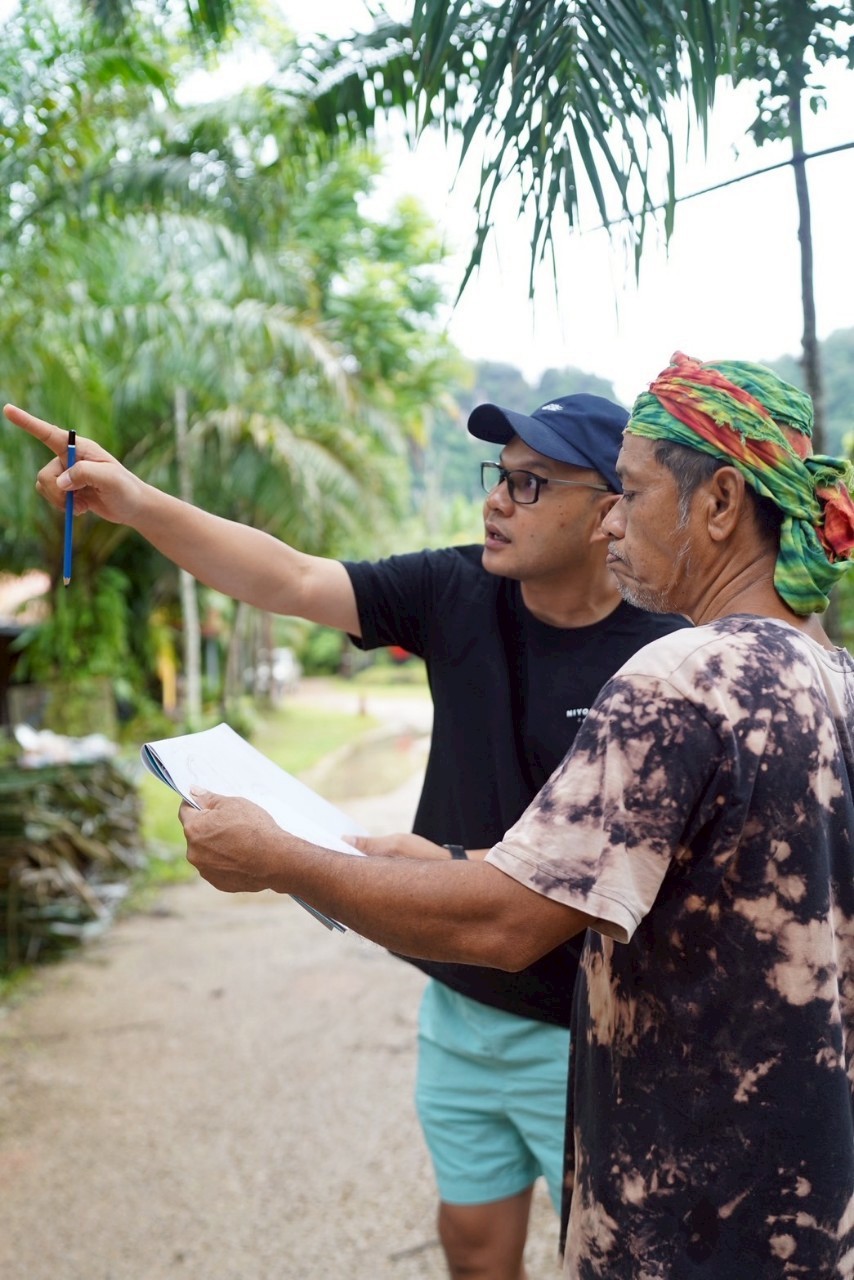
Day 8 – Rainy Day Reflections and Architectural Input
The weather was not on our side today. Strong winds and heavy rain made it impossible to continue work on-site. However, we made the most of the situation with a valuable indoor session. Our architect, P’ Aek, once again shared his expertise with the team by surveying the project’s current progress and presenting an important update on the outdoor kitchen design. His guidance continues to be instrumental, helping to refine our vision and ensuring our students gain insight into how architectural planning aligns with on-the-ground realities.
Day 9 – Bamboo Roof Building and Cultural Exchange
The sun returned, and so did our motivation. We had the pleasure of continuing our work with our bamboo expert, Bang Ree, to begin the roof structure for the outdoor kitchen. This marked a meaningful moment in the internship, giving students a chance to observe and participate in a very different style of construction compared to what they are used to in France.
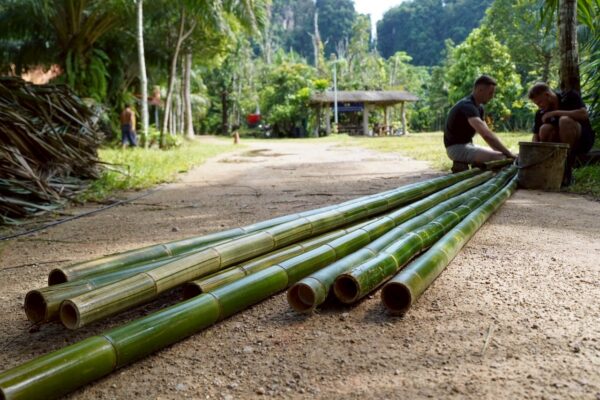

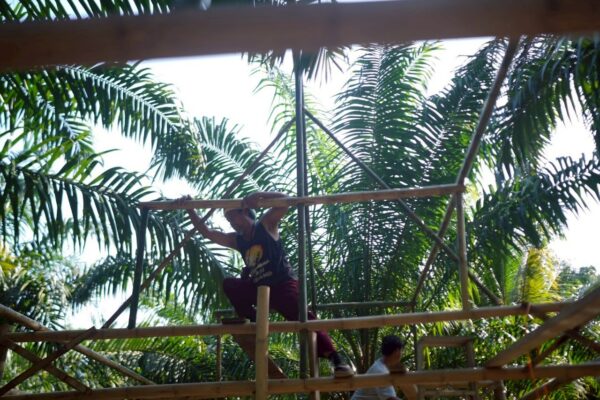
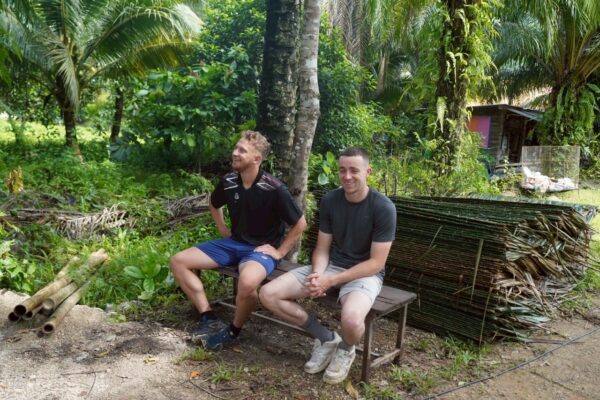

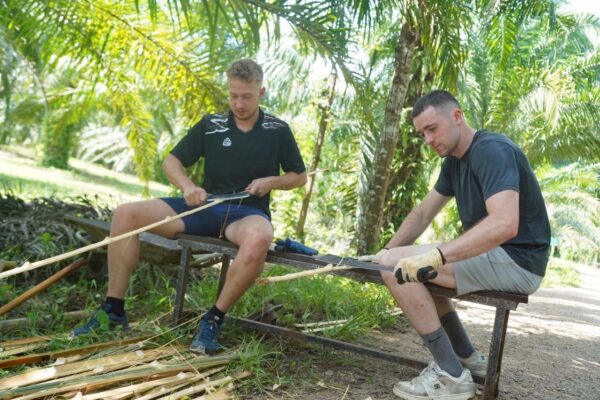


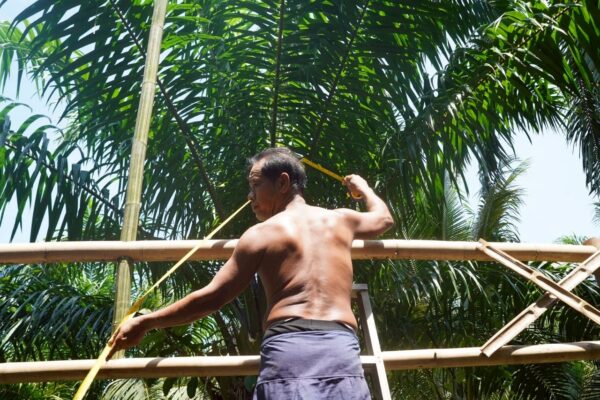
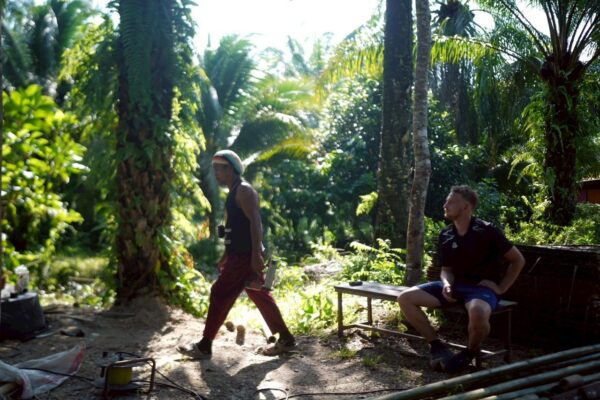
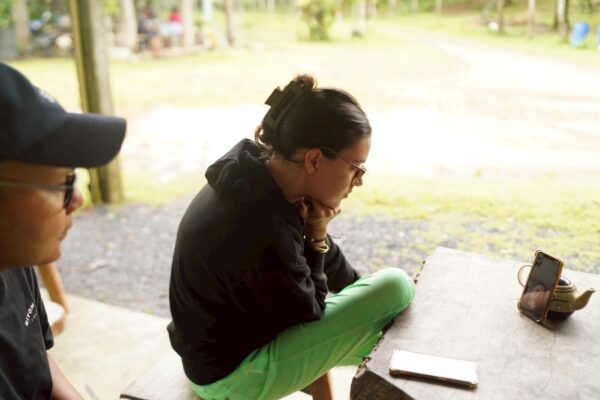
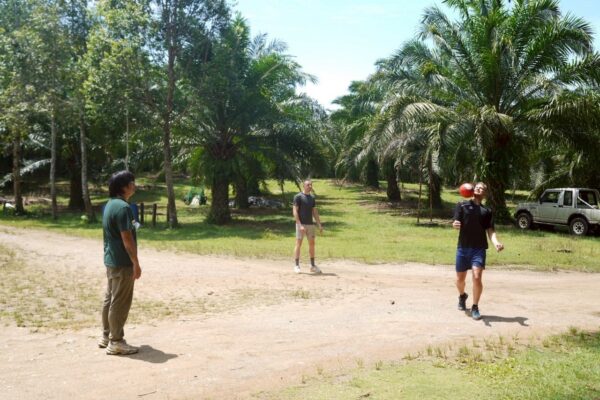
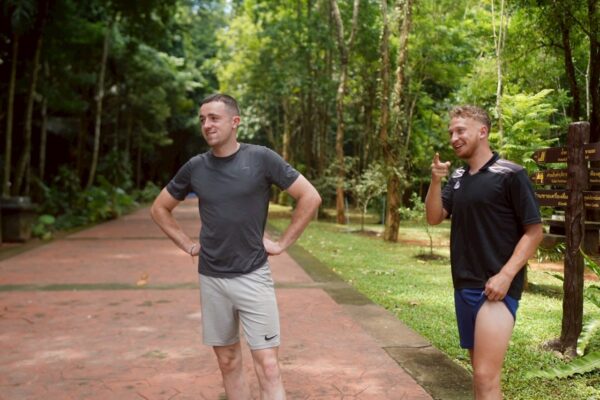

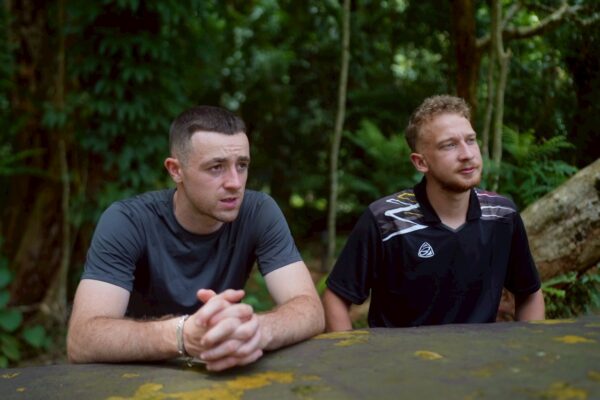
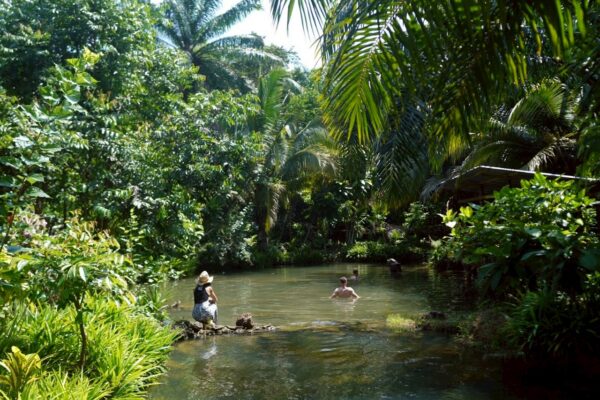
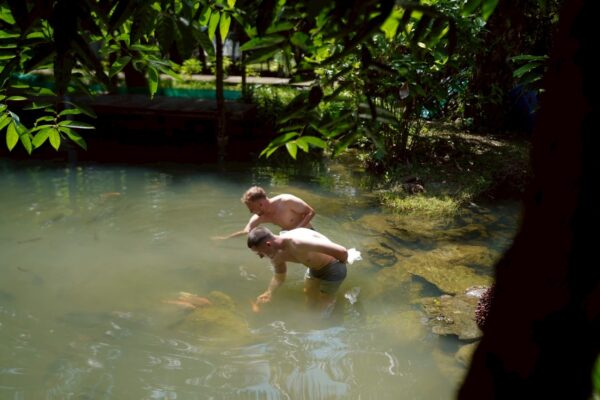

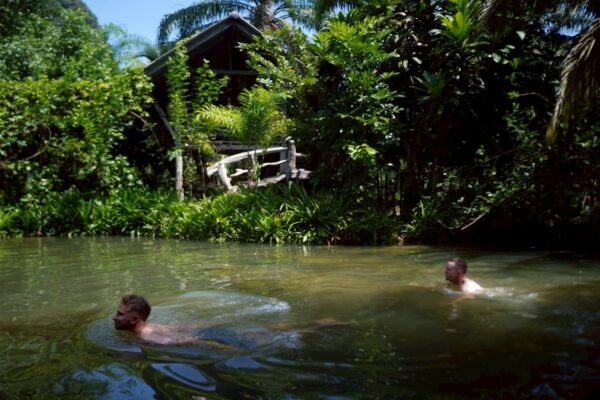

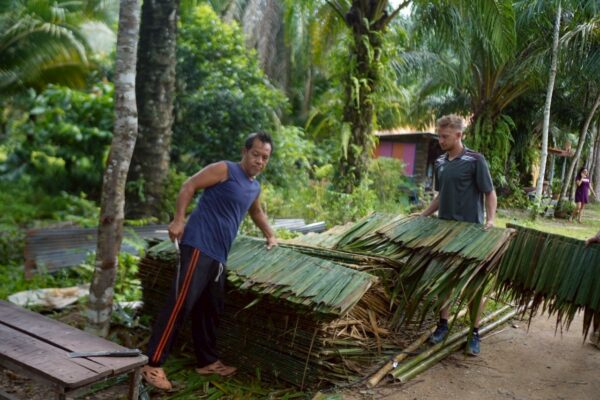
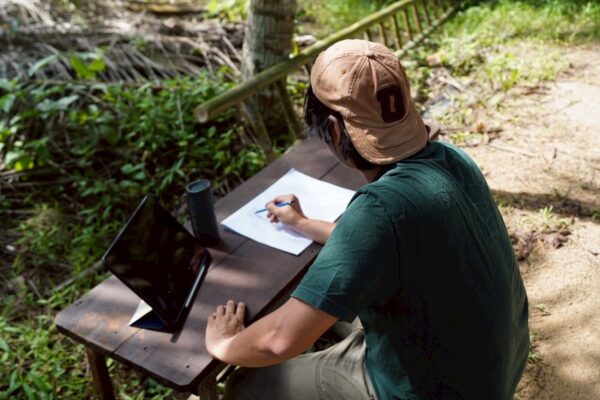
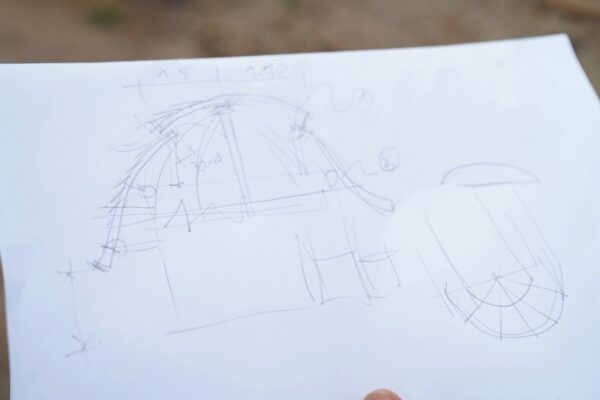
Unlike the strictly regulated processes in Europe, Thai rural craftsmanship often relies on experience, intuition, and the materials immediately available. Students were particularly impressed by Bang Ree’s fluid movements—walking from one bamboo pole to another with the agility of a monkey swinging between the branches of a tree. This elegant connection between human and nature was a living lesson in balance, rhythm, and trust in materials.
Before lunch, everyone took a short break for a quick football match with our team. It was a fun and casual moment that gave everyone a chance to relax. After that, Chaiyut introduced one of his palm-based creations: a frisbee made from palm waste. The students were surprised by how well it flew, and they enjoyed testing it out together. It was a simple but enjoyable activity that showed how natural materials can be repurposed in creative ways.
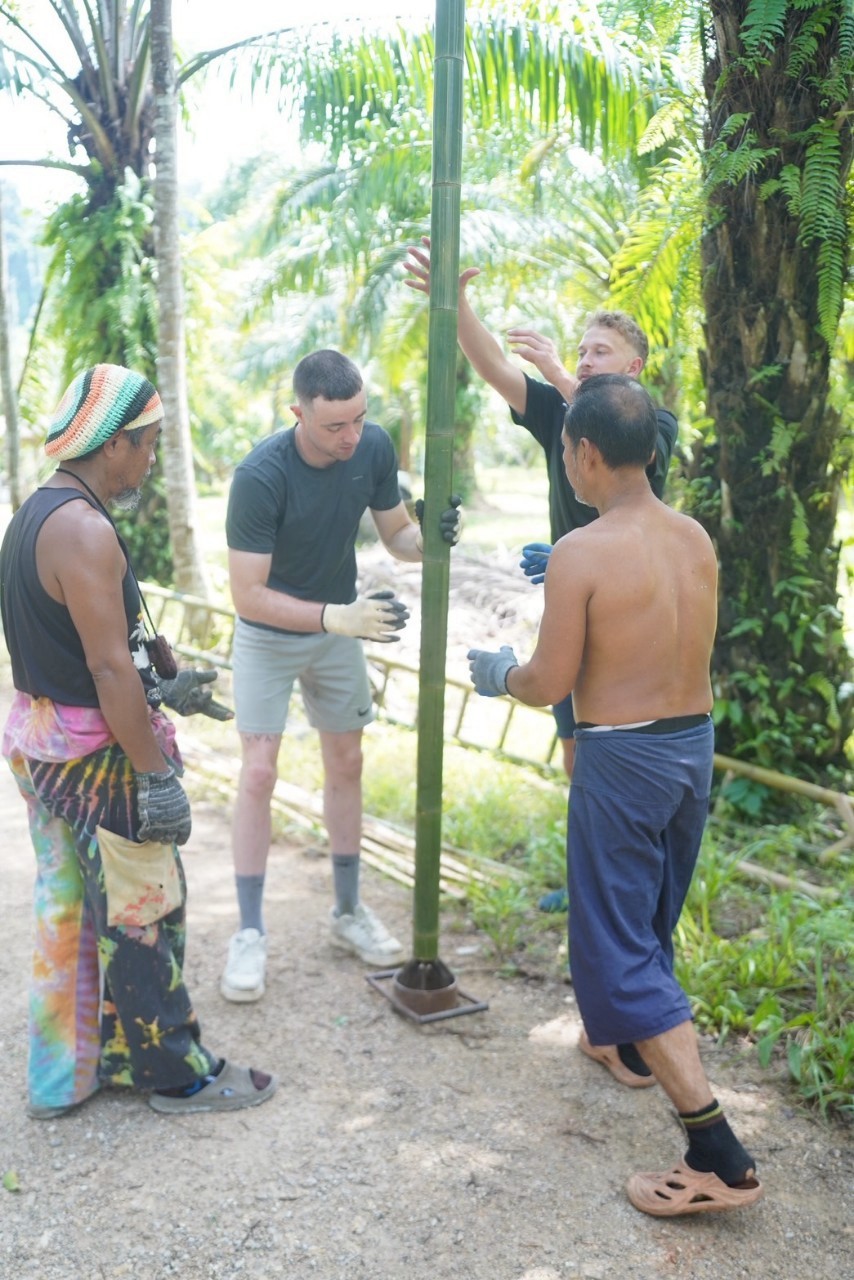
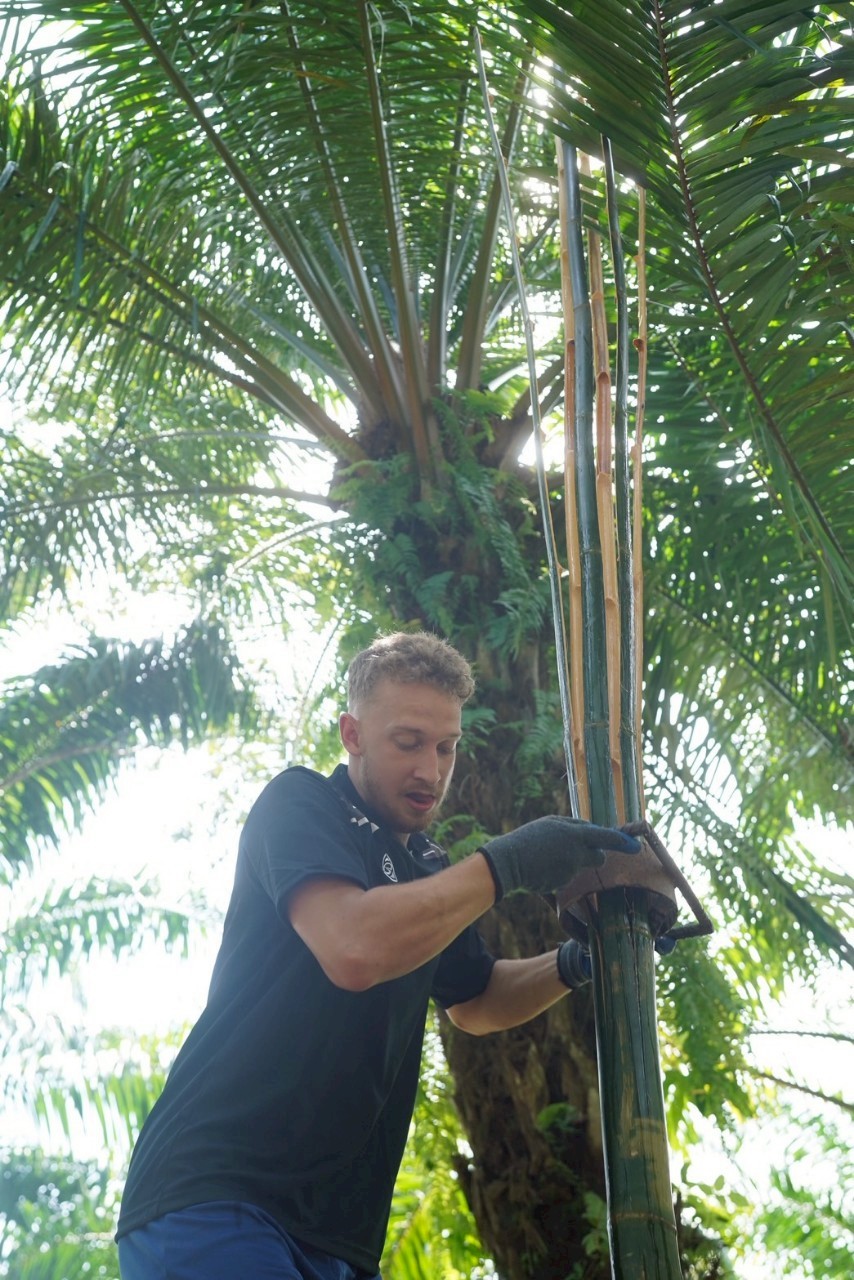
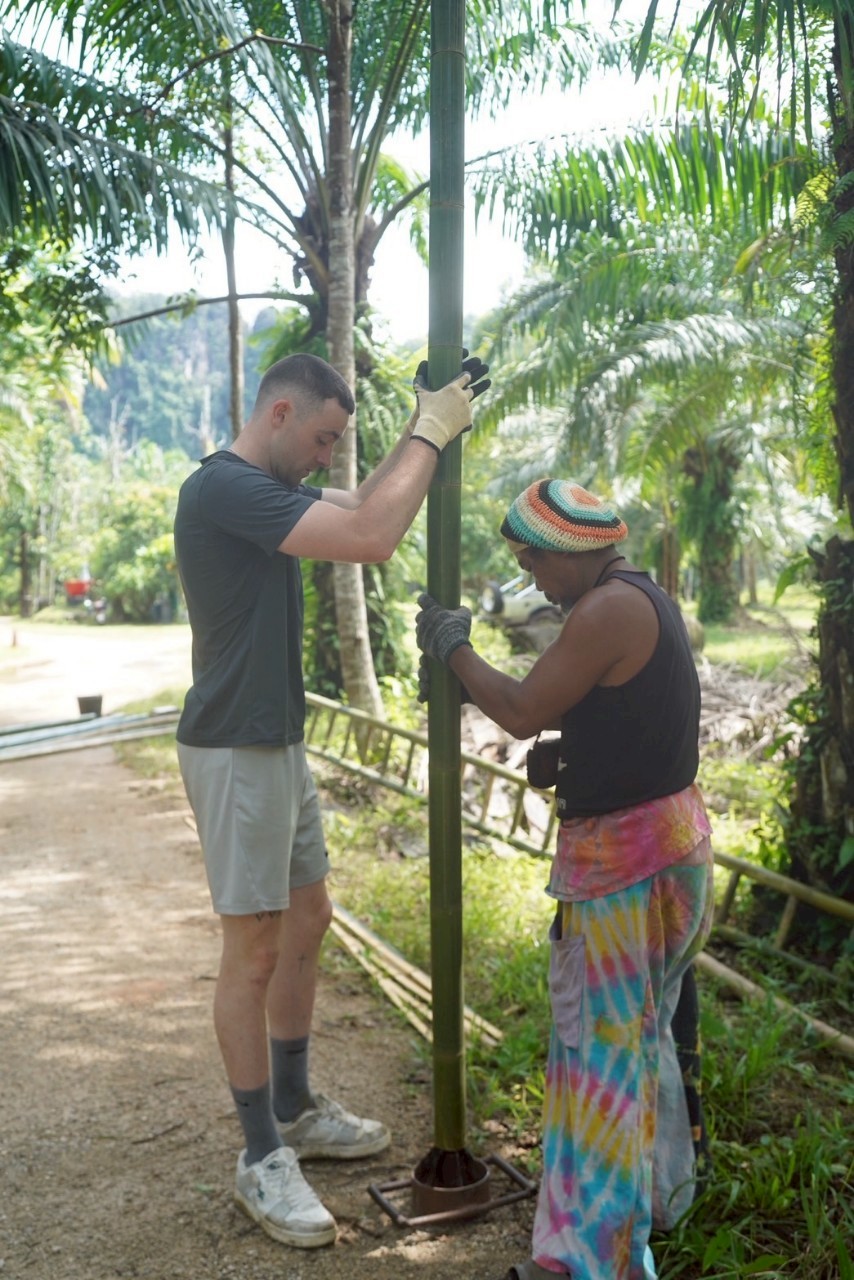
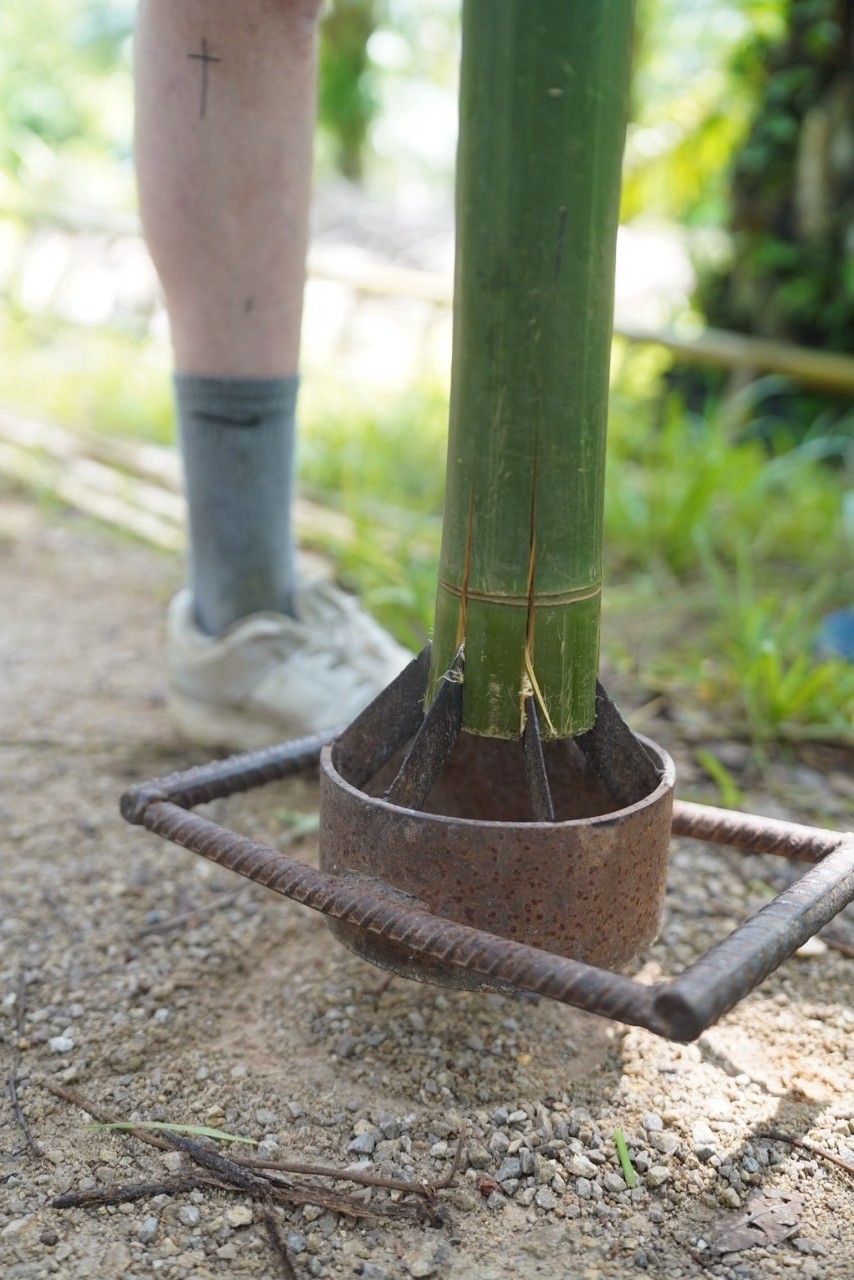
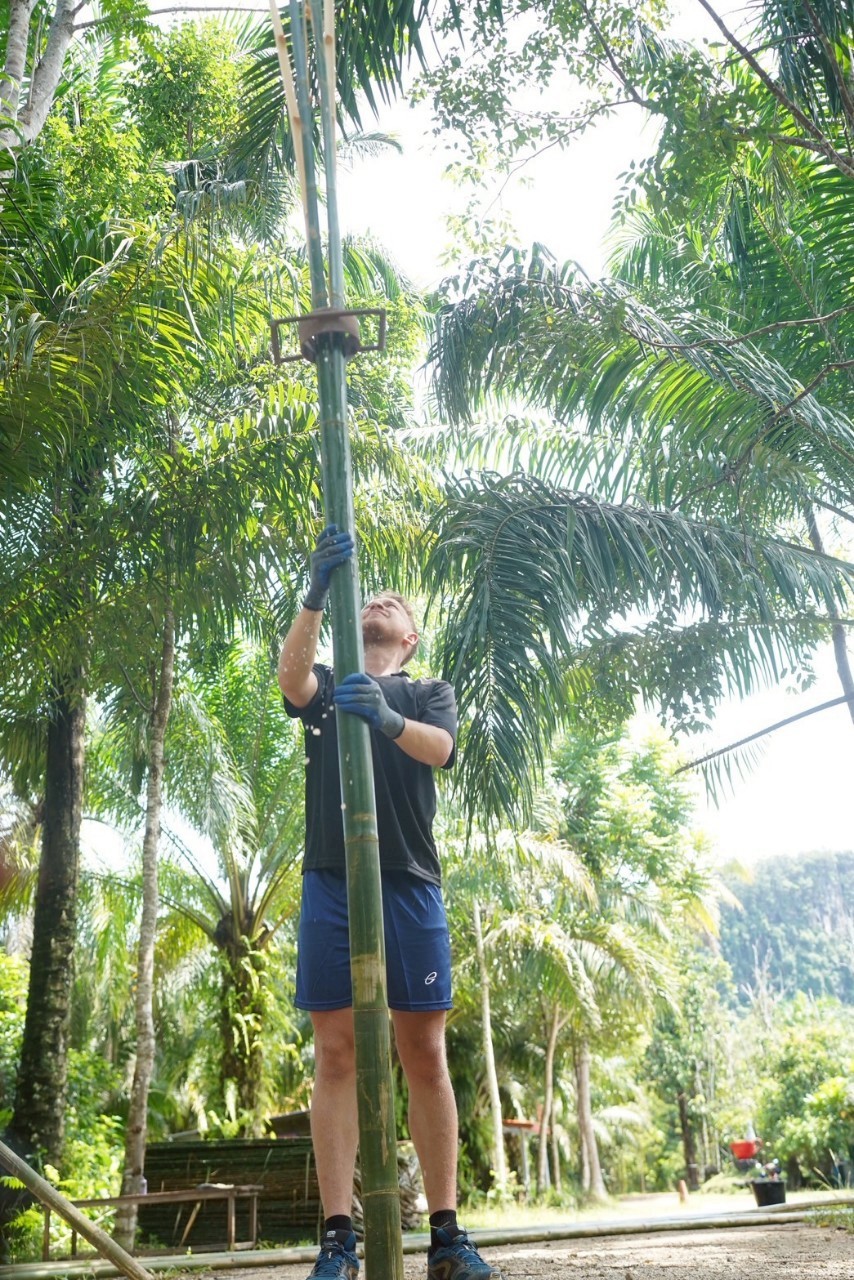

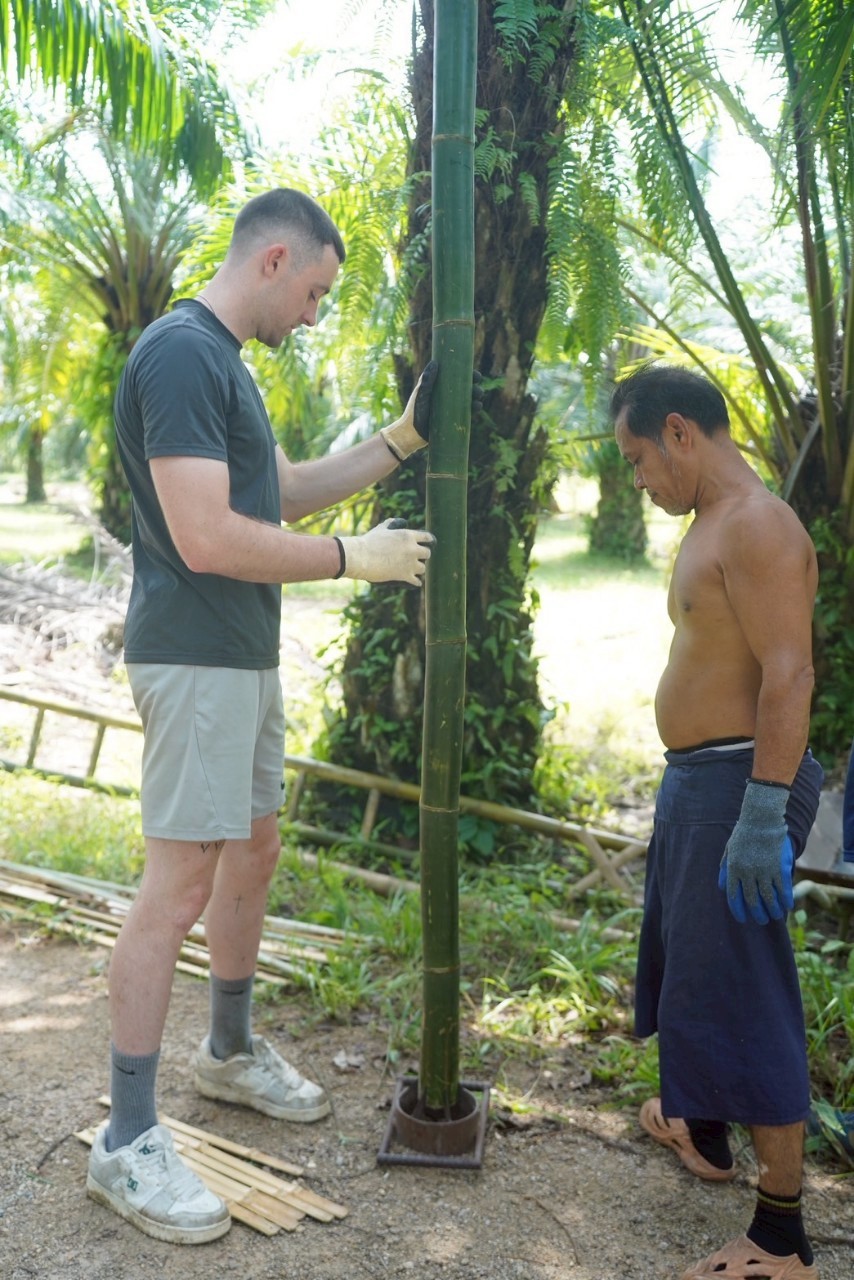
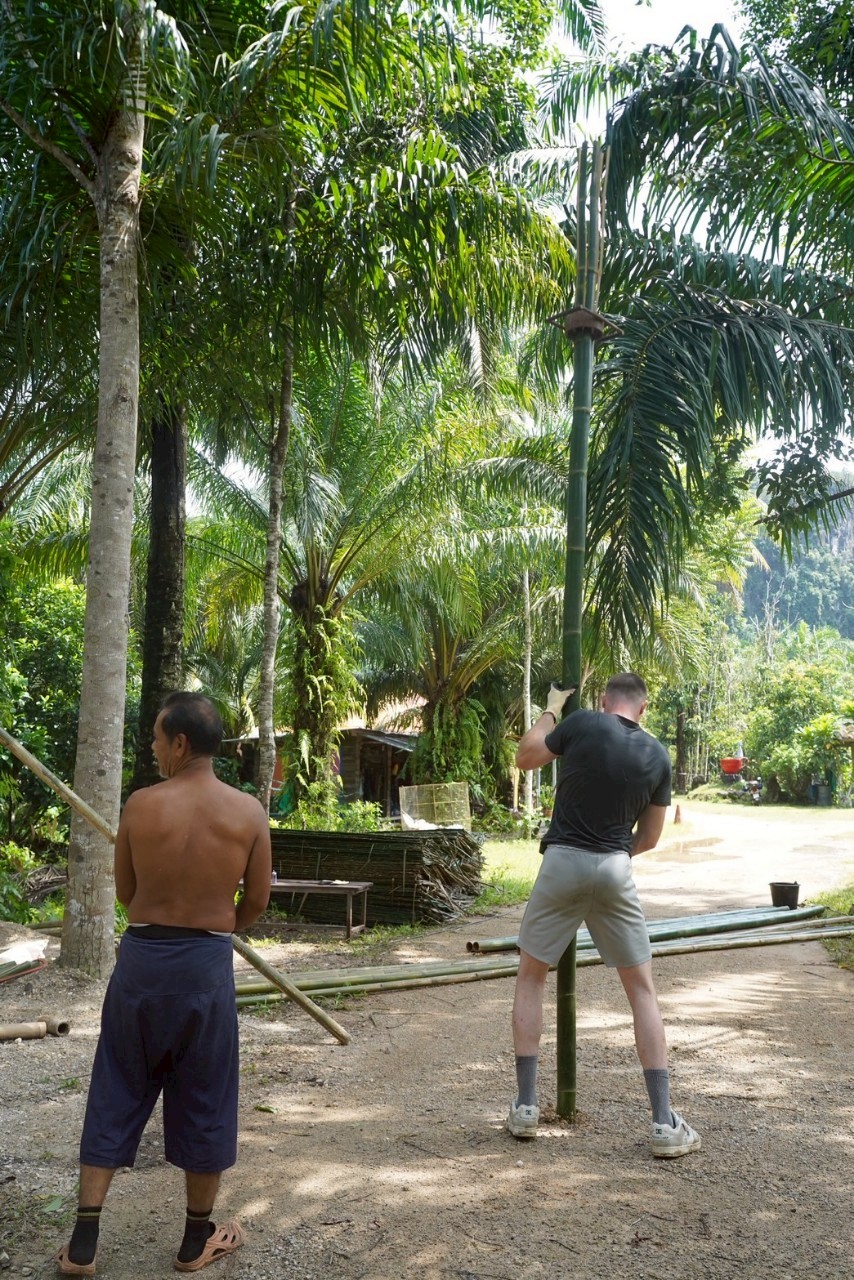
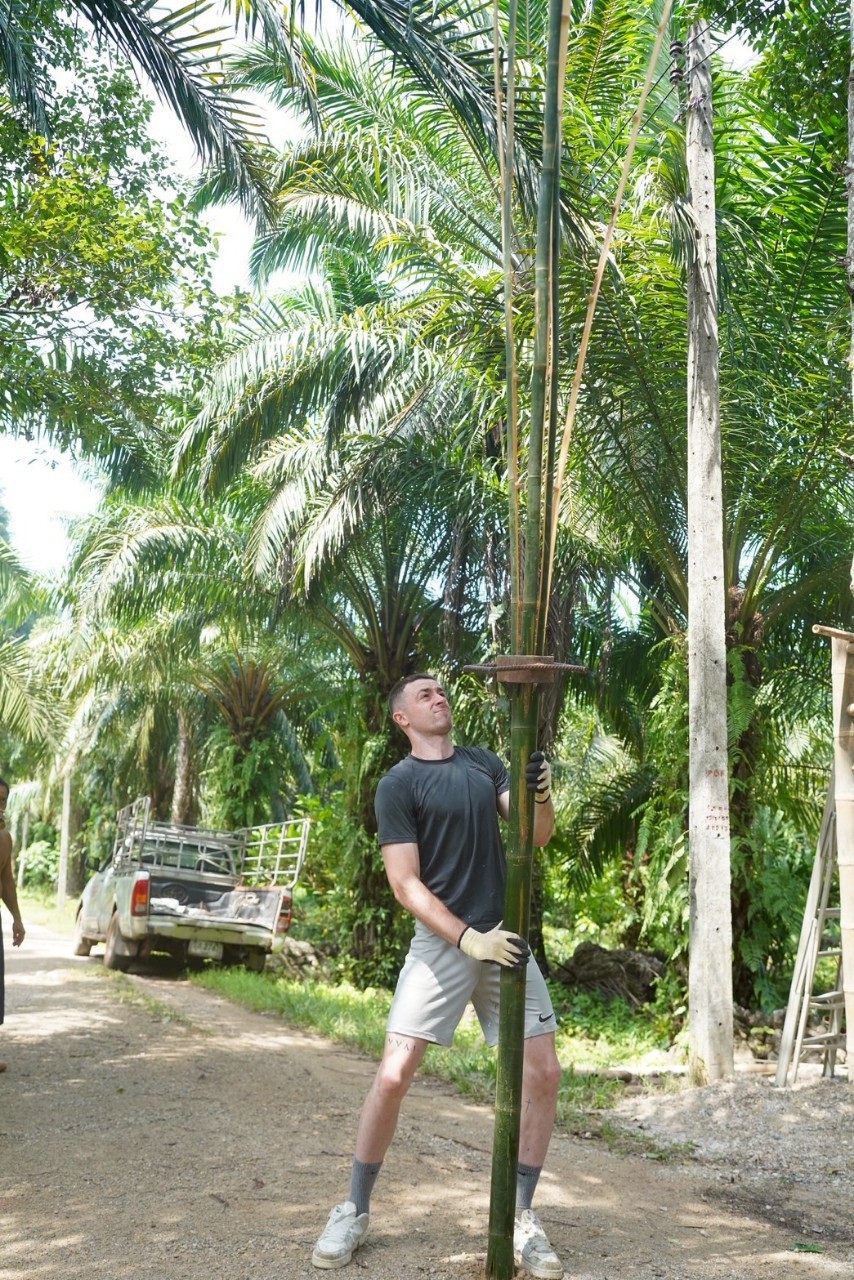
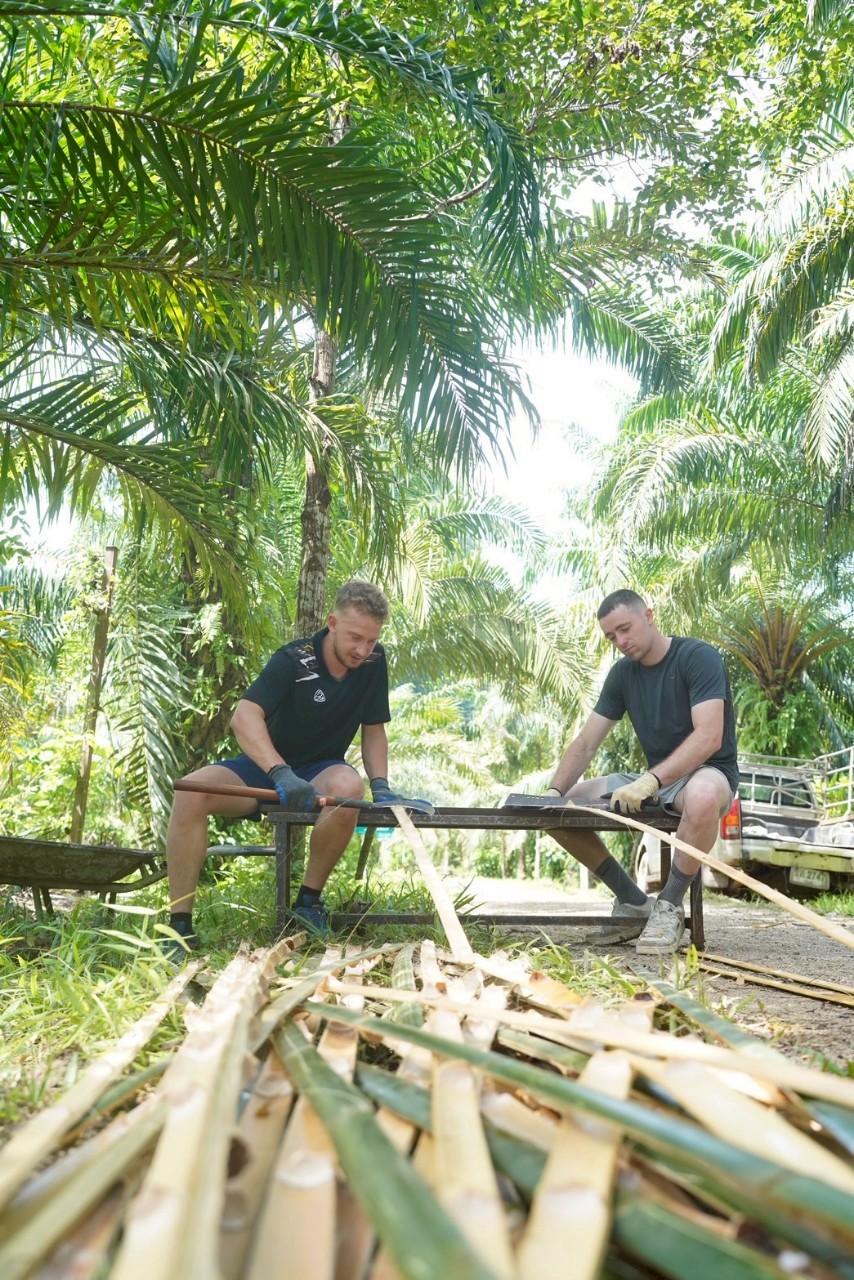

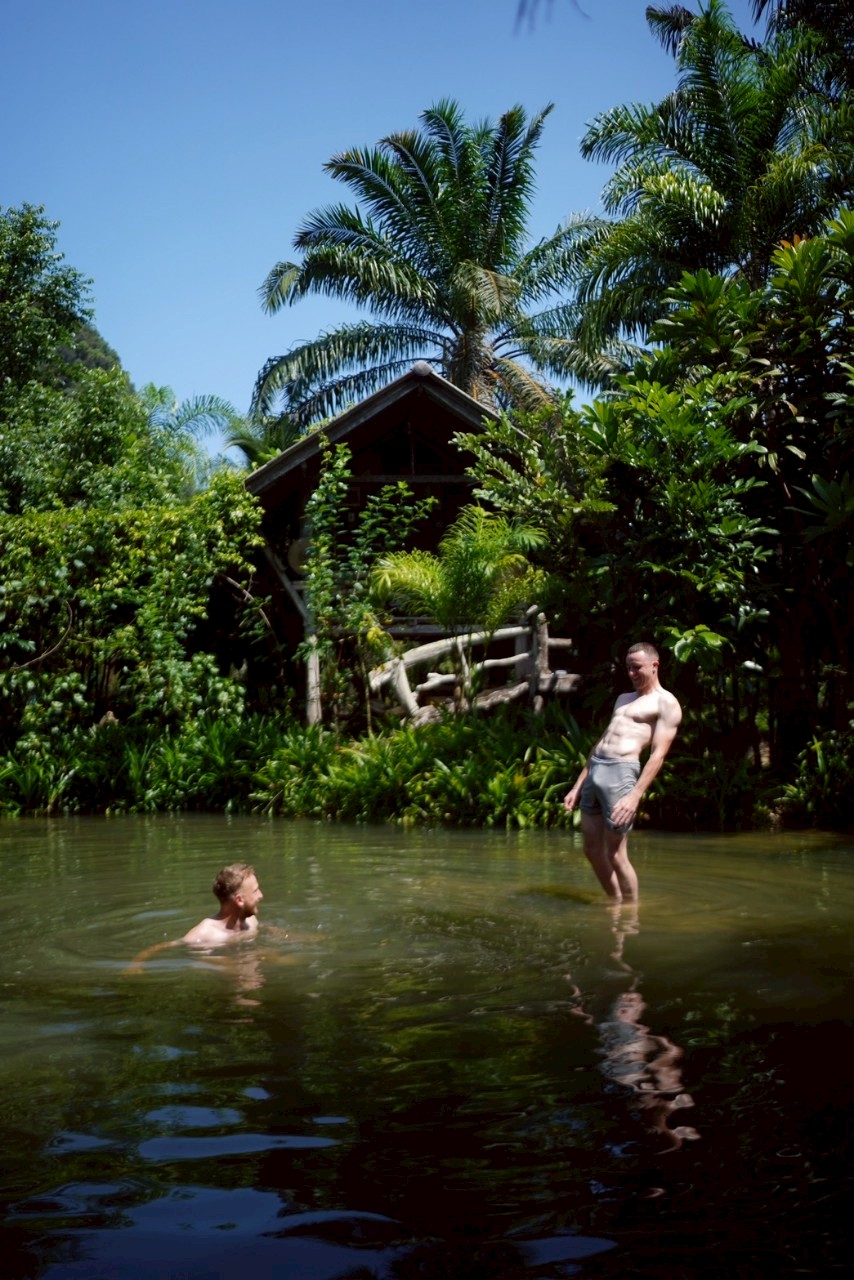
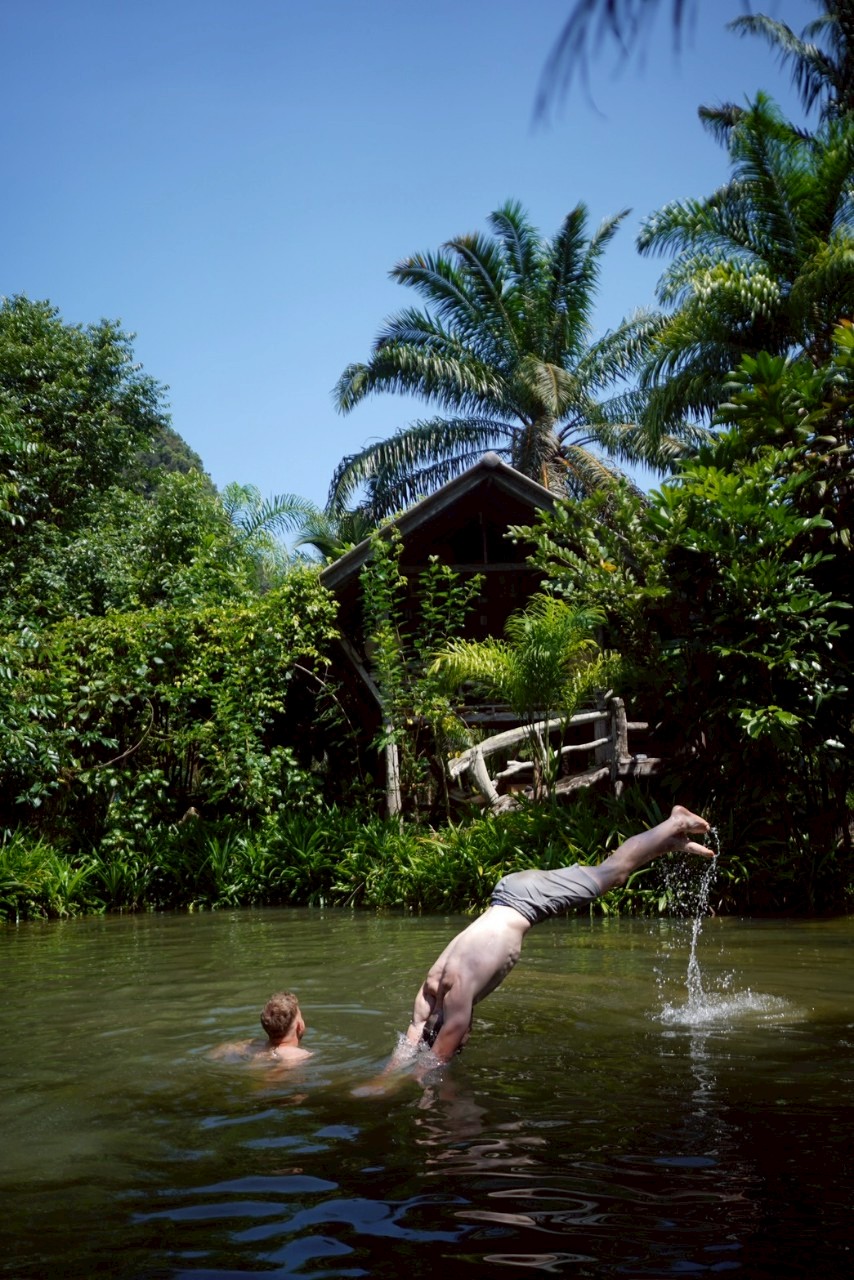

During the day, the students learned how to split bamboo into thin straps, then scrape and smooth them in preparation for weaving a solid roof base. These straps will serve to anchor the Nipa Palm sheets that will be installed in the coming days.
After lunch, we took a short break to visit the nearby national park where we came across a group of children from Tapput Primary School enjoying a field trip. The spontaneous cultural exchange between our French students and the local children brought smiles to both groups and added a joyful layer to our day.
Back at the site, with the afternoon heat settling in, our students took the opportunity to refresh themselves in the natural fishpond—a peaceful moment of connection with the surrounding environment before continuing their work.
Day 10 – Palm Preparation and Final Morning Before Departure
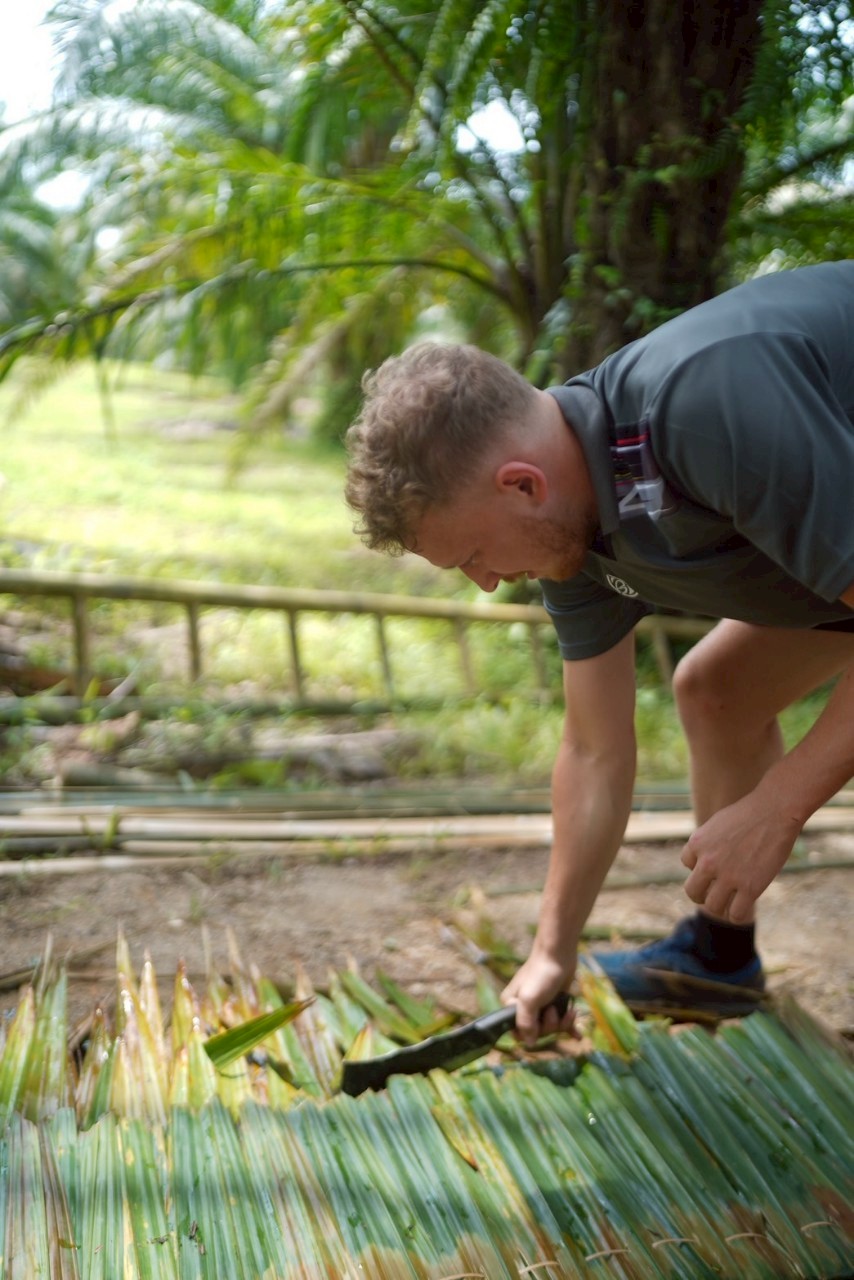

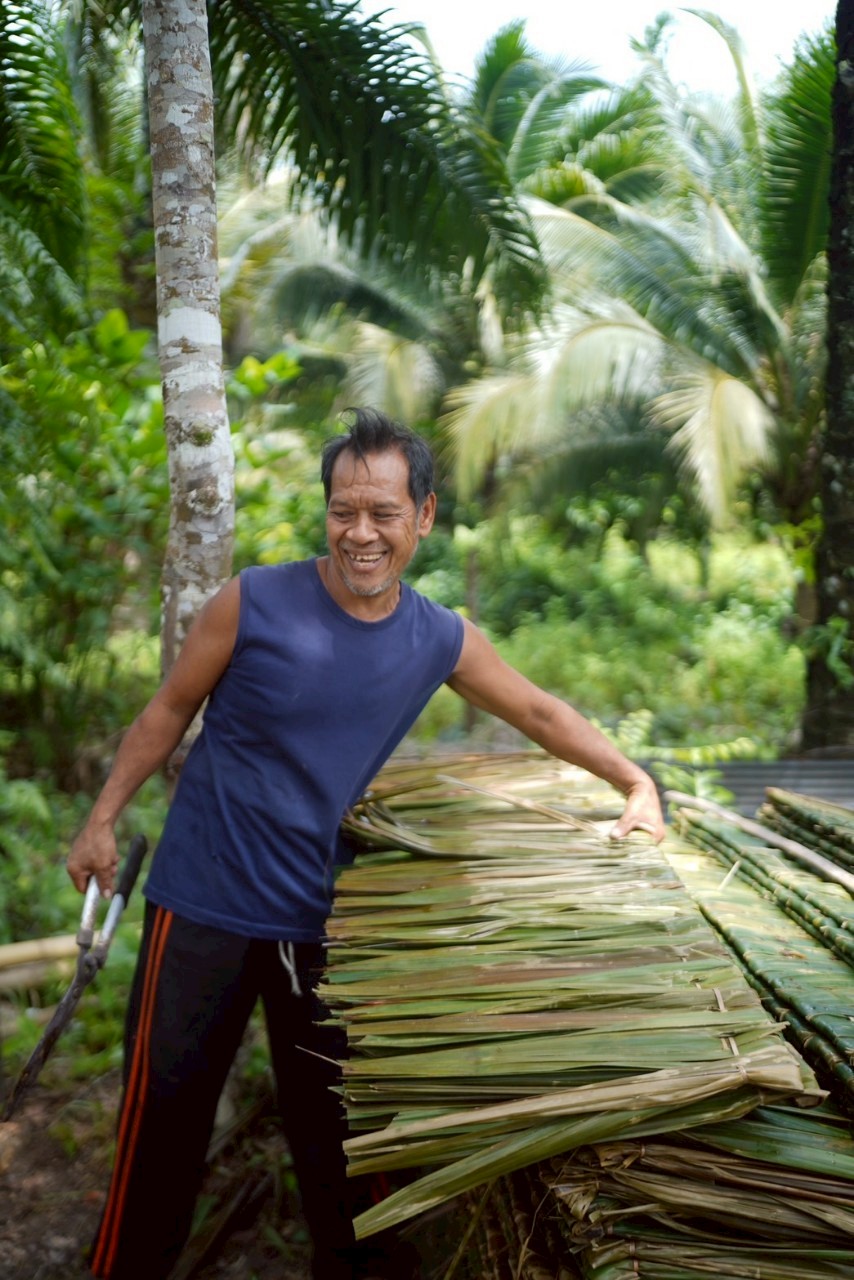

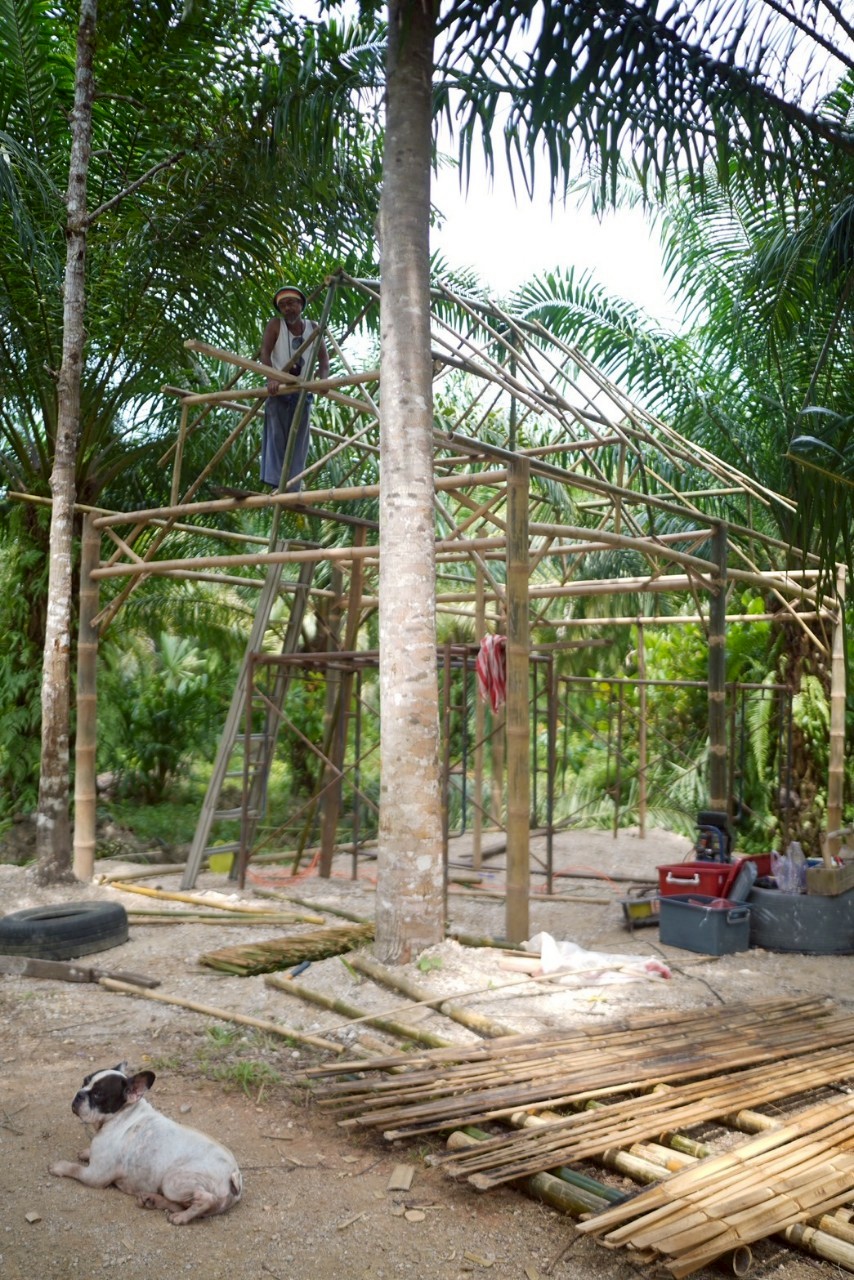
On Day 10, we had a short morning session before the students left for their trip to Malaysia in the afternoon. The focus was on preparing the Nipa Palm sheets. The students cut and trimmed the dried palm leaves to ensure the layers were even and uniform for roofing. While they worked on this task, Bang Ree and Chaiyut continued assembling the bamboo frame of the roof, steadily following the architectural design. Even in a short session, progress was visible, and teamwork between locals and students remained strong.
Looking Ahead
Next week, we will move forward with fixing the Nipa Palm sheets to complete the roof. Stay tuned as the outdoor kitchen continues to take shape—one natural material at a time.
🌿 Week 4: Eco-Construction Report (Days 11–13)
Day 11: Roof Structure Completed & First Time on the Roof
This day marked a significant milestone in the construction: the completion of the bamboo roof structure. It was the first time the students were invited to climb up onto the roof. Prior to that, Bang Ree, our bamboo expert, ensured the safety and strength of the structure by finalizing the setup himself.
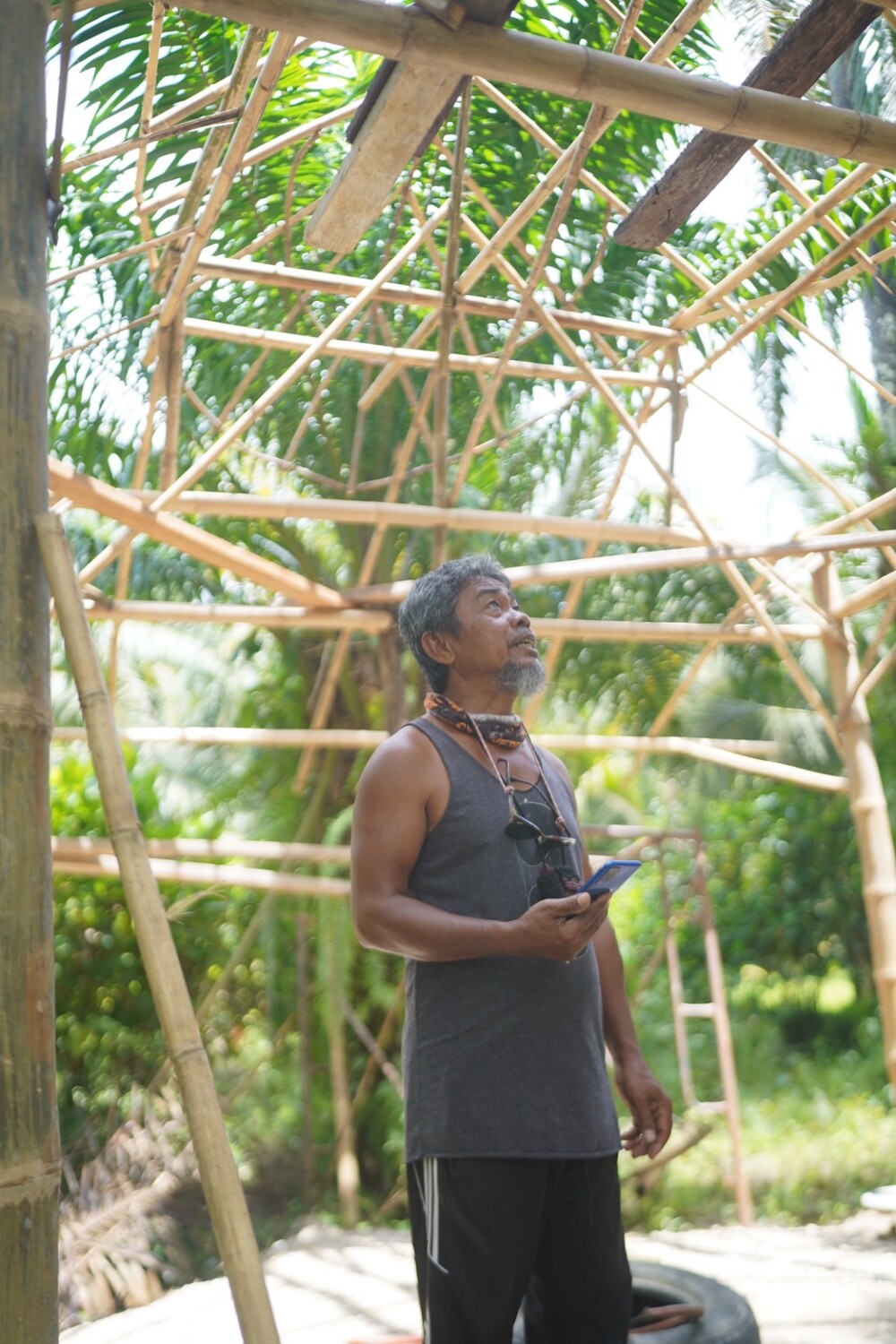
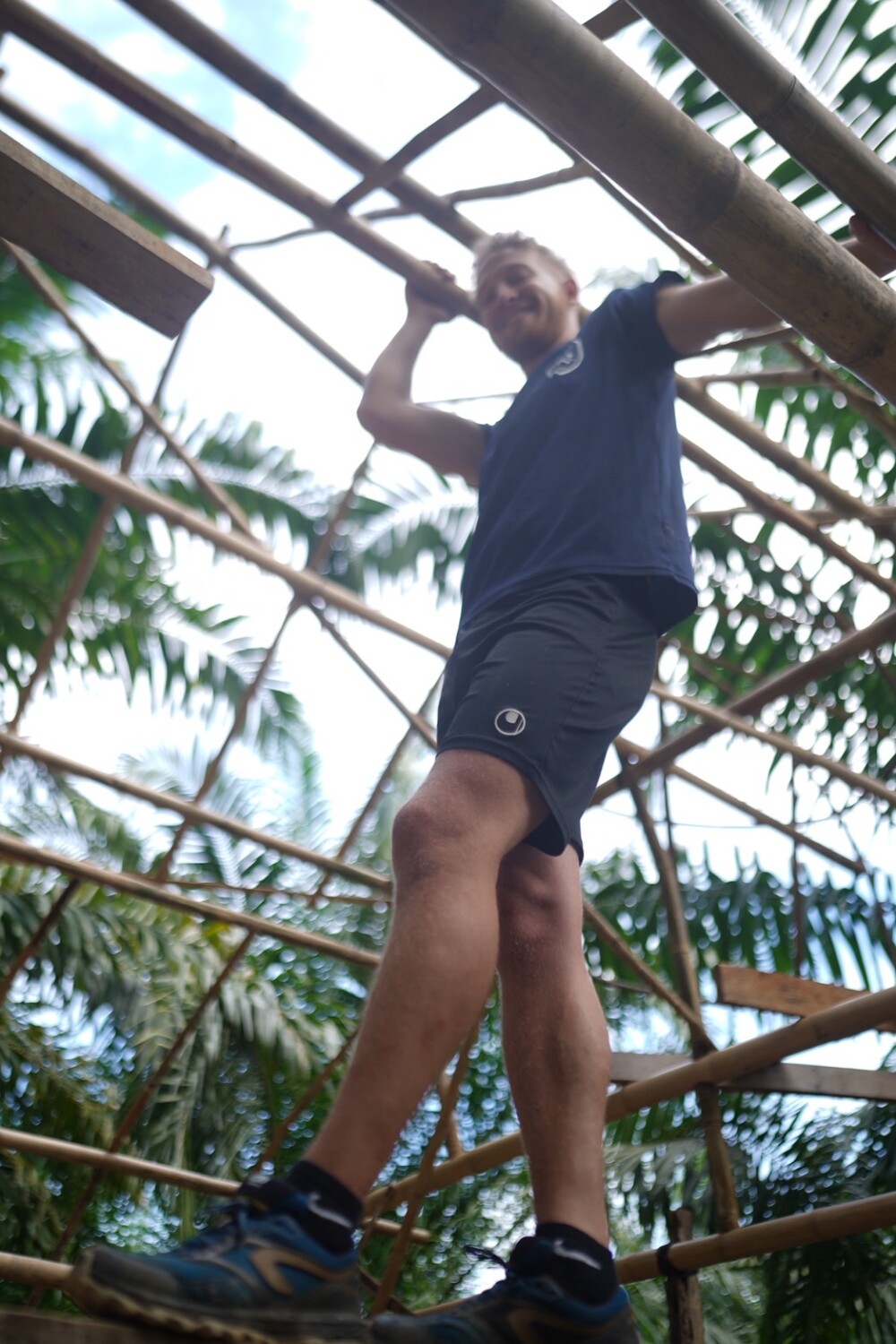
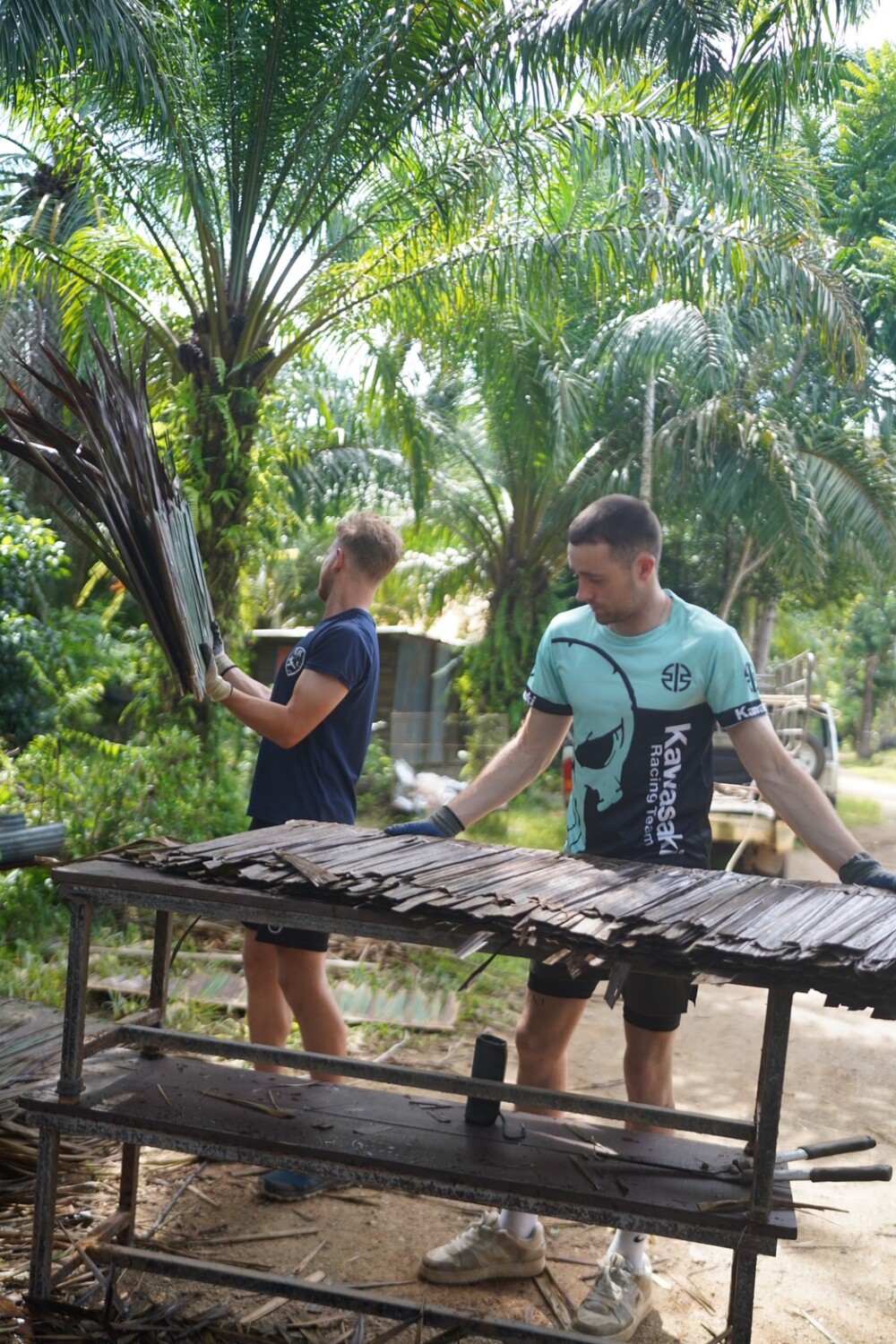
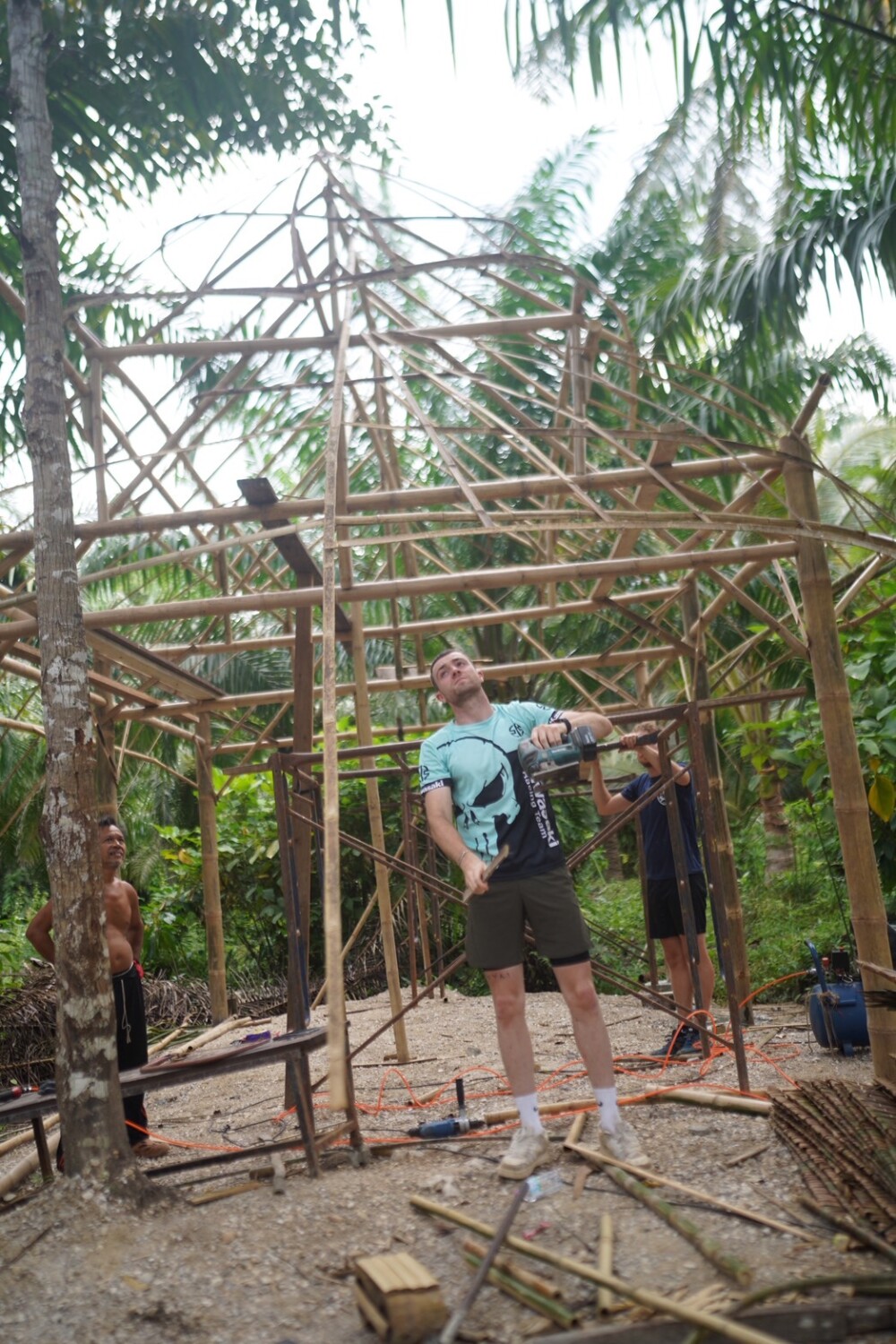
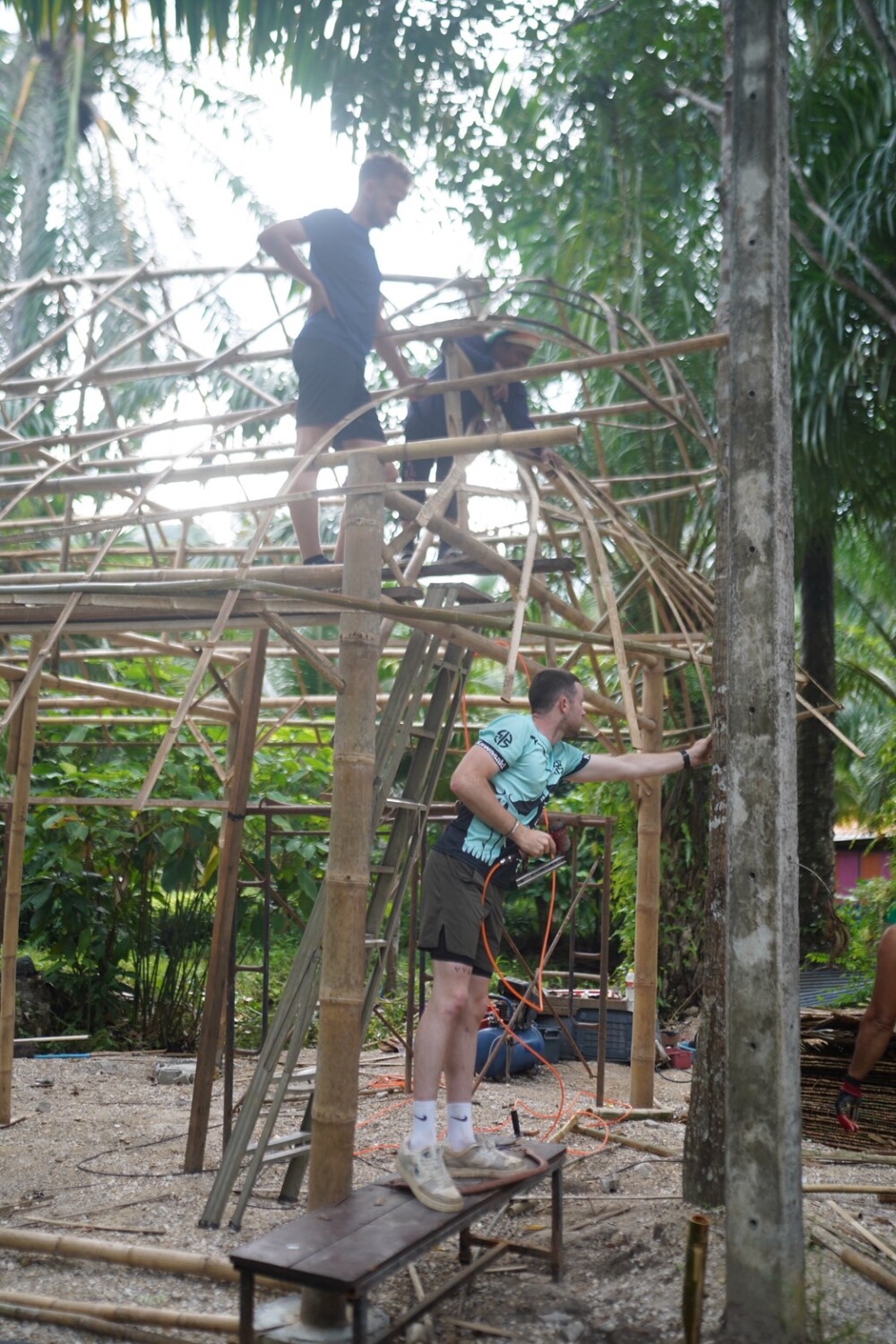

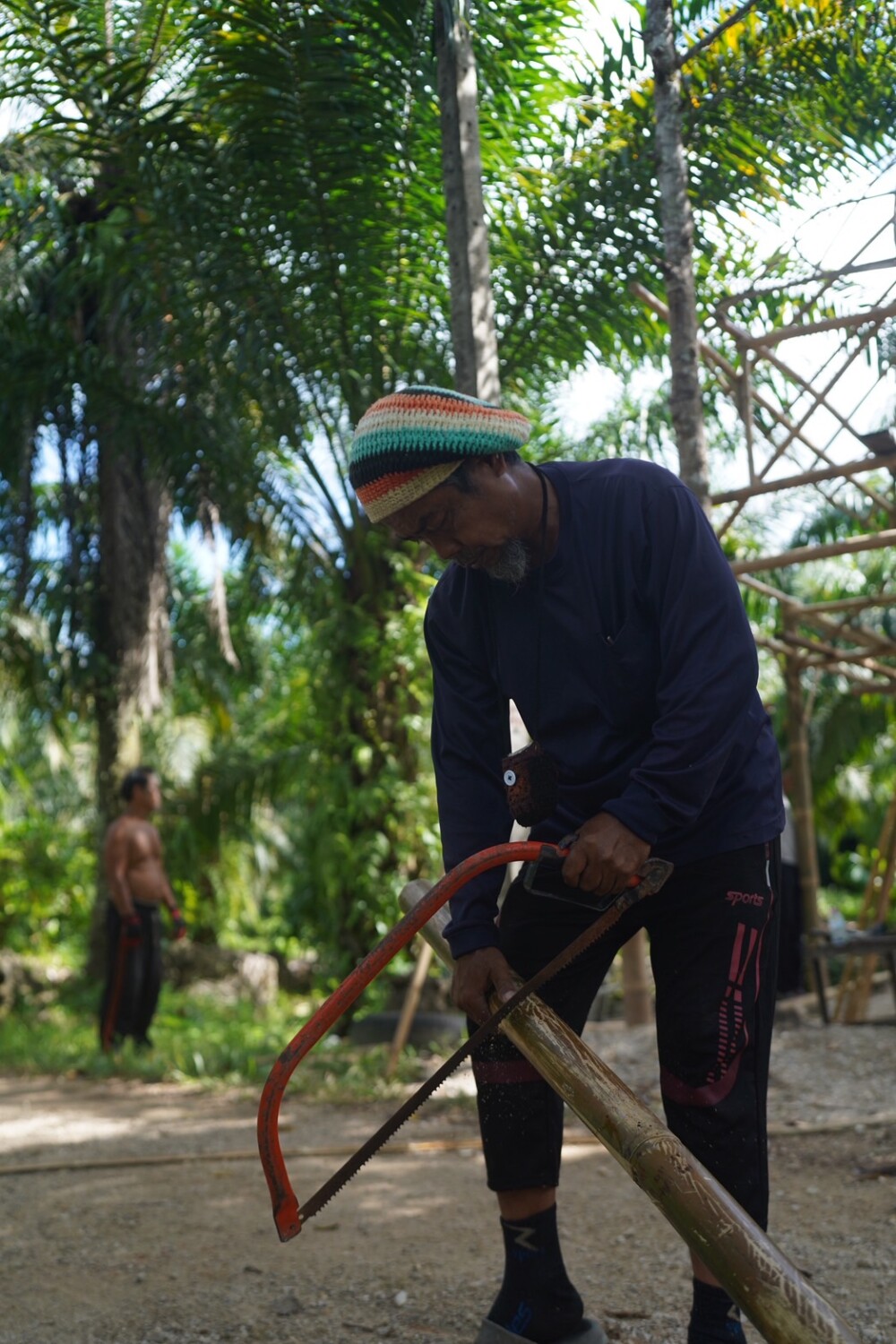
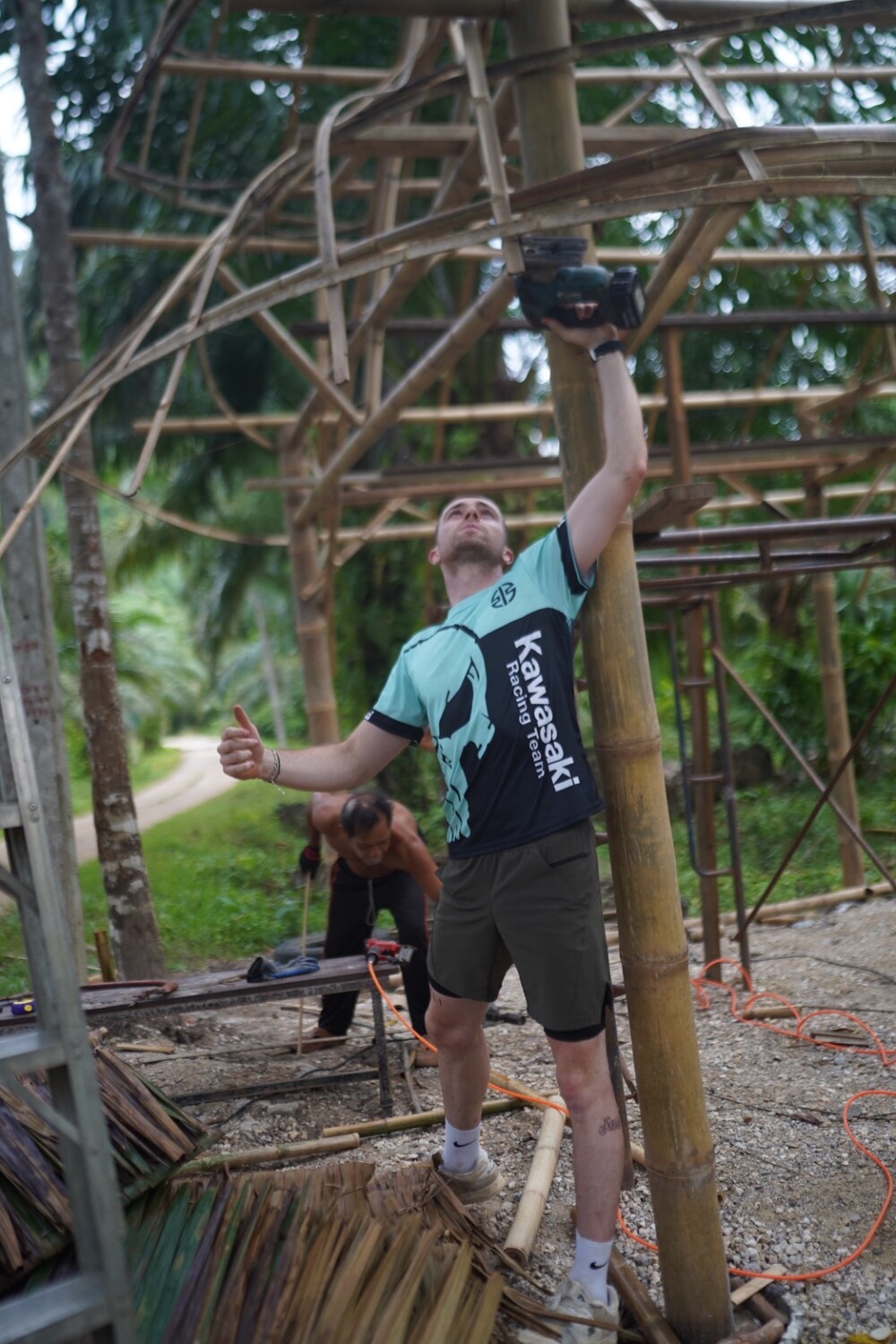
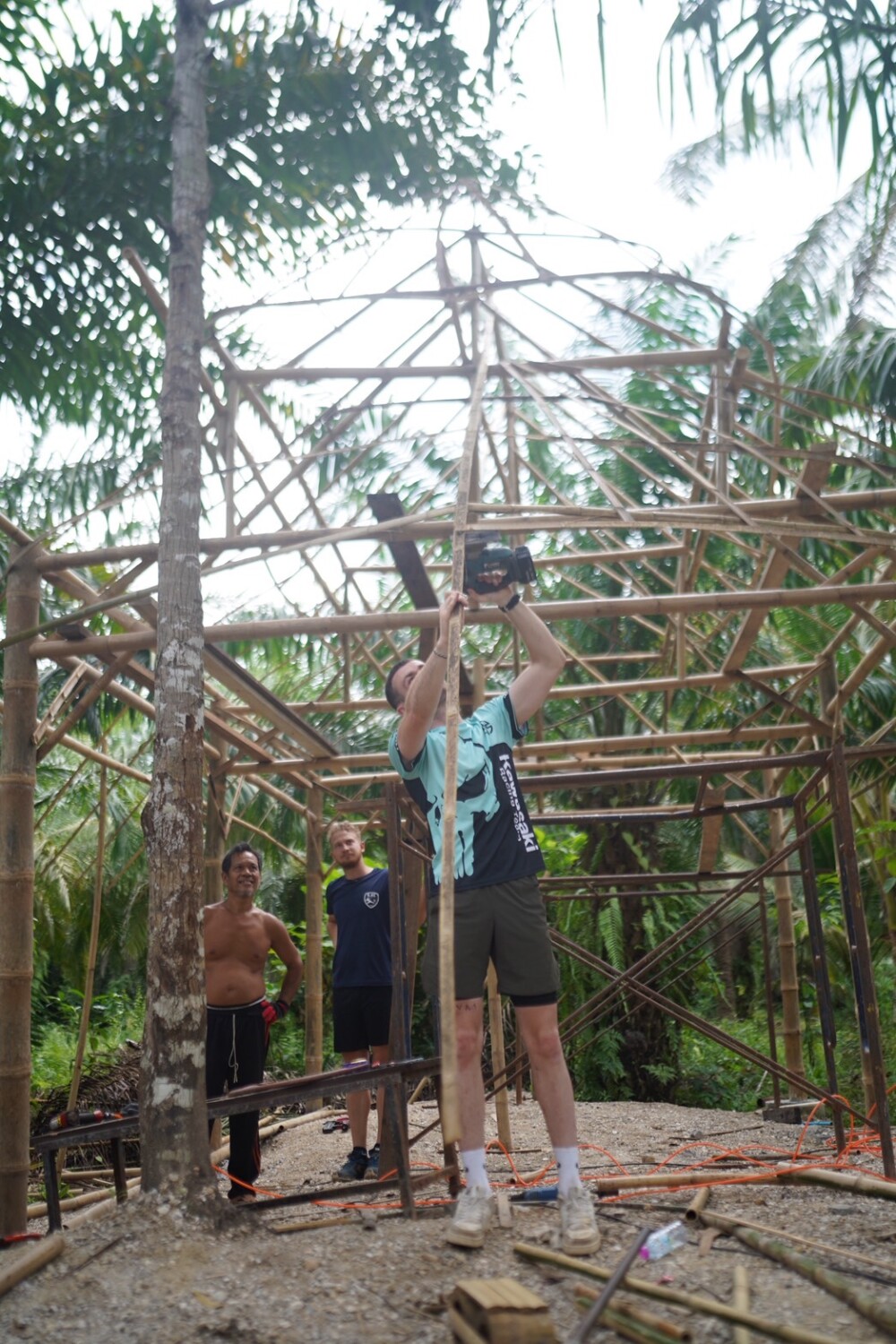
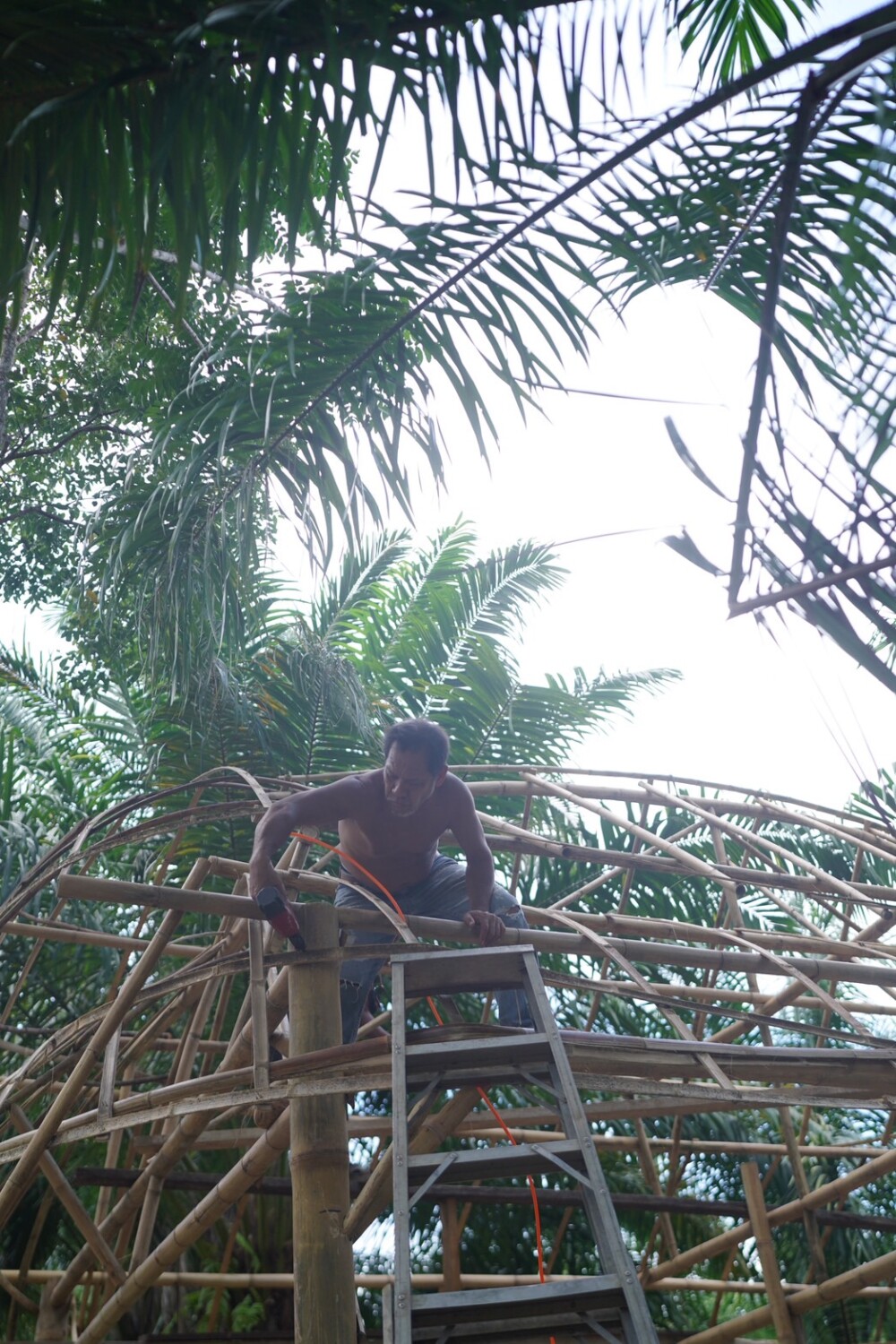
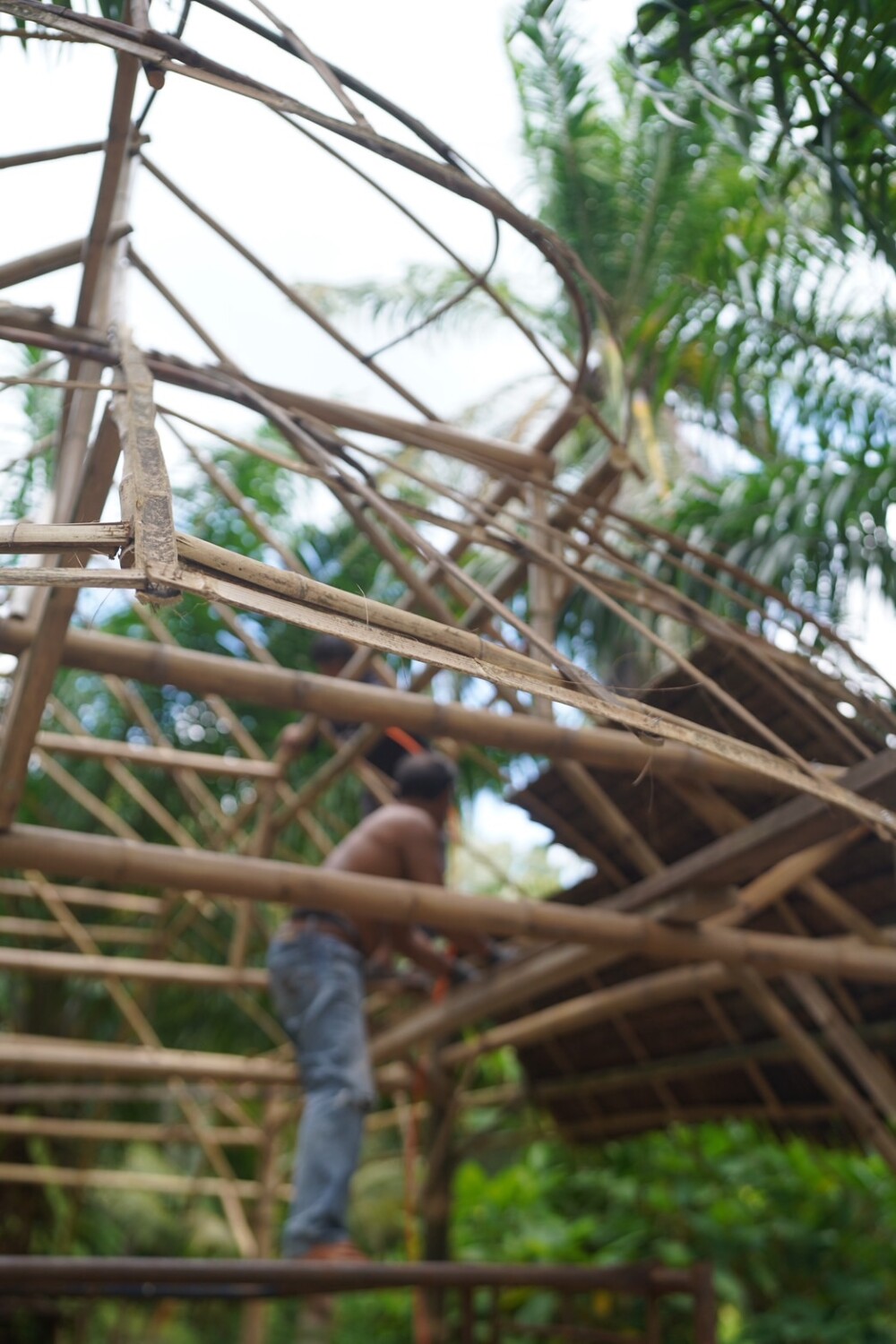
Once secure, he called the students to join him to complete the final step—adjusting the bamboo straps to the correct length. This important phase prepared the roof to receive the Nipa Palm sheets. It was also a valuable learning opportunity, as the students had to maintain balance while moving and working on the elevated bamboo frame. They also practiced using new tools like the electric saw. The experience gave them both confidence and technical skill in natural roofing techniques.

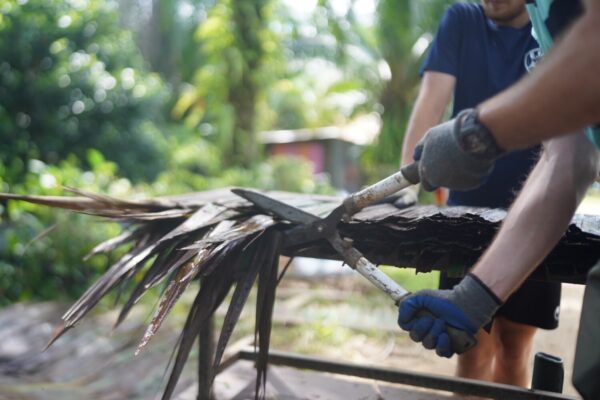


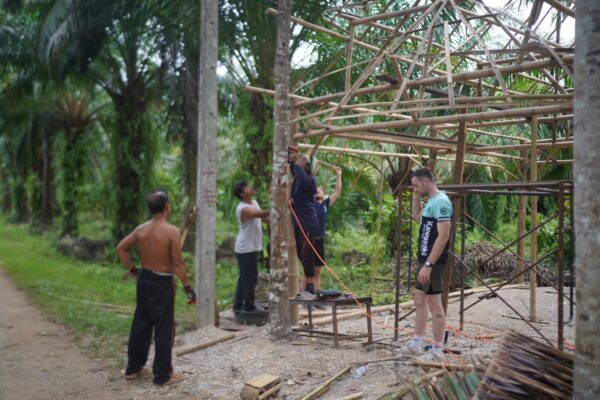

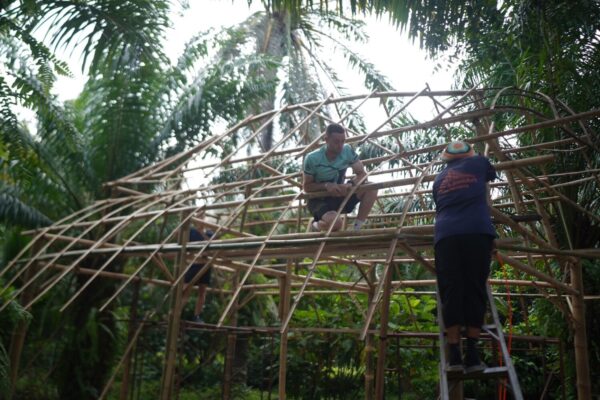
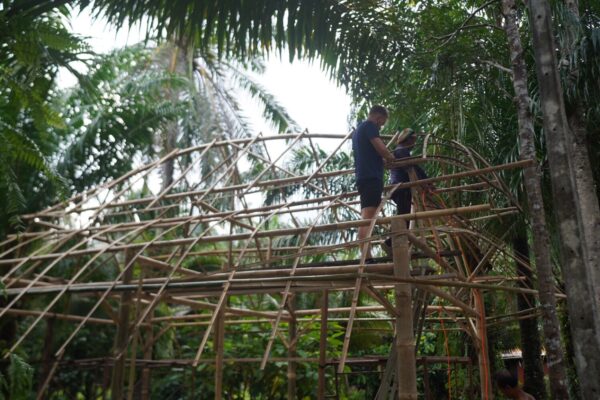
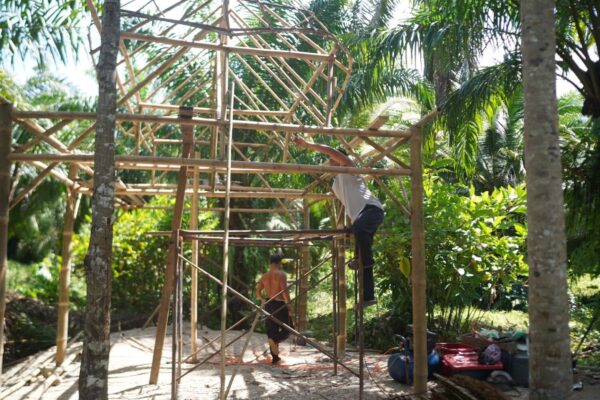
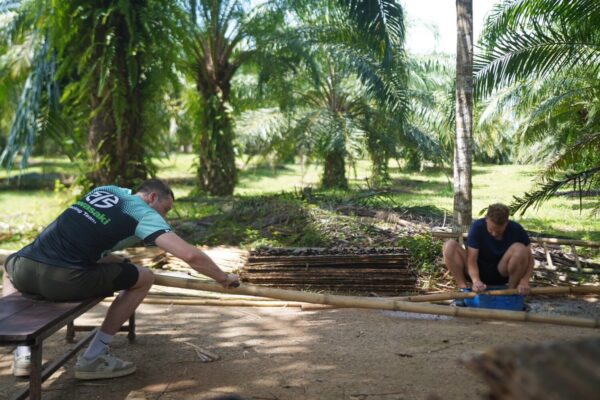
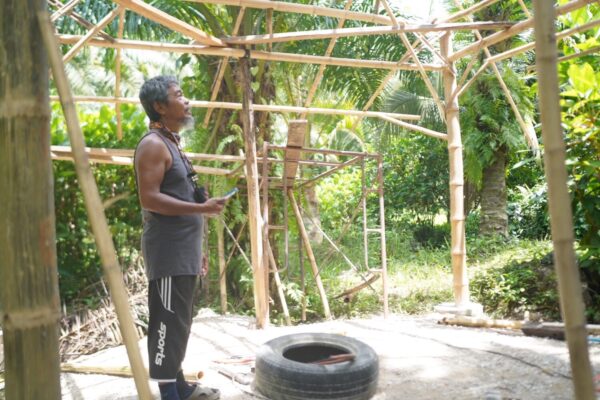
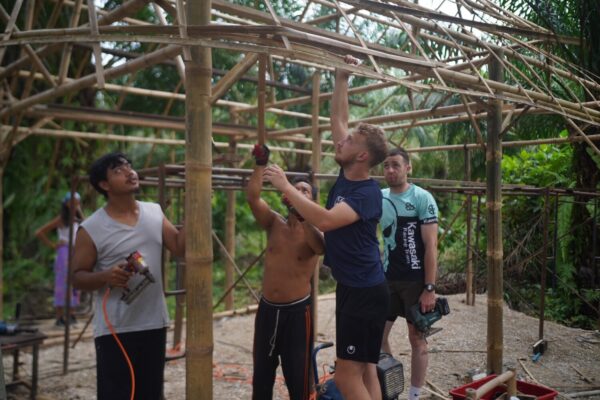
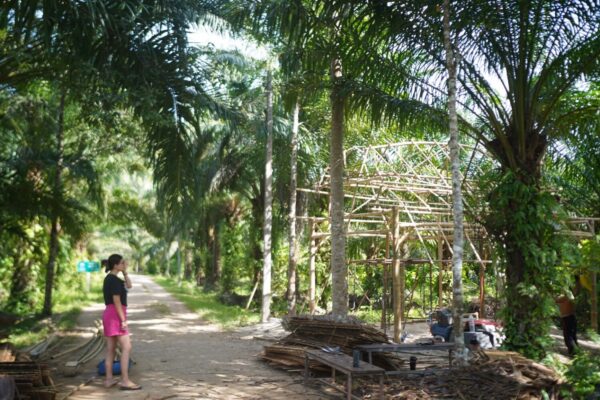


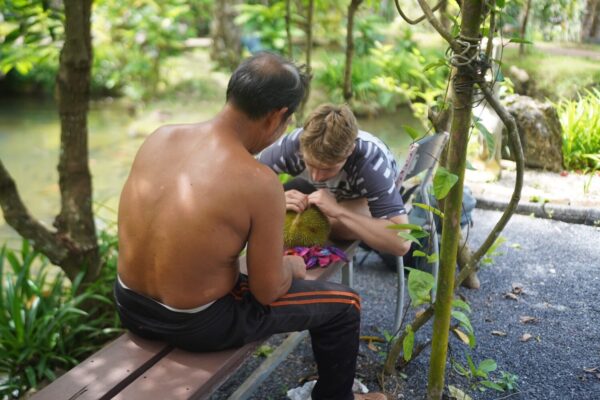
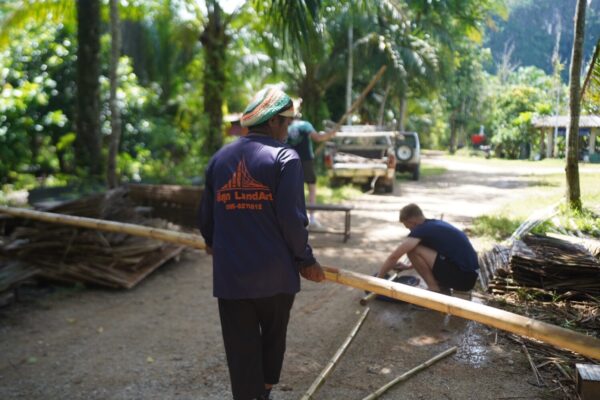
Day 12: Teamwork, Language Exchange & Nipa Palm Installation
Friday was filled with teamwork, cultural exchange, and plenty of laughter. The students, now comfortable moving around on the roof, began installing the Nipa Palm sheets alongside Bang Ree and Chaiyut. The process required clear coordination, and although the team faced a language barrier—speaking Thai, English, and French—they quickly adapted by learning key words from each other’s languages.
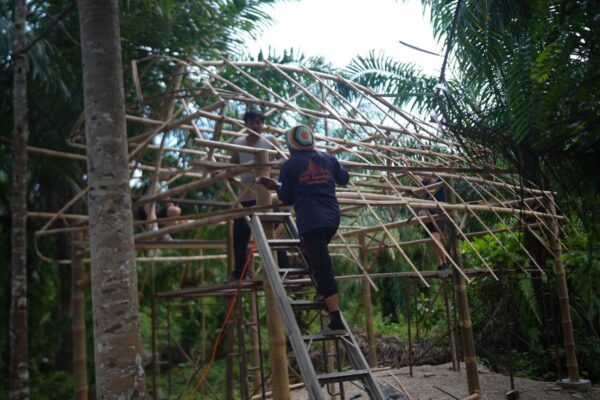
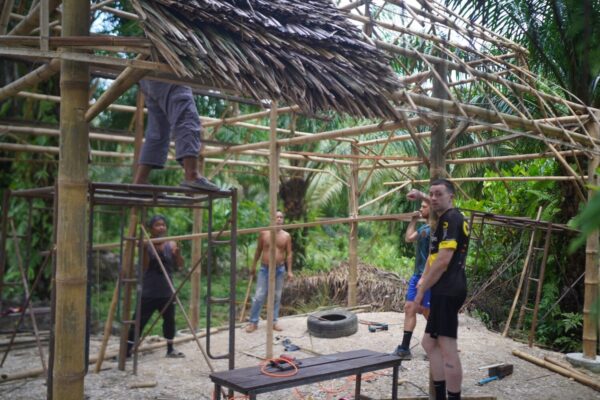

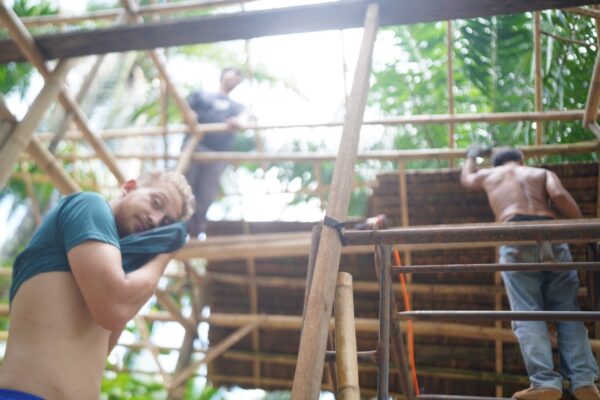
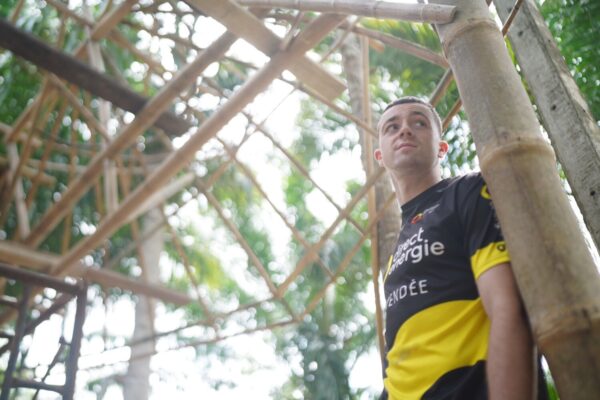
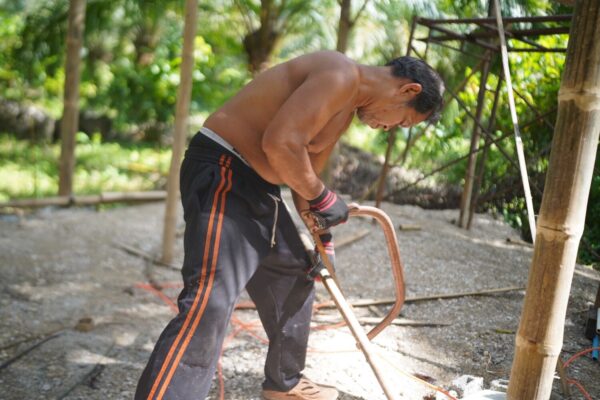
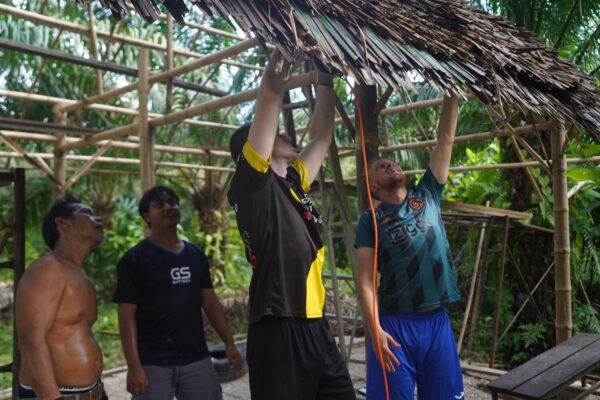

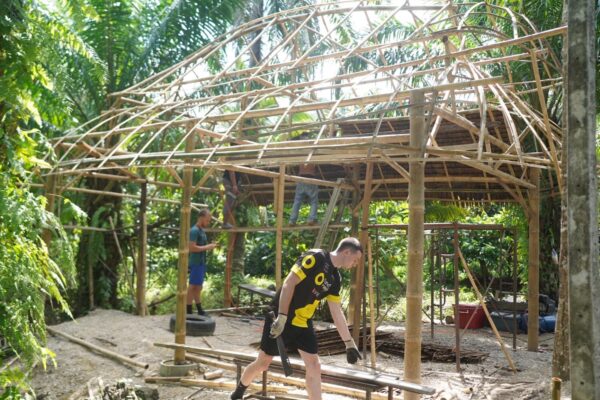
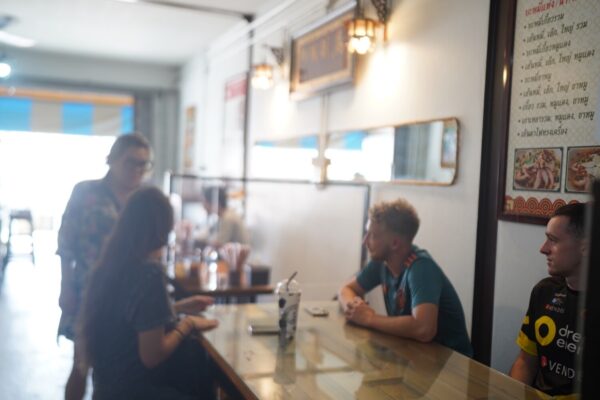
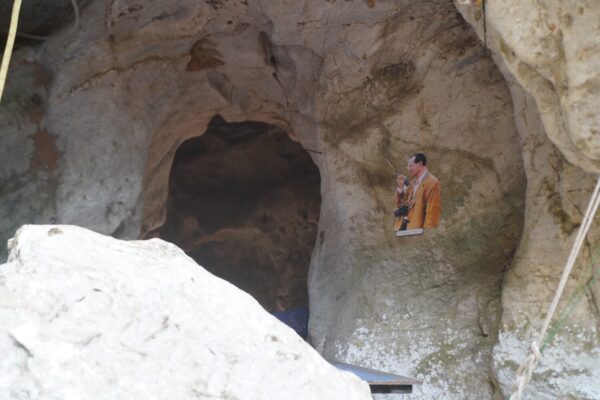
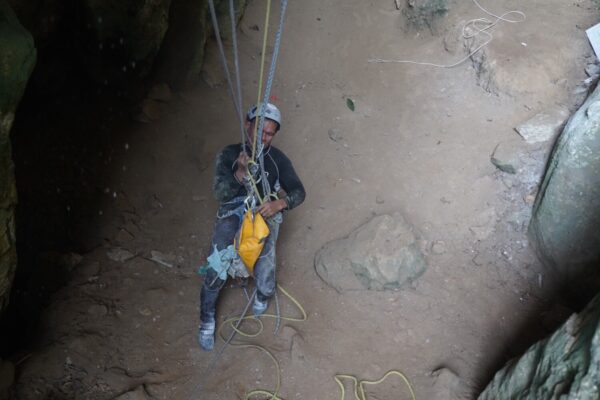
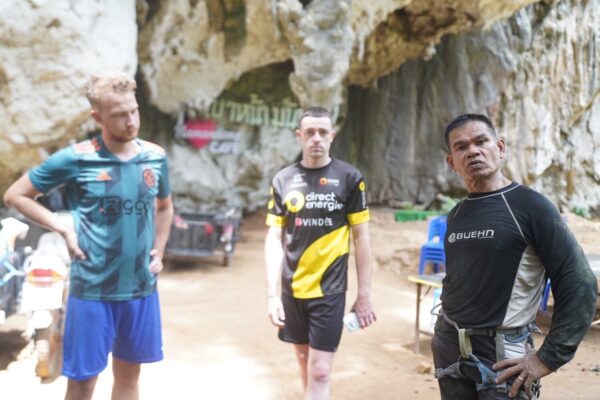
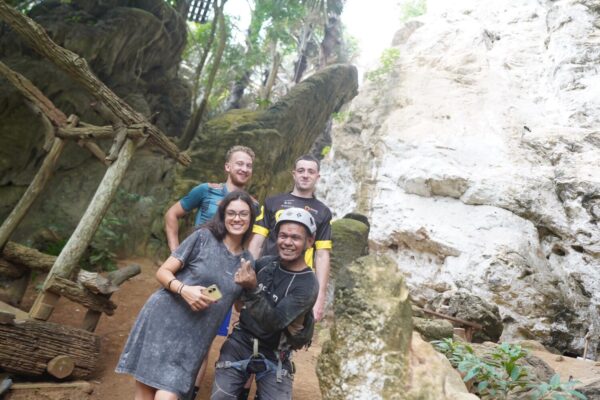
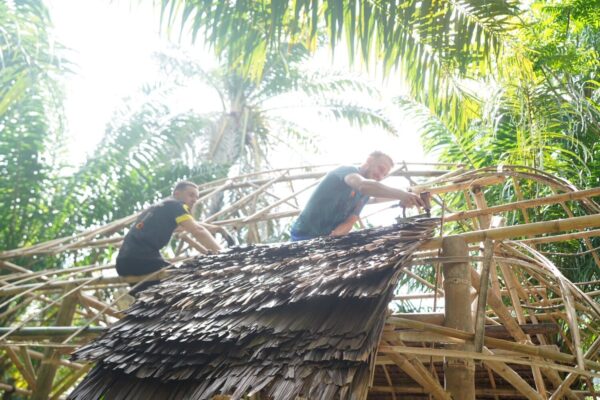

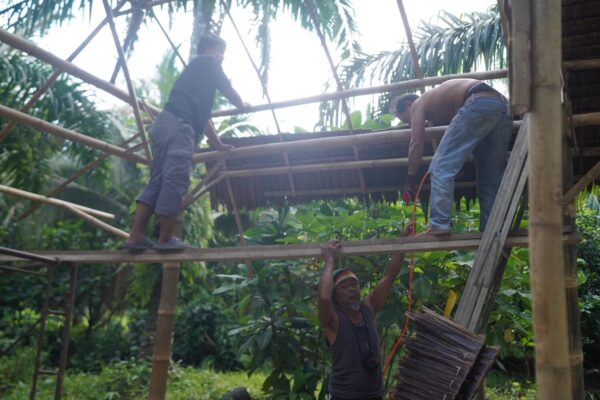
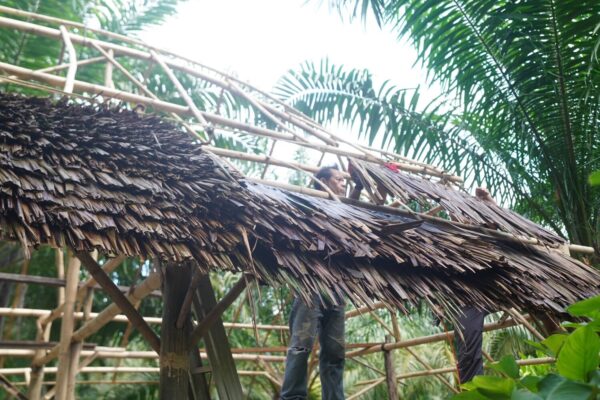

The task involved a fluid handoff: one student passed a Nipa Palm sheet to Bang Ree, who then passed it to another student on the roof. That student would then staple it in place following Chaiyut’s directions from below. To work efficiently, everyone learned practical vocabulary like “up,” “down,” and “shoot” in English, while the students practiced Thai words like “Sai” (left), “Kwa” (right), and “Jark” (Nipa Palm). This collaborative learning experience made the process smooth, and fun moments were shared throughout the day.
Interestingly, the difference in height between the students and our Thai instructors also turned out to be a big help. The students, being taller, found it easier to reach and staple the Nipa Palm sheets while working on the roof. This made the teamwork even more efficient and highlighted how everyone brought unique strengths to the project. The shared learning, mutual respect, and adaptability created the perfect atmosphere of collaboration.
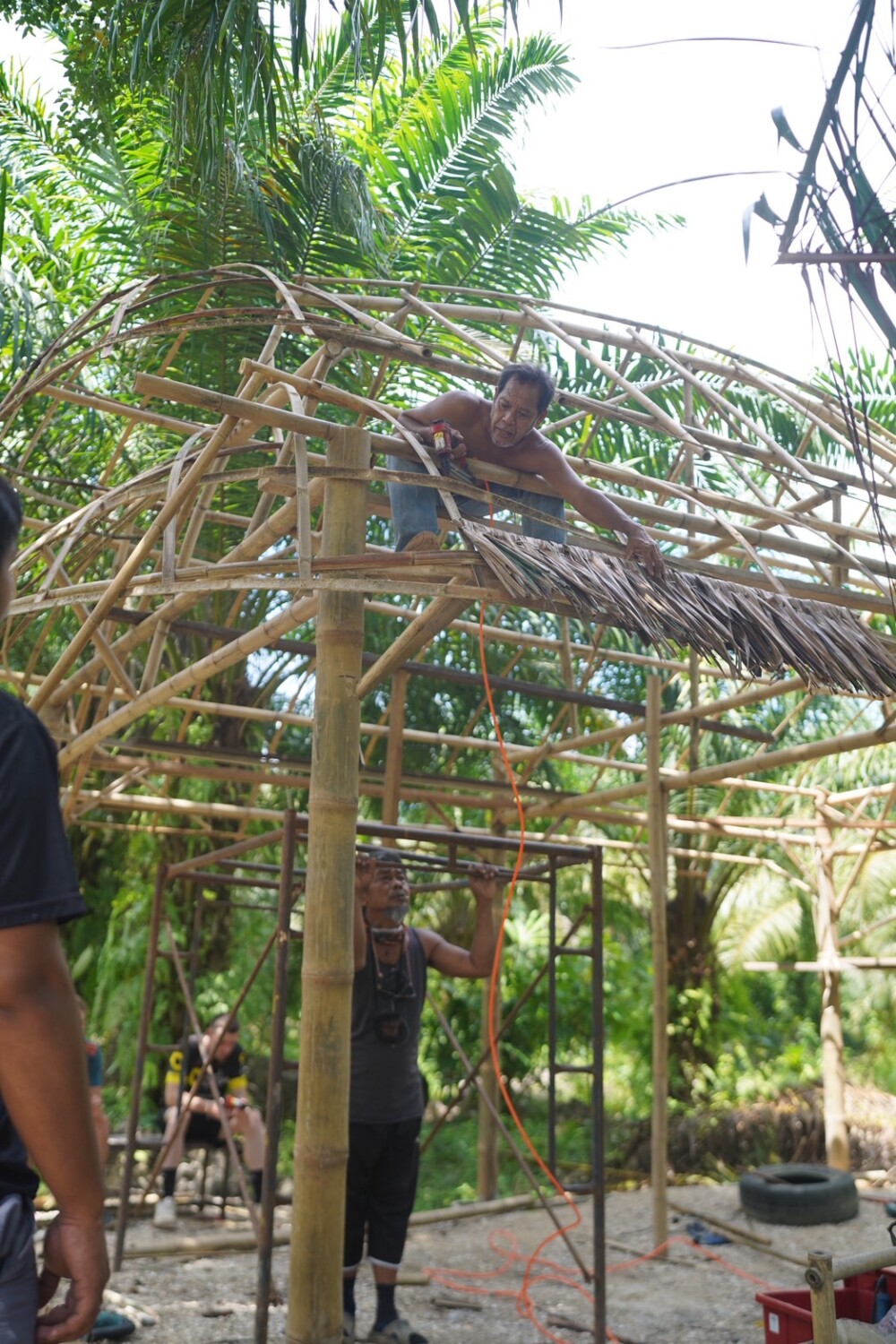

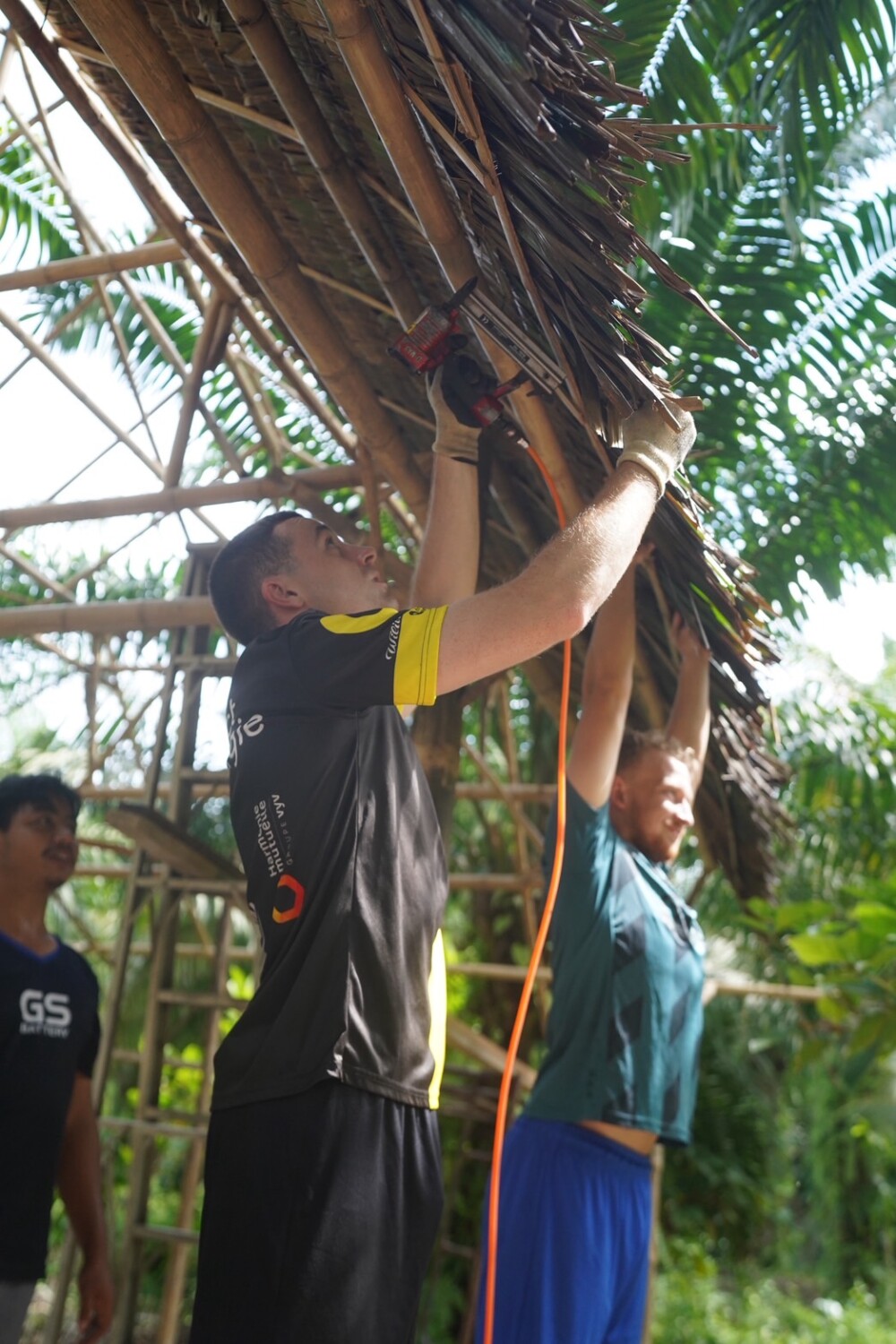
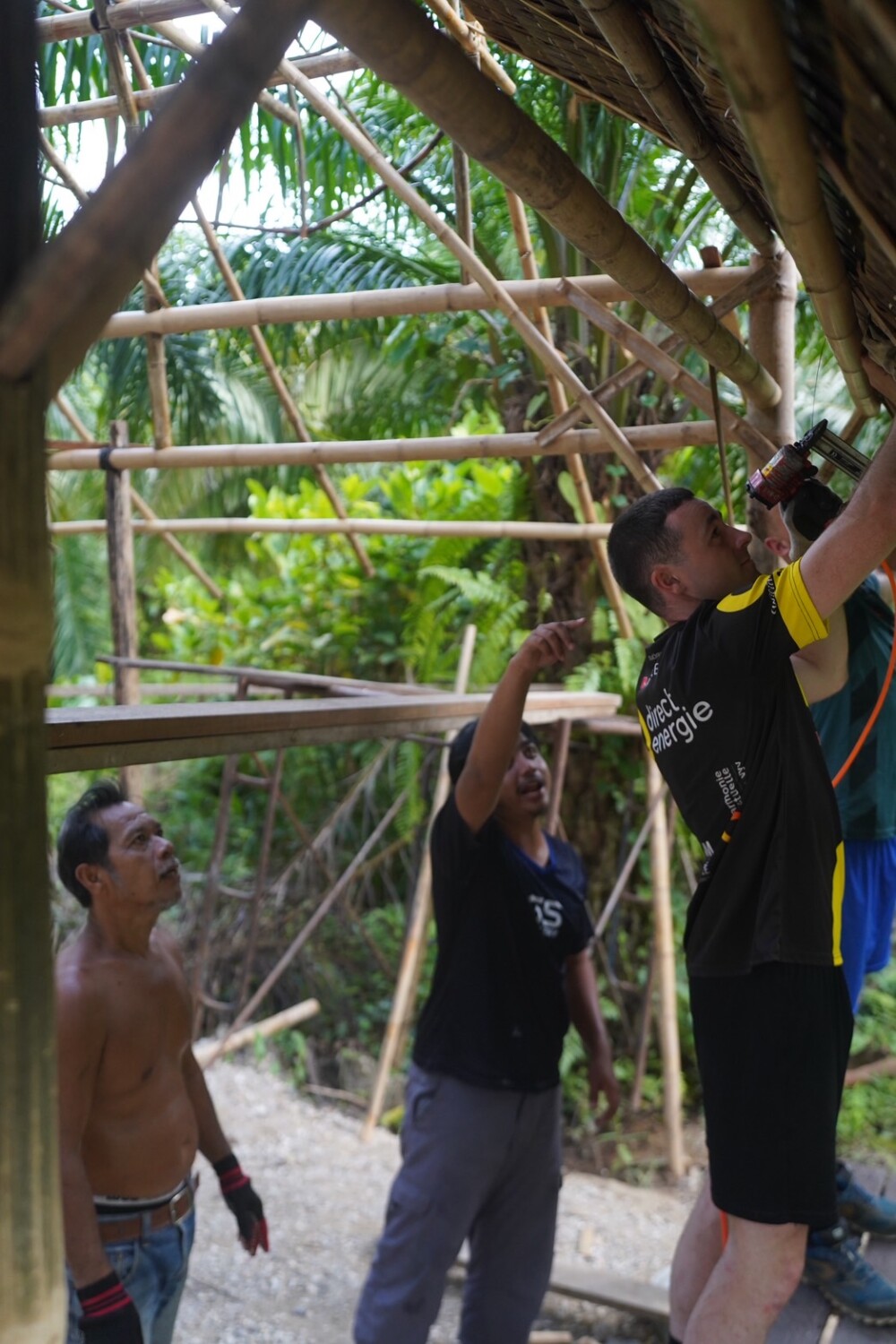

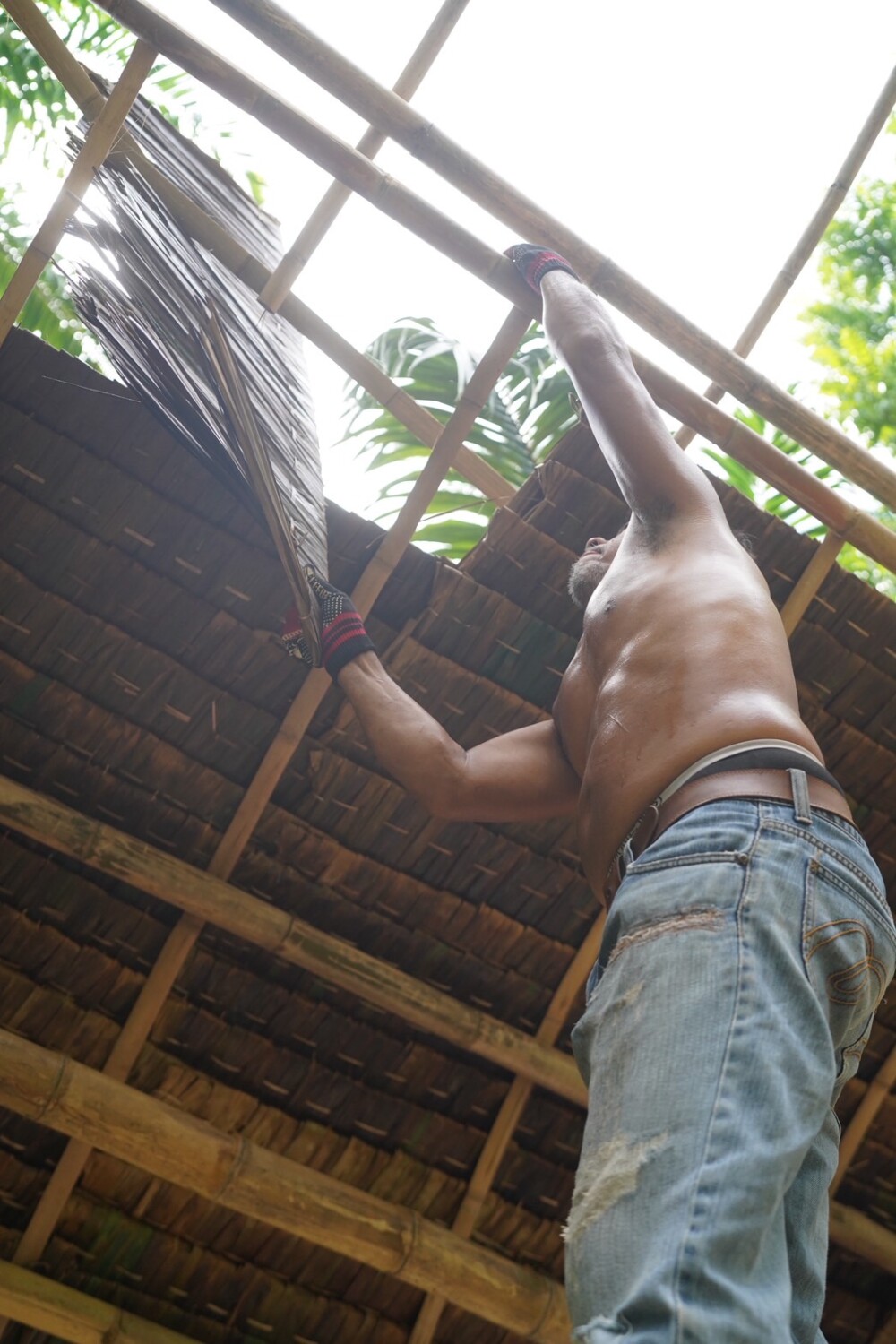
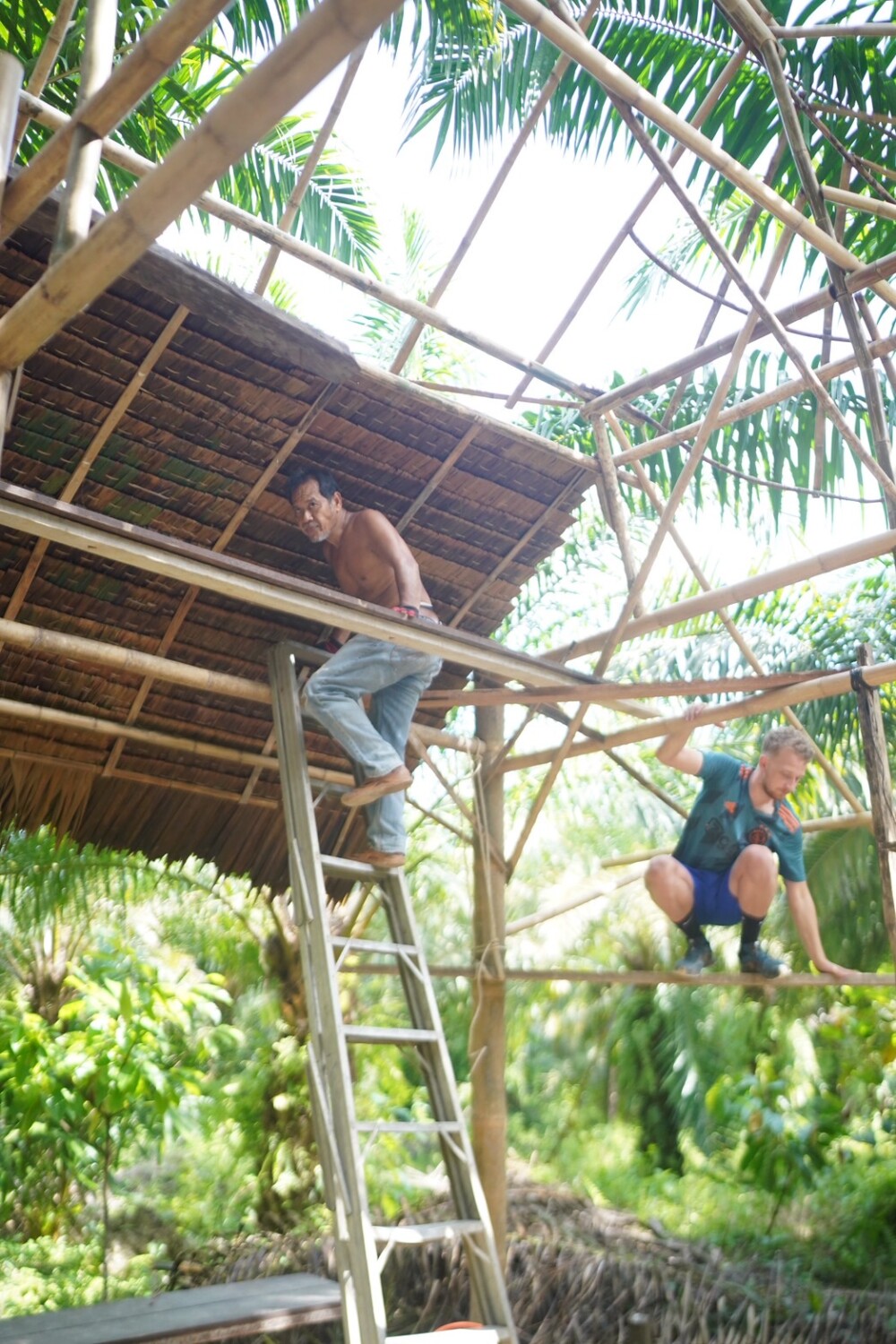
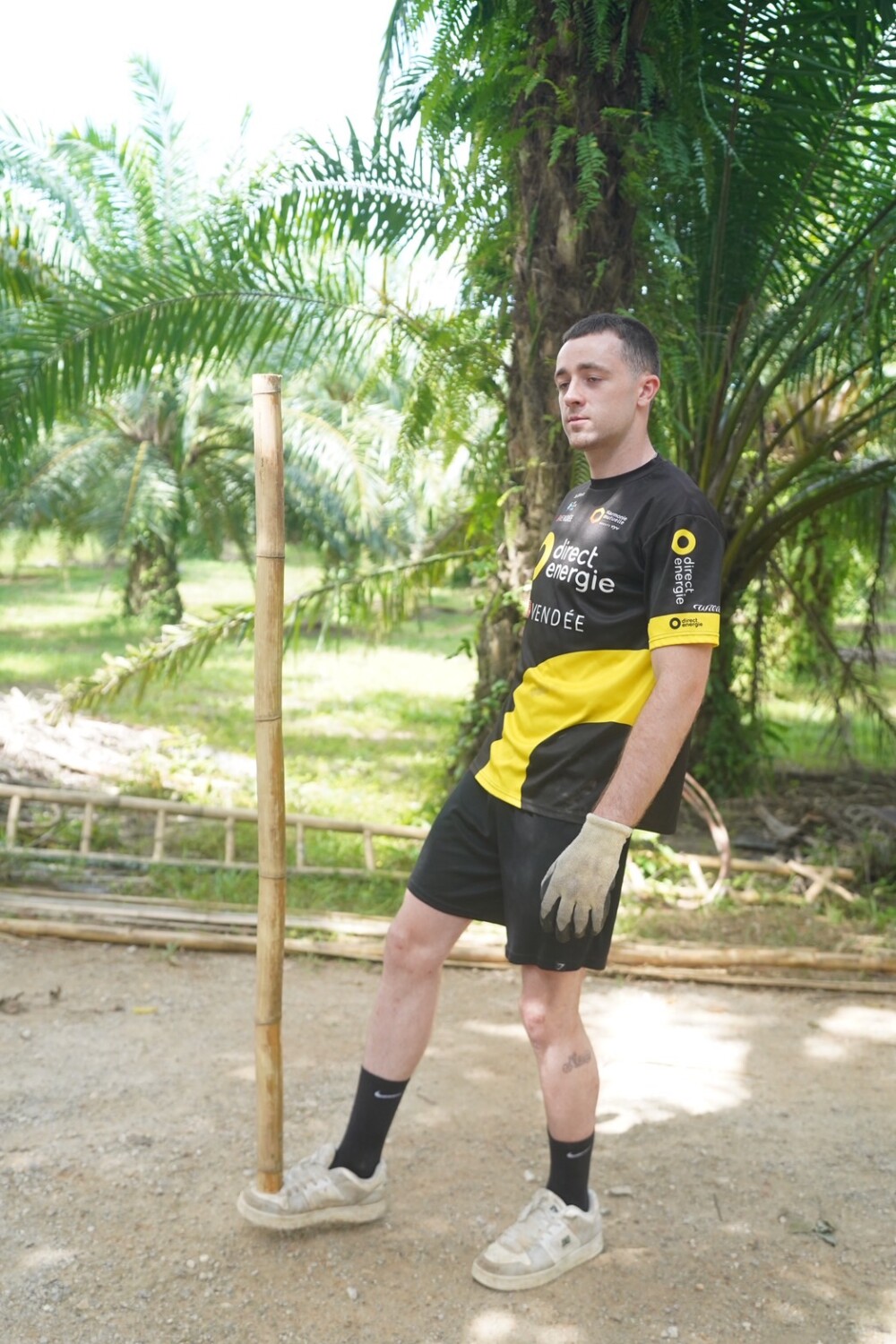
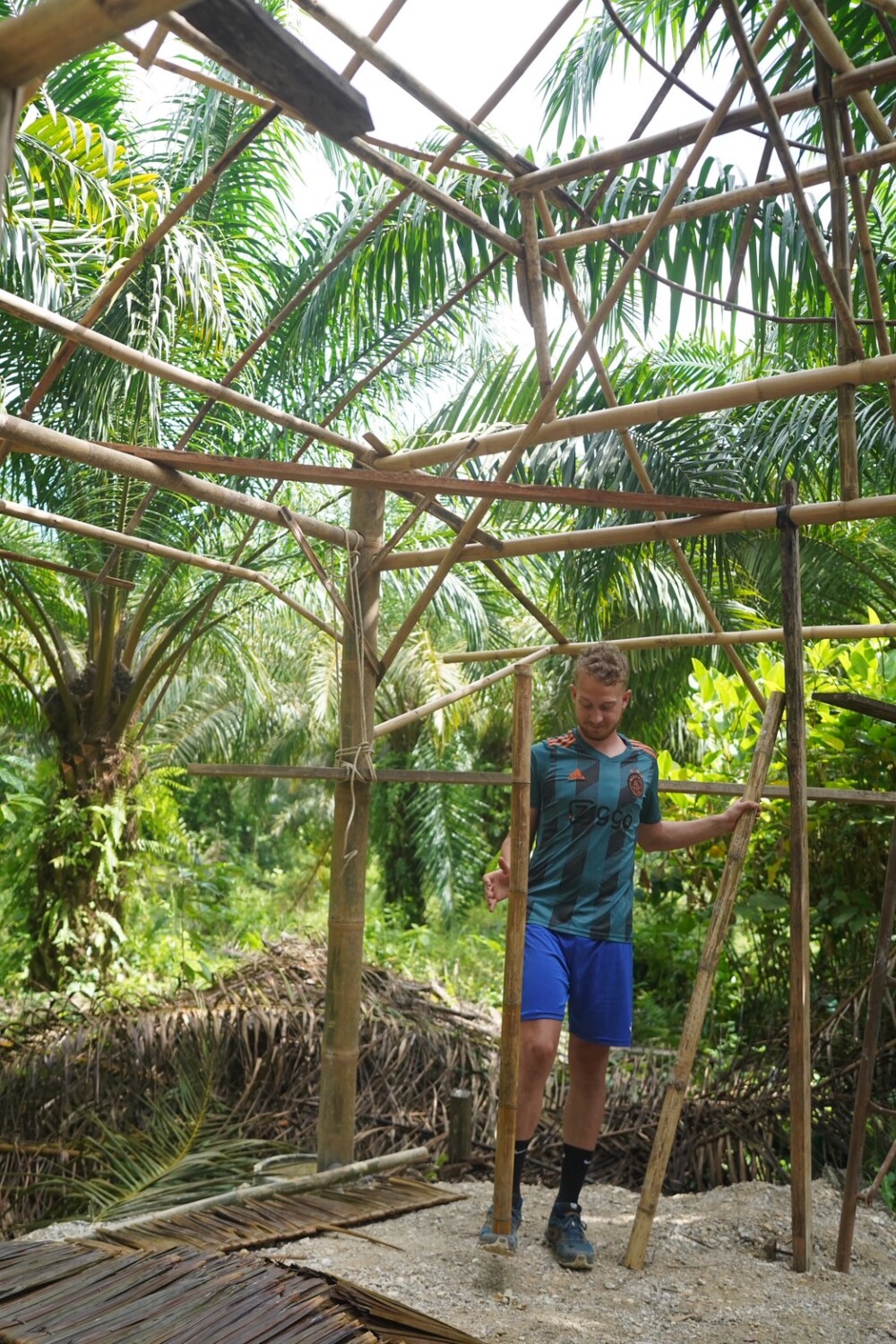
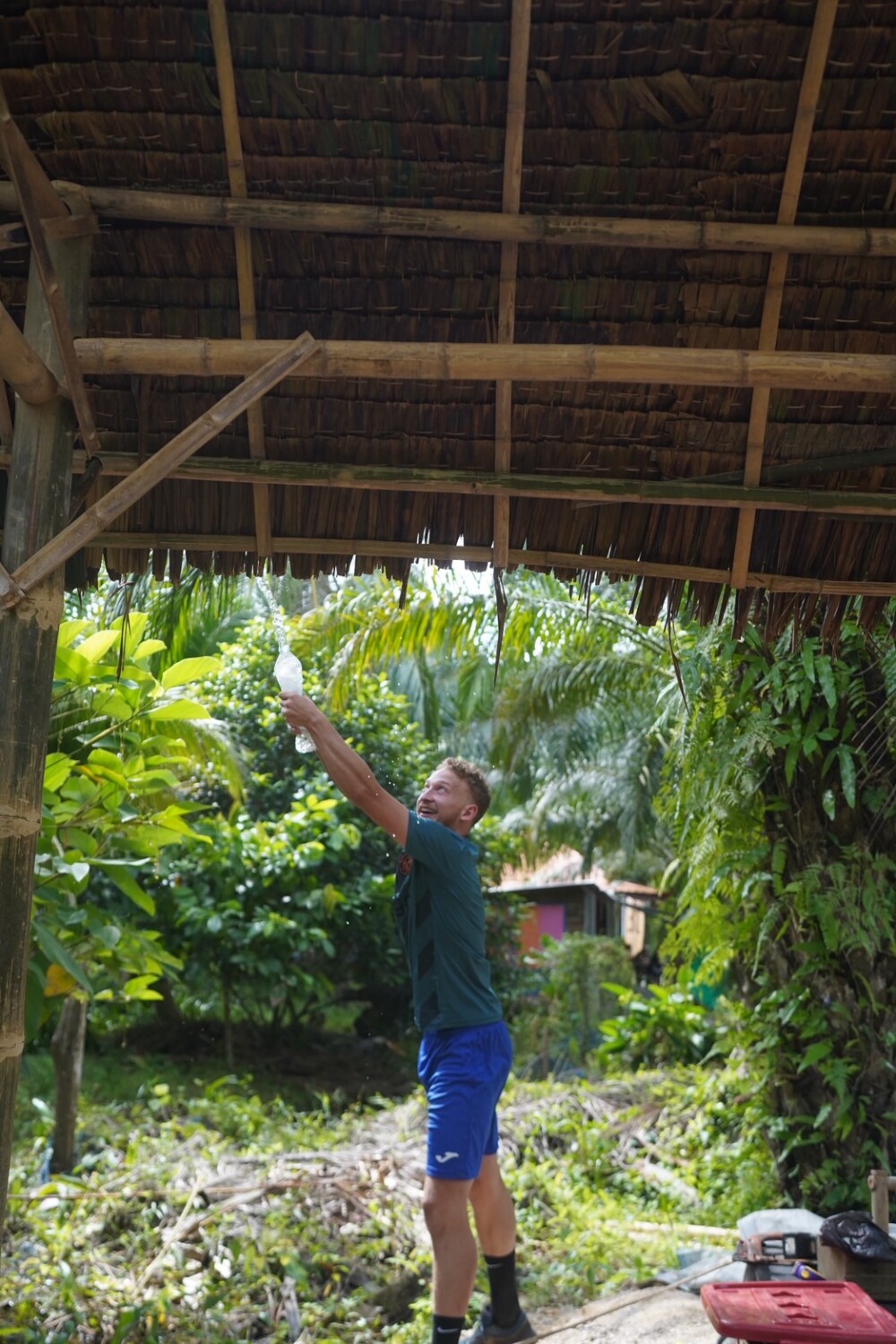
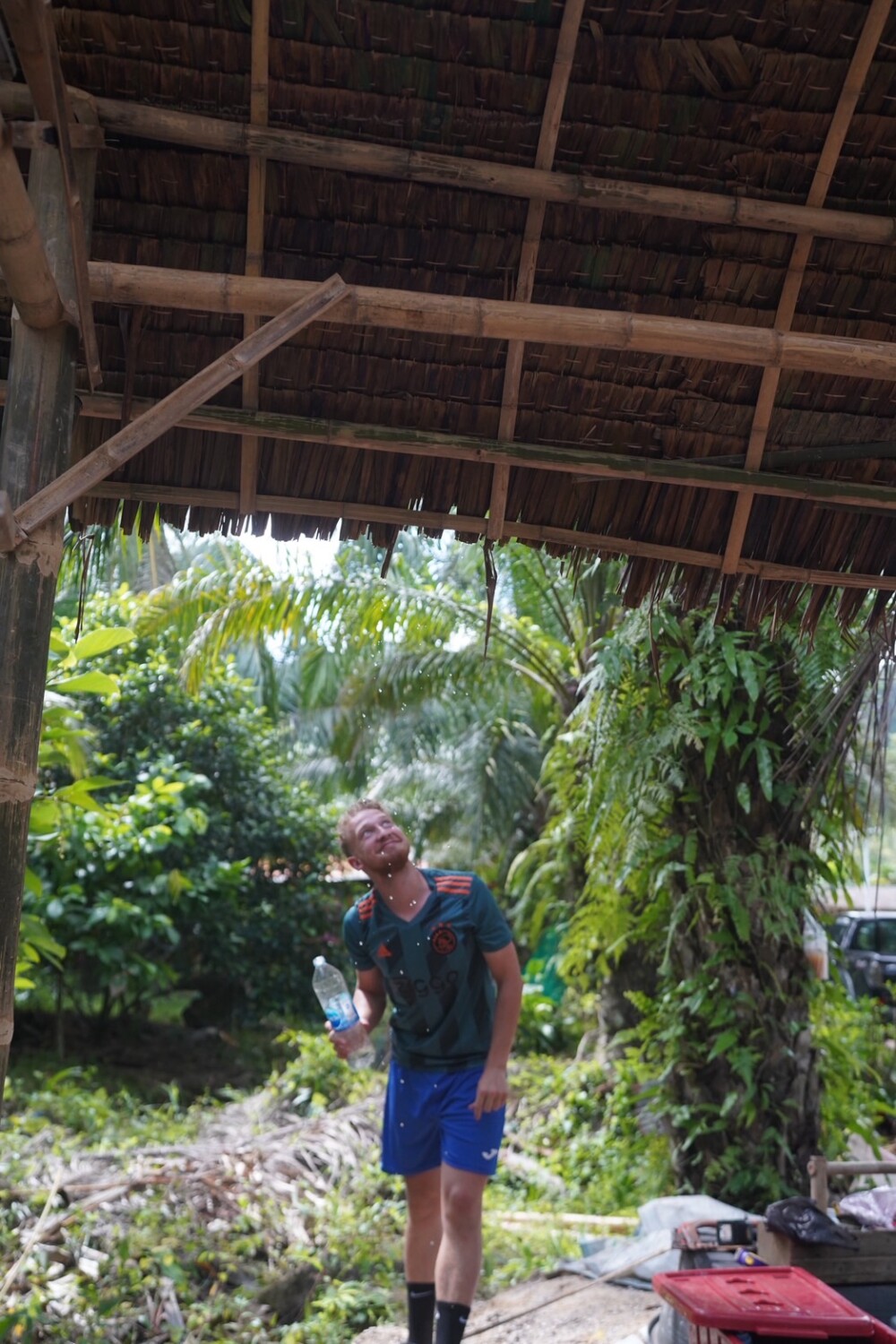
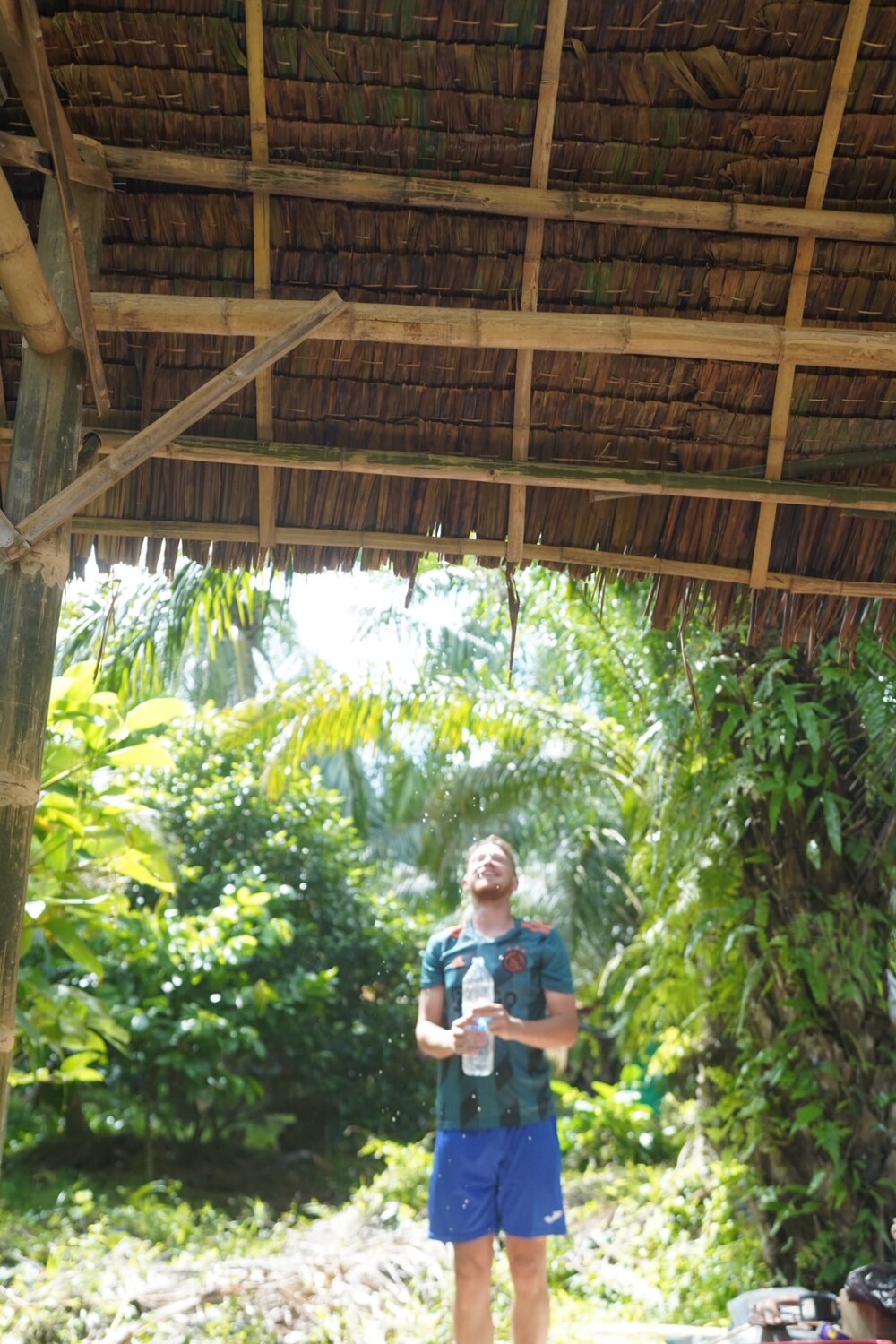
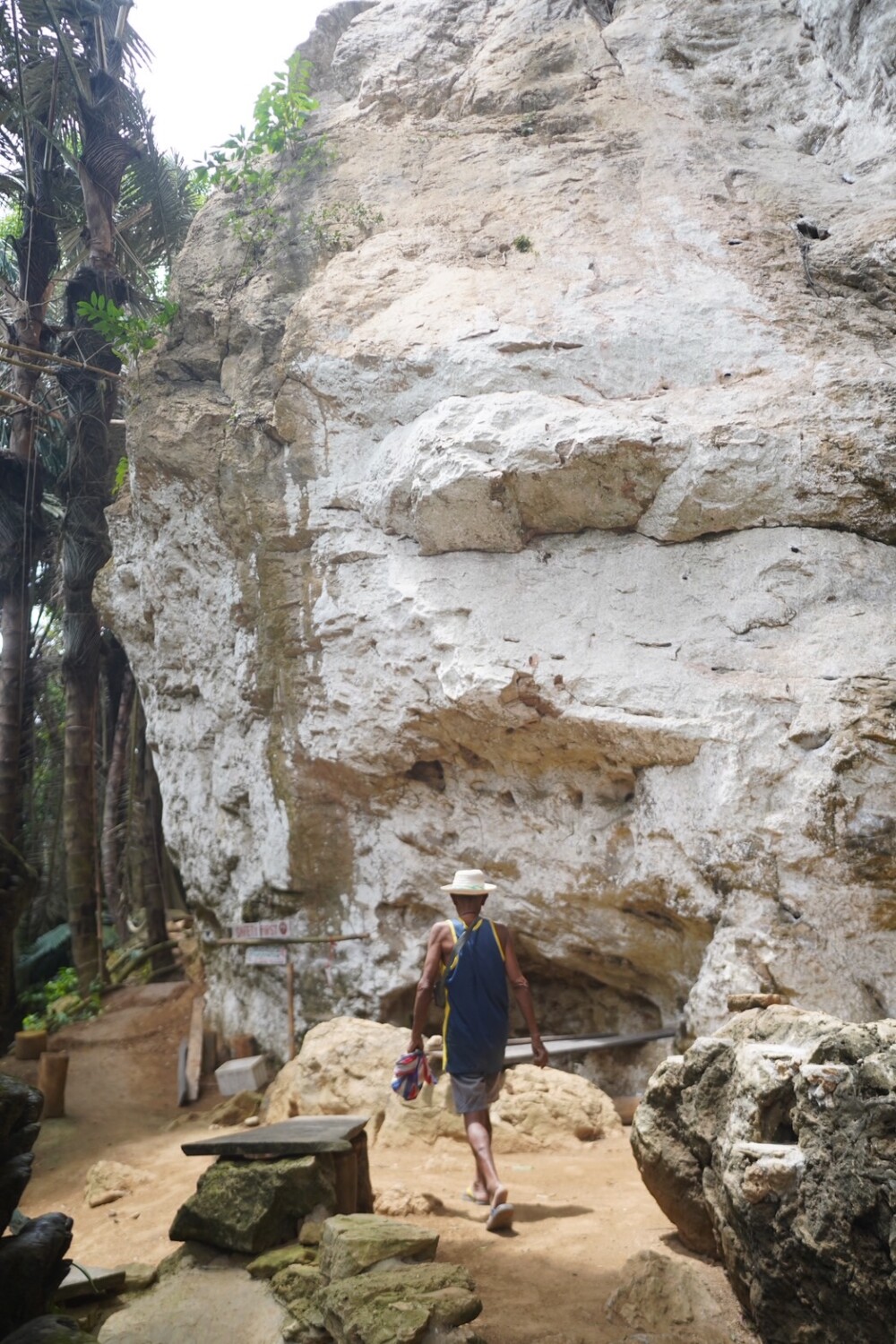

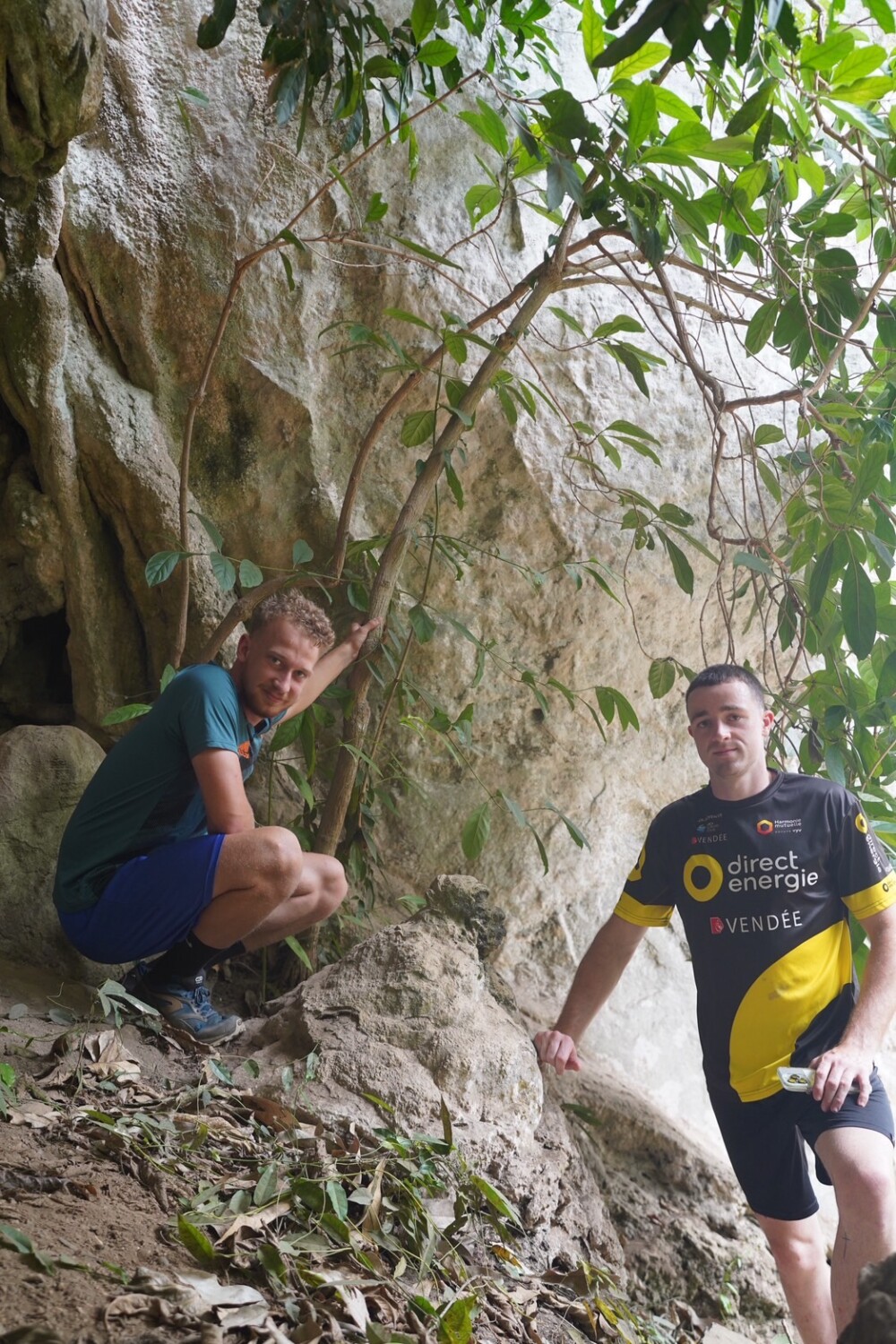
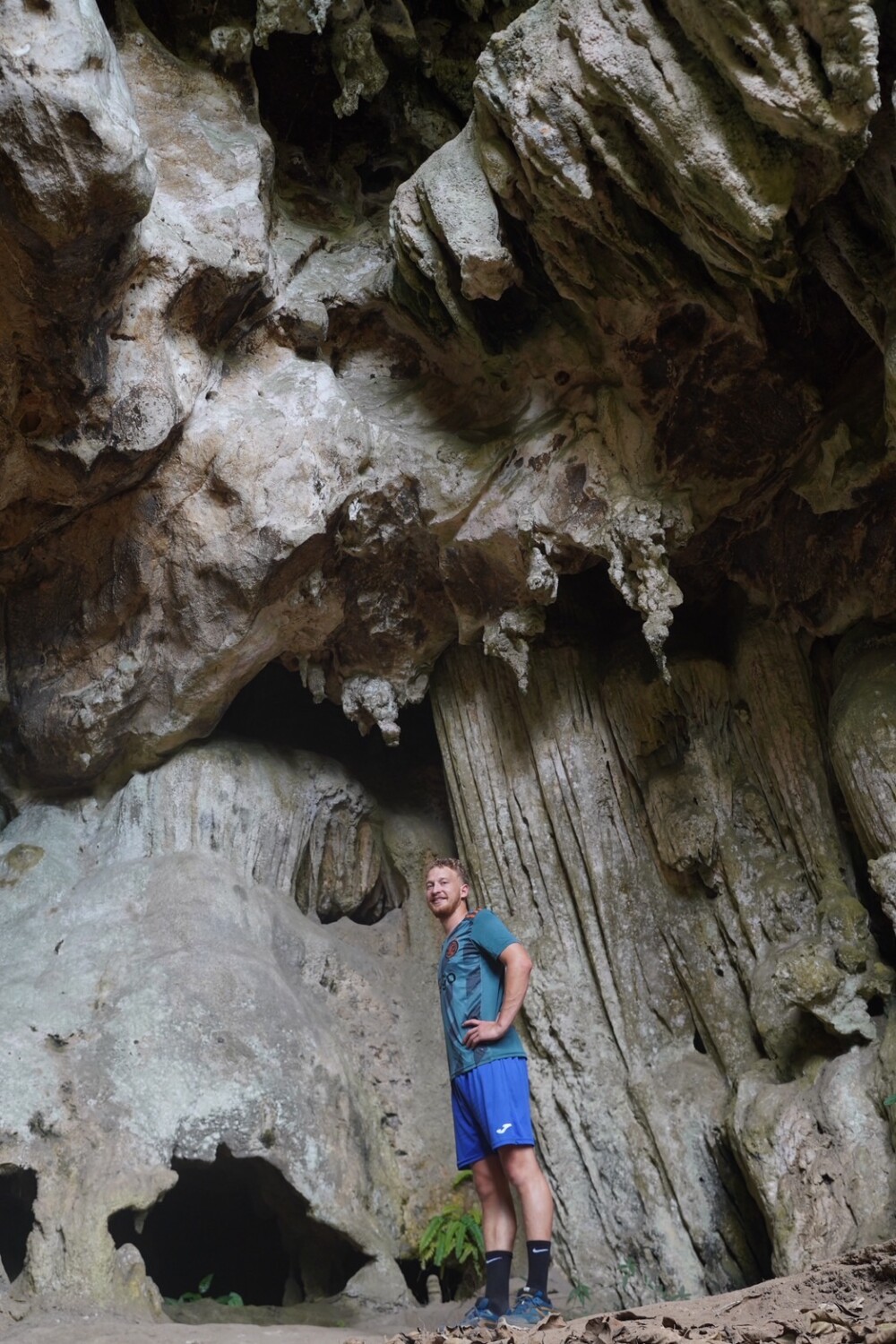
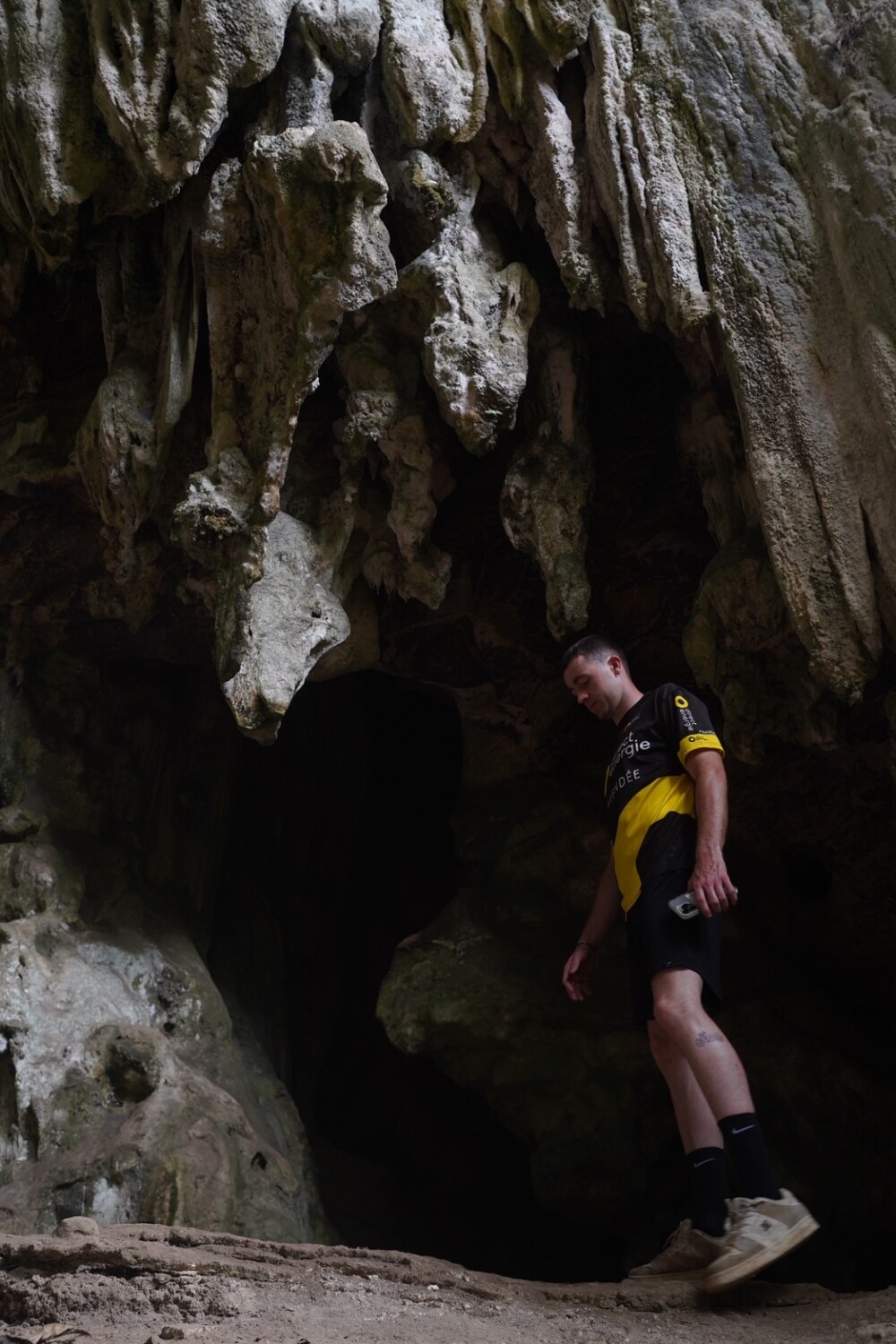
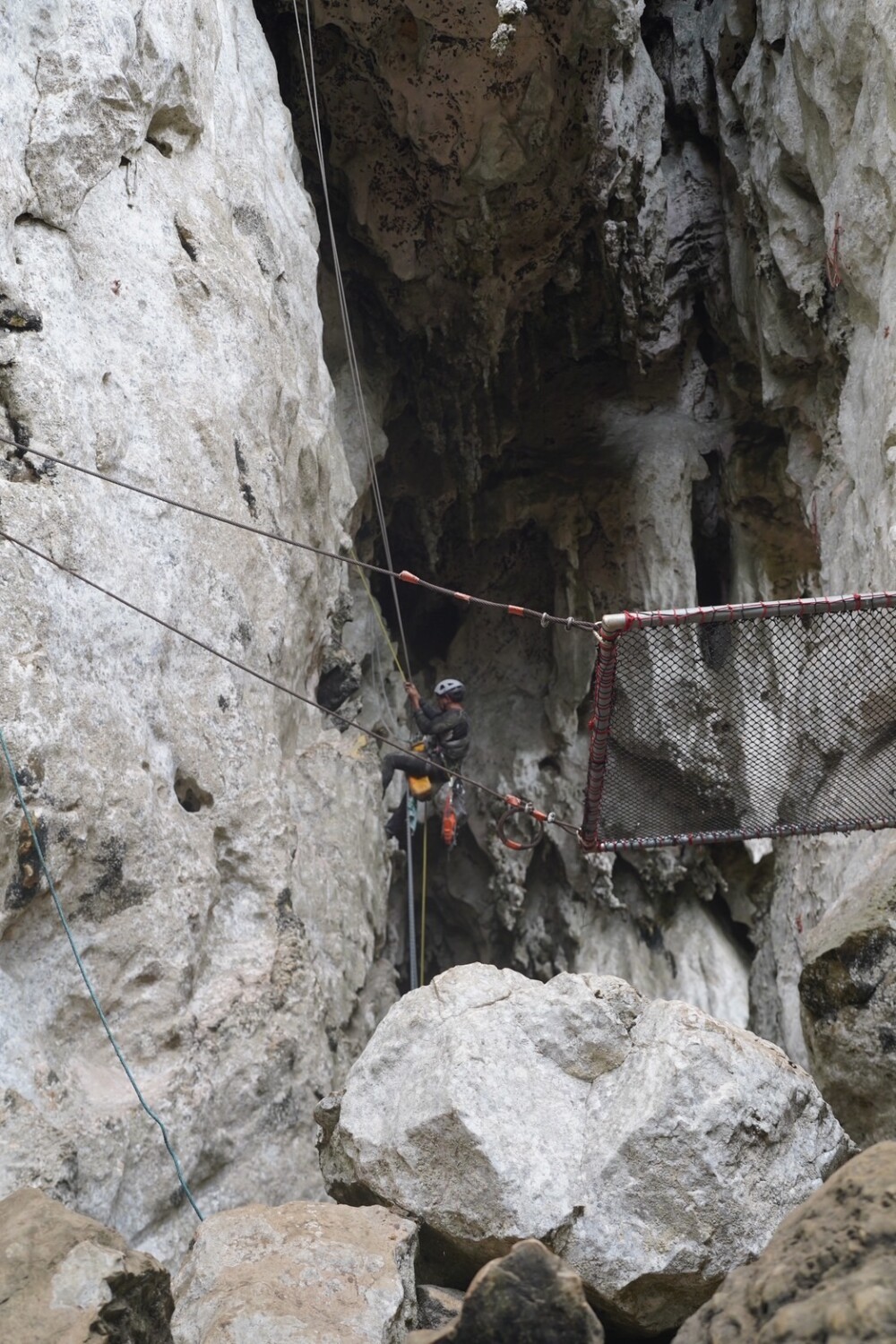

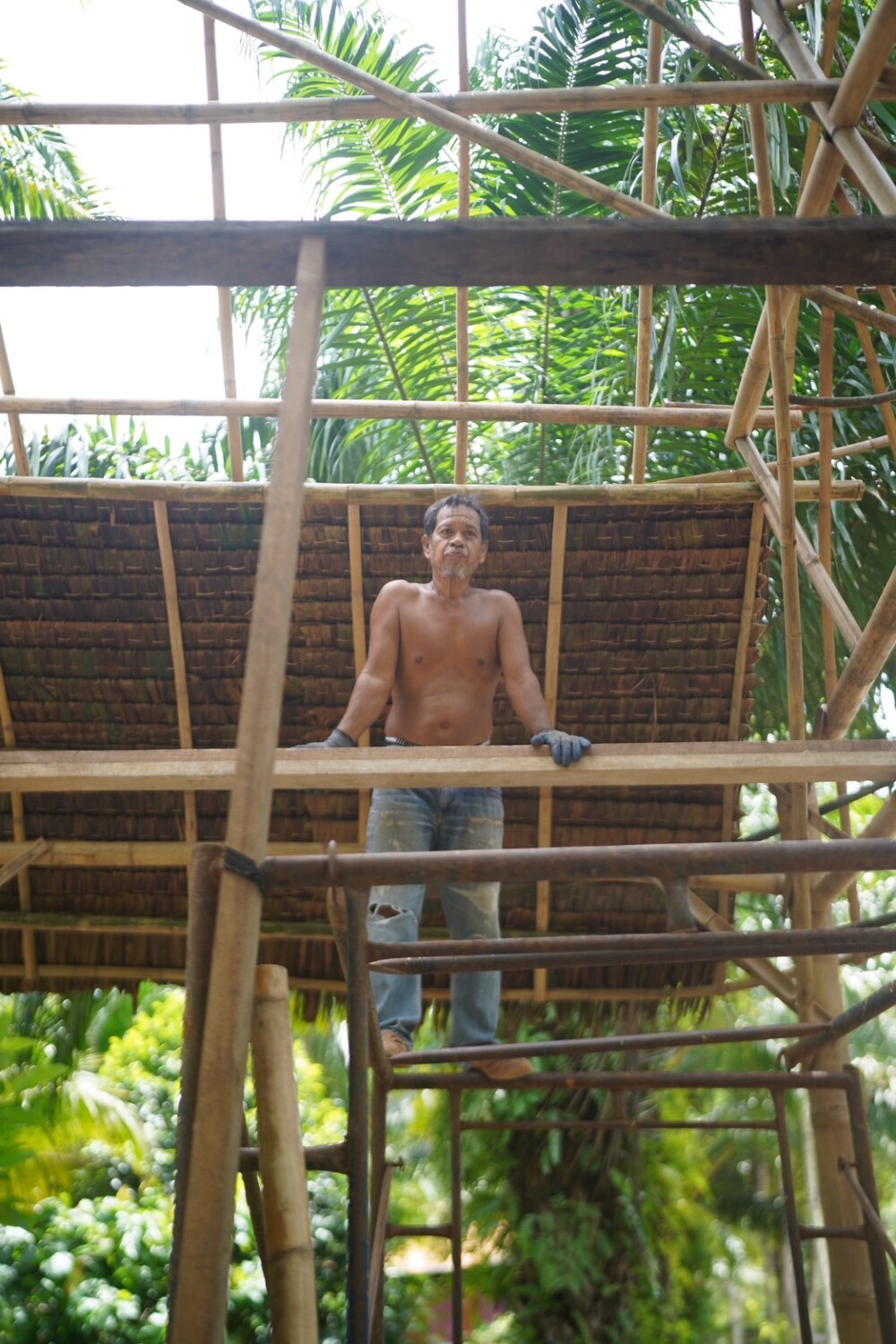
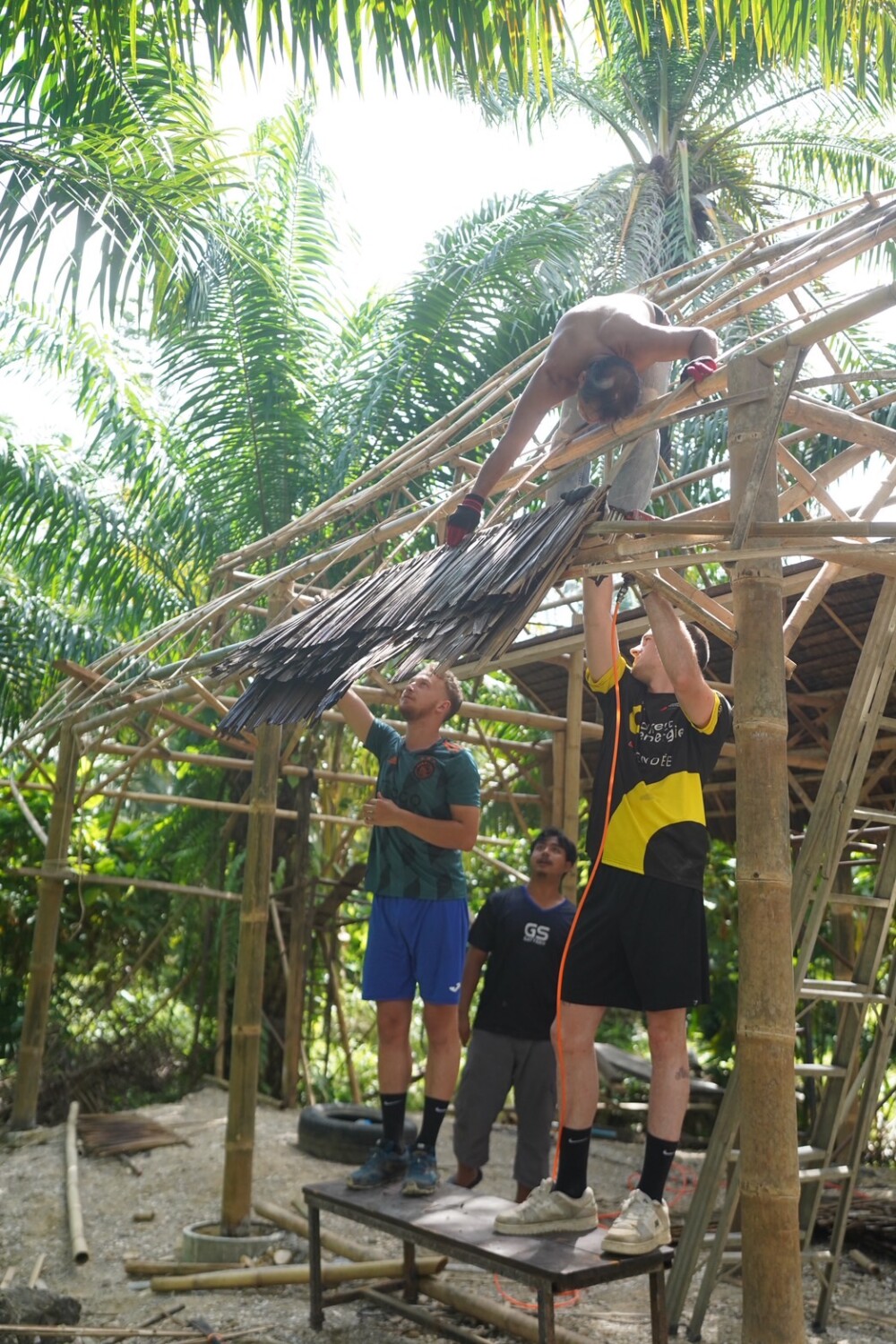
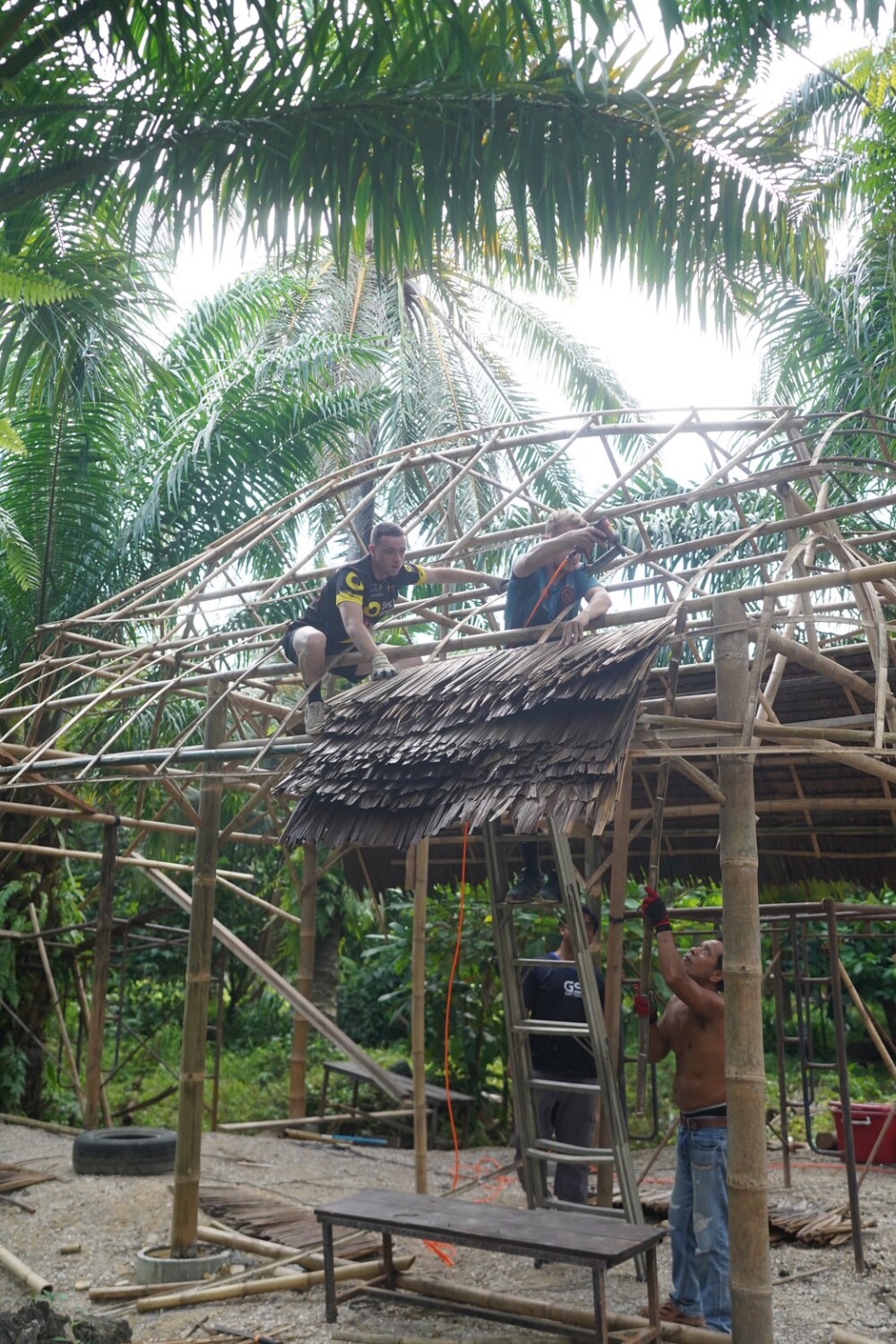

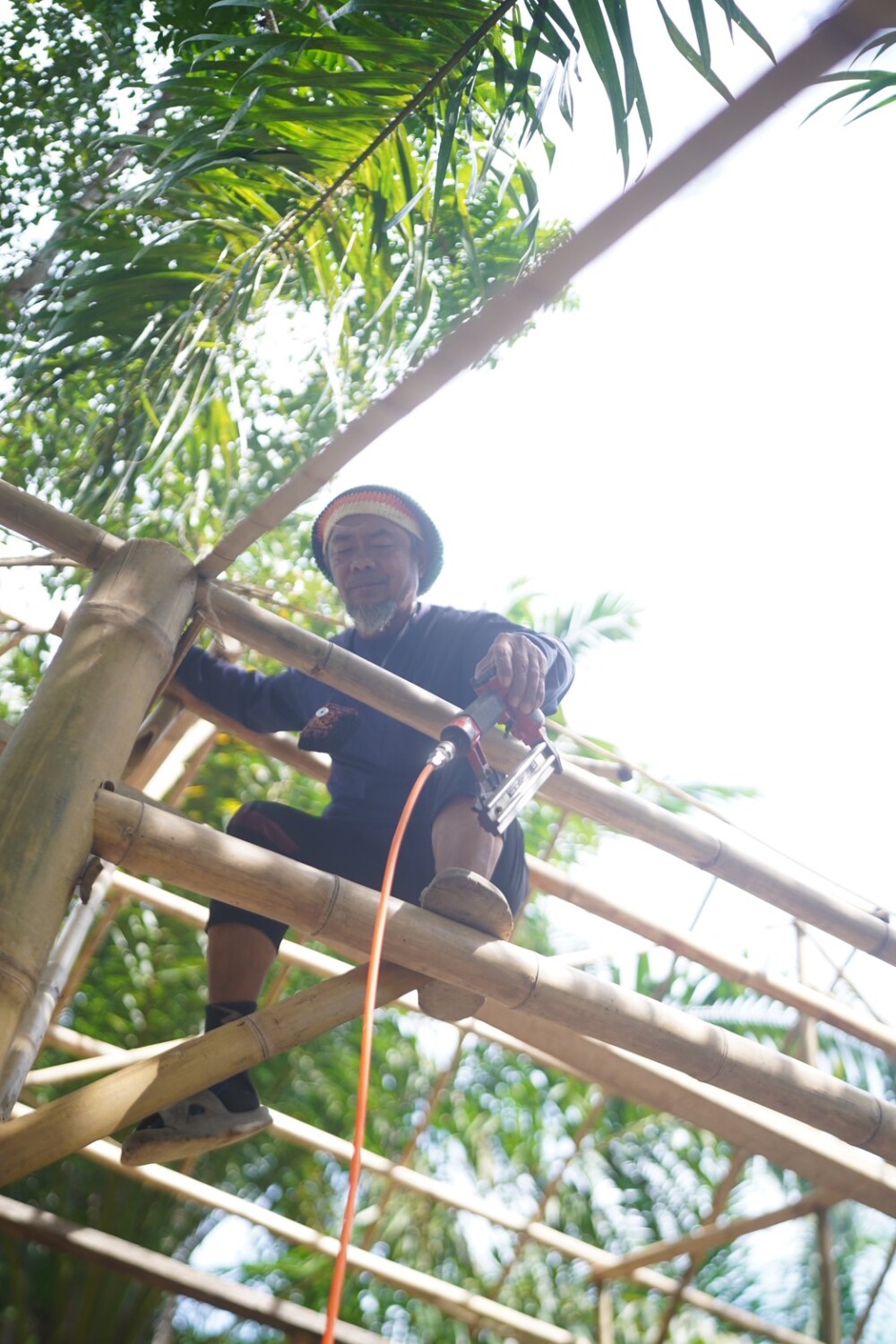
Later in the day, the students decided to test the impermeability of the roof by pouring water over the top to simulate rain. The roof successfully passed the test—no leaks were found, confirming the quality of the Nipa Palm installation and their hard work. The moment was met with excitement and relief.
During a break, the students—who happen to have some pretty good football skills—turned their creativity into play by using a piece of bamboo as a football. They challenged themselves to balance it on their feet and pass it around, turning a simple object into a tool for skill practice and fun. This spontaneous activity sparked laughter and added another layer of connection between the team.
To give the students a break and a taste of local life, we brought them to a handmade noodle shop in Ao Luek for lunch, offering a welcome change from daily rice dishes. Afterwards, we visited Hua Man Daeng Cave, a special natural and cultural site. Inside the cave, the students encountered ancient wall paintings—evidence of Thailand’s rich prehistoric heritage—and a striking stone formation naturally shaped like a monkey’s face. This mysterious formation deeply resonated with the story of Hanuman, the monkey warrior spirit and symbol of protection, strength, and wisdom in Thai folklore. It also happens to be the emblem of Thai Spirit Life, making the visit even more meaningful. The students were fascinated by the connection, adding another layer of depth to their cultural immersion before heading back to the construction site.
Day 13: Site Visit by Architect & Roof Near Completion
On Saturday morning, P’Aek, our project architect, visited the construction site and provided key updates for the next phase: the construction of a pizza oven. His input helped realign the planning and motivate the group with a clear direction forward.
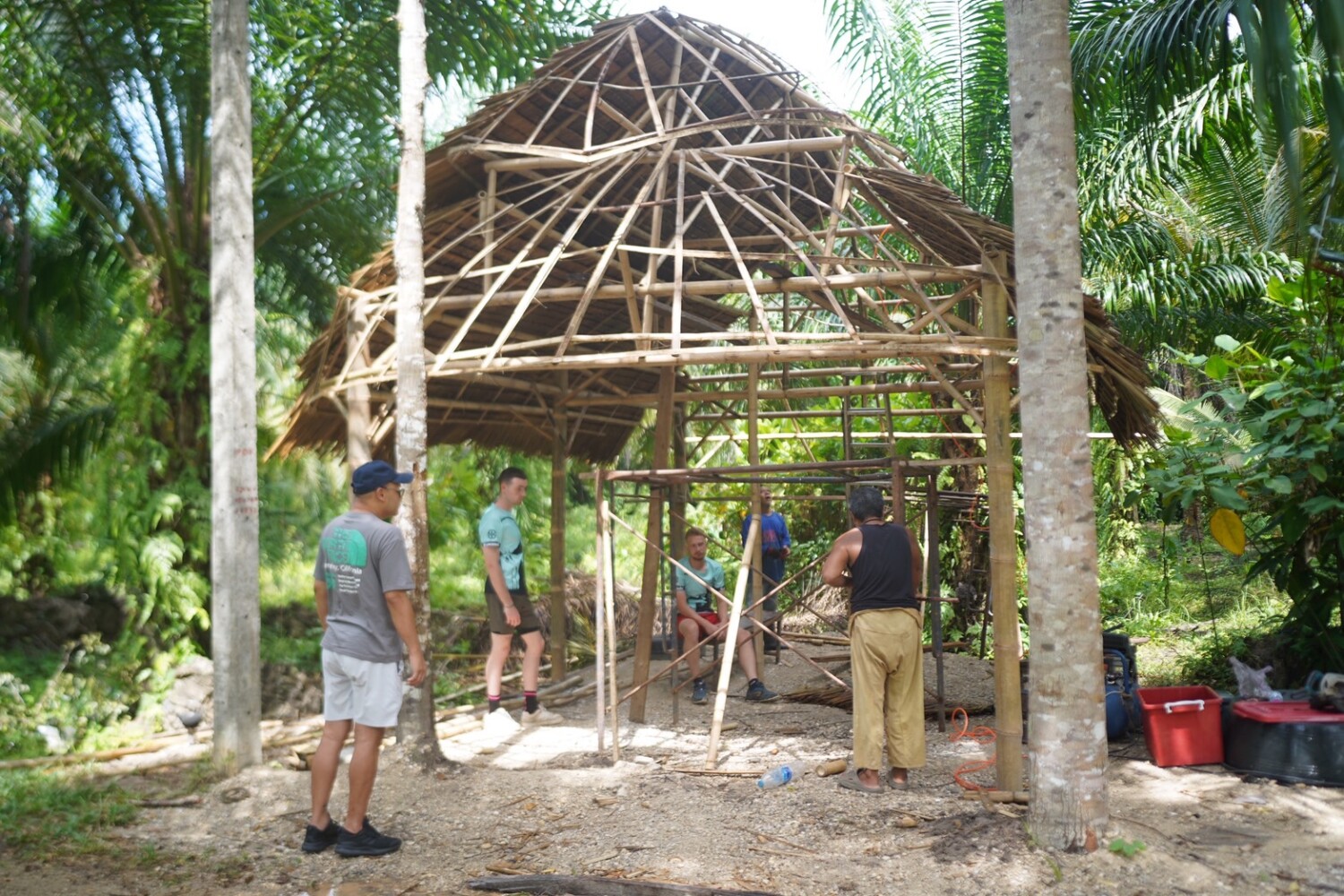
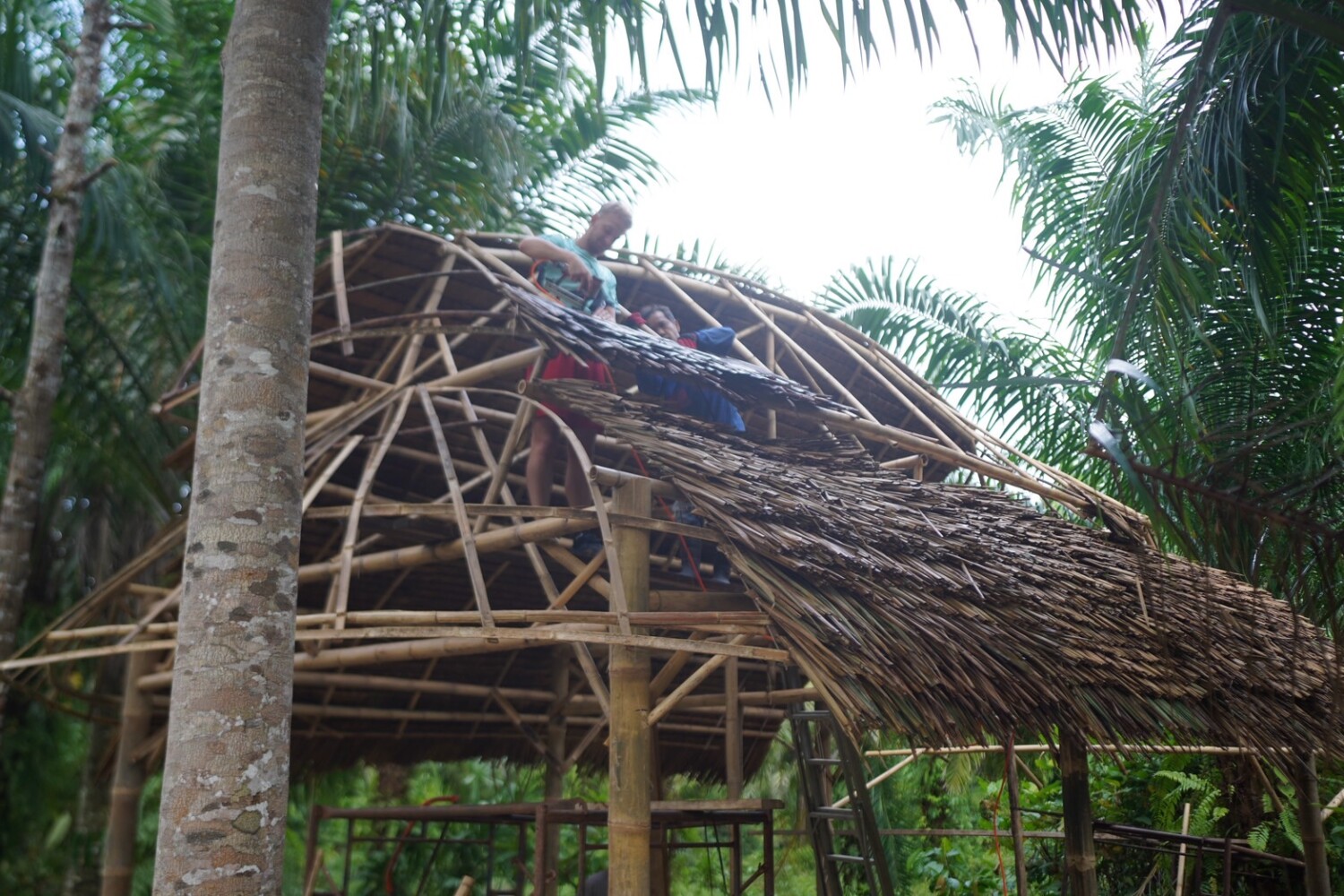
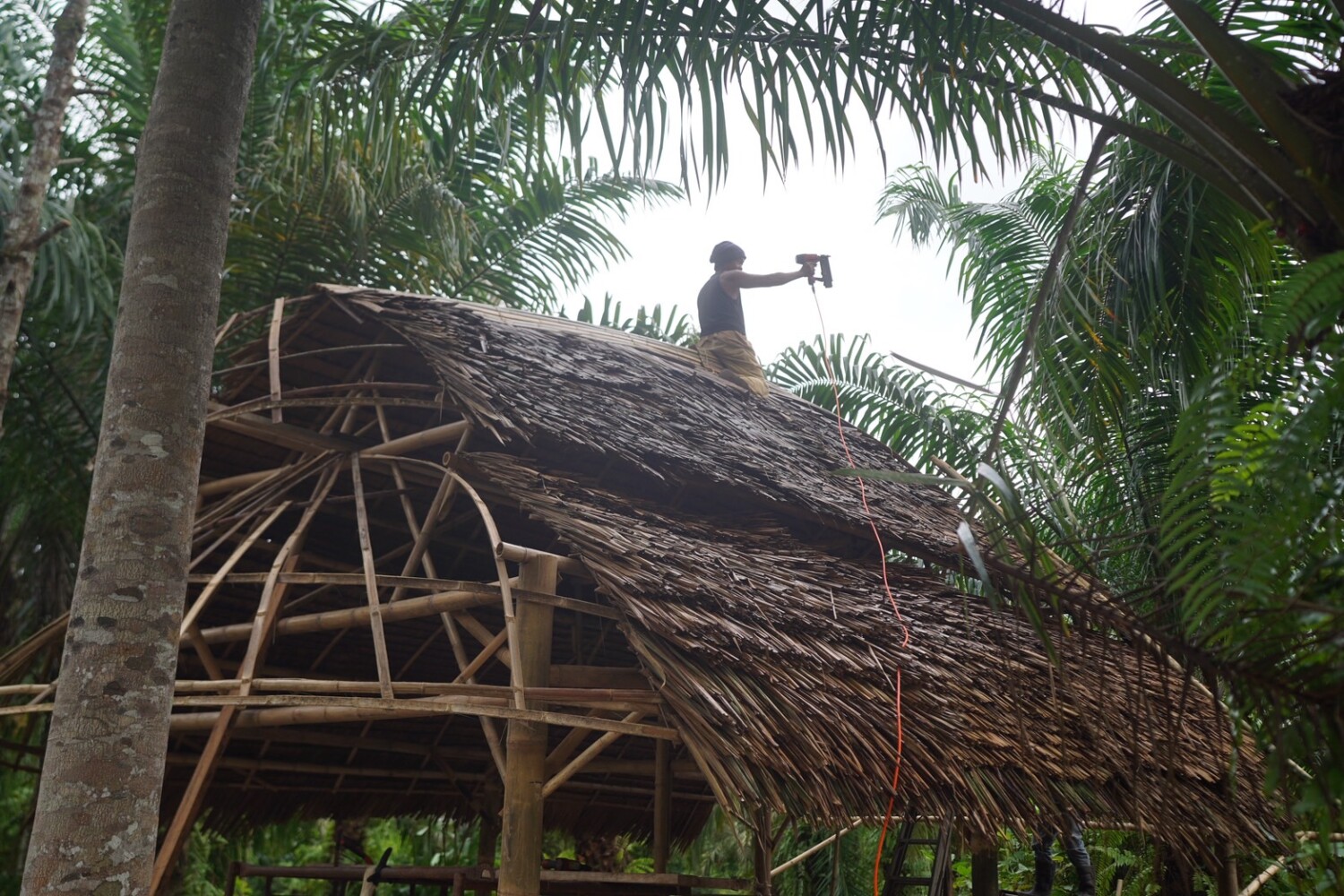
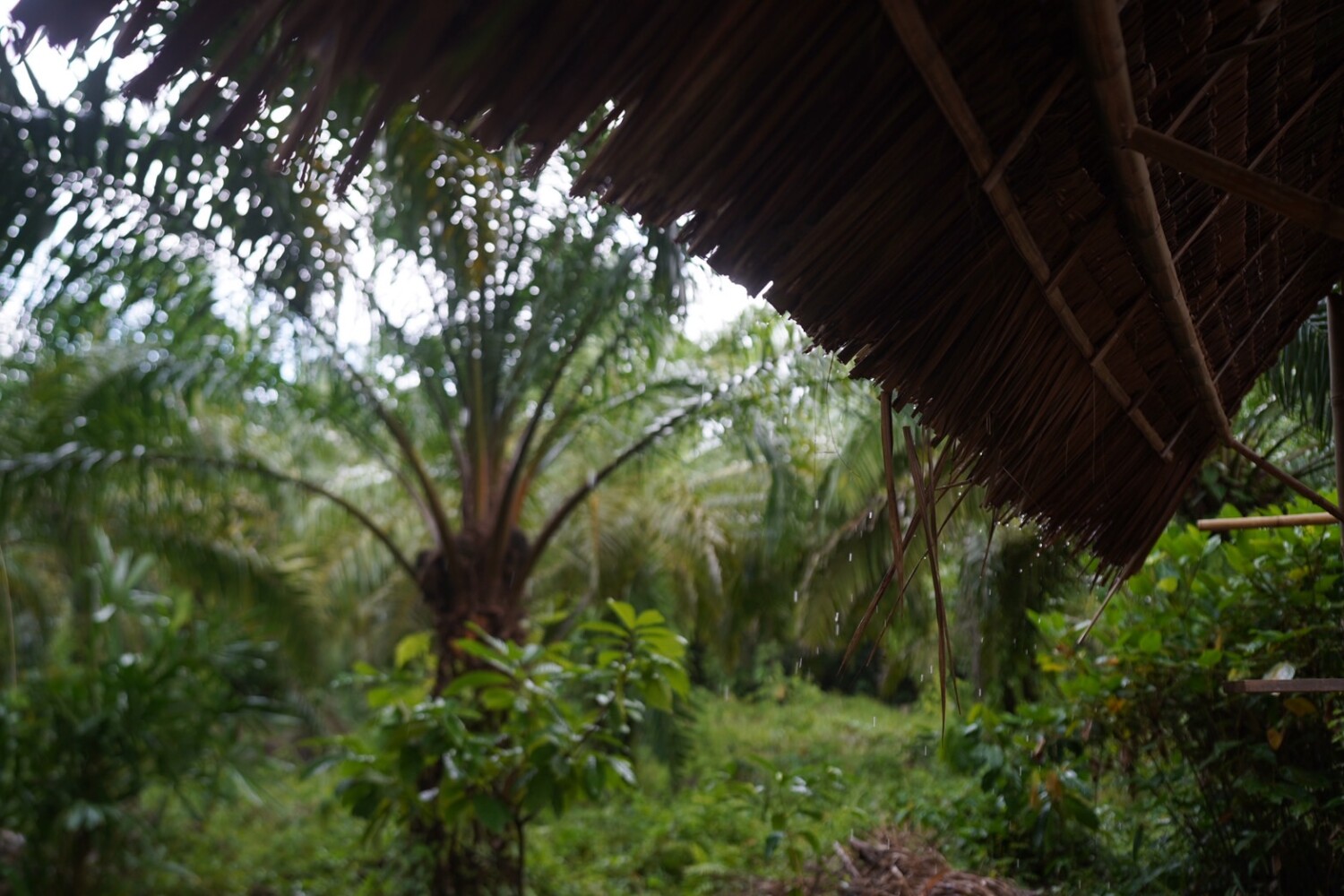
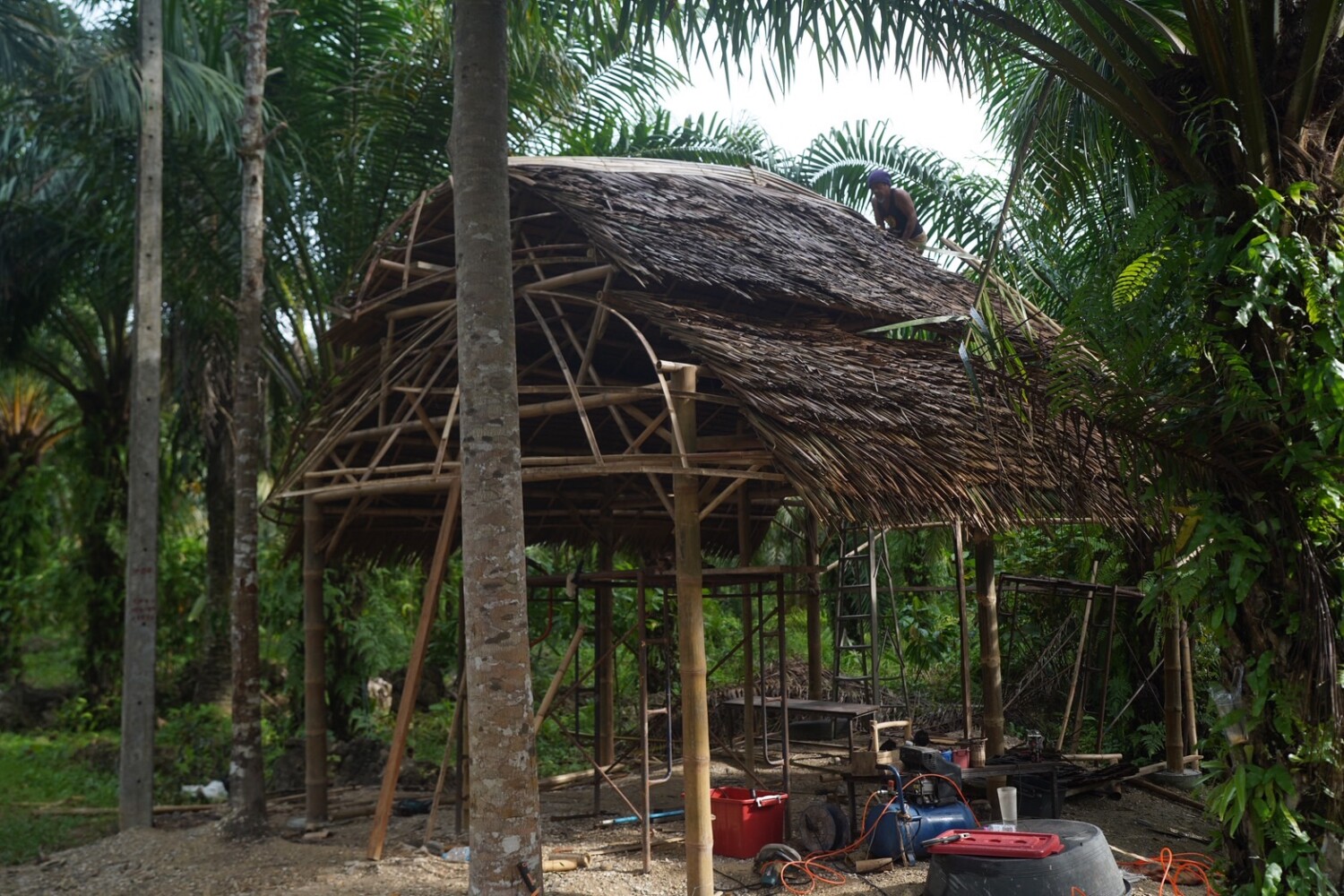
Meanwhile, Bang Ree took the lead in reinforcing the roof’s structure. Using his handmade bamboo long ladder, he climbed to the very top part of the roof—a section difficult to access without such a traditional tool. From there, he installed and adjusted bamboo straps along the middle ridge of the roof. This careful placement was designed to enhance the roof’s permeability and ensure it would be fully protected against potential leaks during rain. His craftsmanship and attention to detail once again demonstrated the power of traditional knowledge in eco-construction.
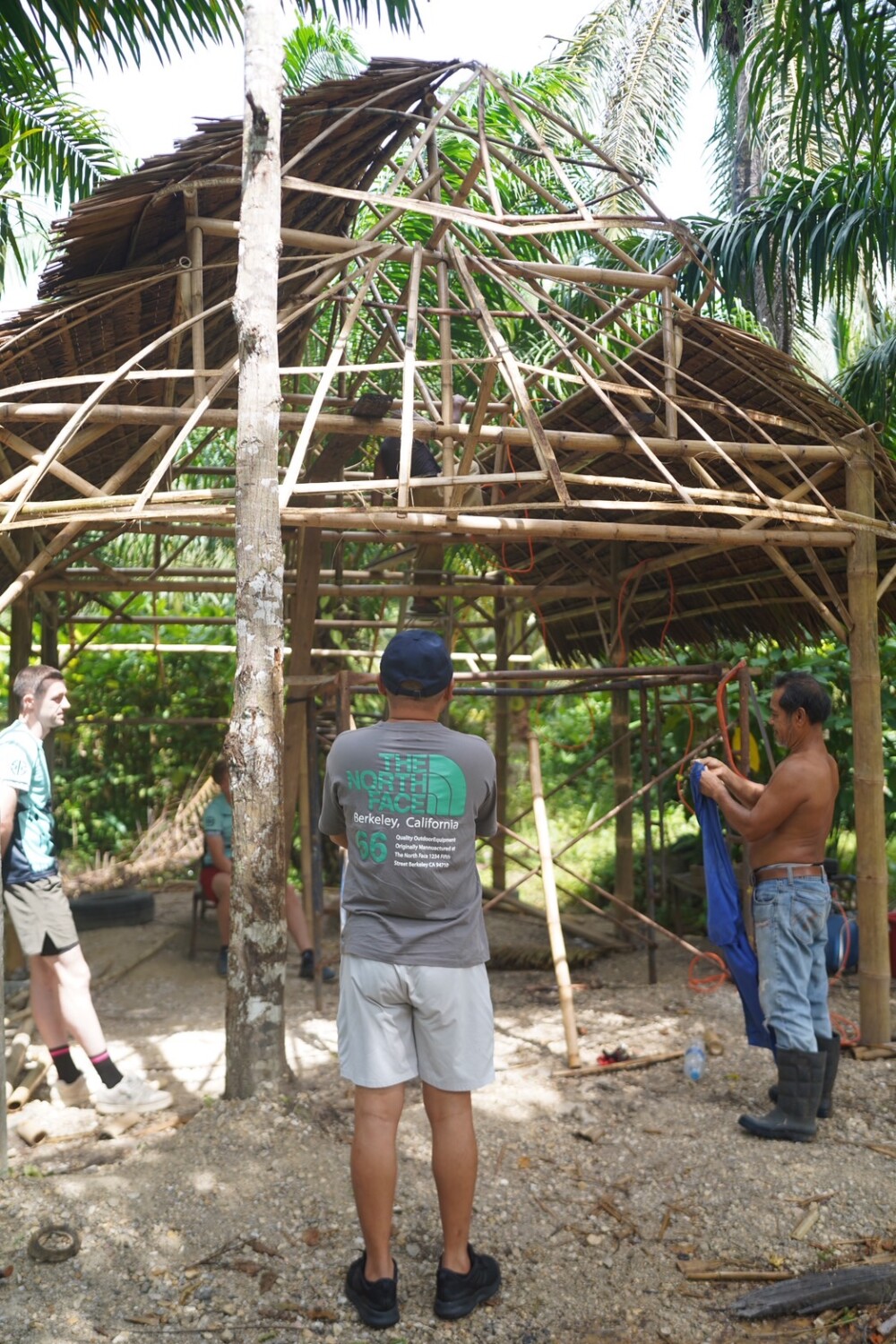



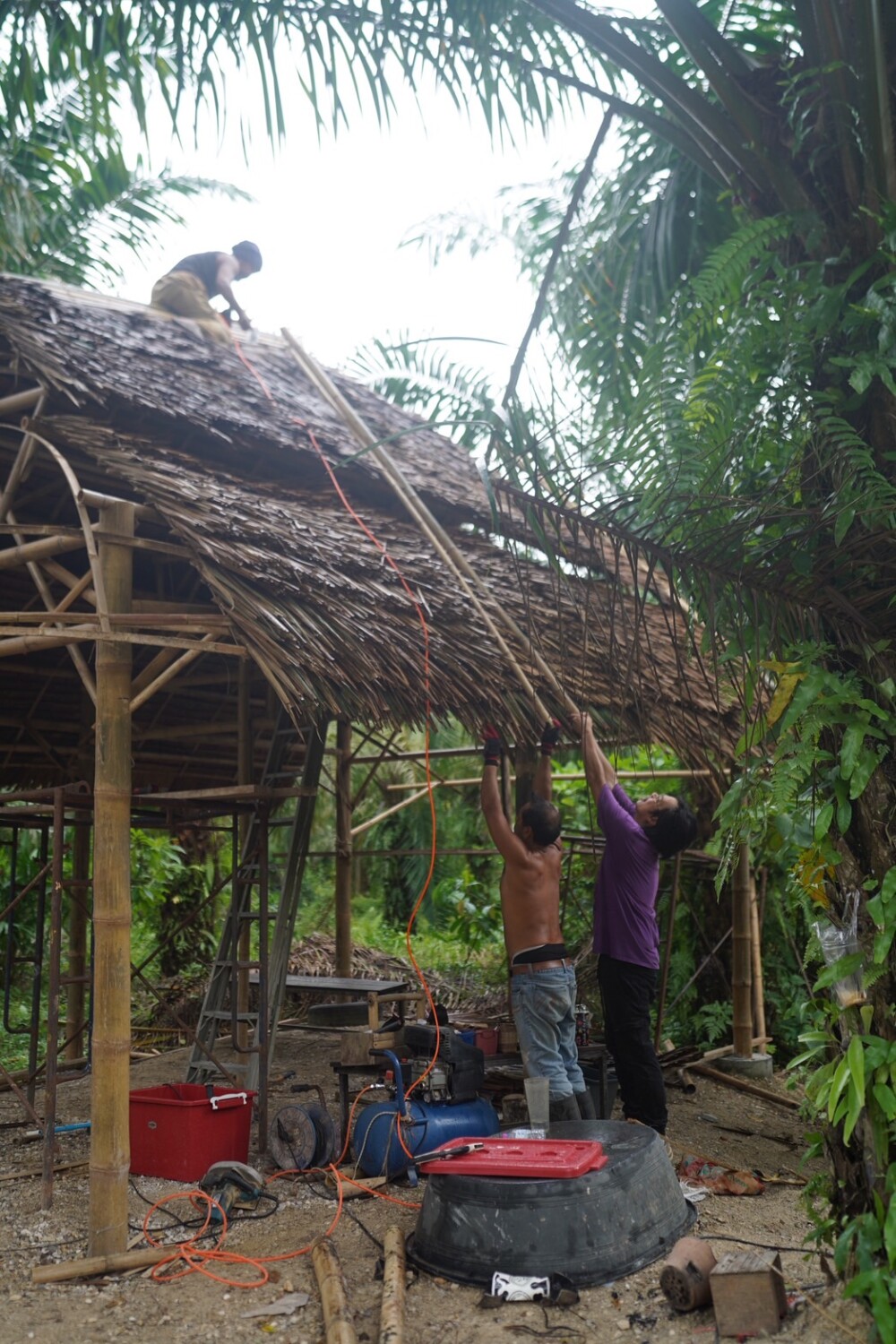
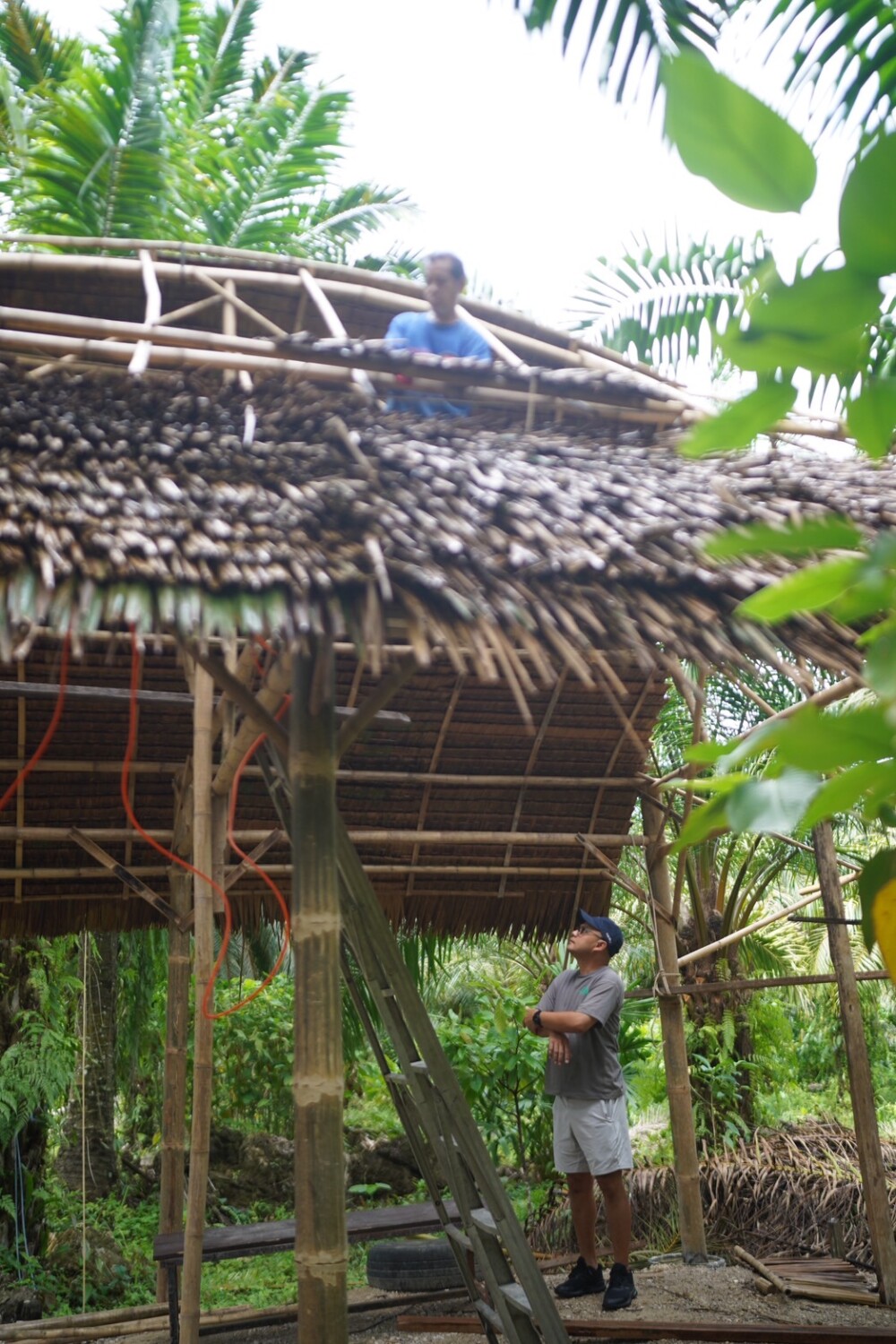
The team also made strong progress on the Nipa Palm roof, completing approximately 80% of the installation. In total, 300 sheets were used to cover the left, right, and top sections of the roof. Only the front and back portions remain, with 100 sheets left for final use.
Next Week Outlook
In the coming week, we will complete the Nipa Palm roof installation and begin preparations for the pizza oven construction phase. We’re also excited to welcome our third student from France, who arrived on Saturday and will be participating in the project for the next two months.
Week 5: Wednesday (14th Day) – Friday (16th Day)
Day 14: Completing the Roof with Nipa Palm
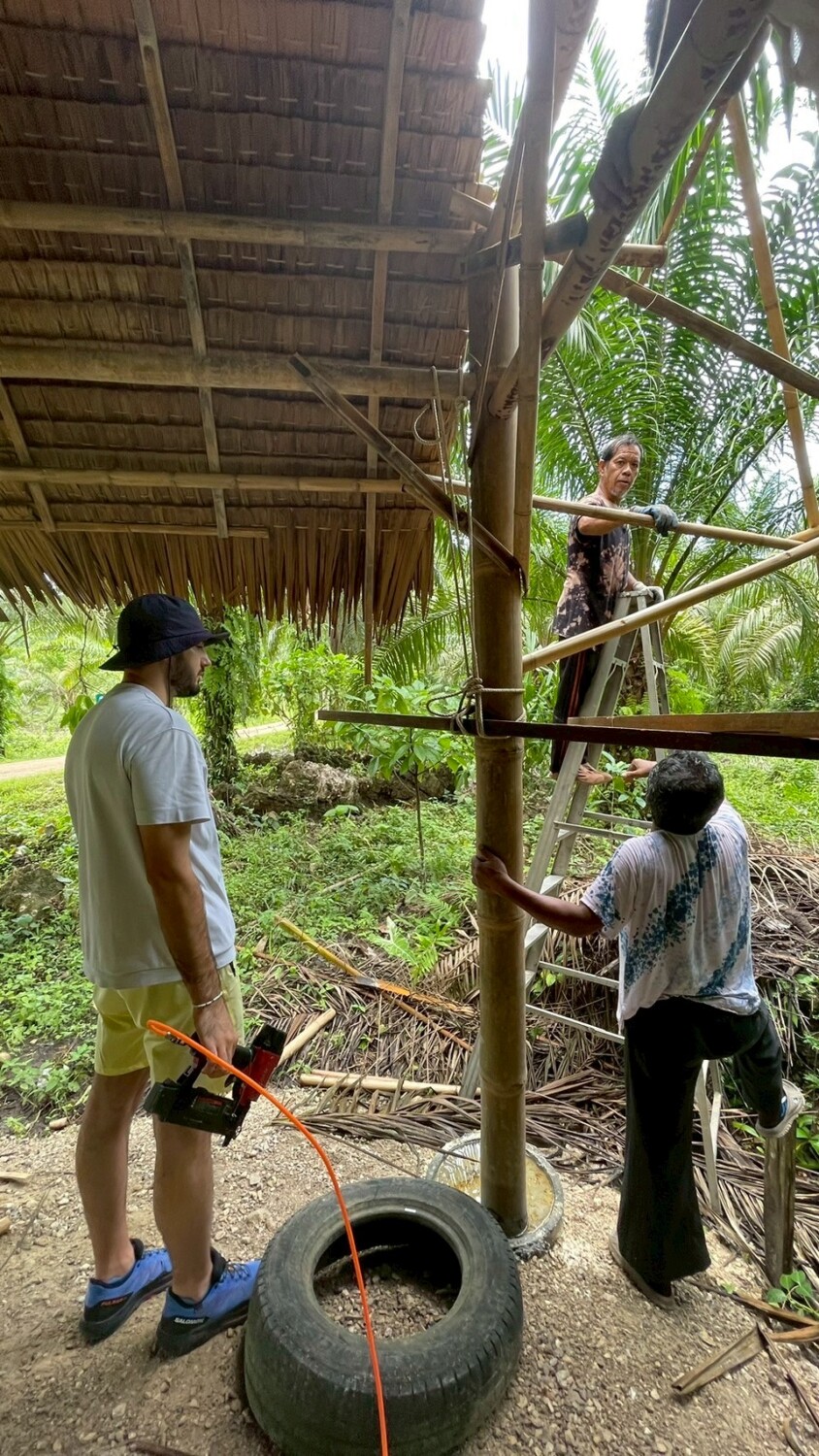
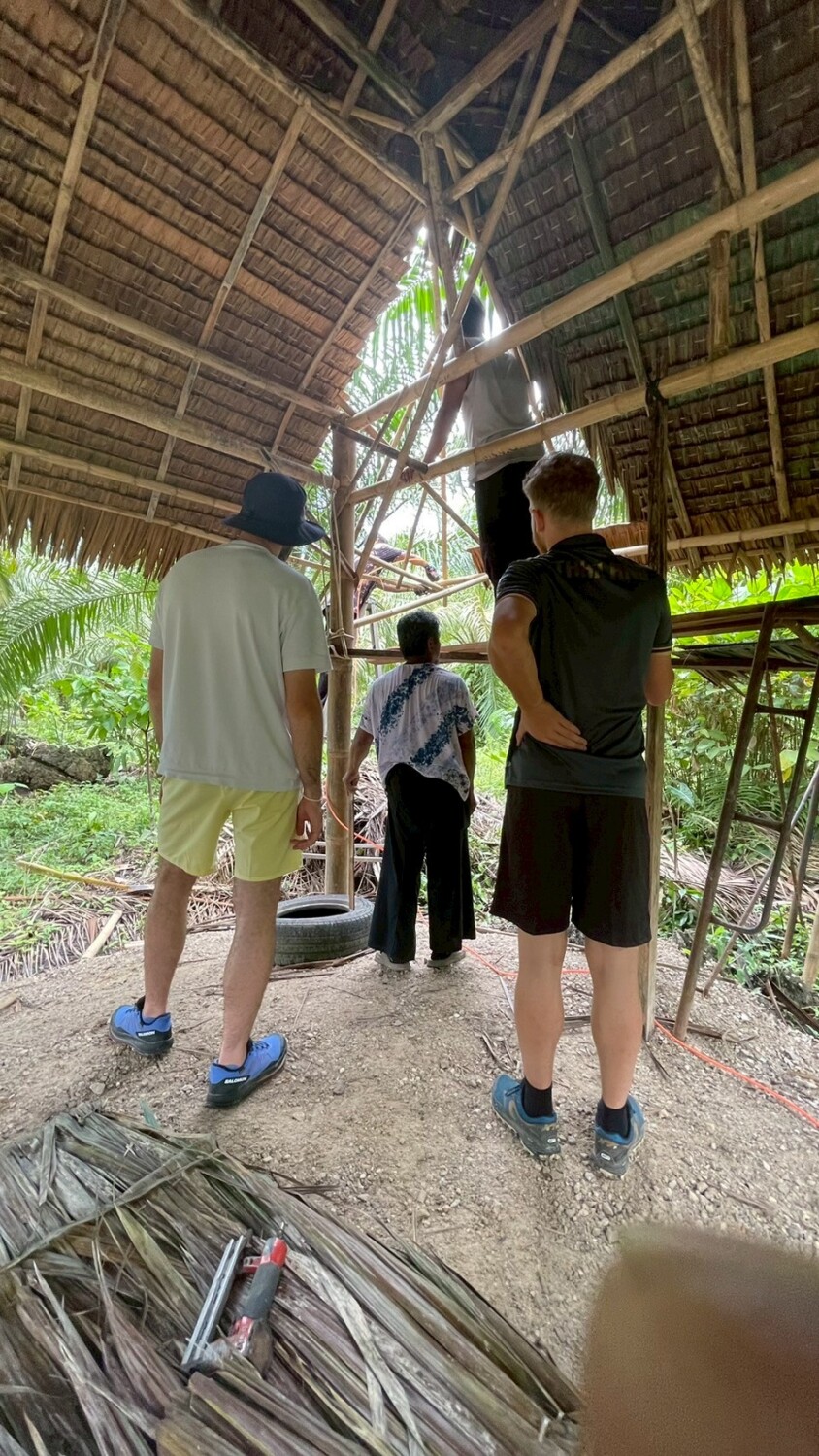
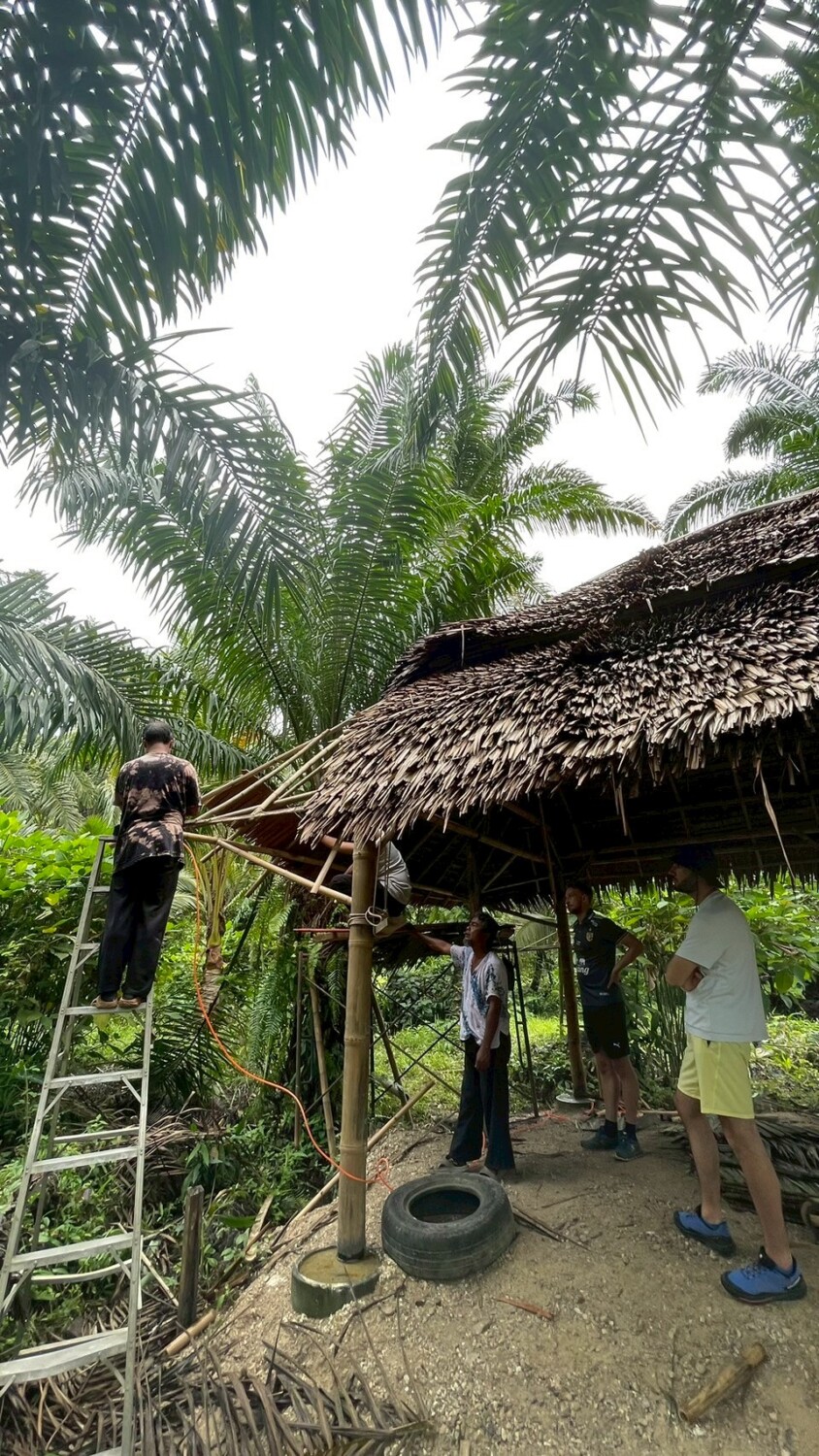
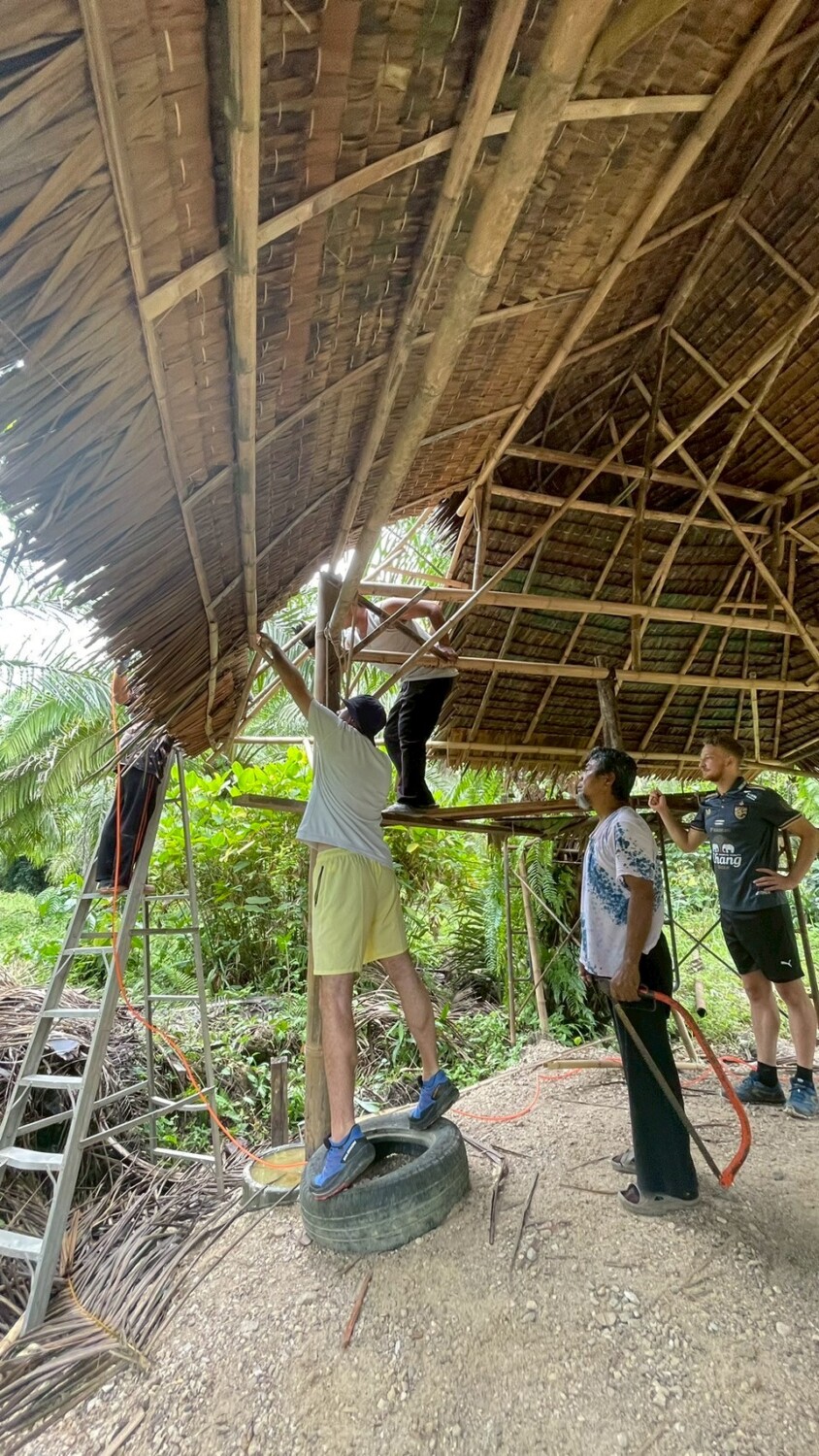
The students dedicated the day to completing the roof of the bamboo structure by carefully stapling 200 sheets of Nipa Palm onto the bamboo frame. This meticulous work was both physically and creatively demanding, and its completion gave the building its finished appearance. The roof is not only a functional component but also a symbolic one—representing protection and unity. Its completion brought a strong sense of accomplishment to the whole team, and visually transformed the structure into a beautiful and complete shelter.
Day 15: Biodiversity Collage Workshop & Art Exchange
The team took part in a powerful and inspiring biodiversity collage workshop in Ao Nang, joined by Chaiyut. The workshop was led by Romy, an ecological activist committed to raising awareness about environmental destruction. It was a creative and educational group activity designed to explore biodiversity, ecosystems, and the relationship between nature and human impact.
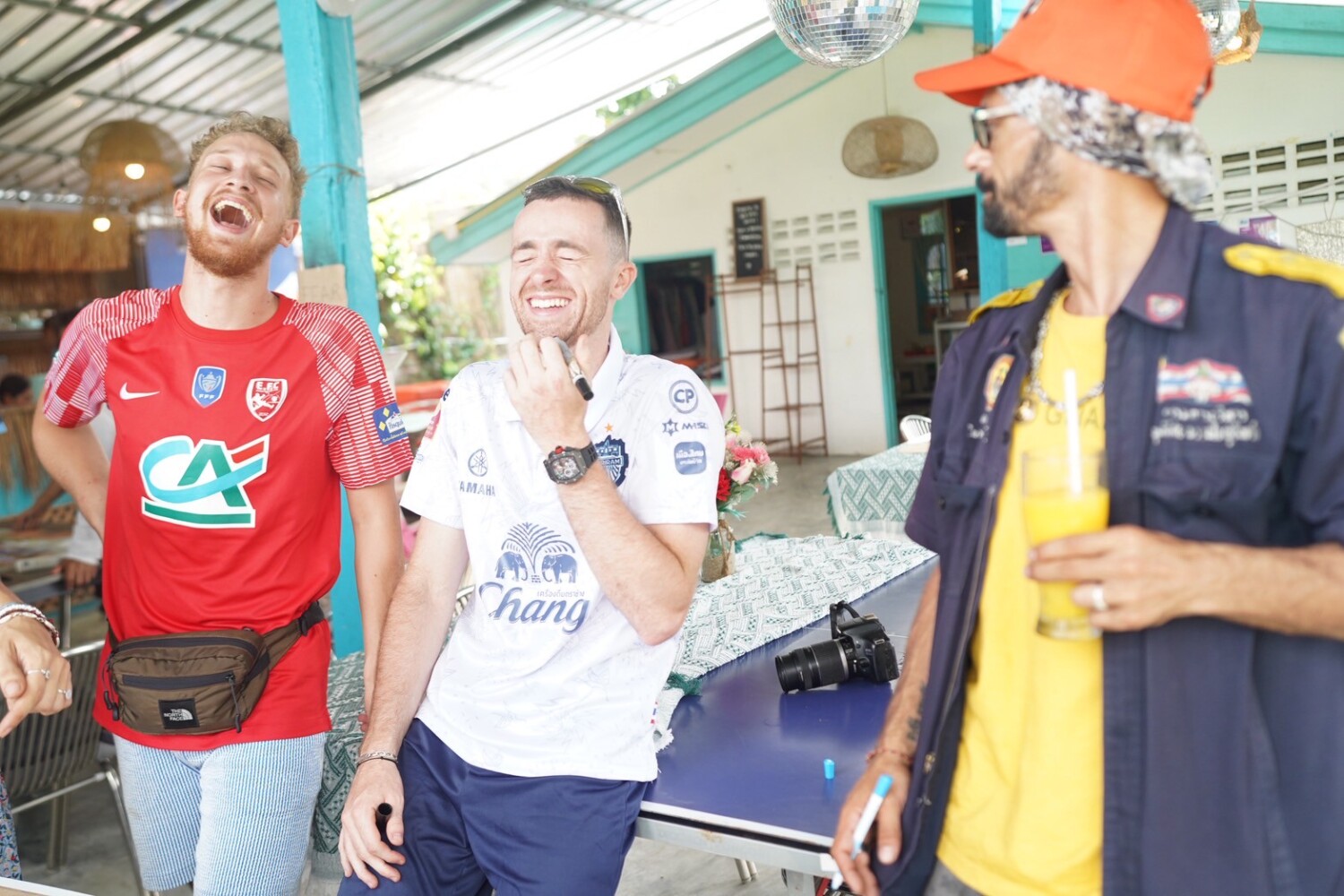

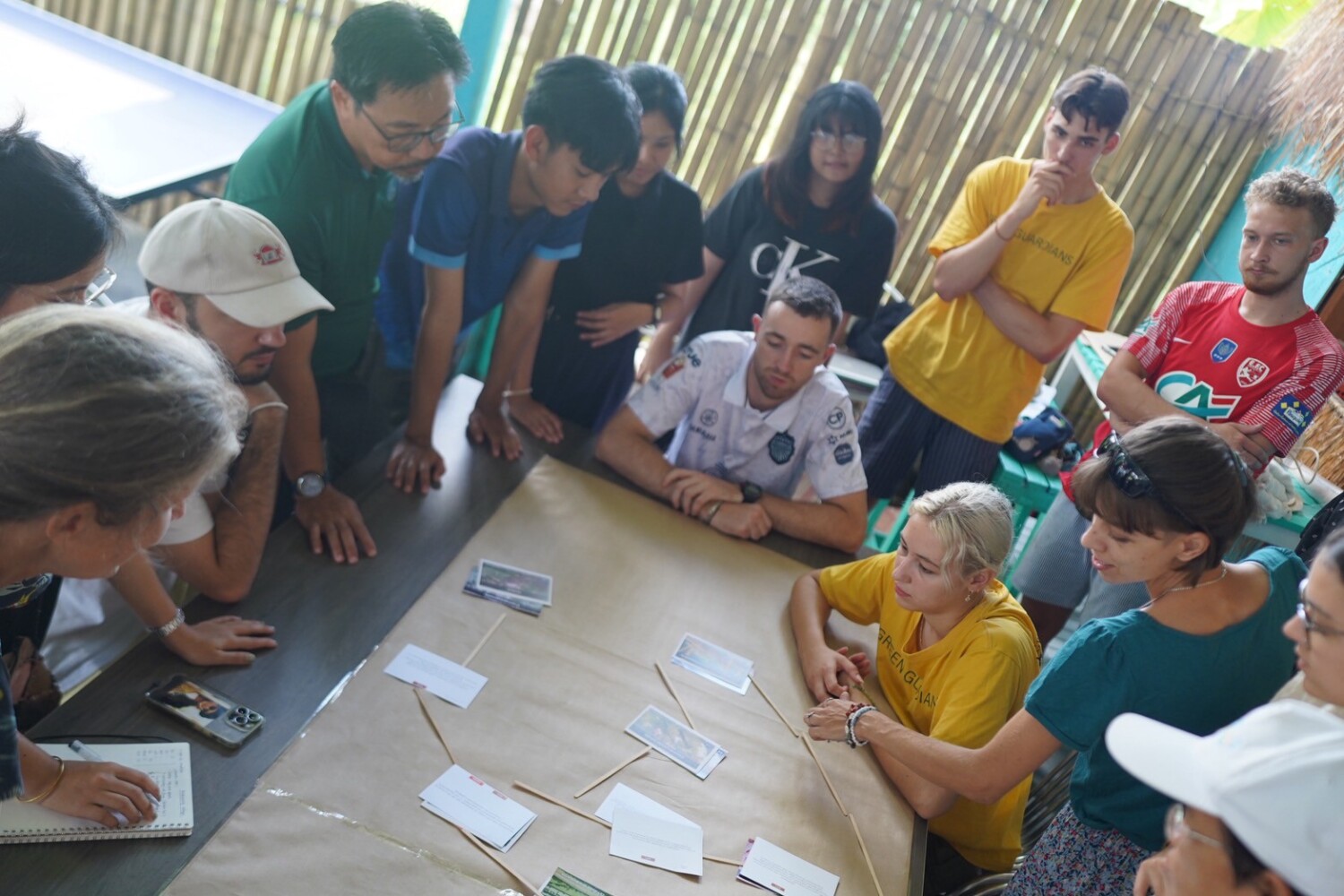
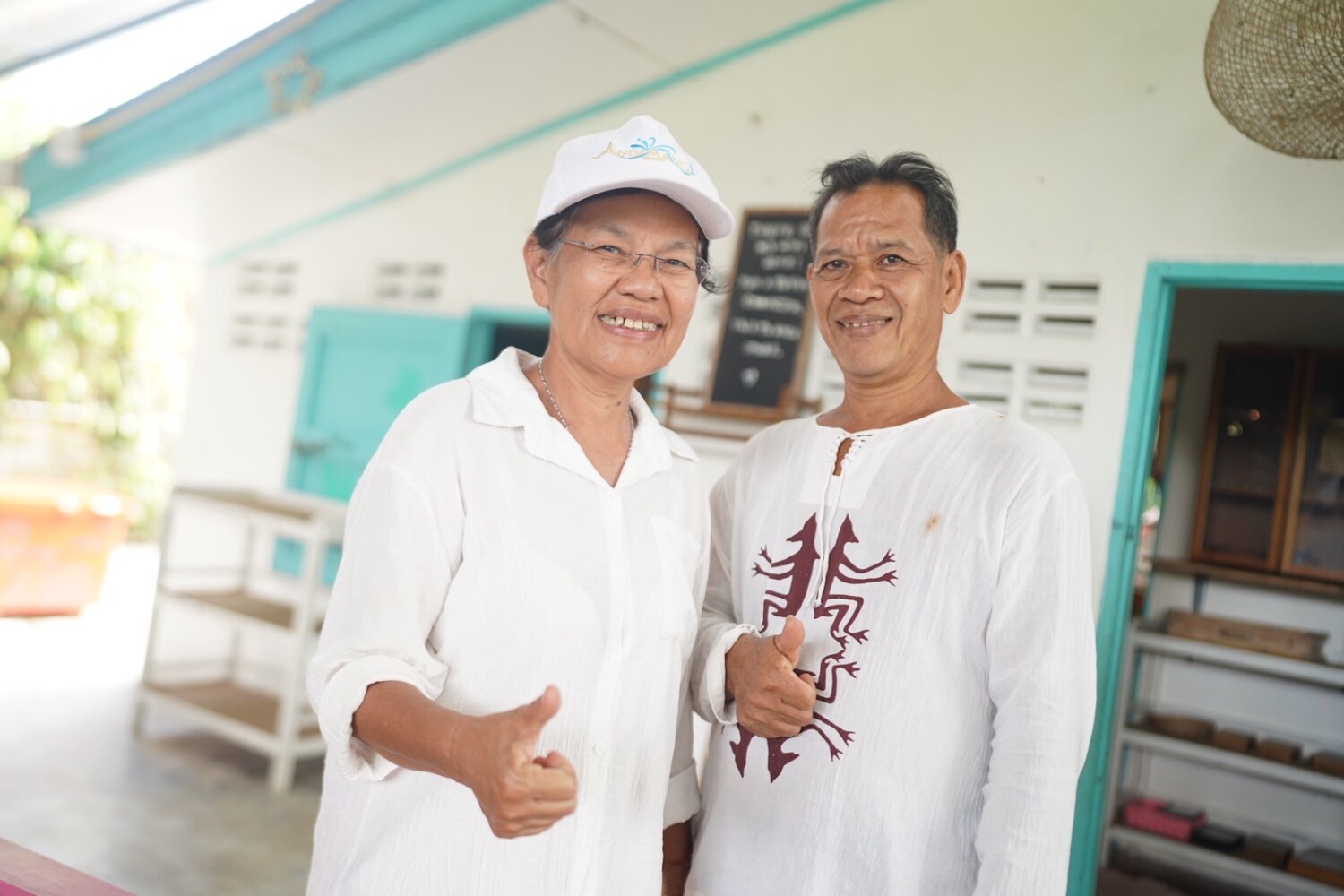
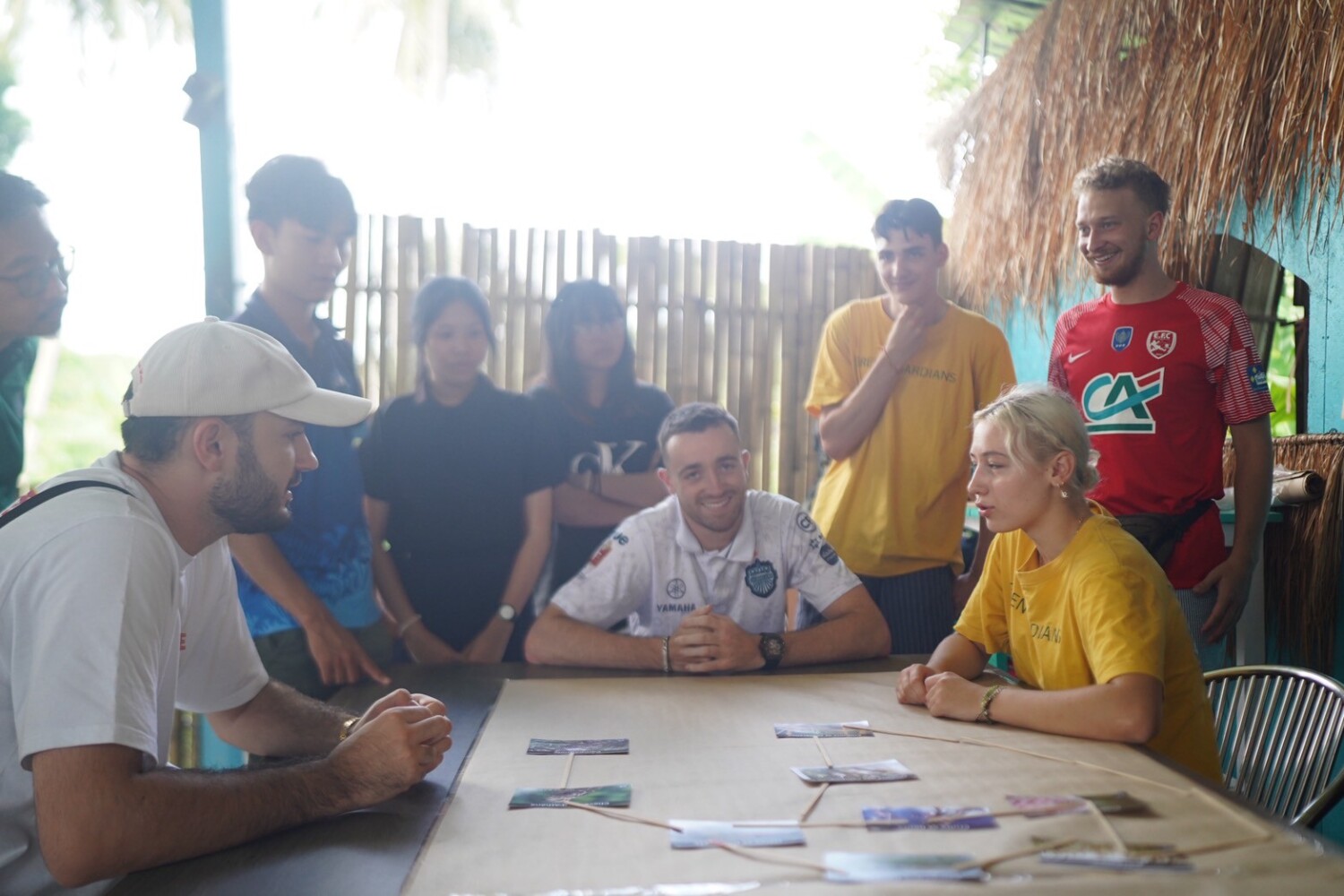
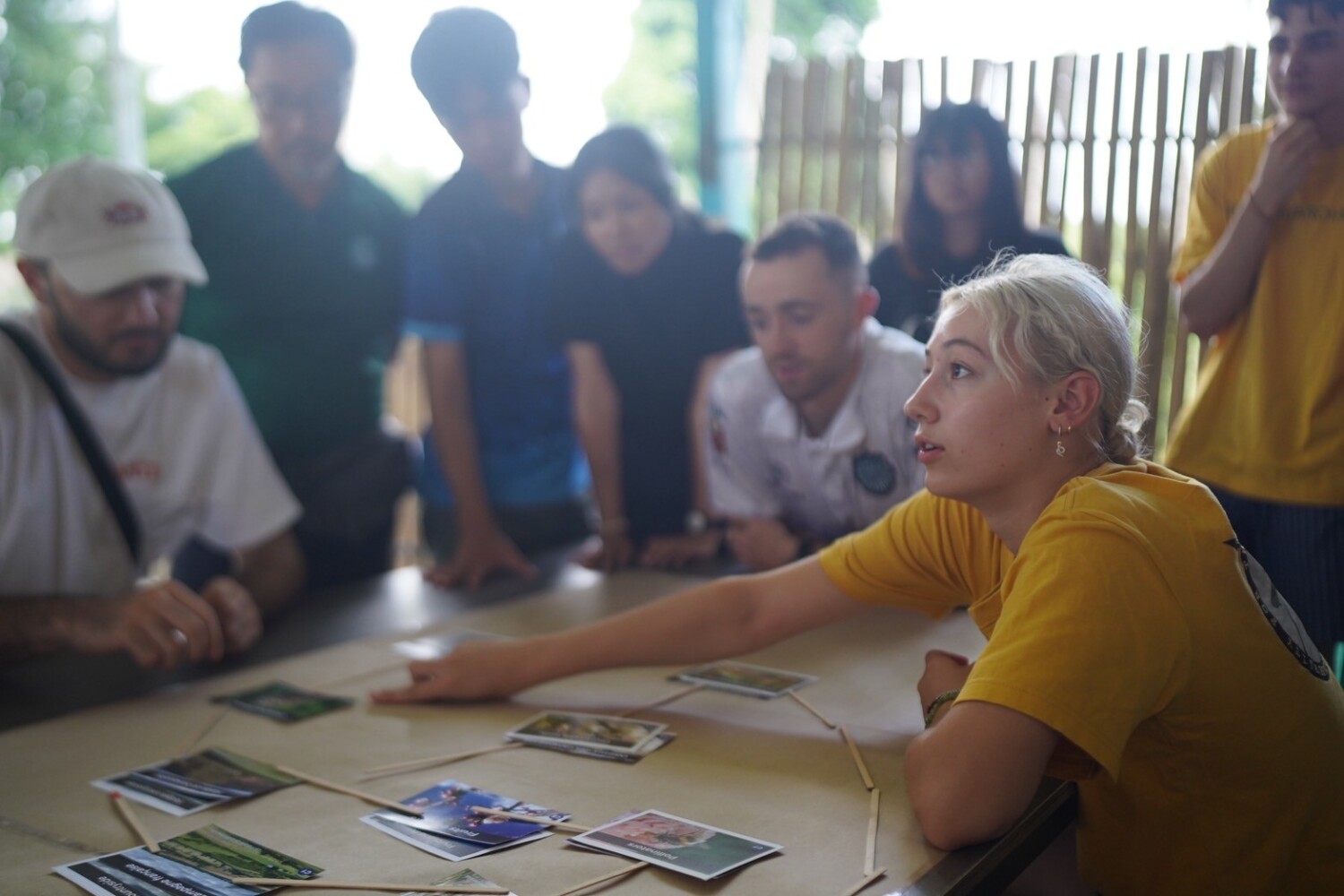
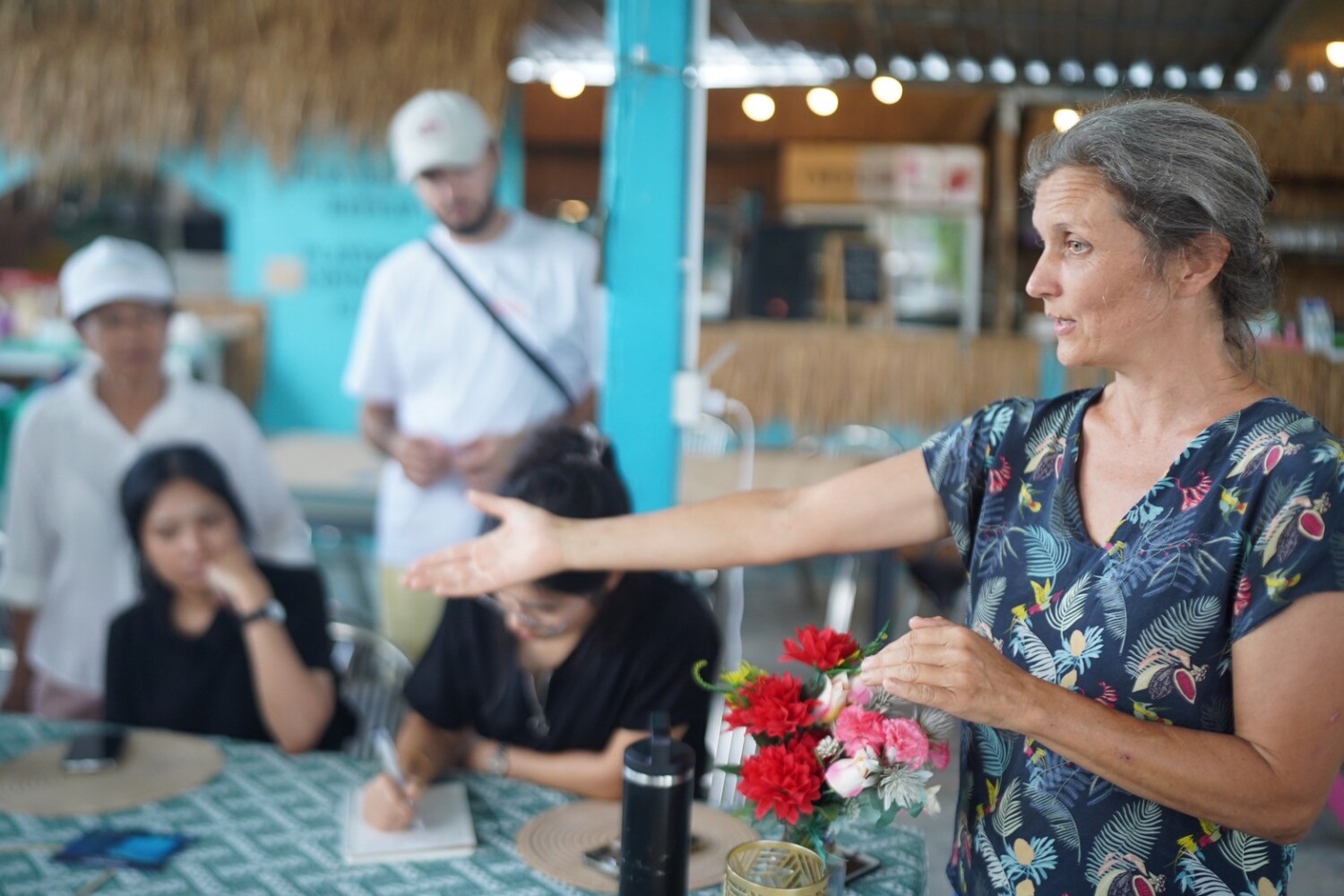
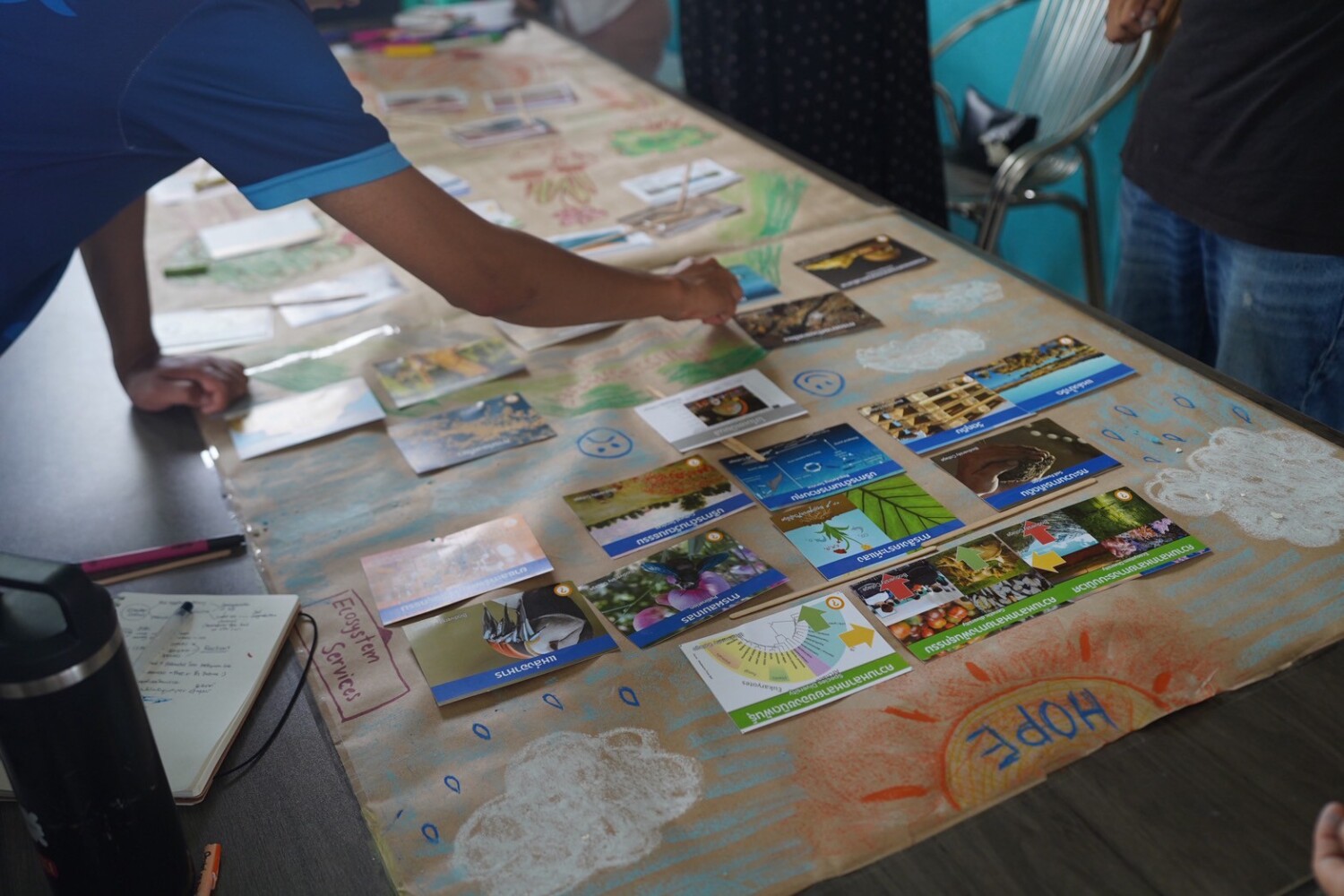
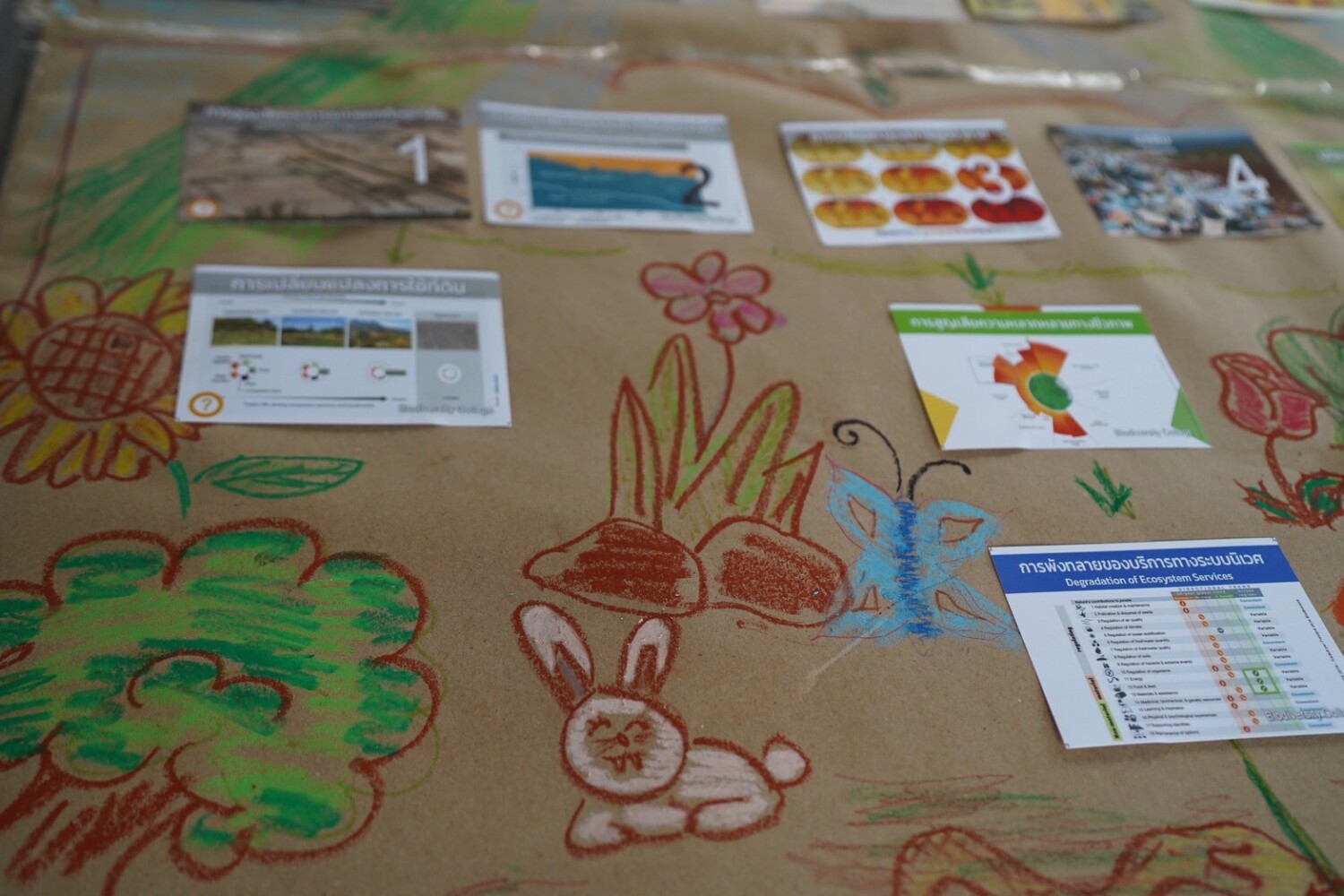
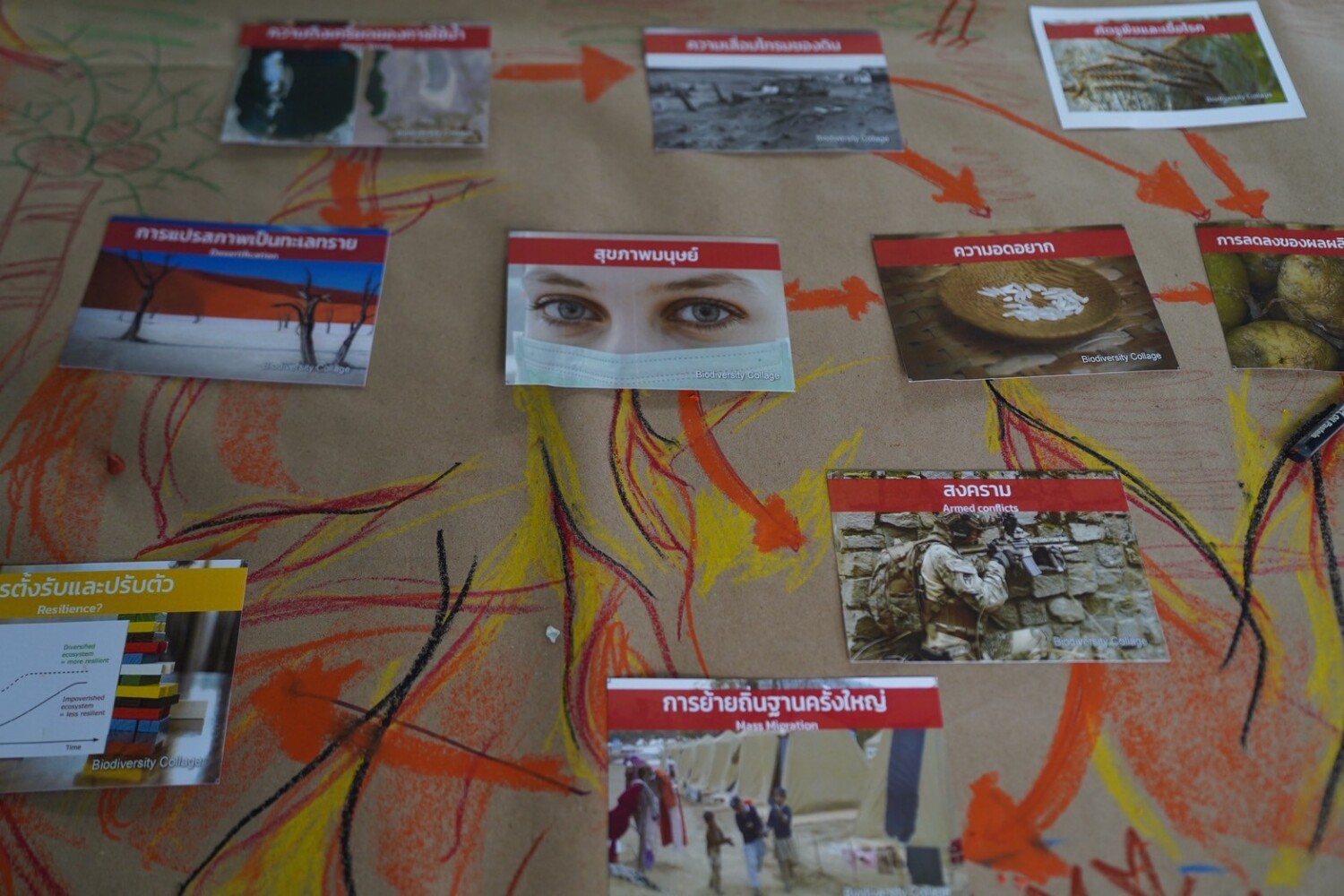

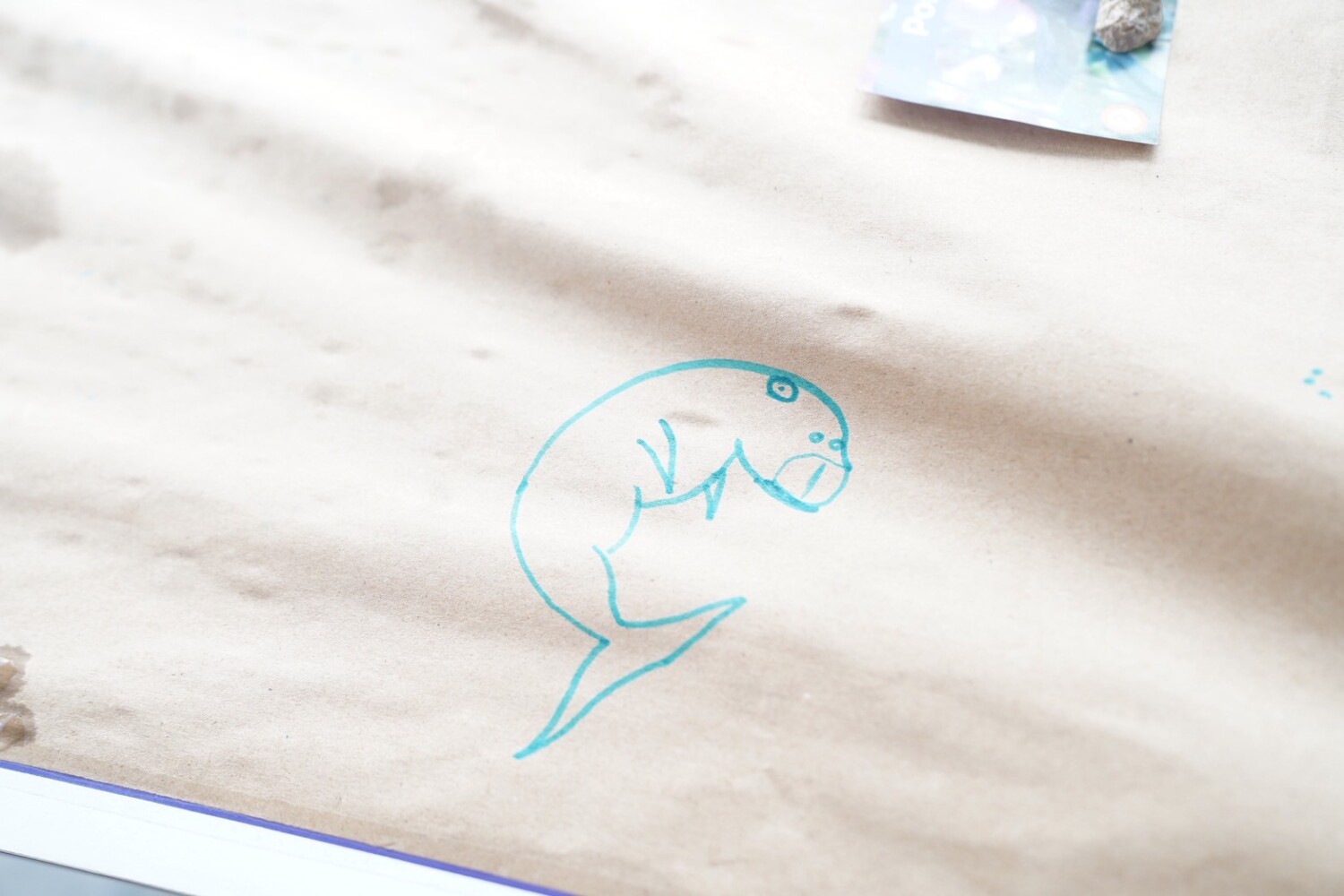
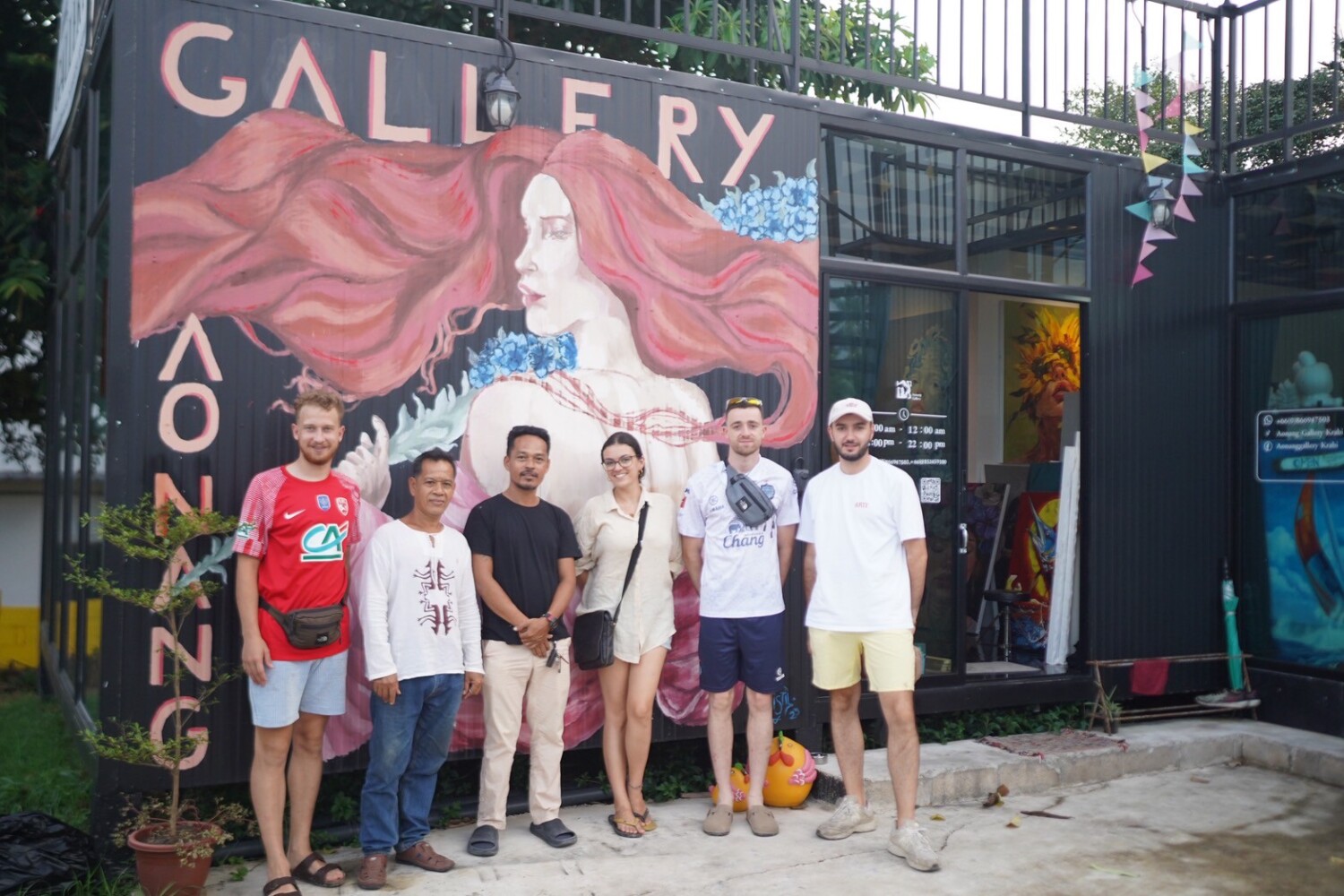
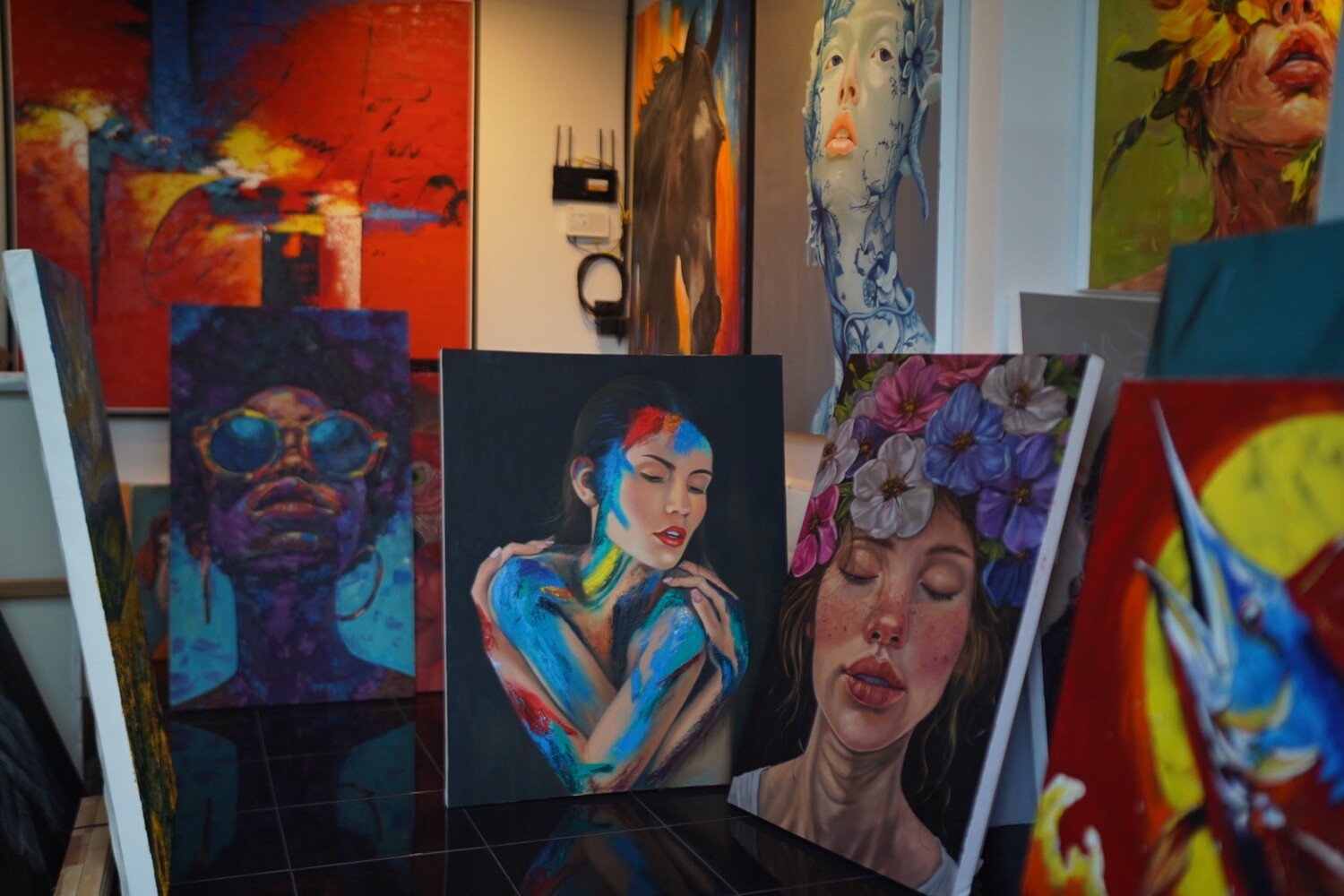
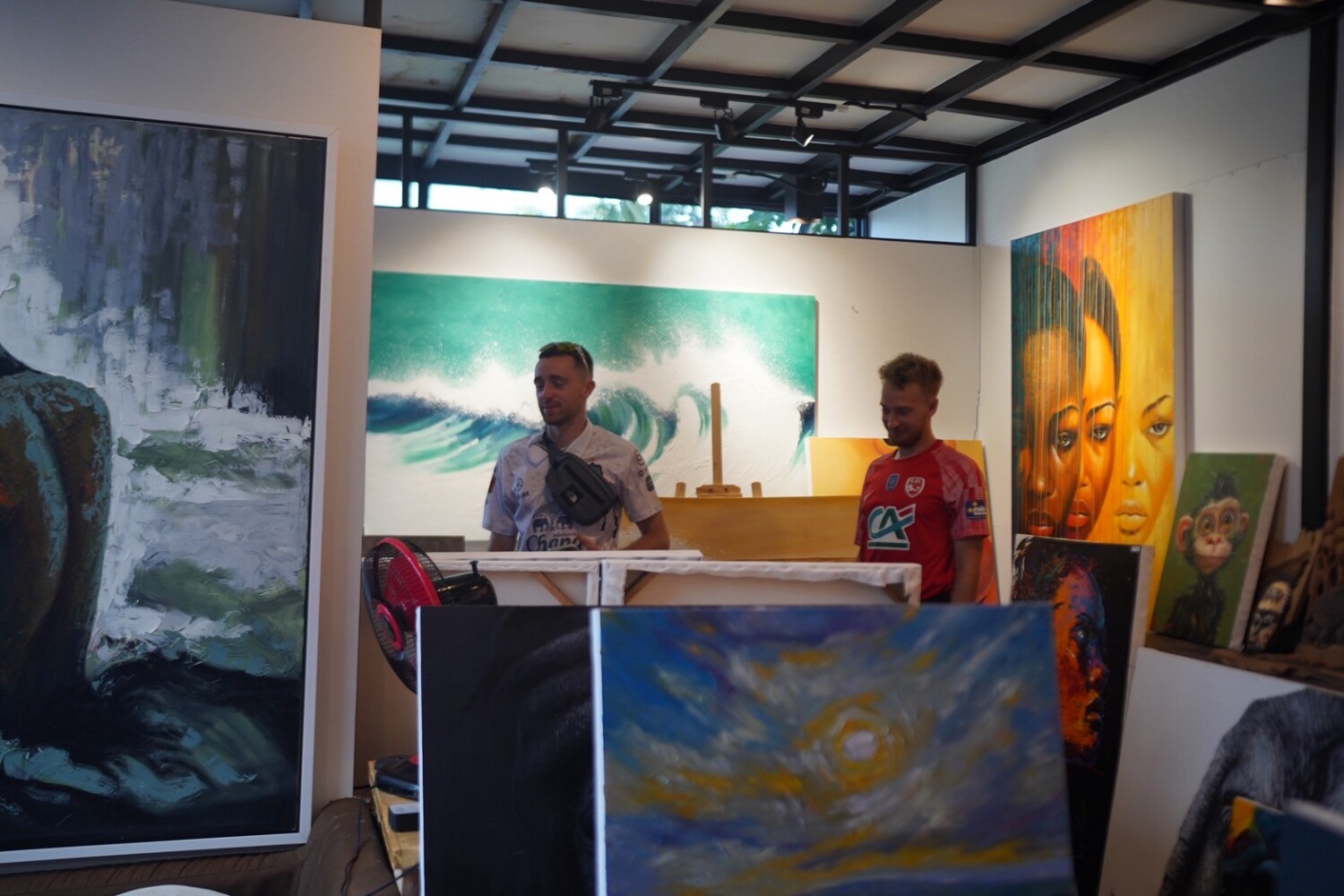
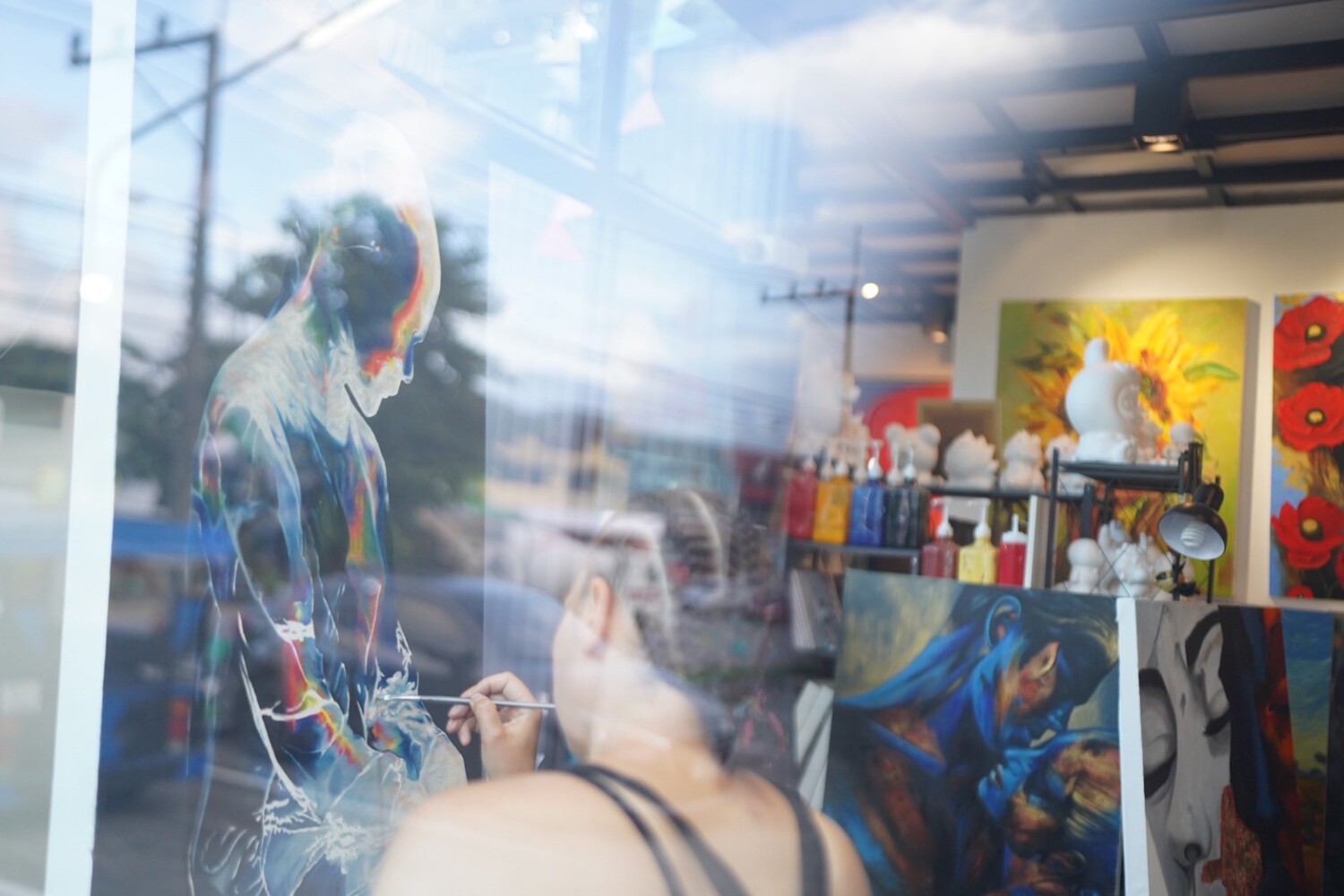
The participants included Thai locals, expats, and our French students from Nature Living Institute and Green Guardians. Together, they created expressive and meaningful collages that reflected both the beauty and the fragility of the ecosystems that surround us. The activity sparked great conversations about the threats to nature and potential solutions we can implement to preserve it.
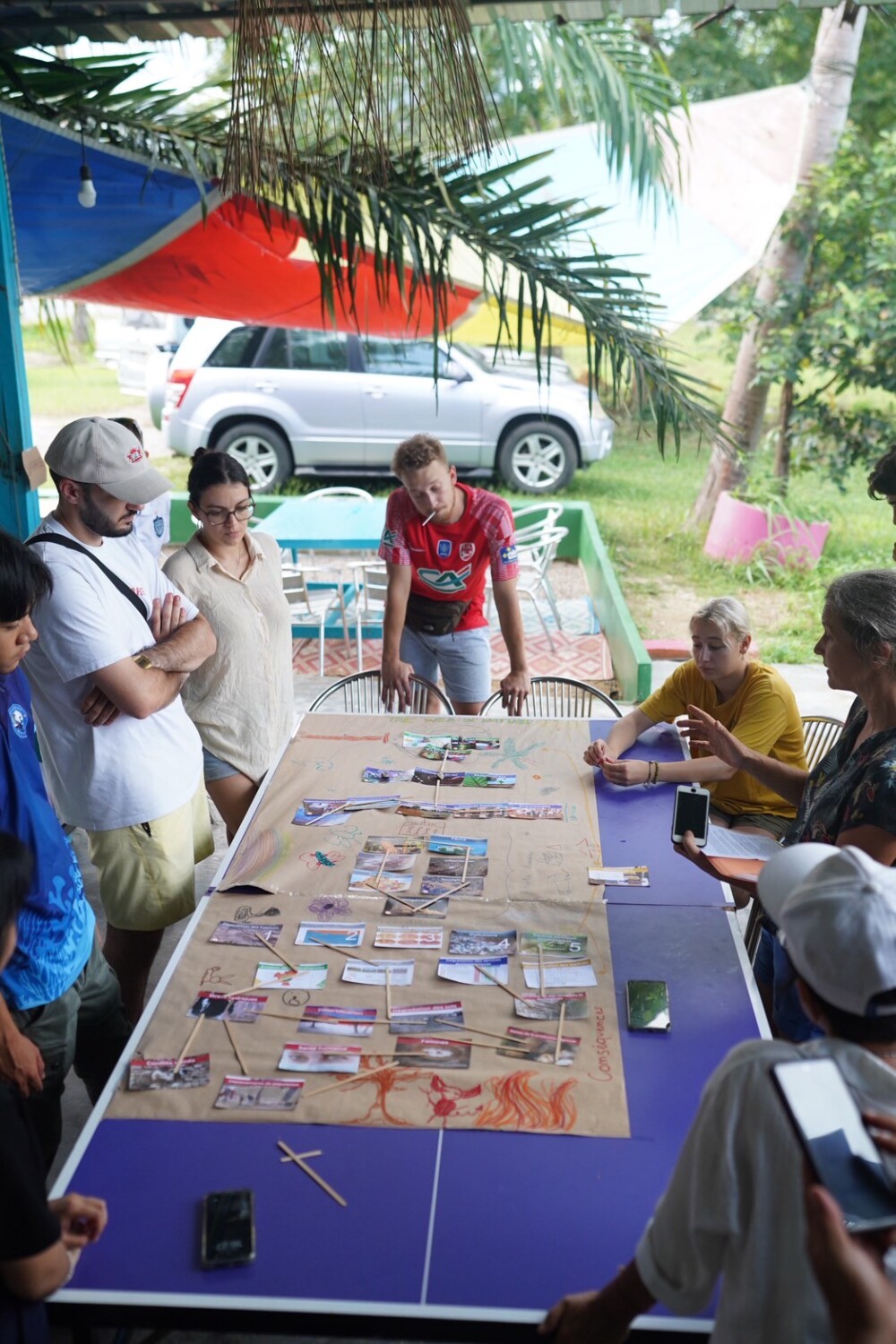
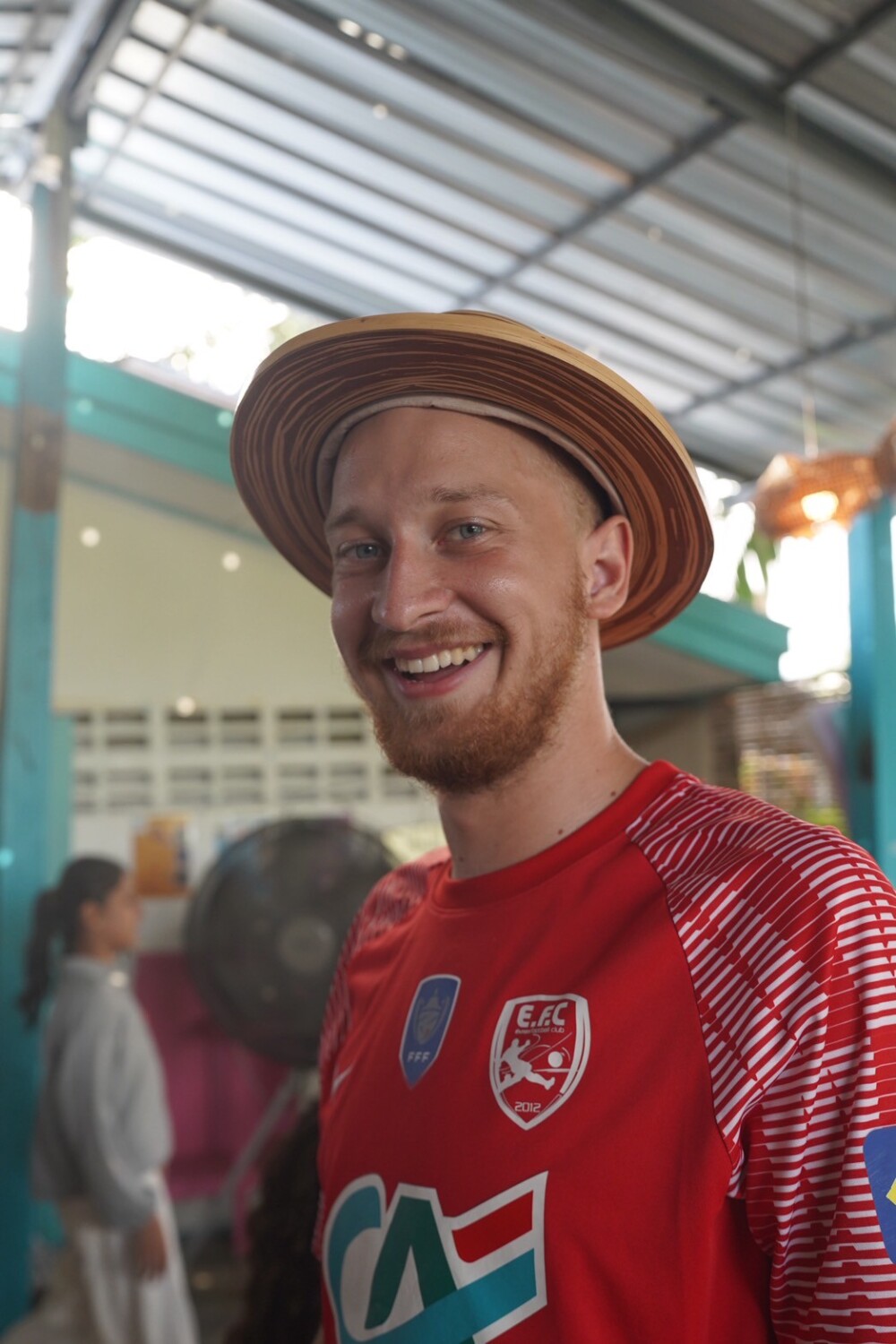
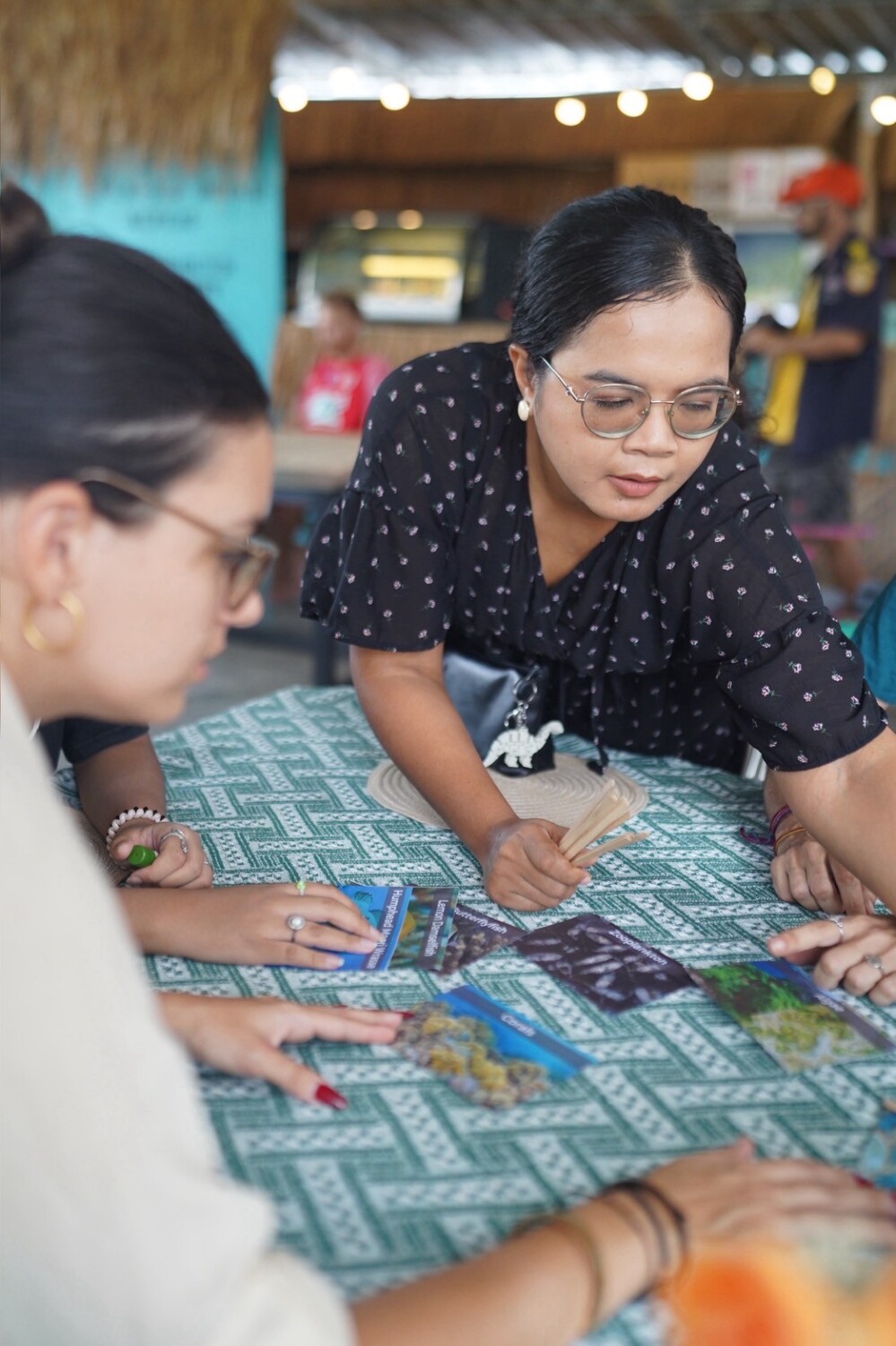
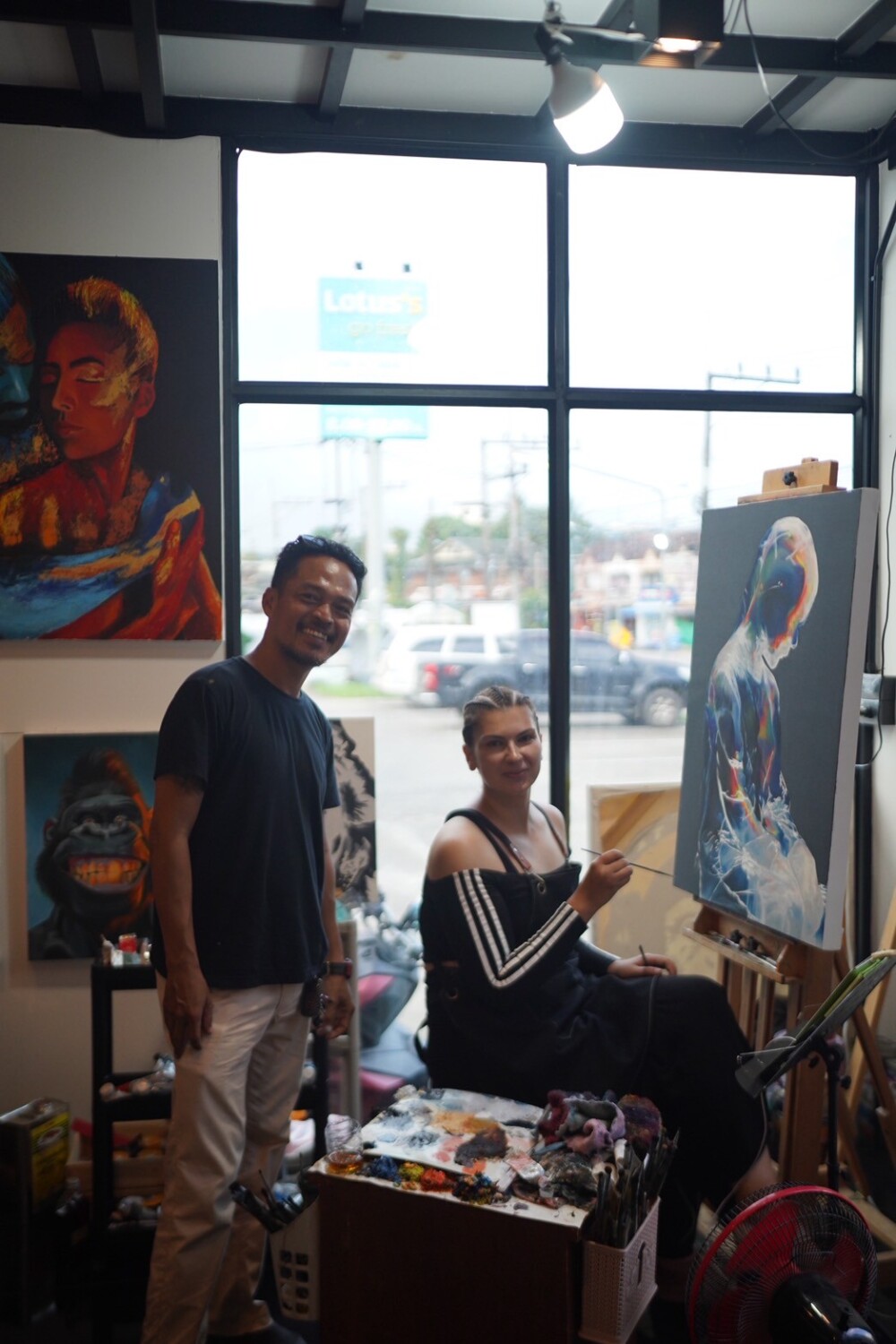
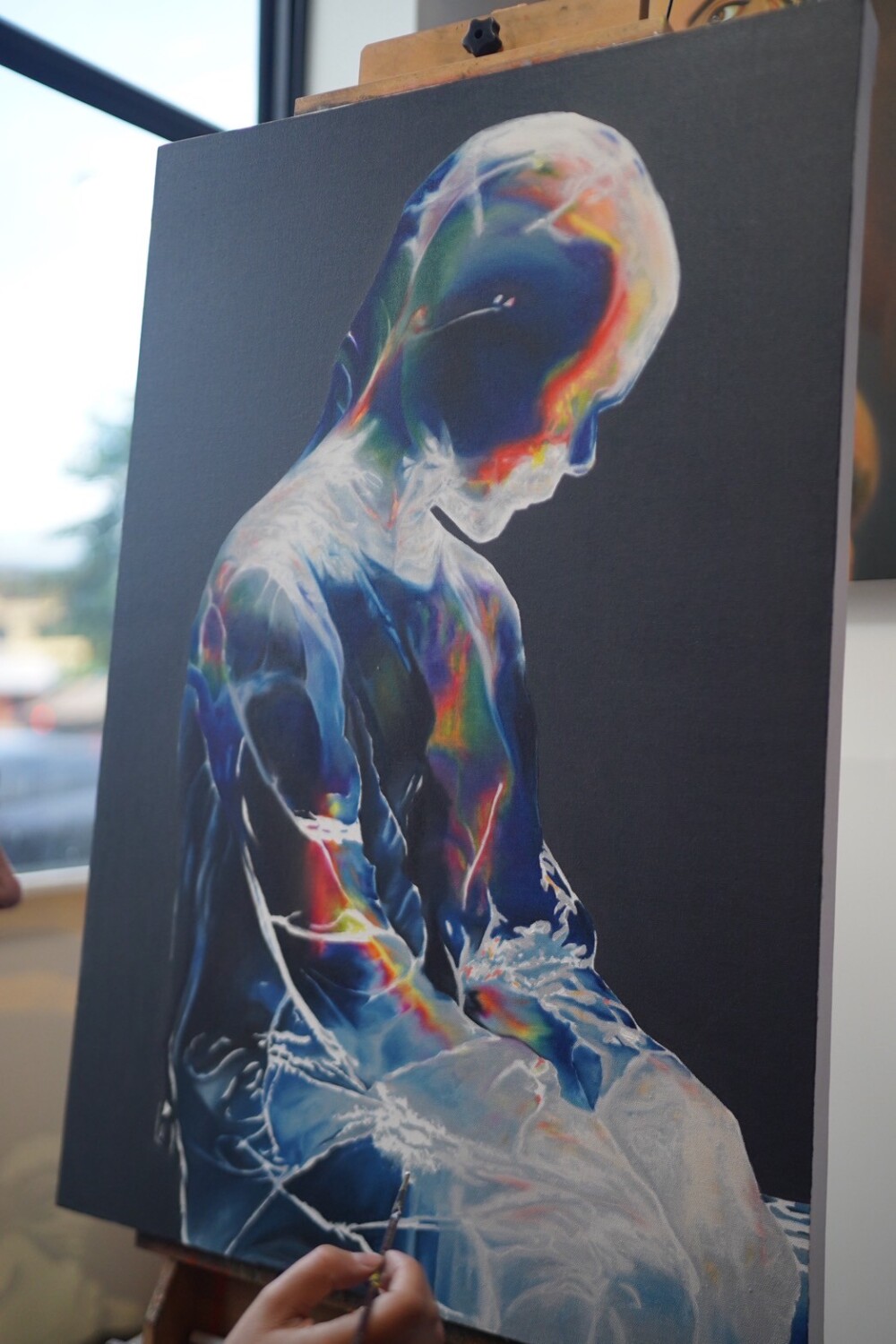
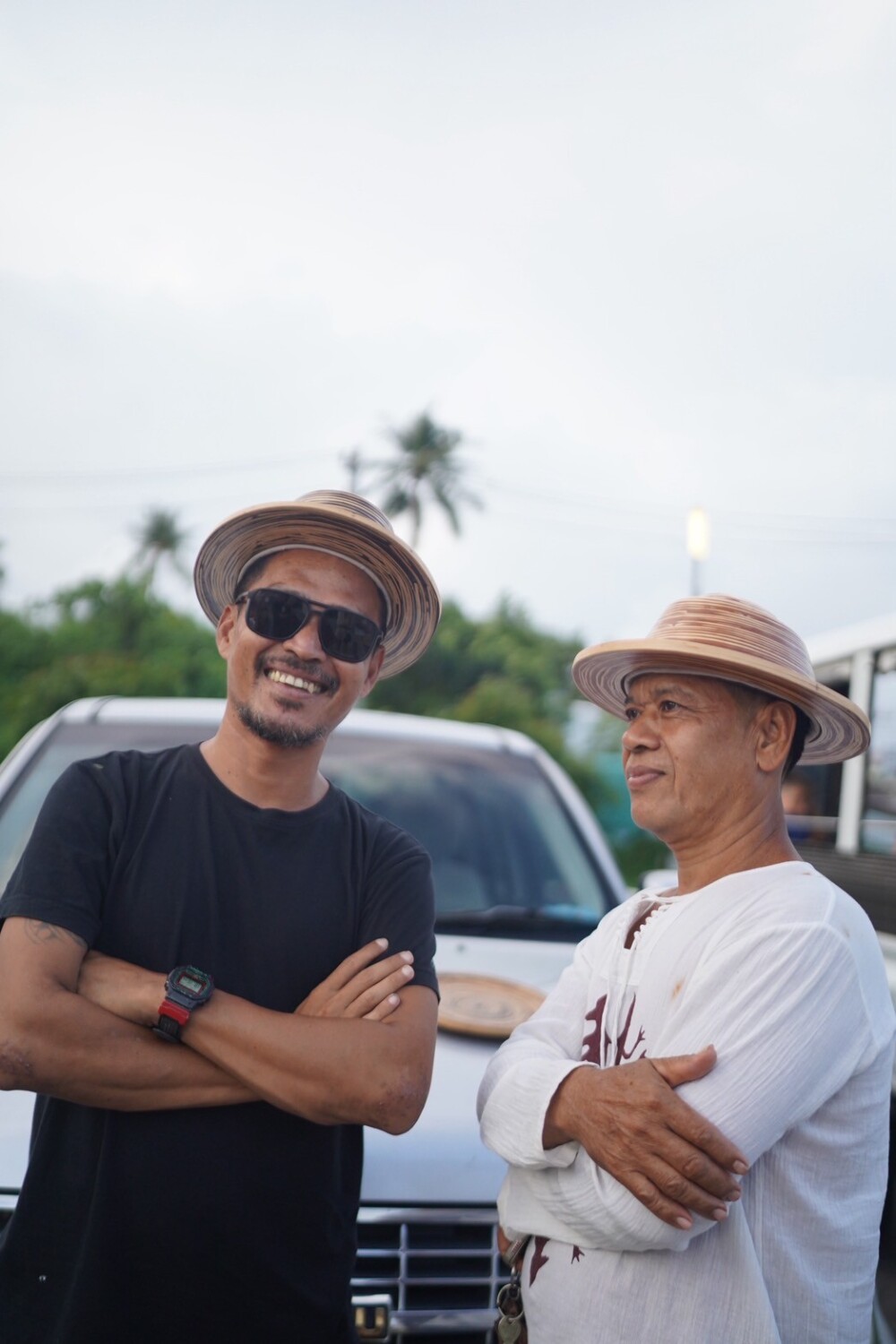
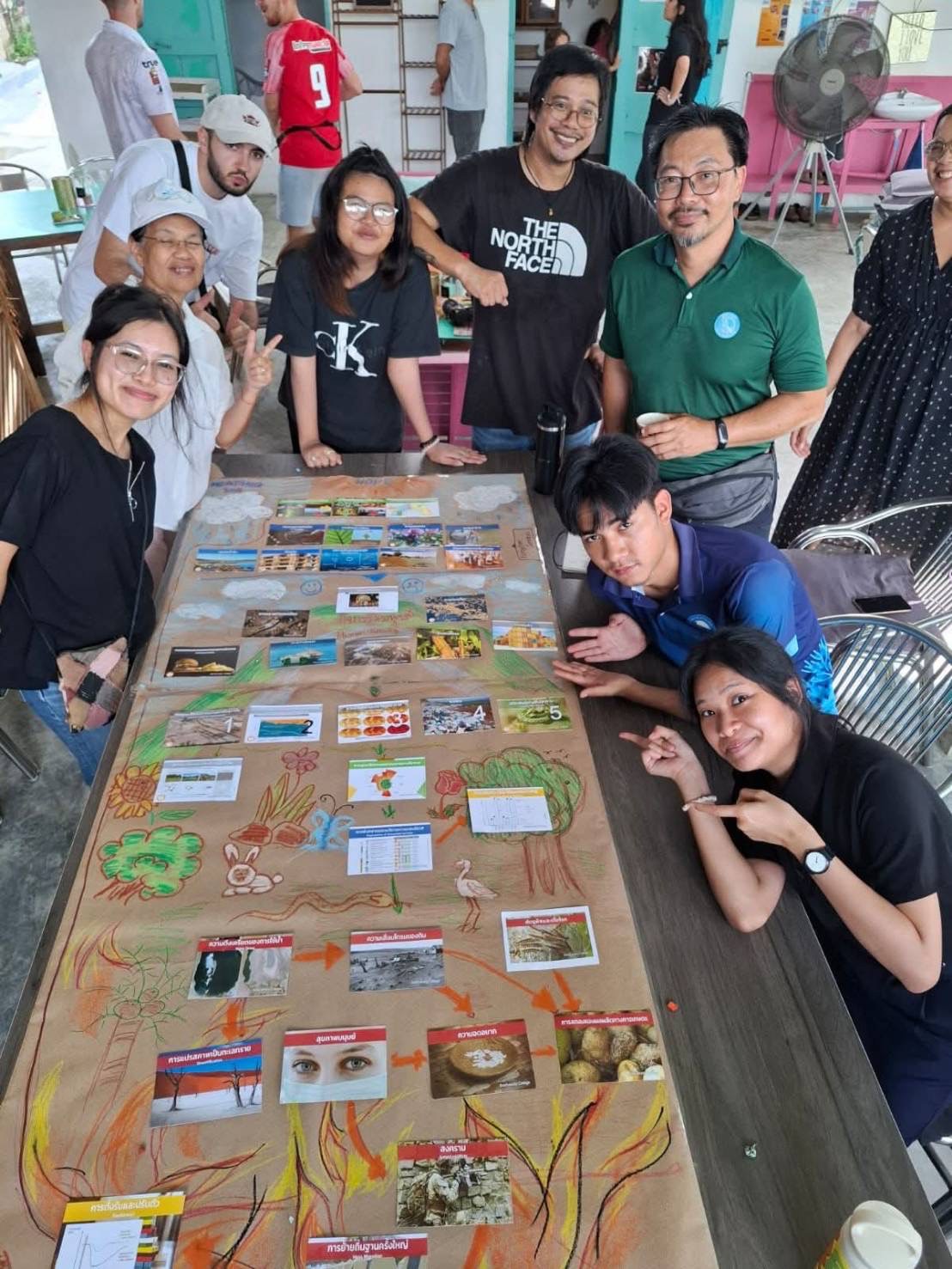

After the workshop, the group visited a local art gallery owned by Omar, an artist who offers drawing and painting lessons to children and adults alike. Omar and Chaiyut exchanged ideas, and plans were set in motion to develop future artistic workshops that combine art, culture, and ecological awareness.
Day 16: Pizza Oven Planning & Heavy Work Day
Friday began with the students giving finishing touches to the Nipa Palm roof. They carefully trimmed the edges of the Nipa Palm sheets to ensure that the roof looked neat and even across all sides. This attention to detail not only enhanced the structure’s overall appearance but also demonstrated the students’ growing skill and pride in their craftsmanship.
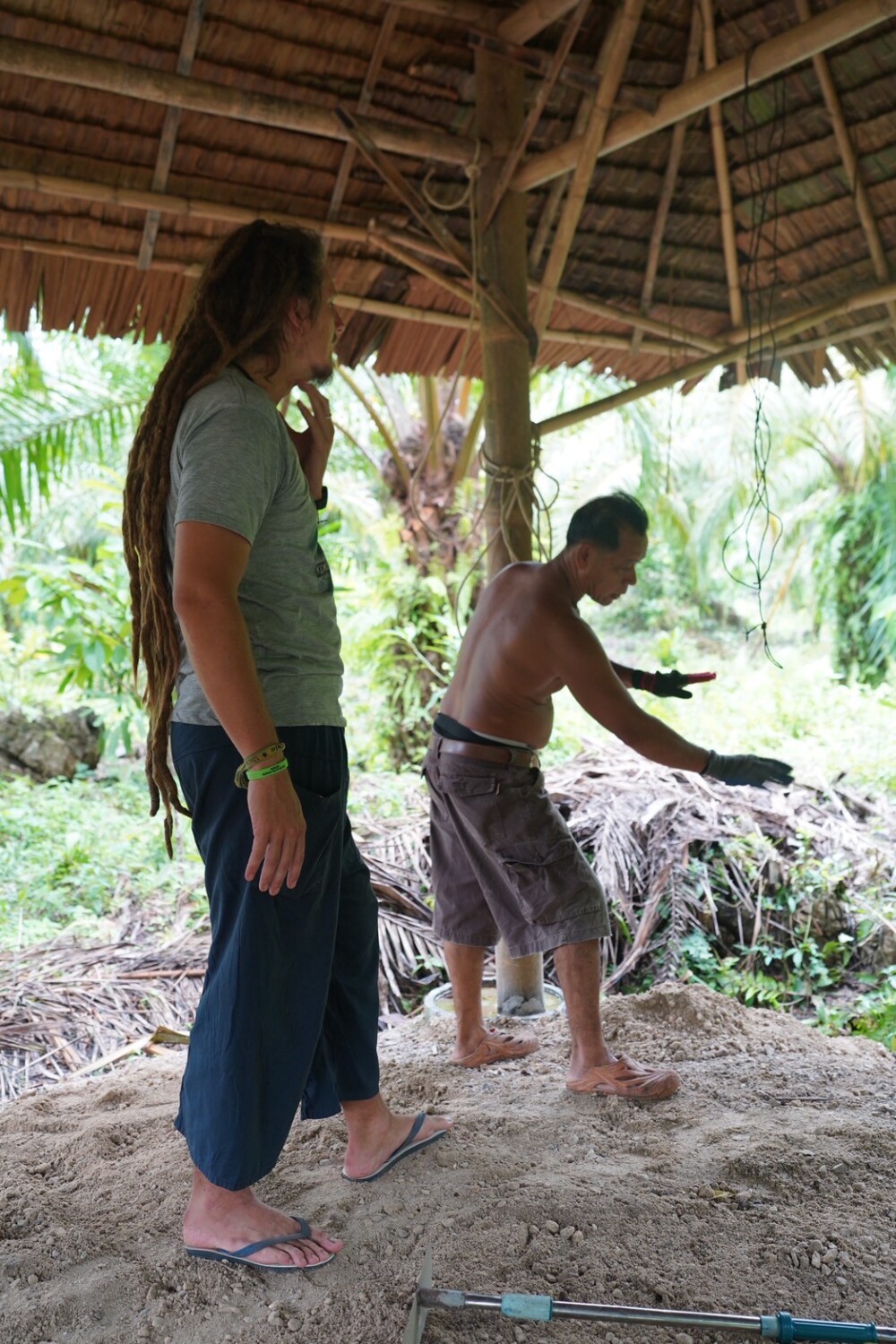


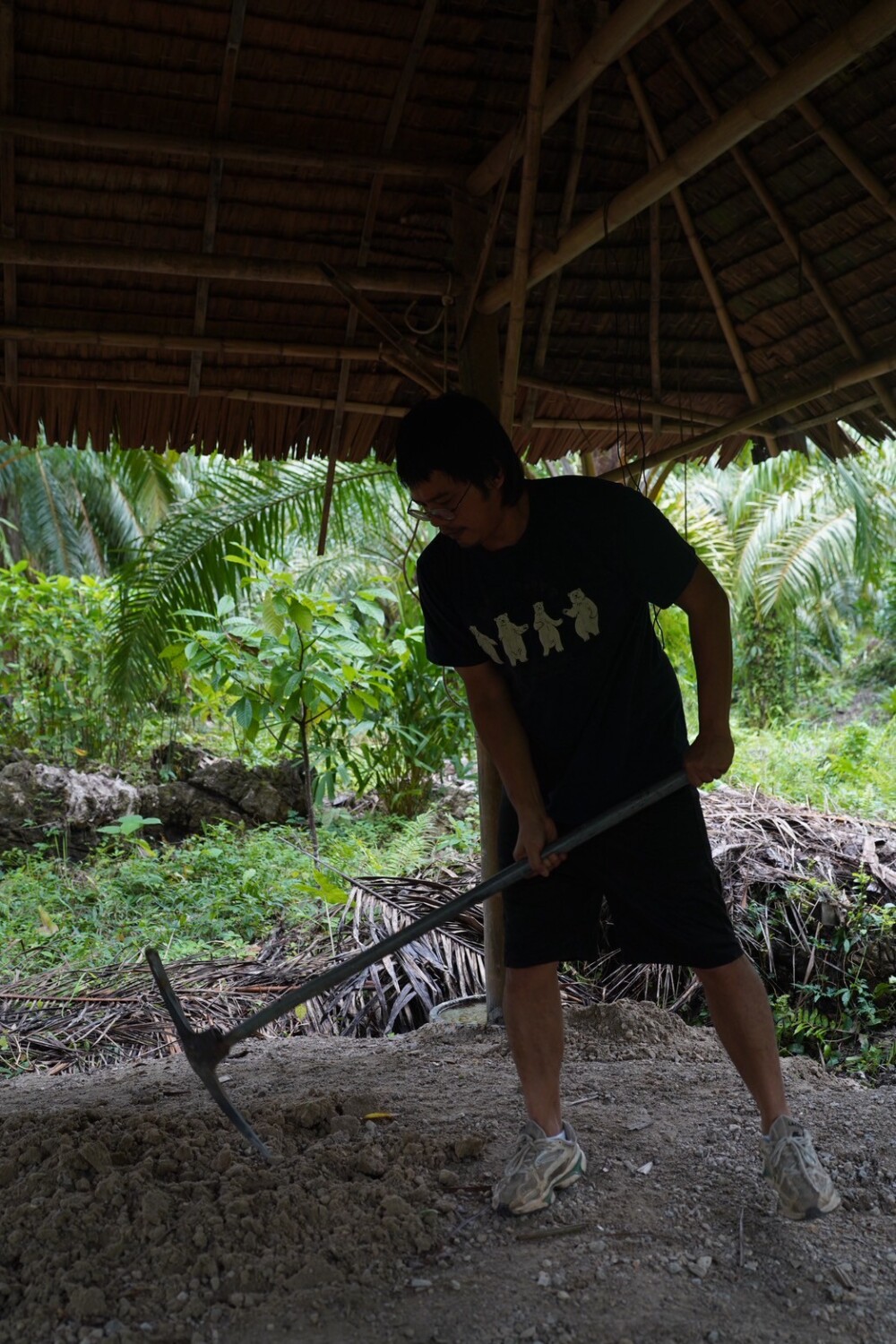
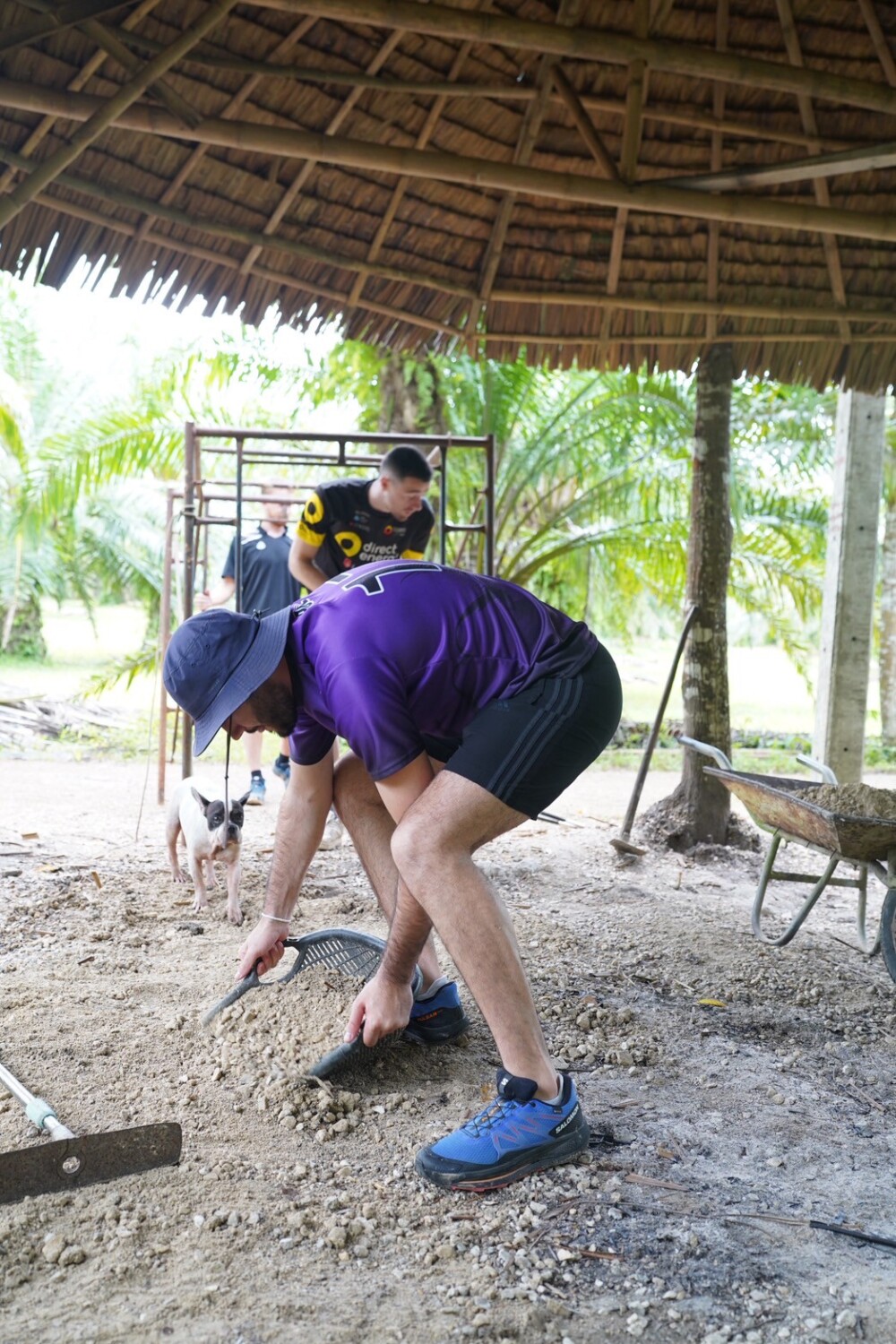
After completing the roof adjustments, the team moved on to preparing for the next major project: building a traditional pizza oven in the outdoor kitchen area. We were joined by our friend Zack, a long-time Ao Luek resident with over 12 years of experience and firsthand knowledge from having built his own pizza oven. His input was incredibly helpful in guiding the planning and design.
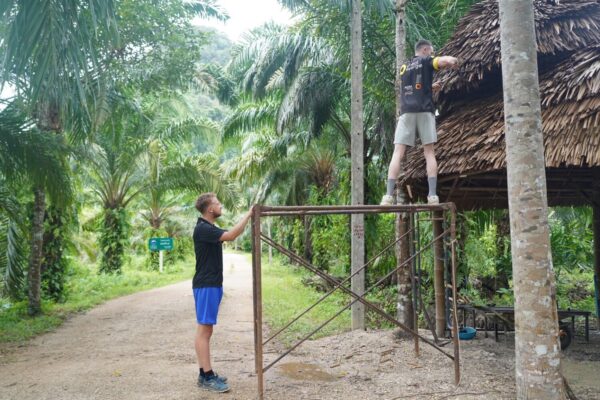
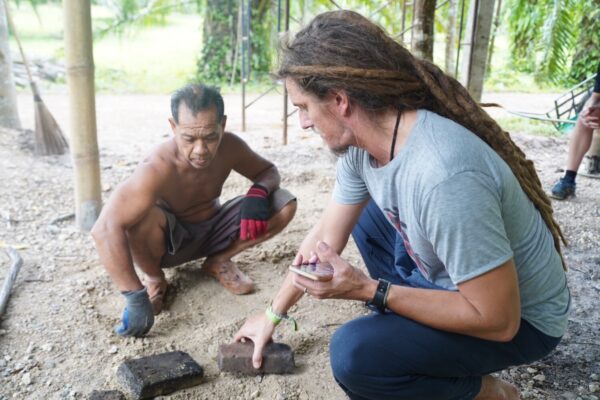
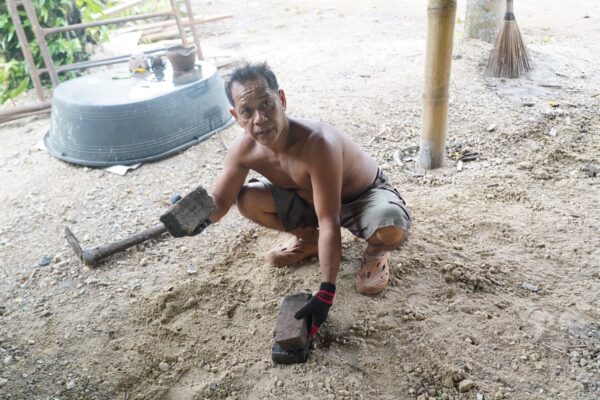
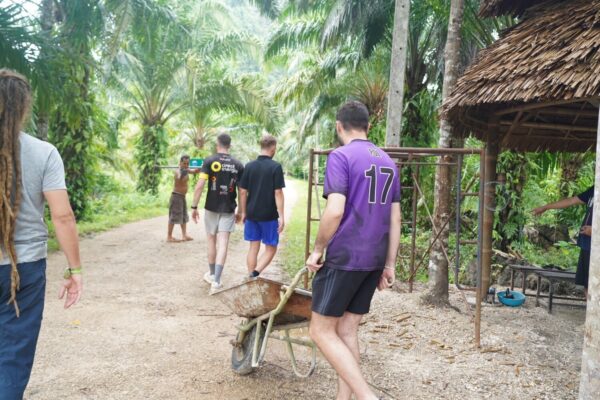
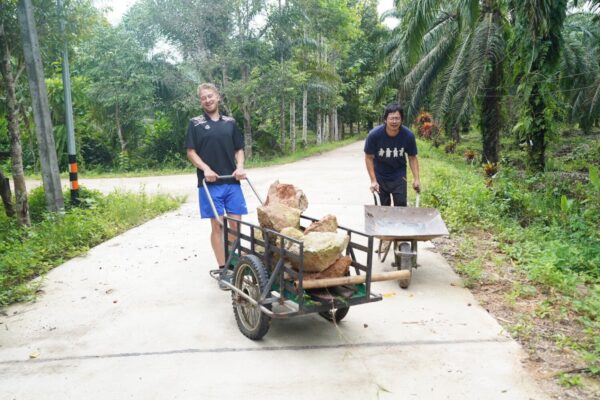
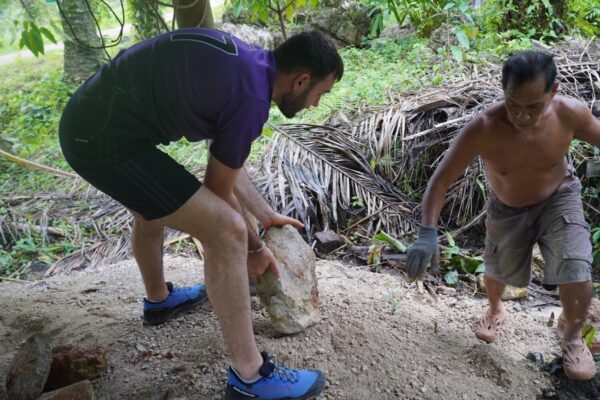
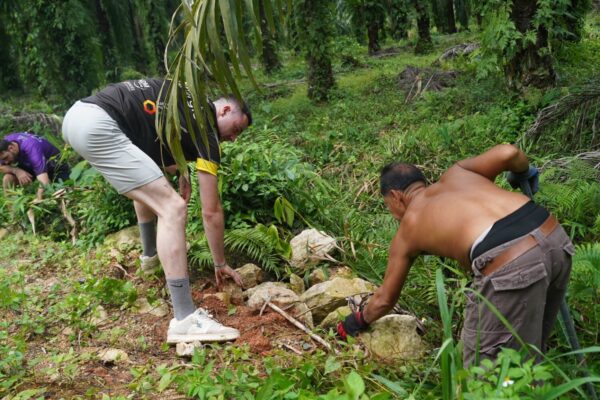
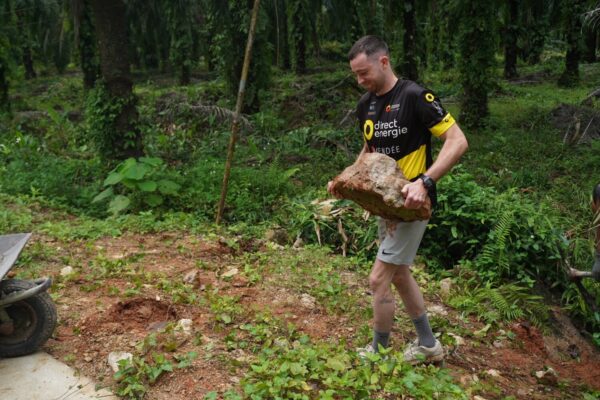
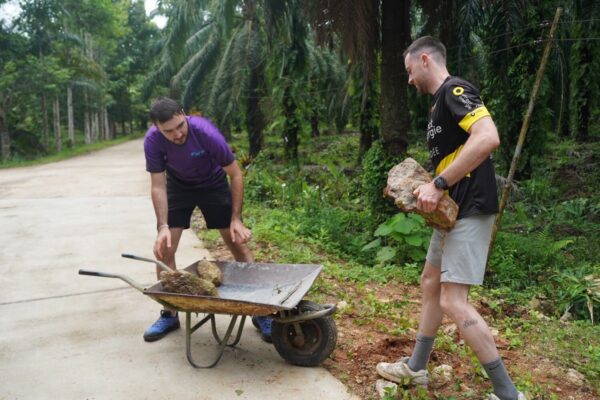
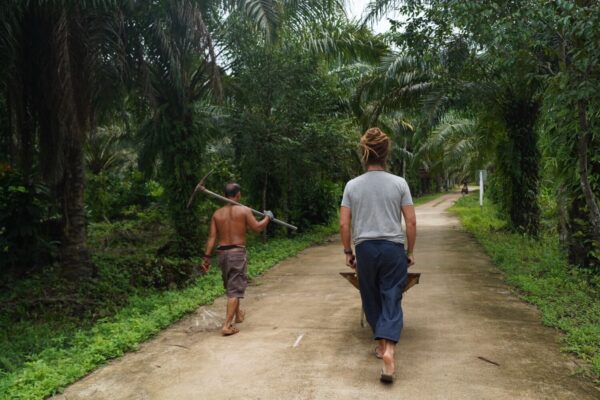

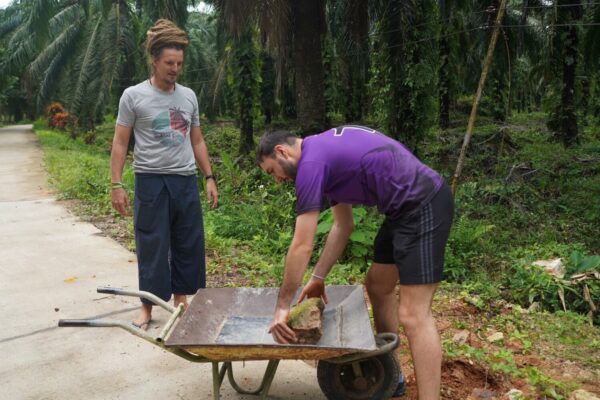
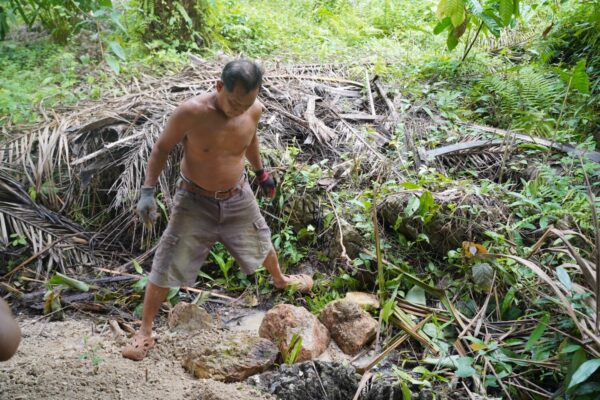
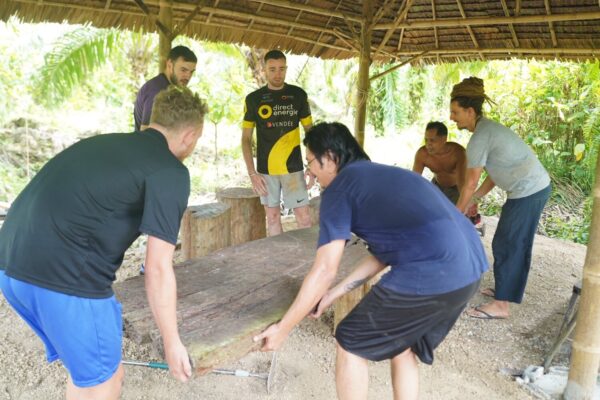
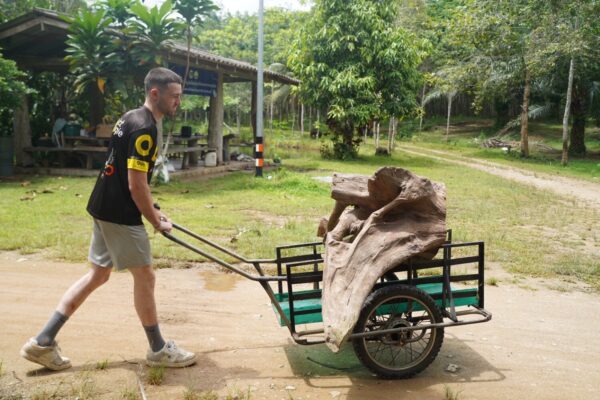
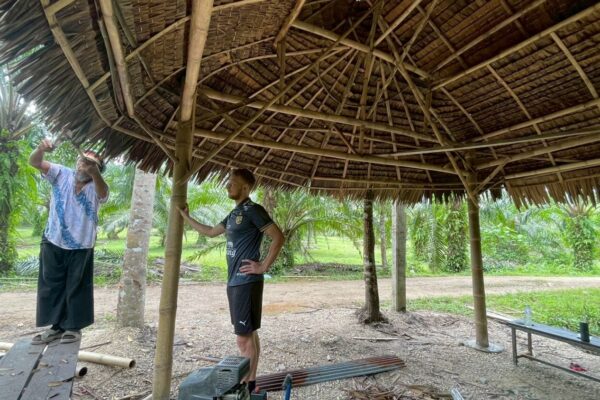
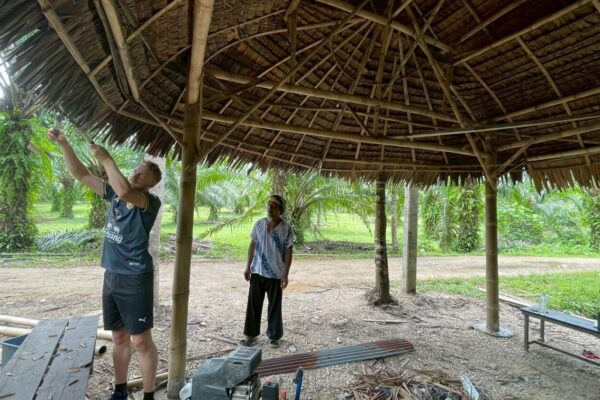
Zack, Chaiyut, and the students then gathered heavy stones to construct the base platform for the oven. Following that, Chaiyut dug out some of the 1,000 bricks stored on his land to be used for the main oven structure. To end the day, the group worked together to carry and install a 3-meter-long piece of heavy wood inside the kitchen area, where it will become a communal dining table—a central gathering point for future meals and workshops.
🔨 Next Week’s Plan
We will begin building the pizza oven, starting with the foundation using the gathered stones and bricks. The students will continue to gain practical experience in sustainable construction by working with natural and upcycled materials.
Eco Construction Weekly Report – Week 5
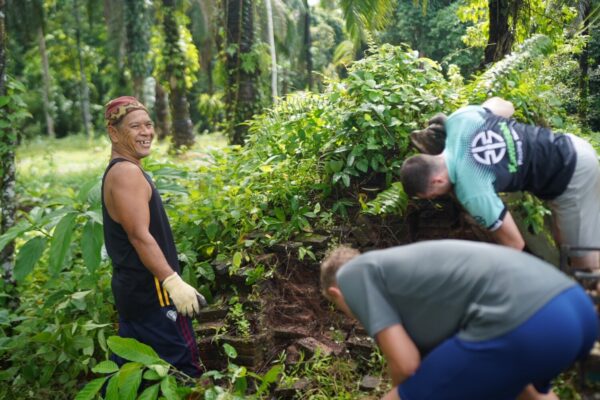
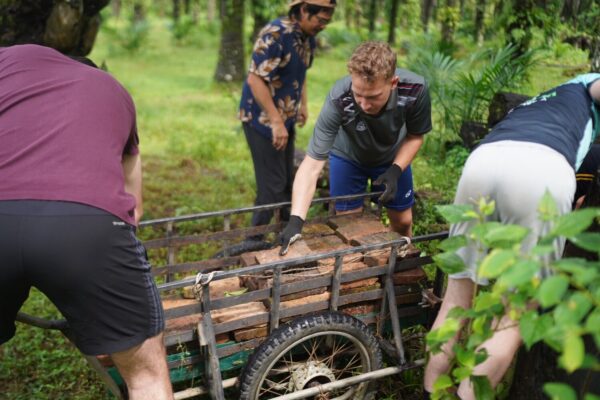
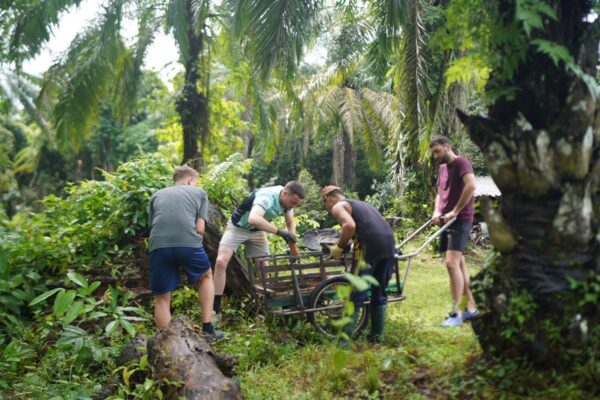

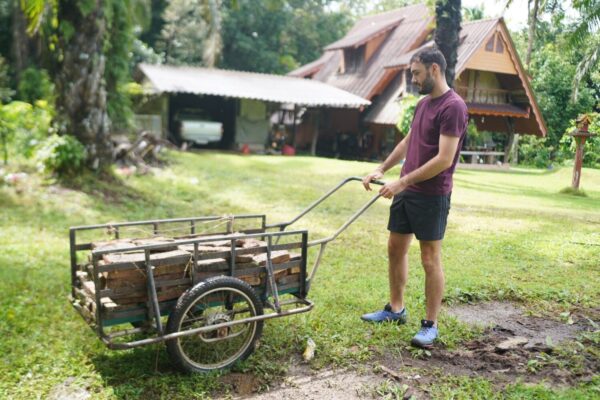
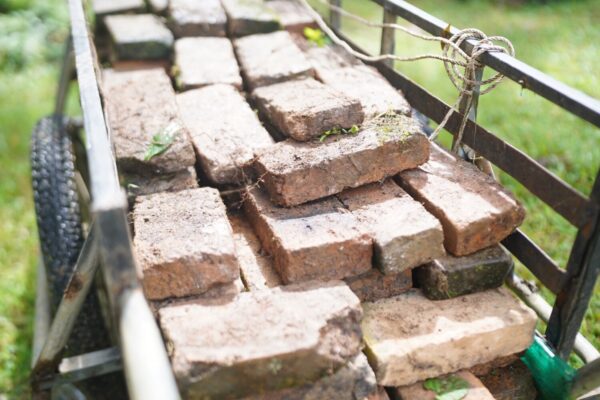
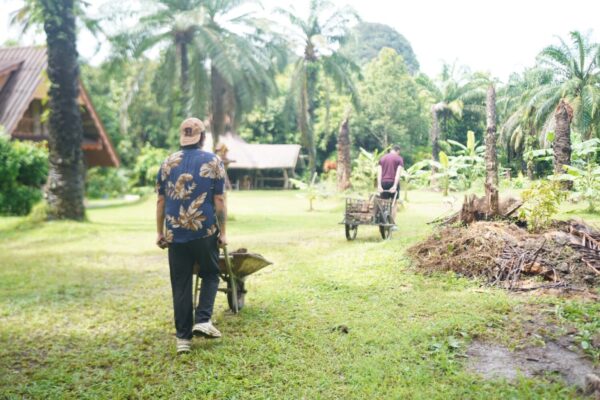
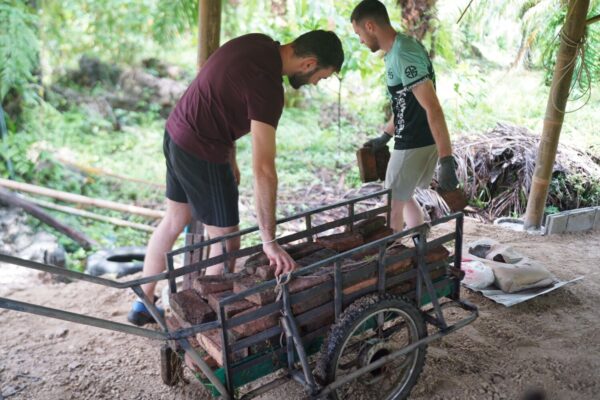

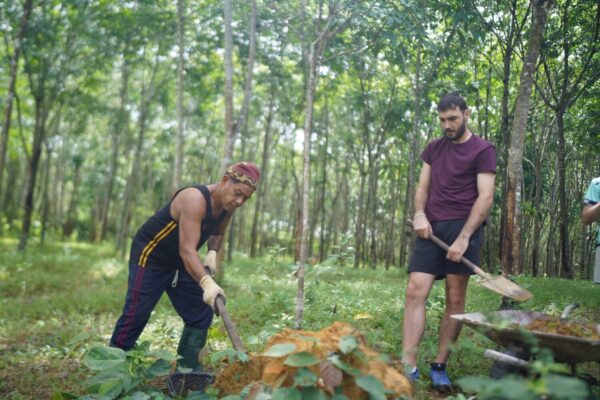

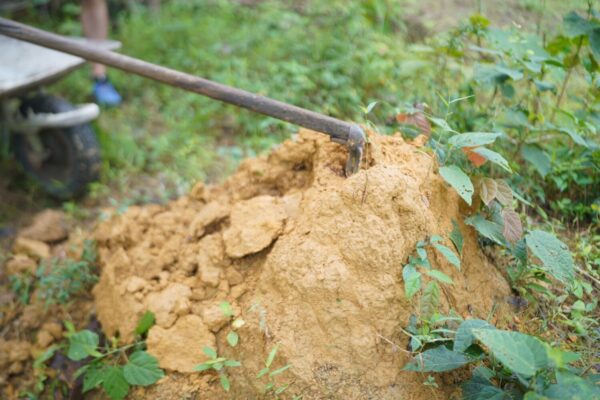
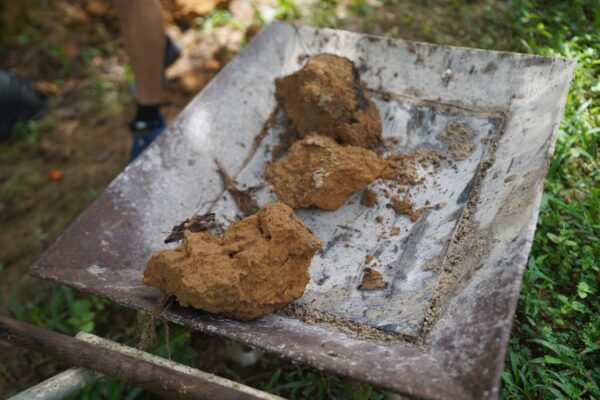
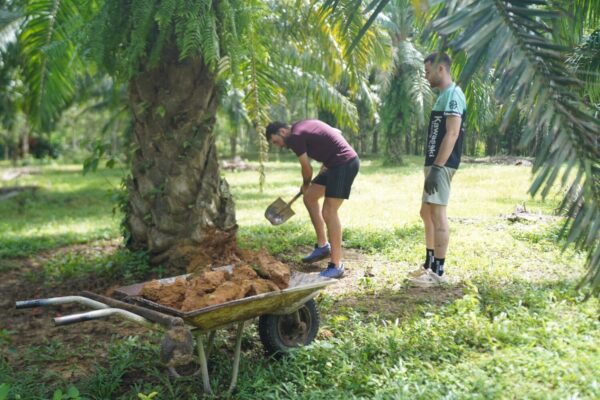
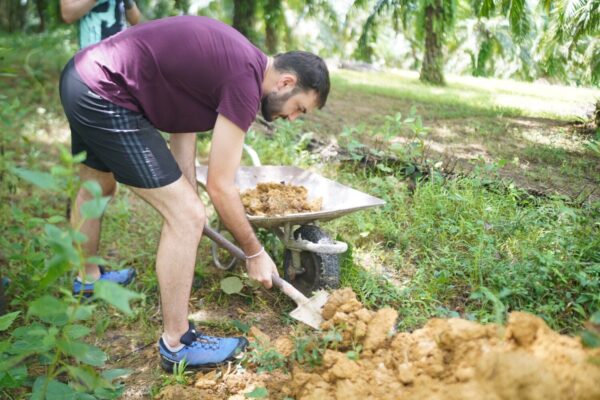
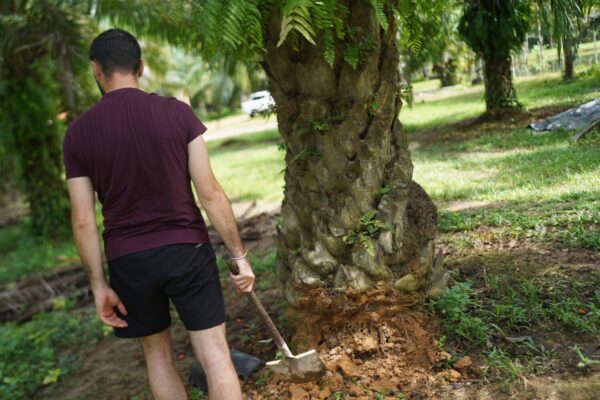
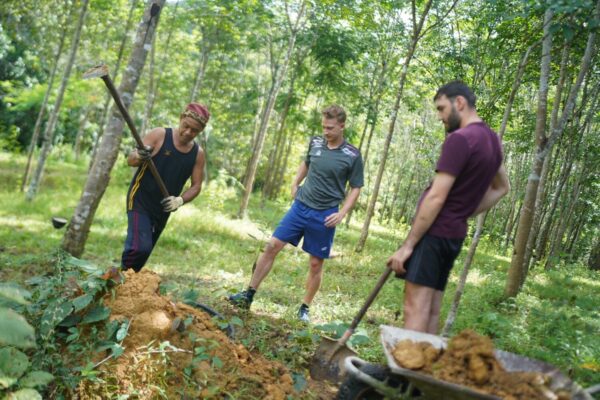
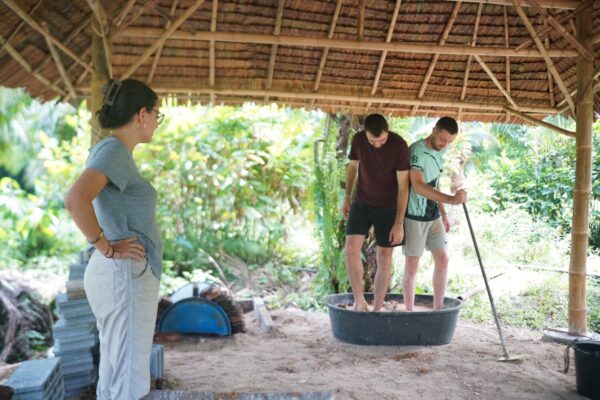
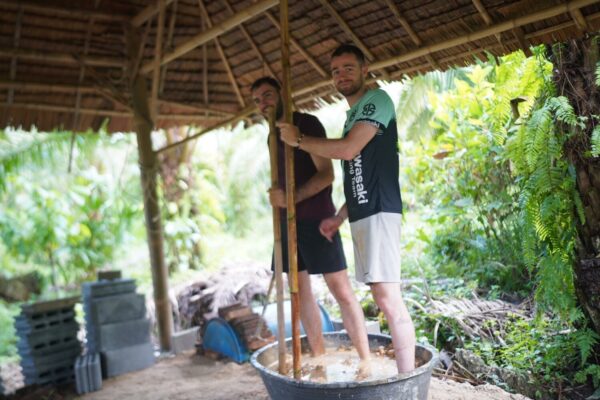

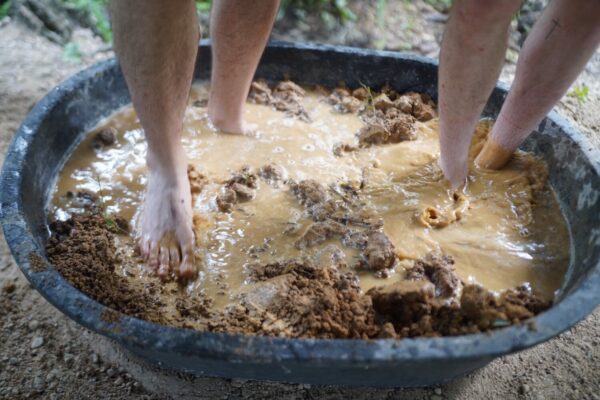
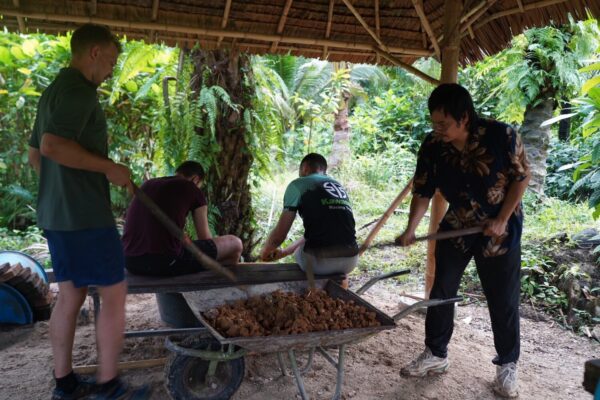

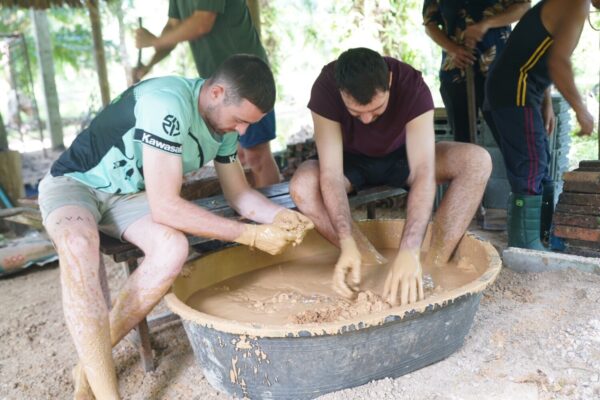
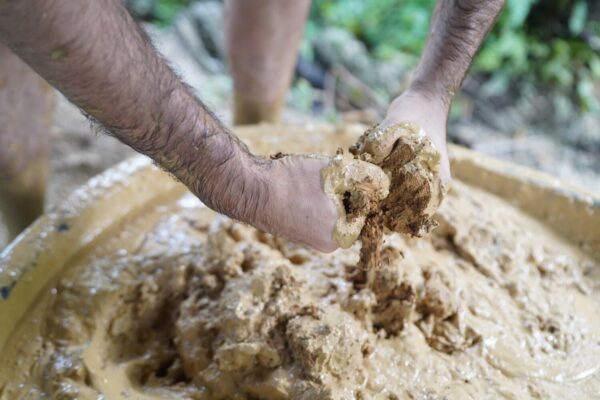
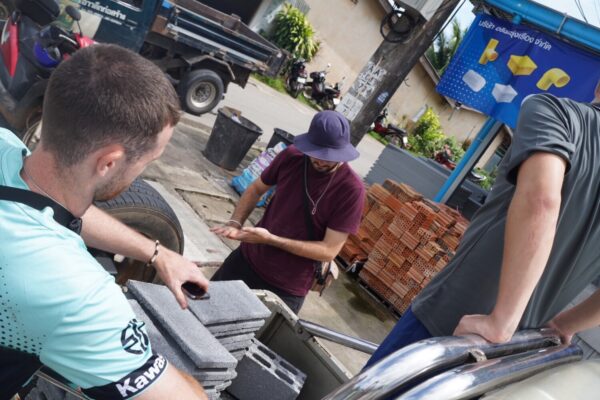
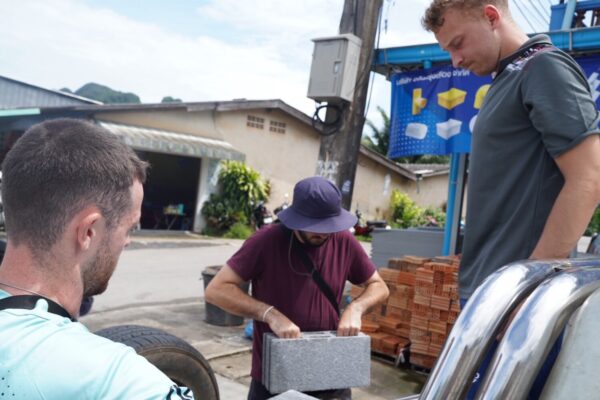
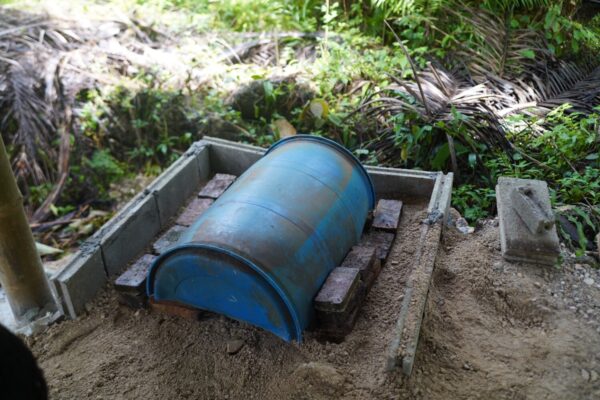

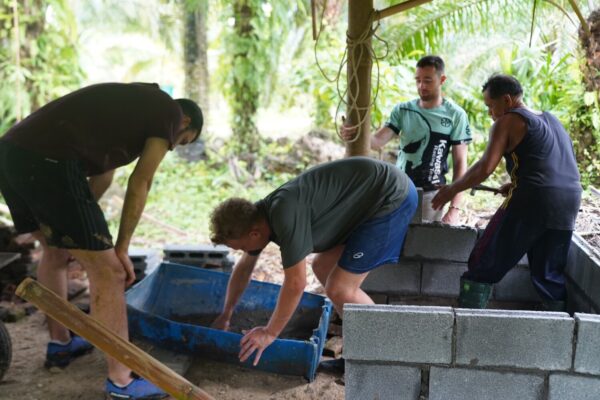
Day 17: Brick Collection and Clay Preparation
The students began the day by collecting bricks from Chaiyut’s land and transporting them to the outdoor kitchen area. This marked the beginning of the planning phase for the pizza oven structure.
They then participated in a practical and culturally significant activity often referred to as “termite hunting.” The goal was to locate termite nests—commonly found in southern Thailand—and bring them back to the site. These termite nests, when soaked and mixed with water, produce a high-quality natural clay that has been traditionally used in various forms of construction, including earth ovens, stoves, and even natural homes. It’s a durable, breathable, and sustainable material widely available in the region, making it a reliable resource for eco-construction.

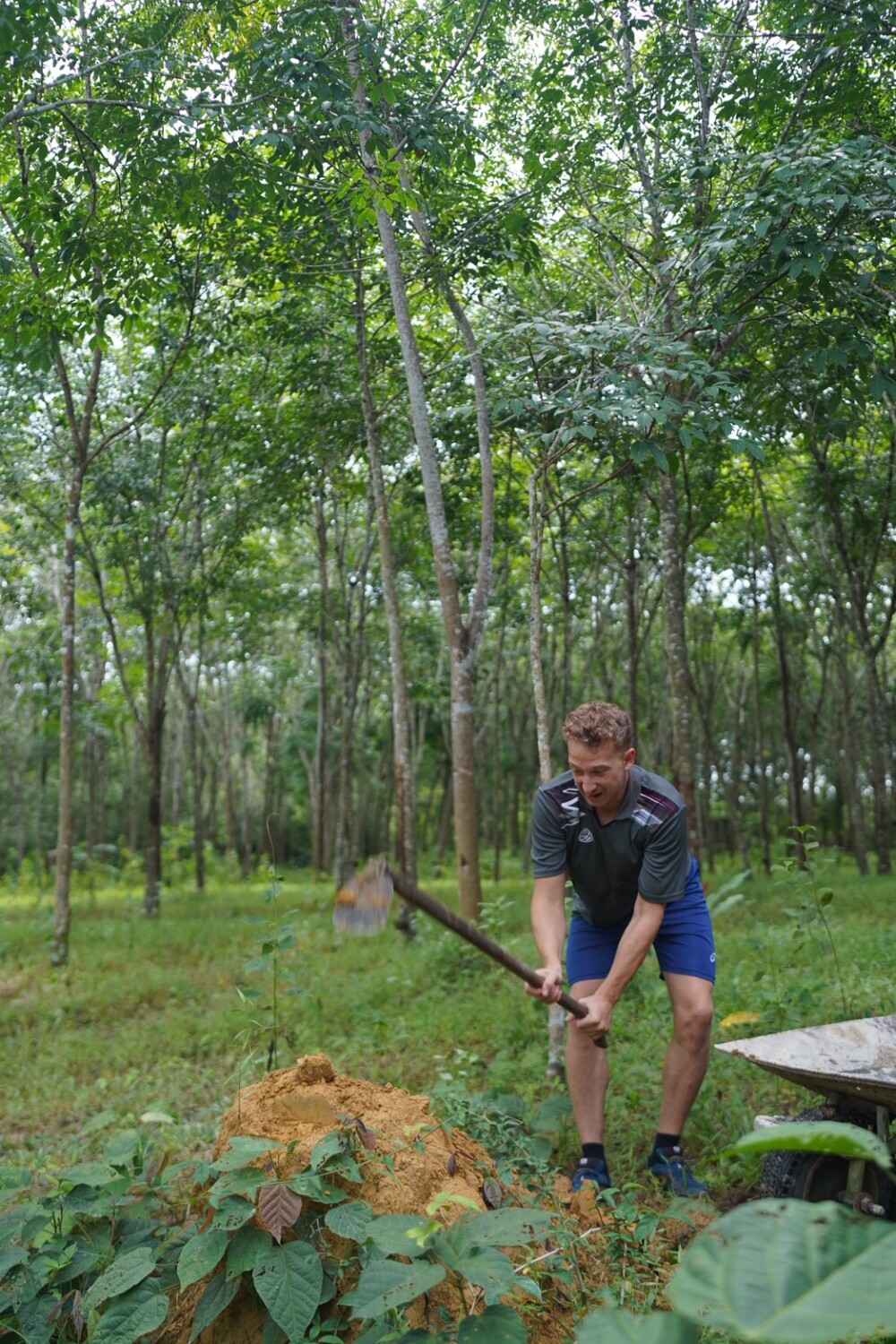
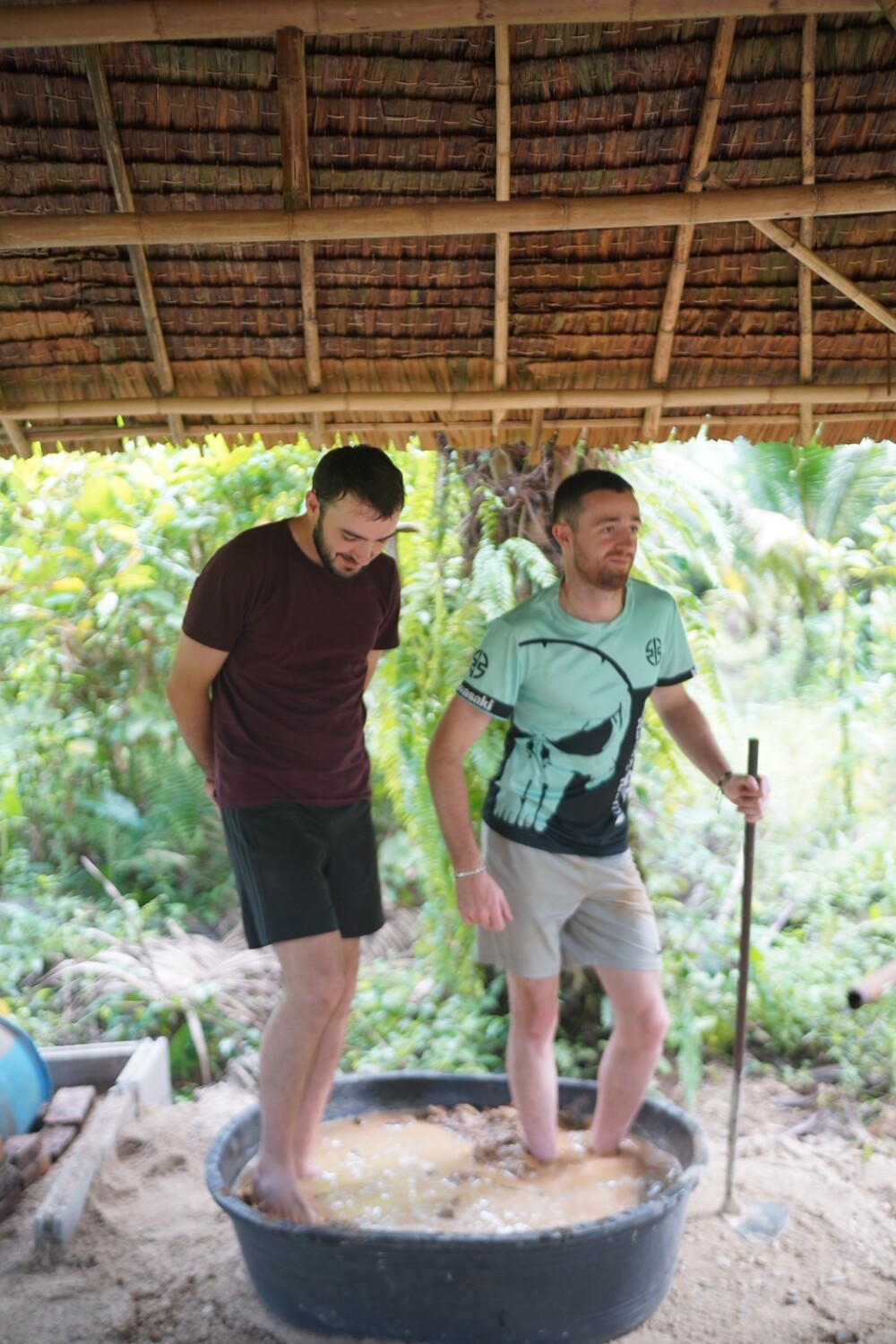
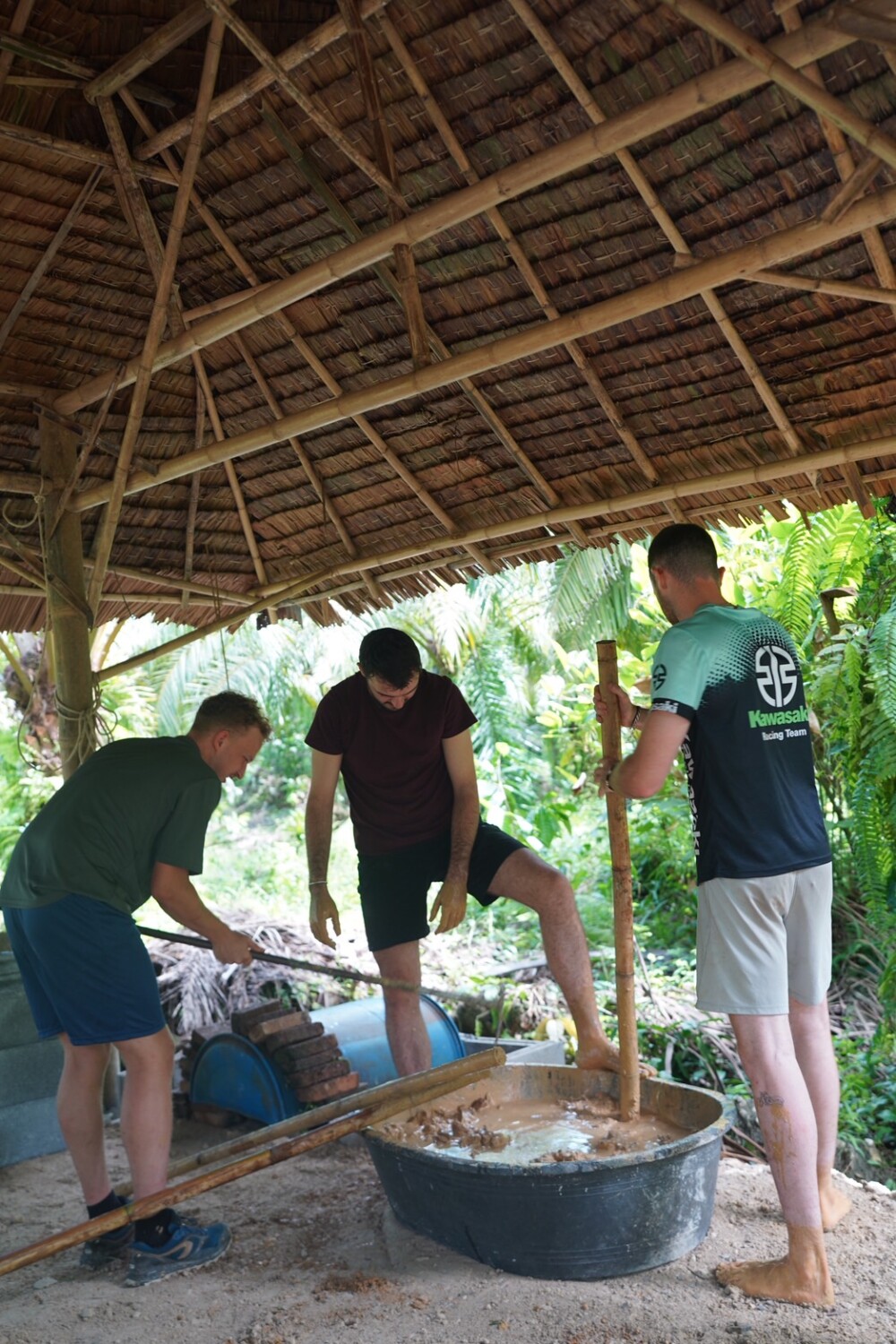
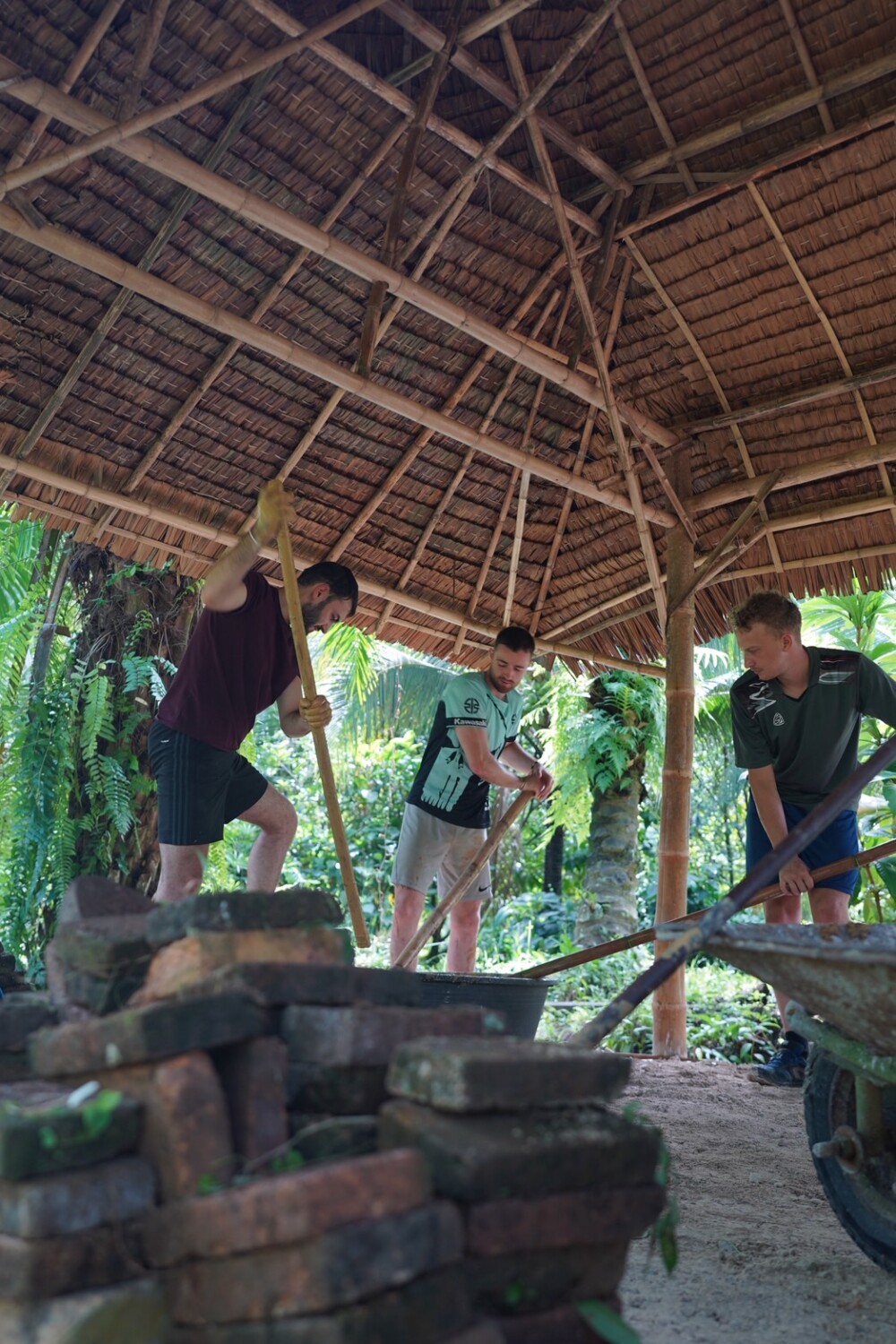
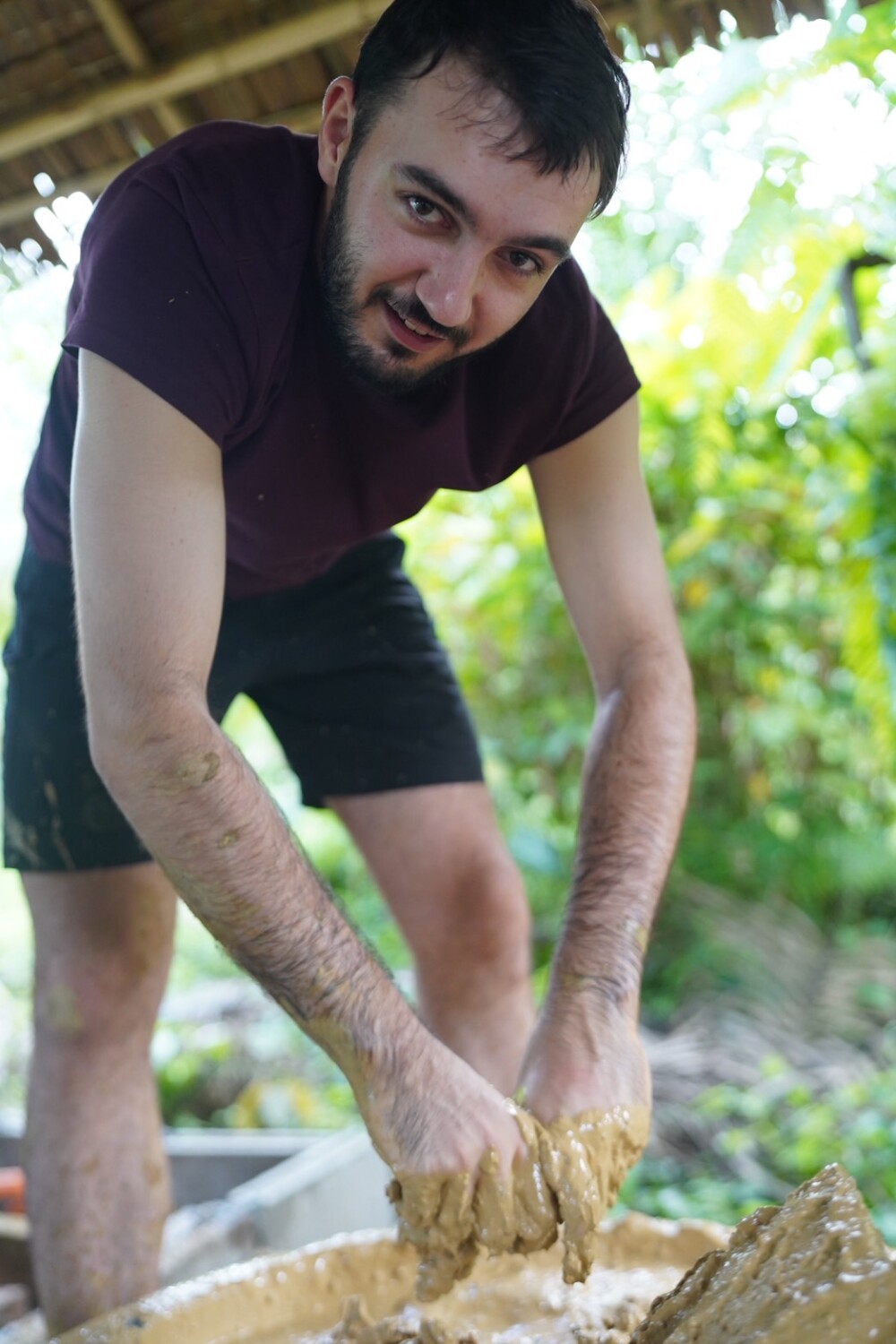
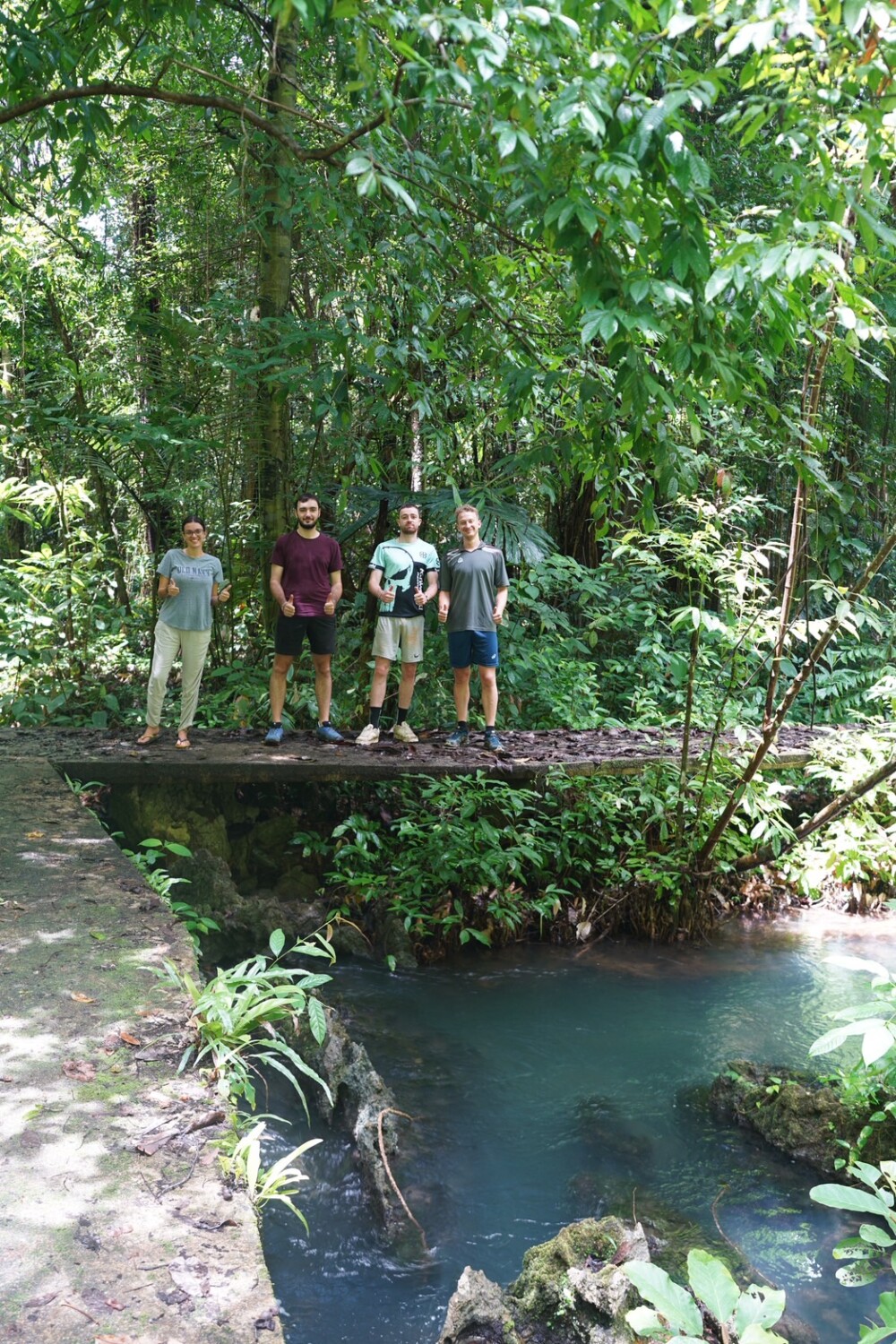
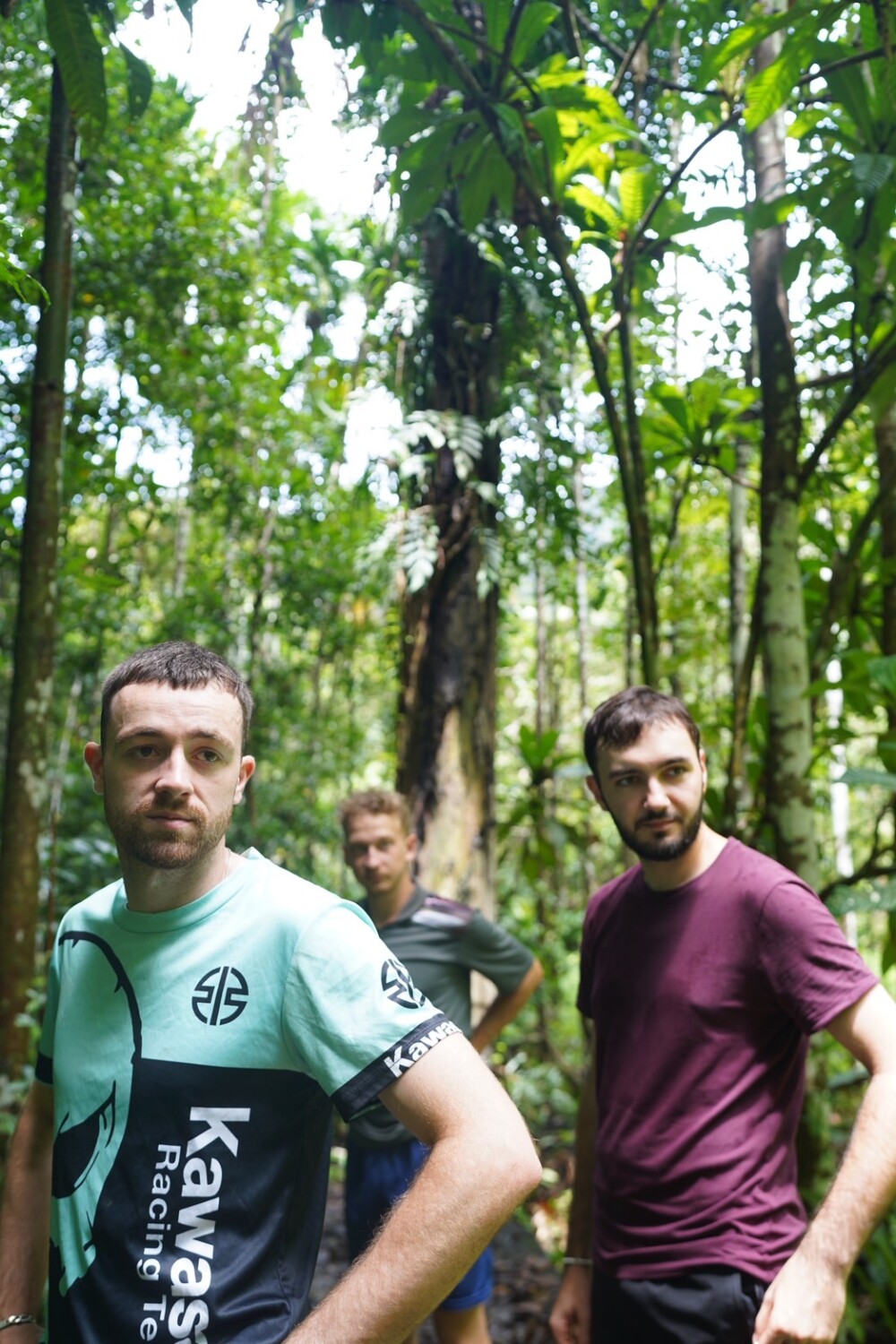

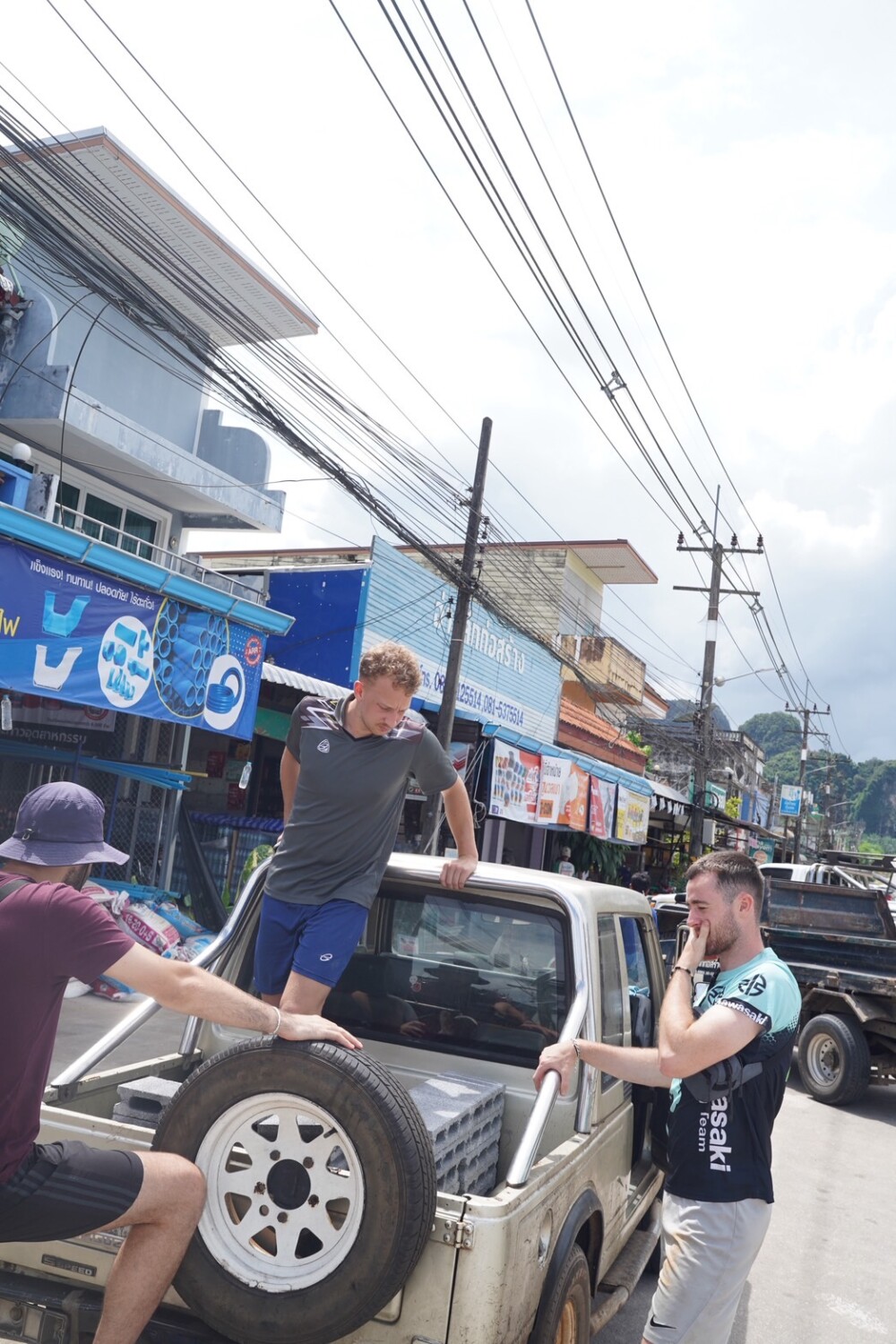
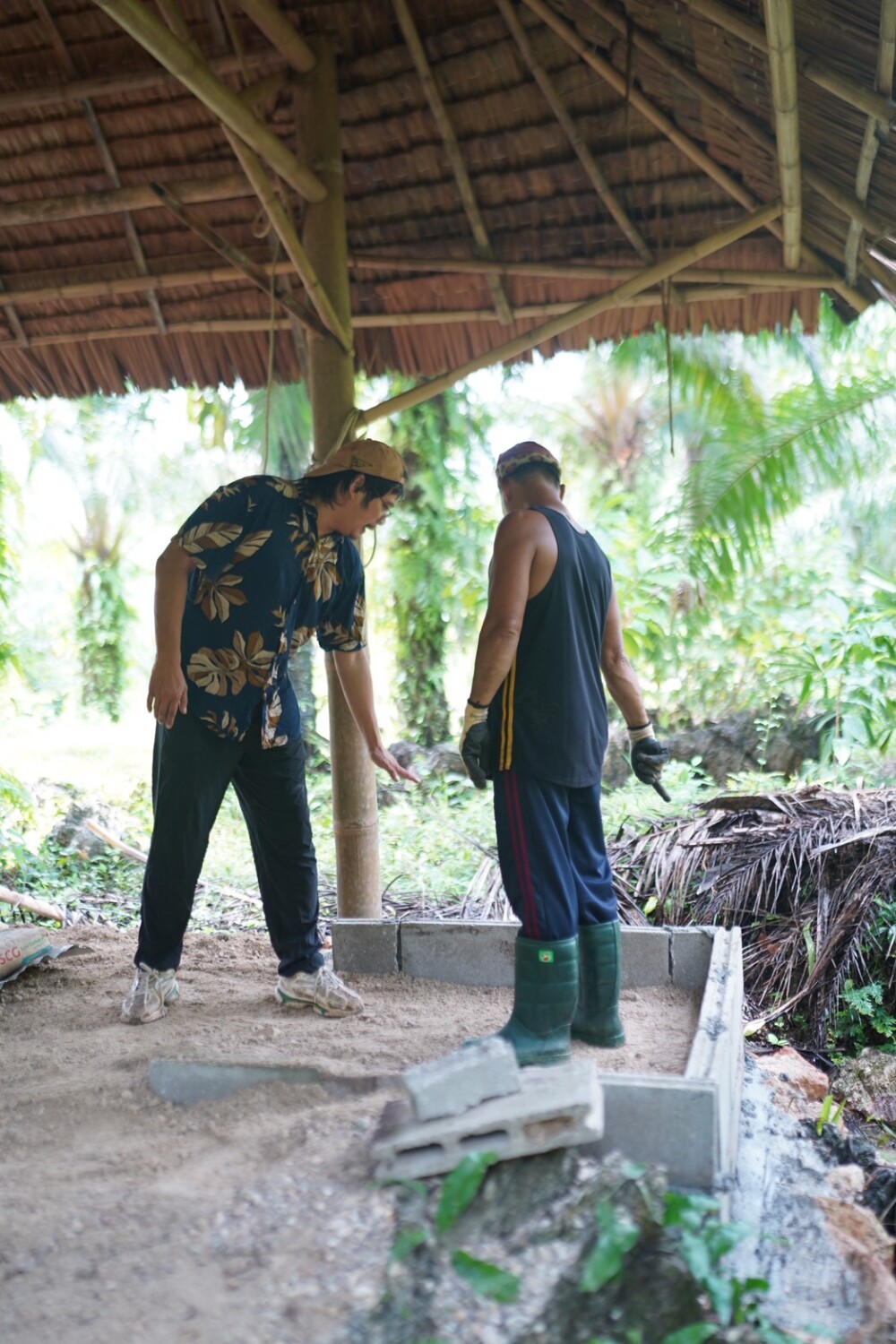

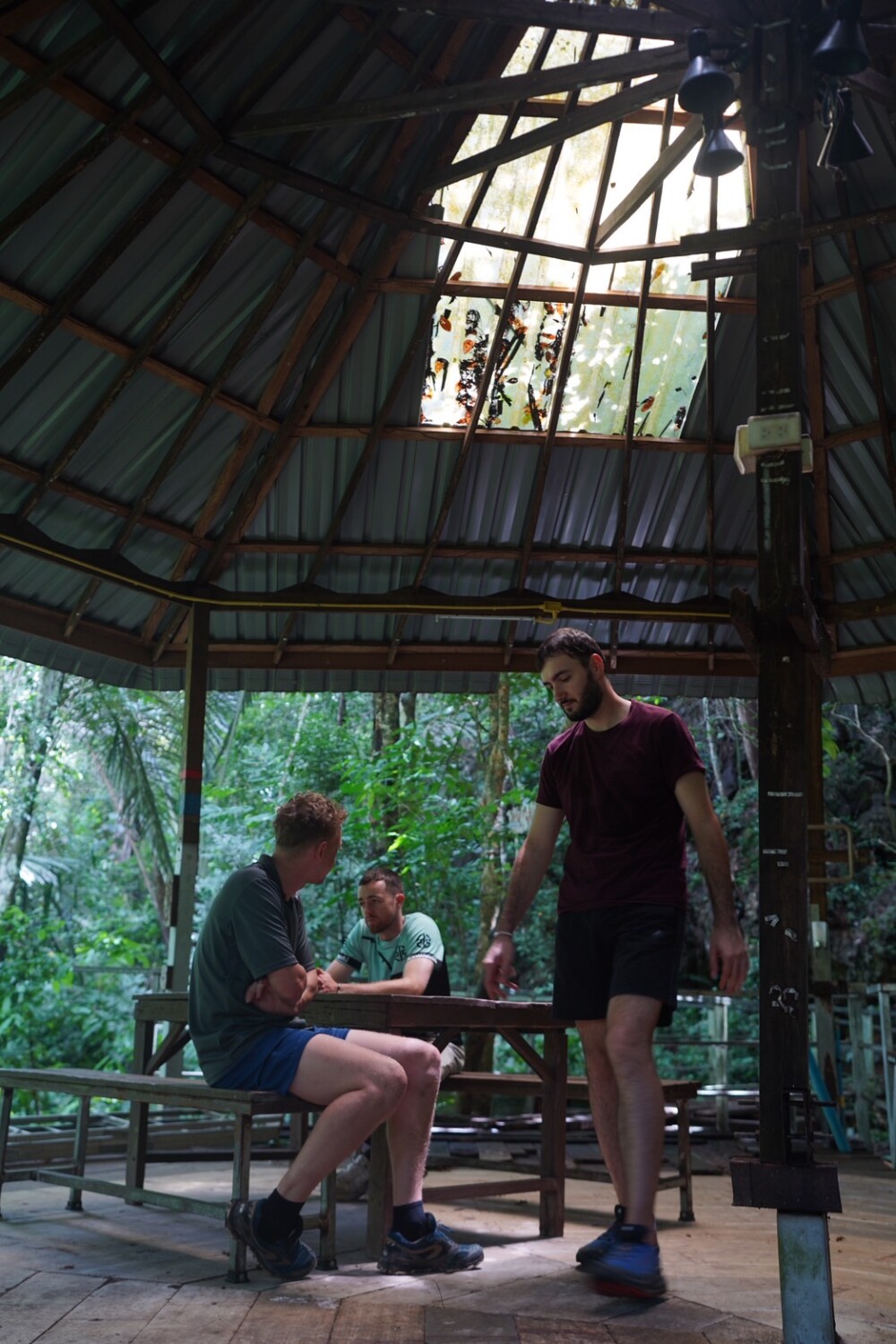
Back at the kitchen, the students worked barefoot to mix the termite clay with water, using their feet to achieve the ideal consistency. This hands-on process deepened their understanding of natural building techniques and materials. Midday, the group took a short walk into the jungle to relax and reconnect with nature. Upon returning, they began constructing a brick wall under Chaiyut’s guidance, which will serve as the base platform for the pizza oven.
Day 18: Tent Removal and Monsoon Preparation
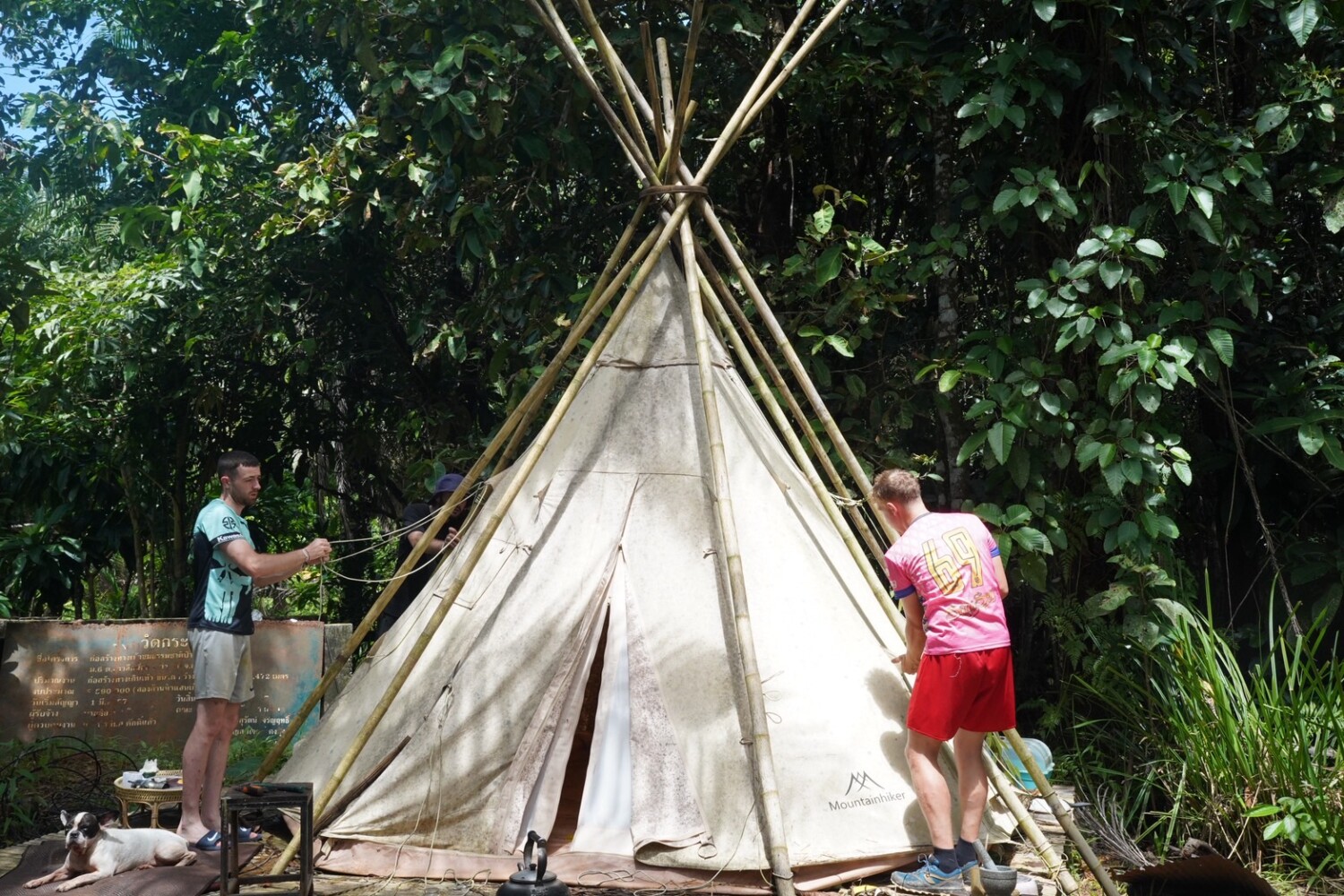
Given the arrival of the monsoon season and the increased humidity, the students participated in dismantling two tents from the camp. These tents are prone to mold if left exposed to constant moisture, so they were taken down for cleaning and storage. This preventive task was handled efficiently and with care by the students, helping to preserve essential equipment for future use.
Friday – Day 19: Kitchen Design Workshop
The week concluded with a lighter day of work focused on creative planning. The team met at Ao Luek Paradise to discuss the next stages of the outdoor kitchen development. As part of this session, the students were encouraged to sketch their own ideas for the layout of the kitchen, including the placement of the pizza oven and a future stove—both of which will be constructed using bricks and clay.
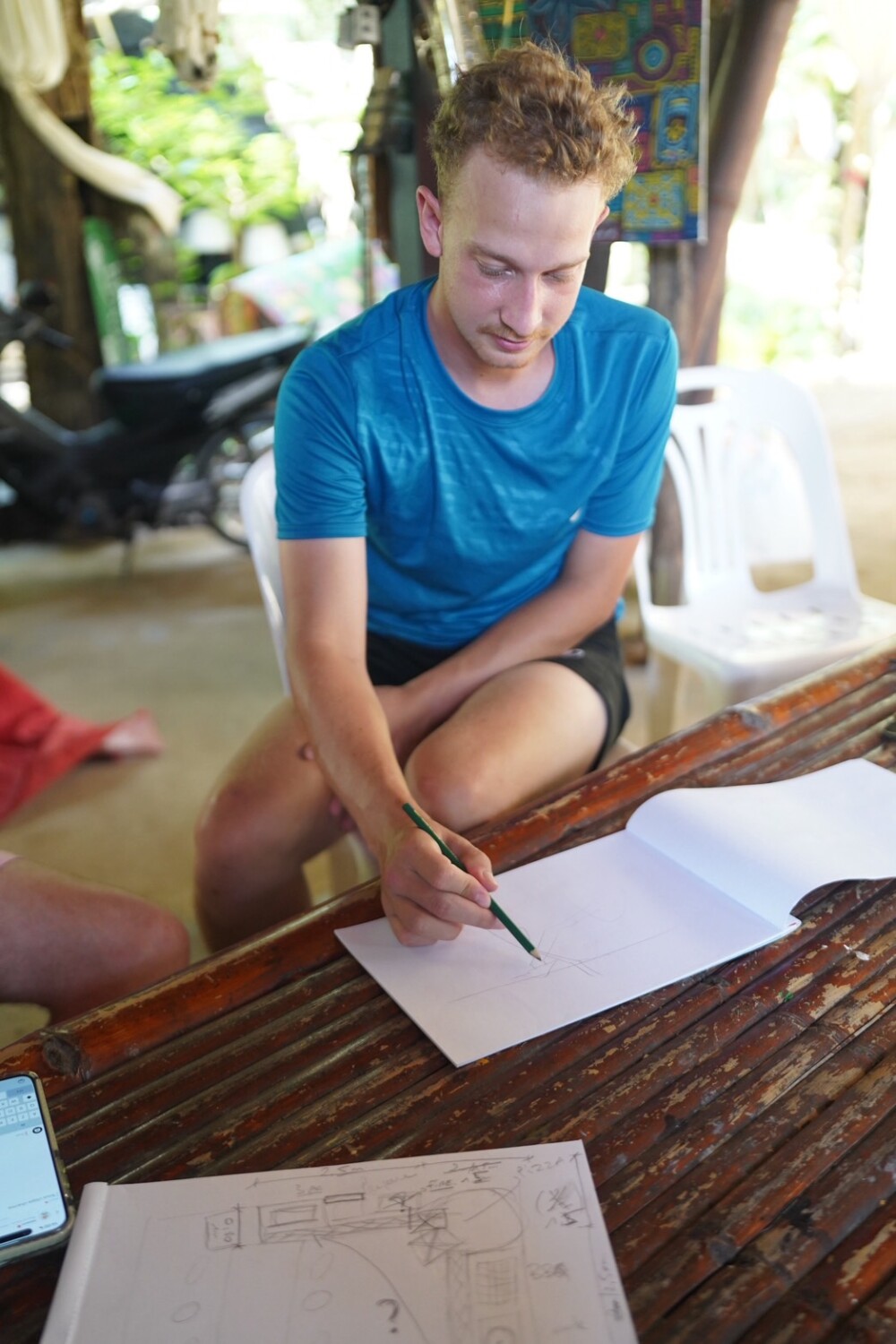
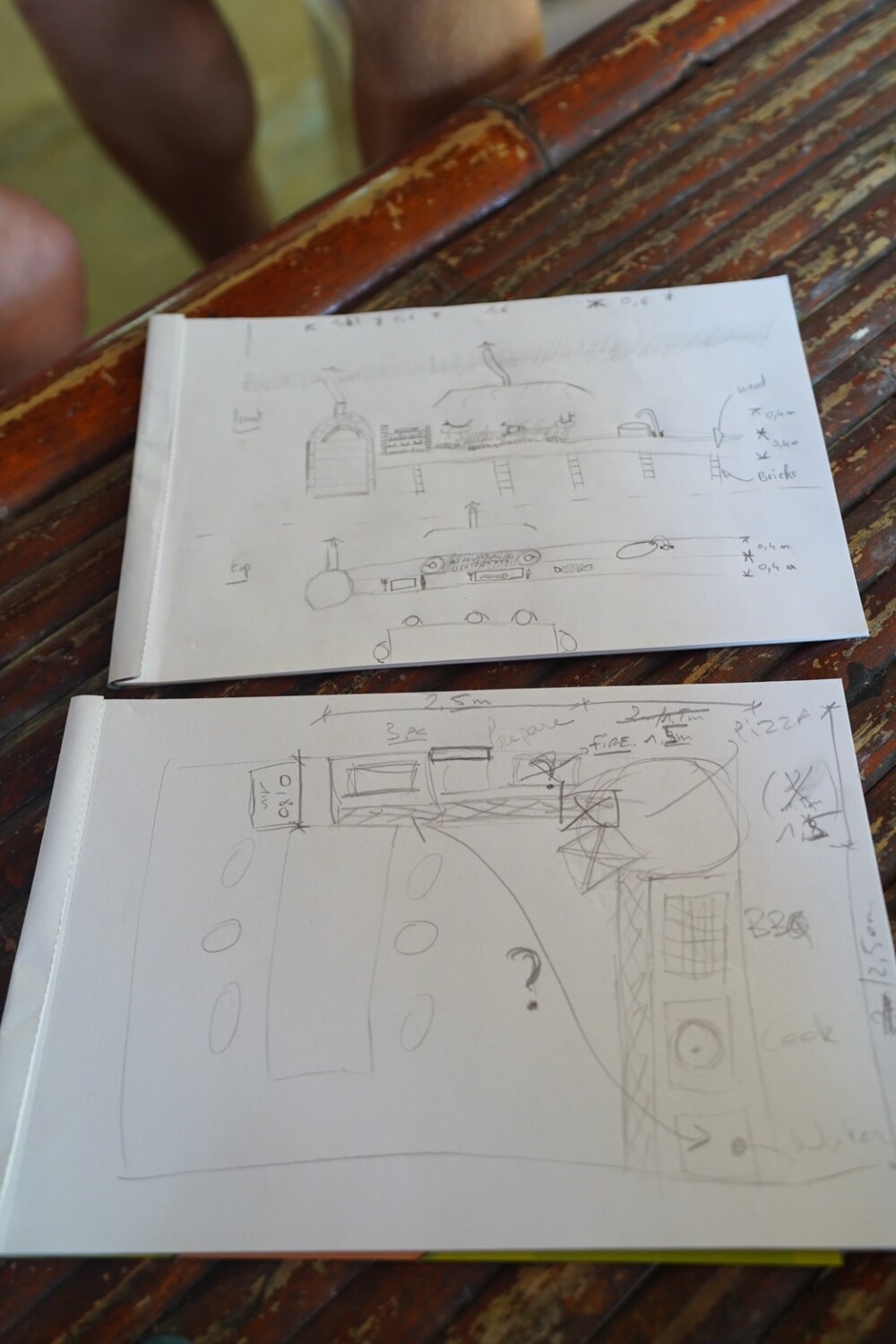
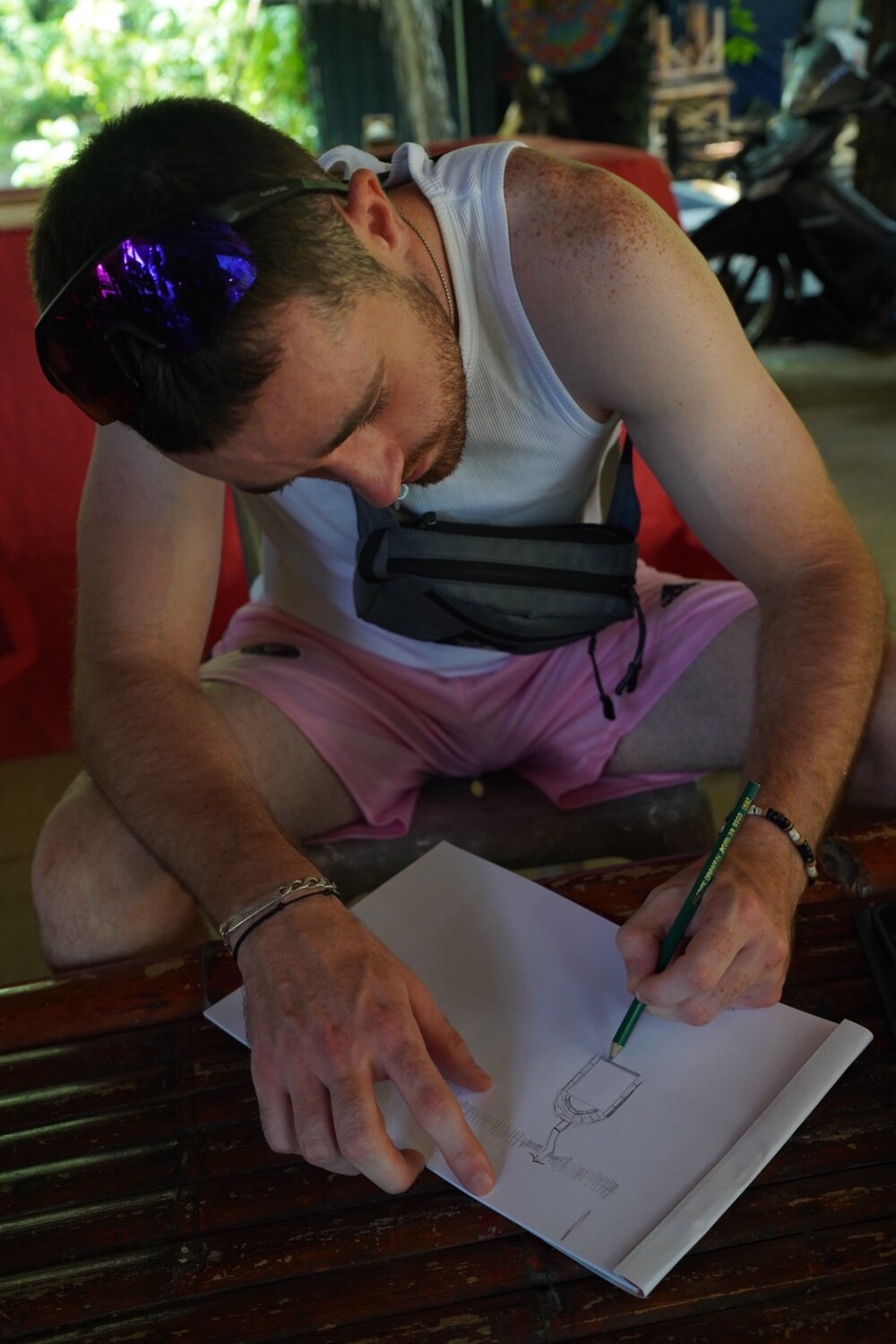
This activity was not only an opportunity for the students to express their creativity but also an essential step in the eco-construction process. Drawing helps to clarify ideas, visualize space, and anticipate construction needs. It allows everyone involved to better understand the overall vision and to communicate design intentions clearly. The sketches also serve as a useful reference as we move into the building phase, ensuring that both function and aesthetic are considered as we develop a cohesive and efficient kitchen area.
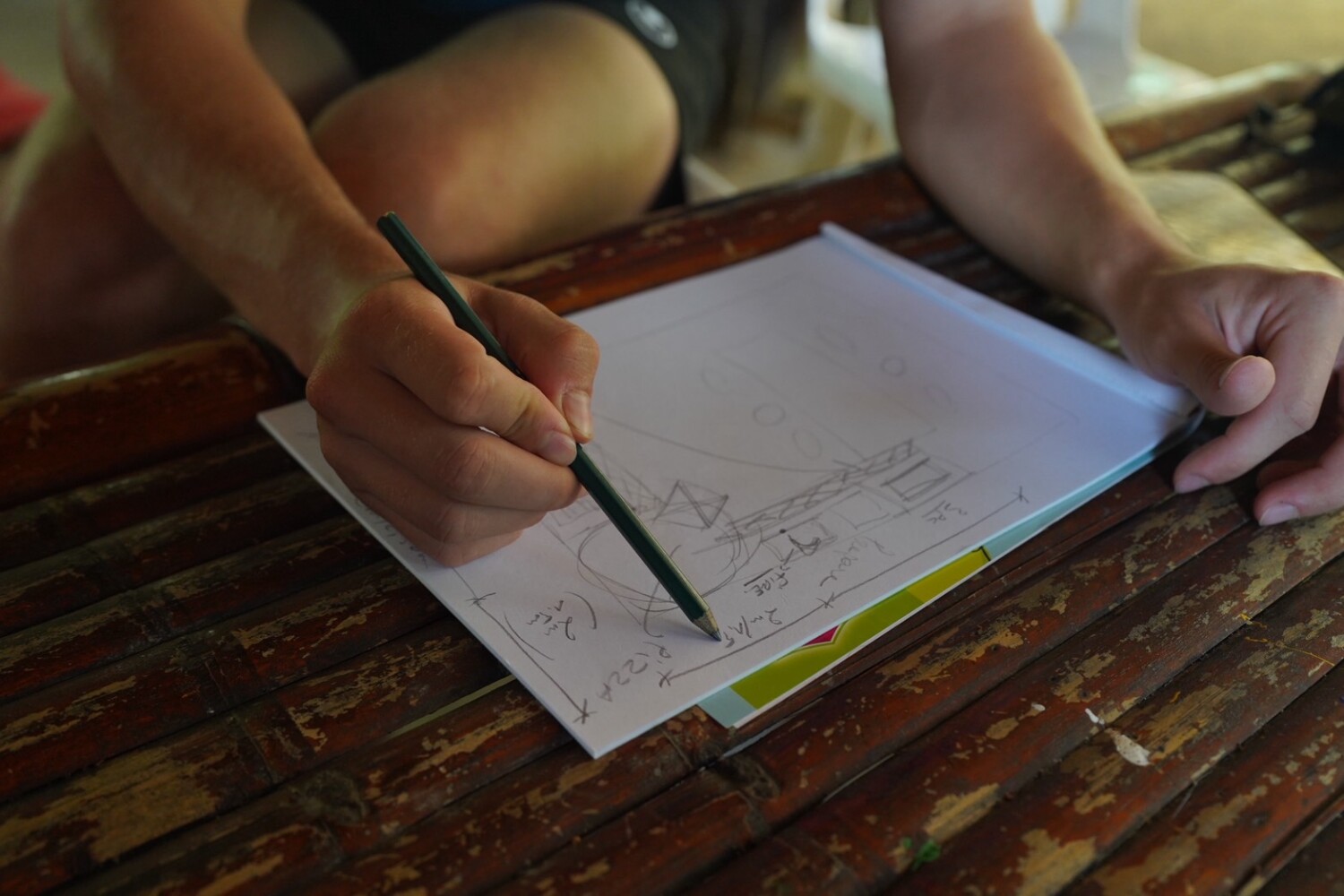
Next Week’s Program
Next week, the students will begin the construction phase of the outdoor kitchen. This includes:
Building the pizza oven using the prepared bricks and termite clay
Starting the stove structure, which will also be made from bricks and clay
Eco Construction Report – Week 6
Tuesday - Day 20 : Pizza Oven Foundation and Dome Framework
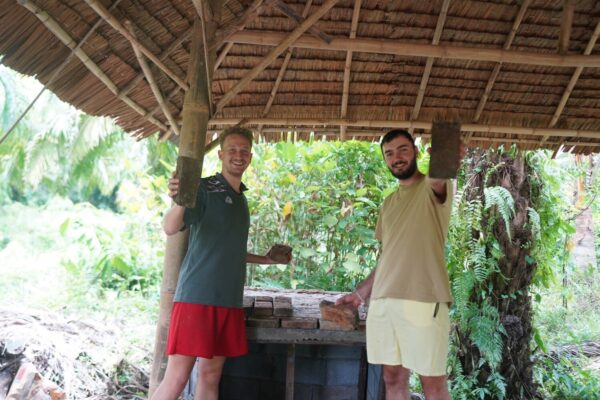
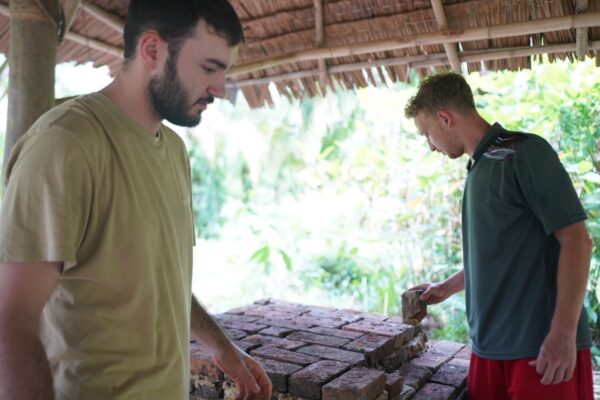
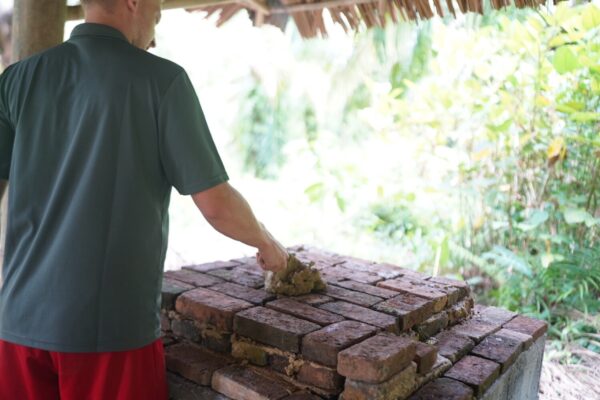
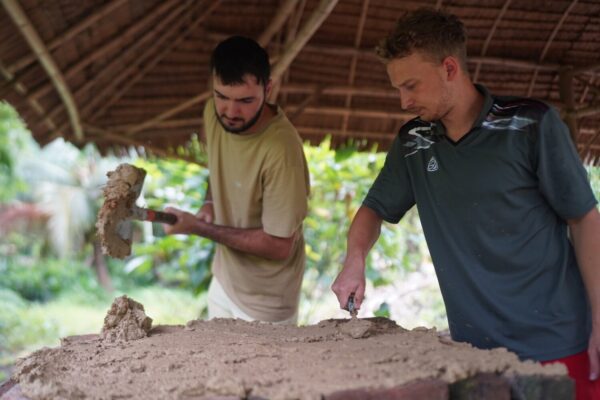
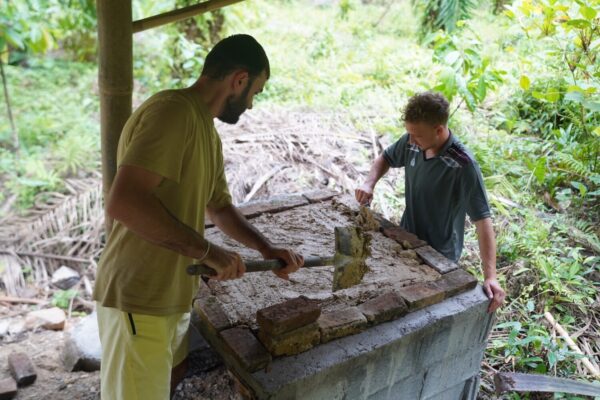
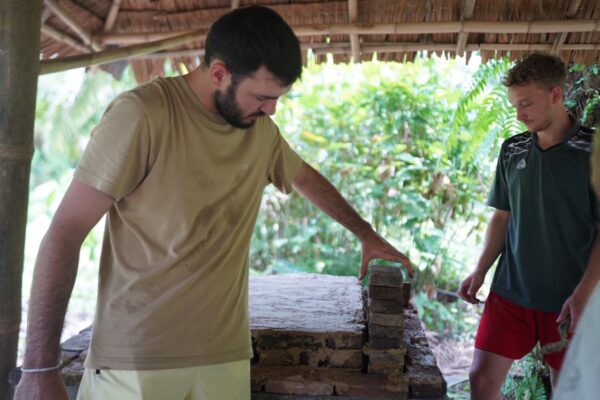

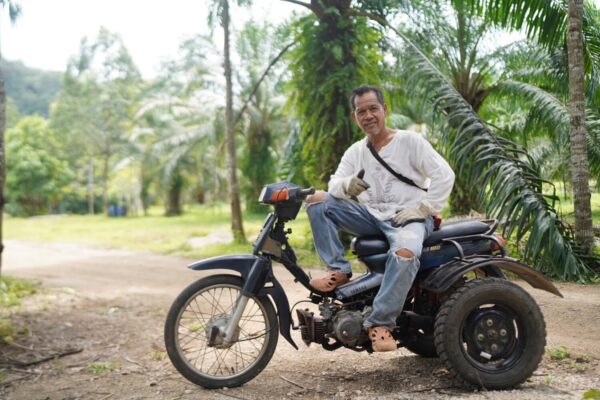
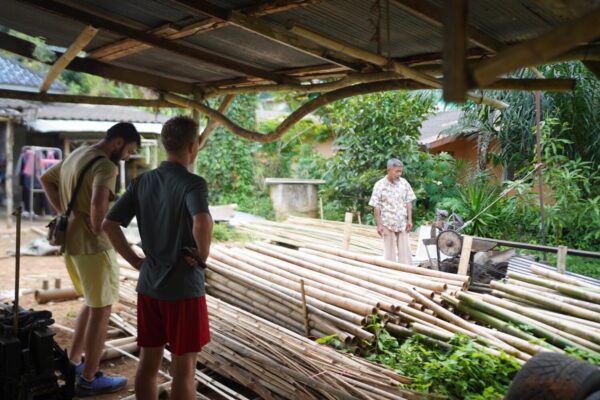

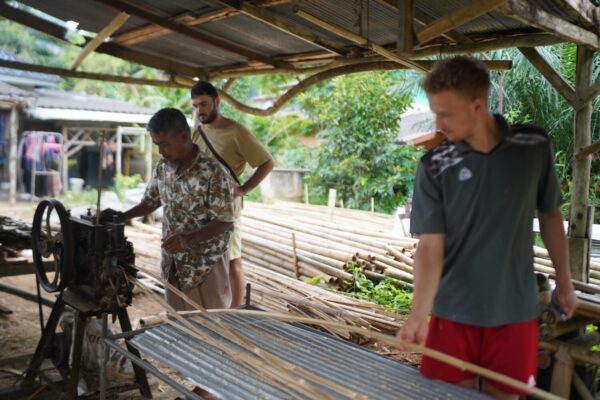
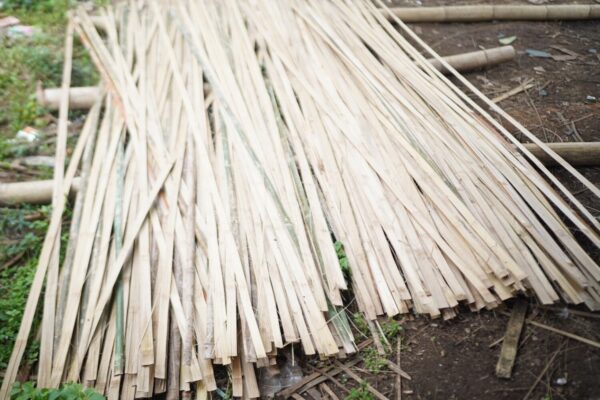
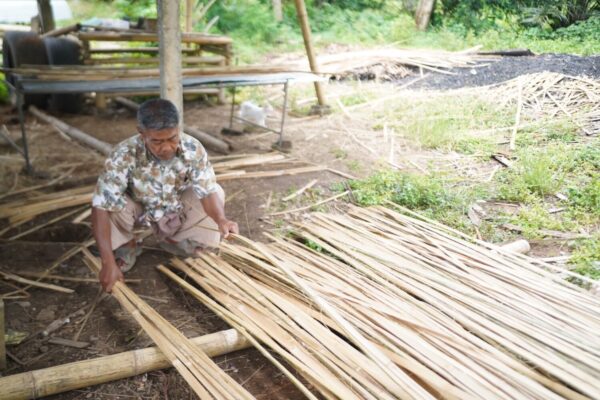

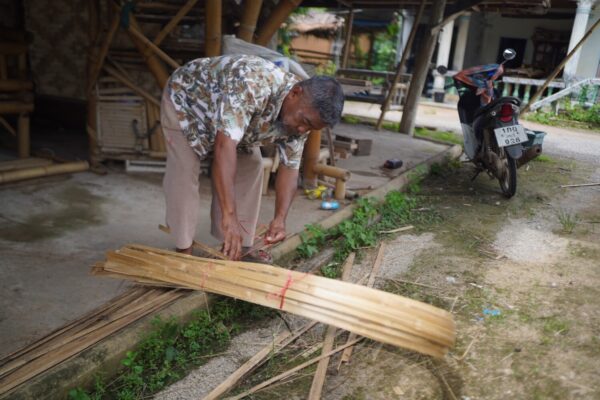
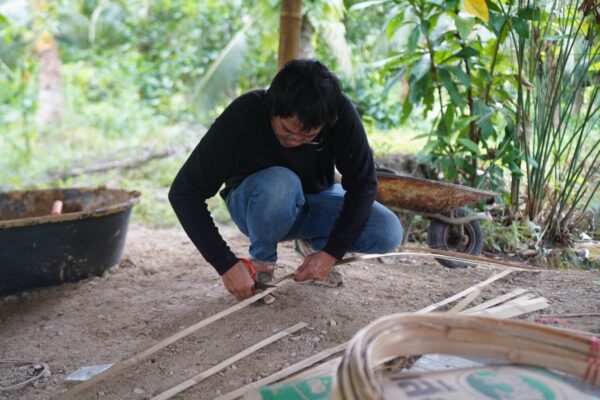
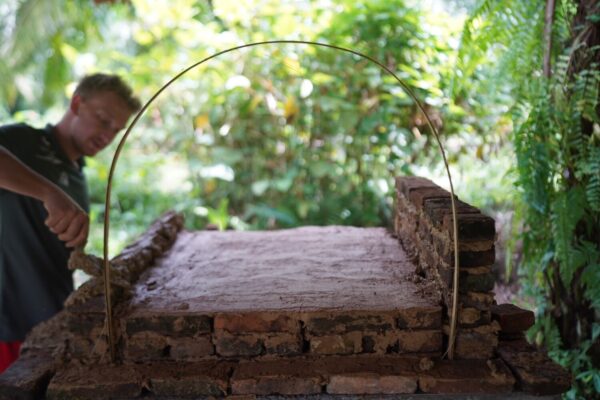
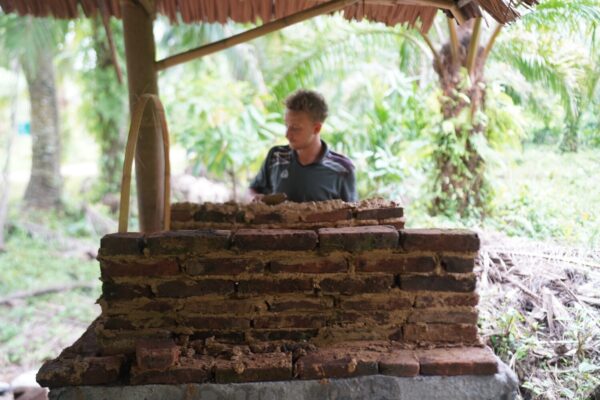
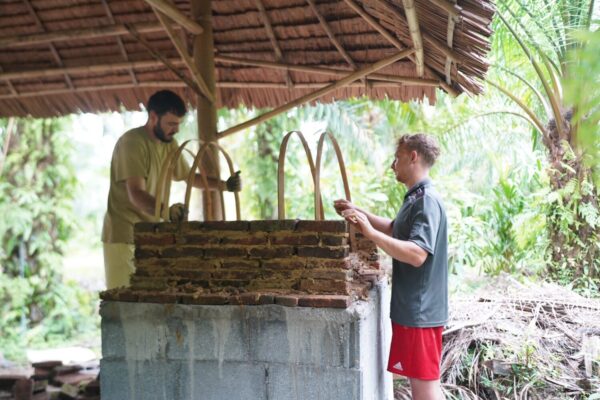
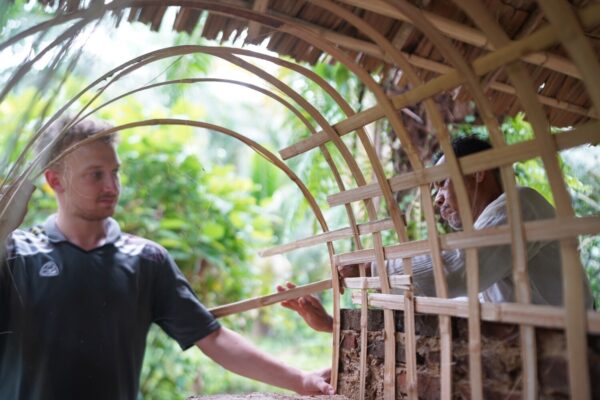
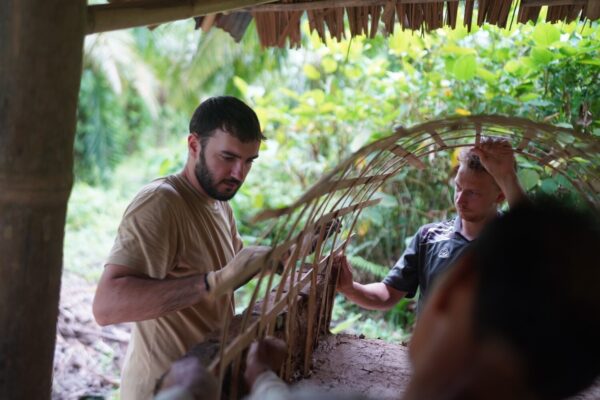
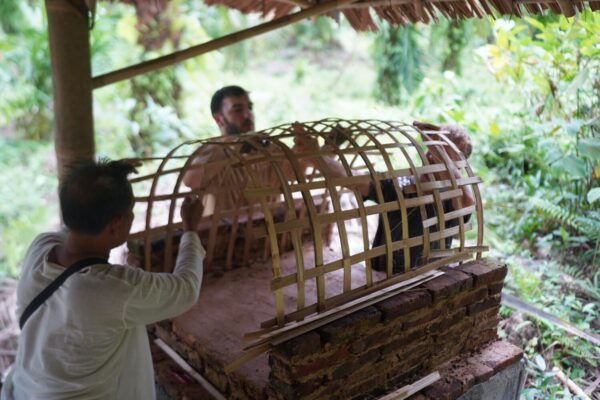
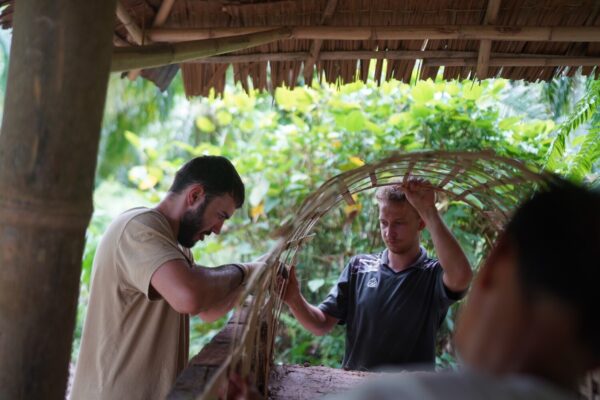

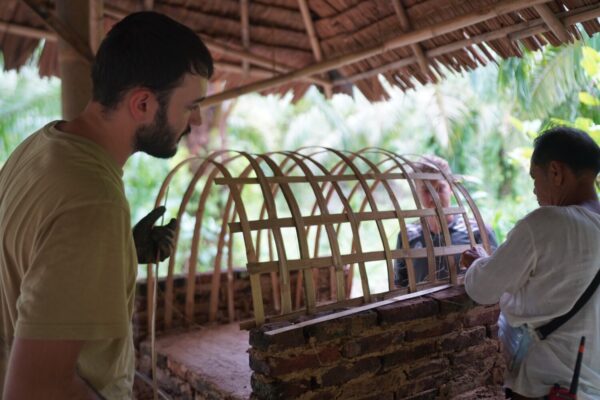

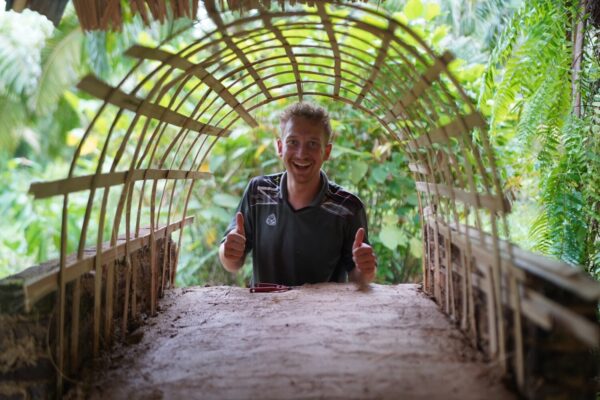
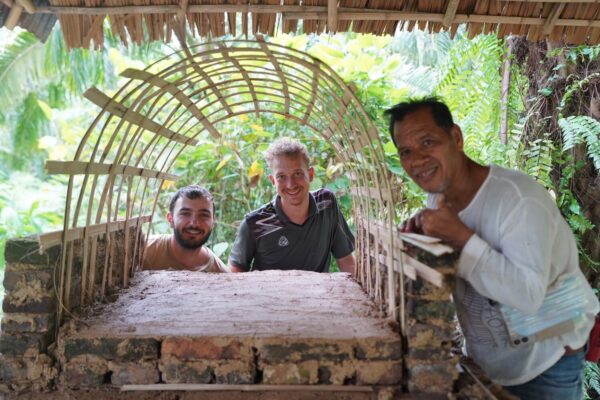
The week began with significant progress on the clay pizza oven. The clay mix—prepared from termite nest and water—had soaked for four days and reached an ideal consistency for construction. To proceed, approximately 100 bricks were transported from Chaiyut’s land.
The students started assembling the oven base by layering bricks with the prepared clay mixture. After stacking five layers, attention shifted to designing the curved dome structure, which required a strong and rounded form. We proposed using bamboo straps to create this shape.
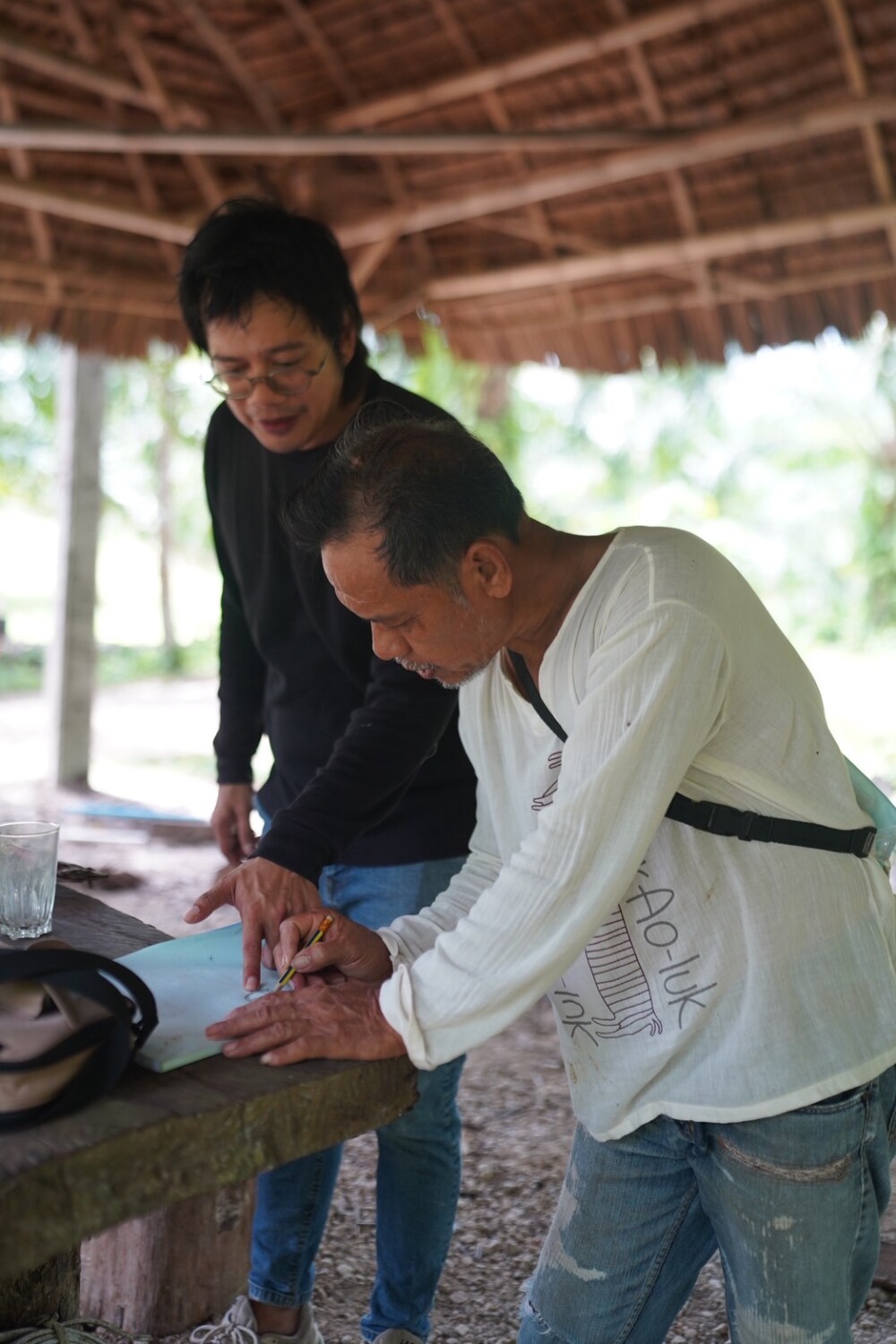
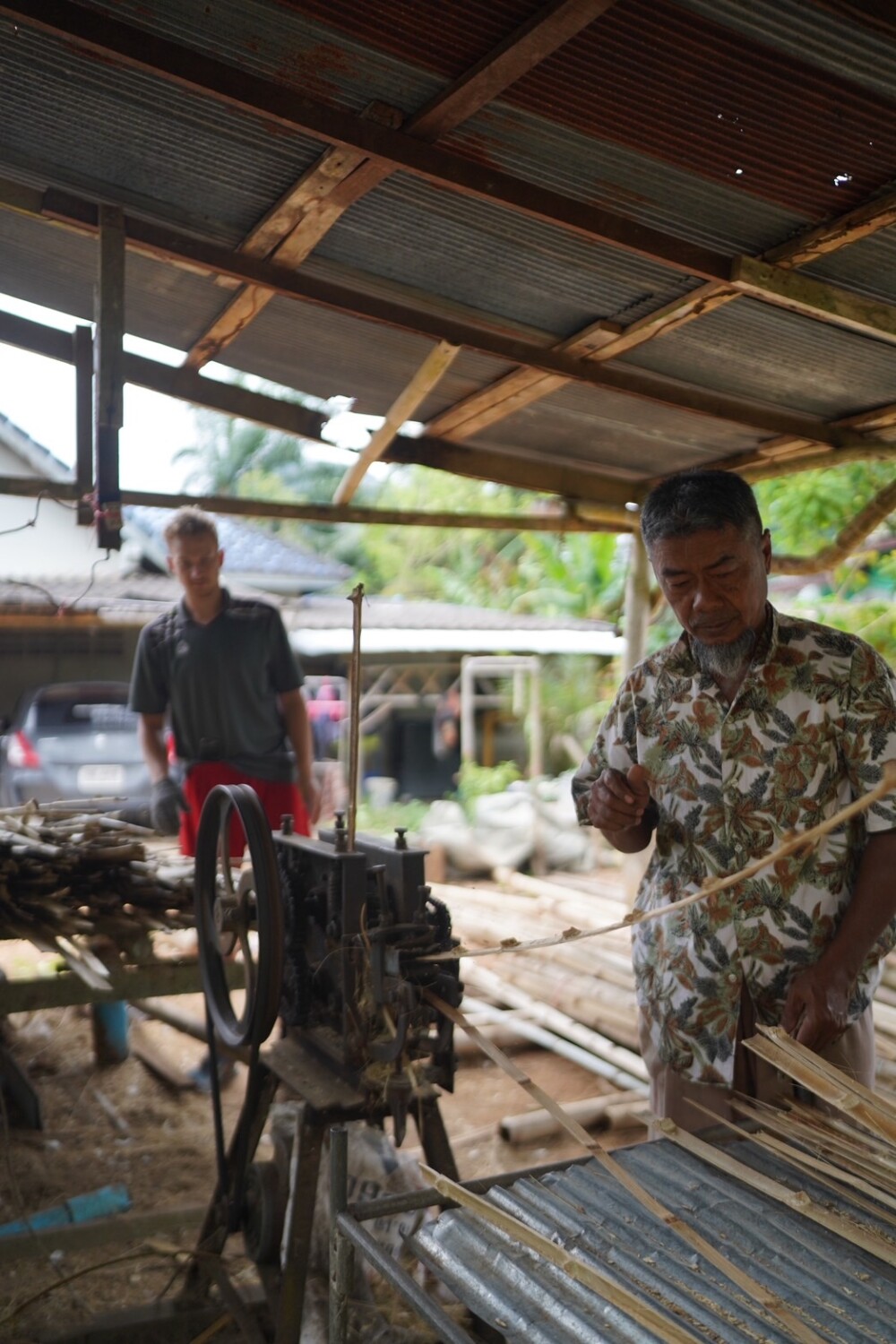
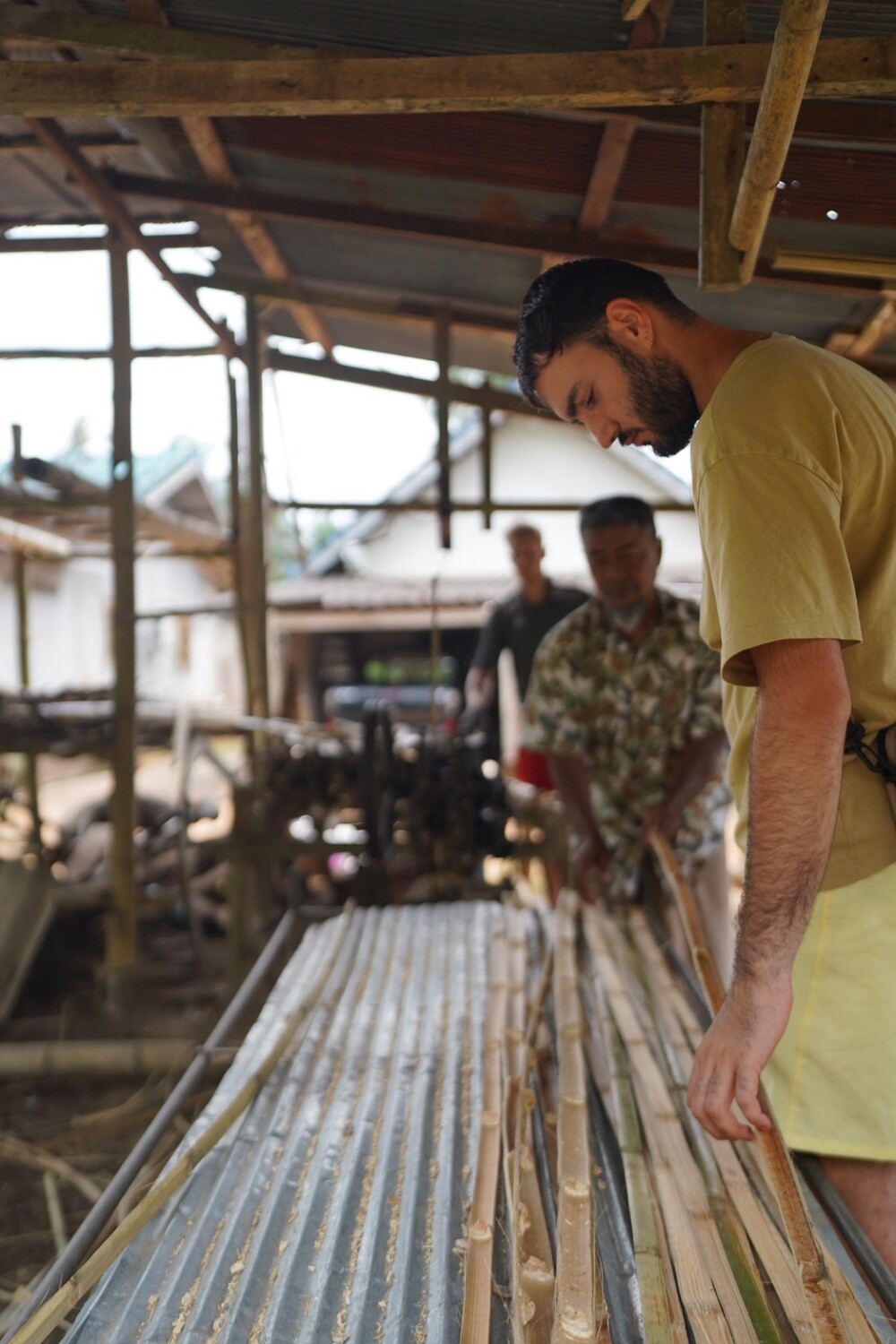
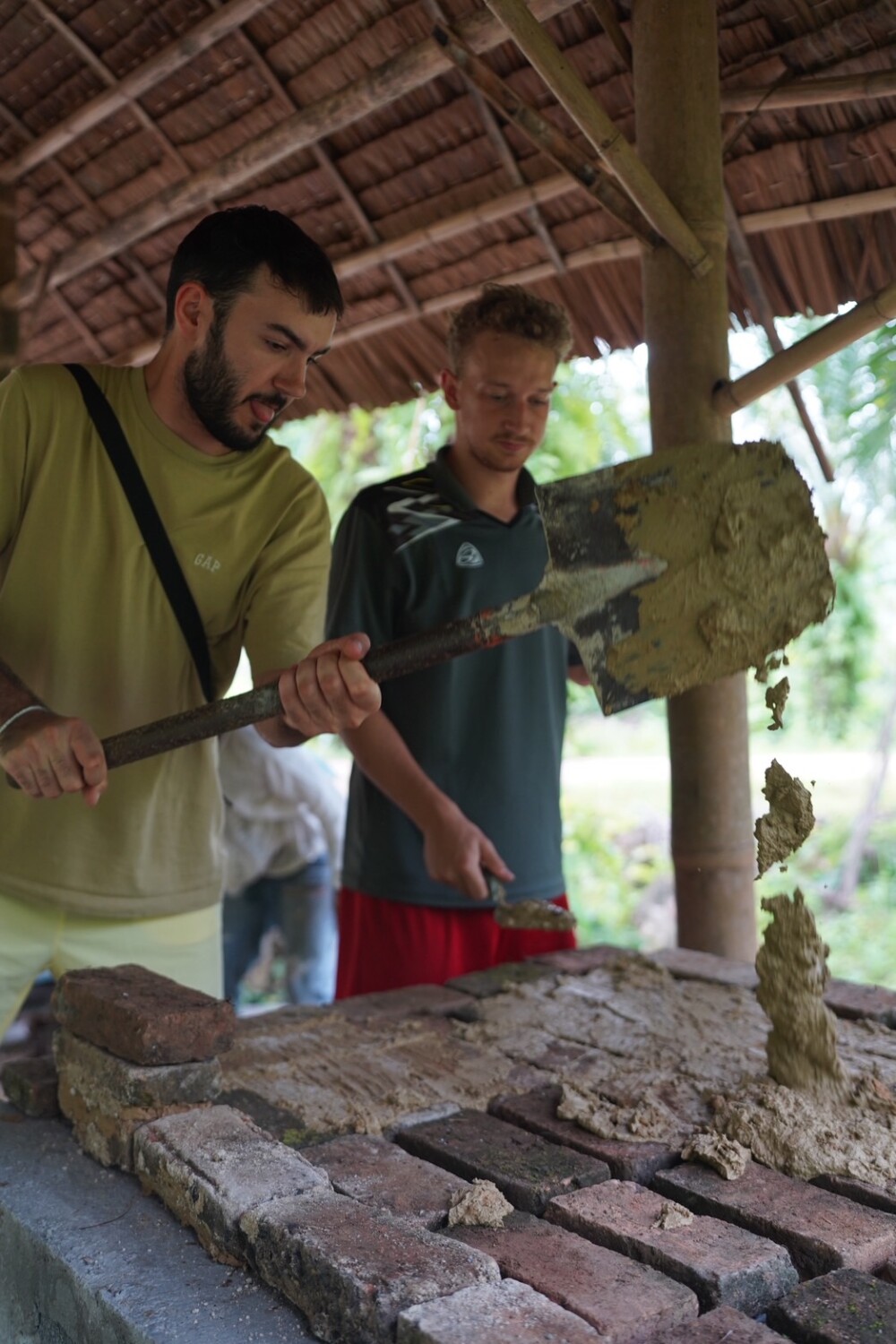
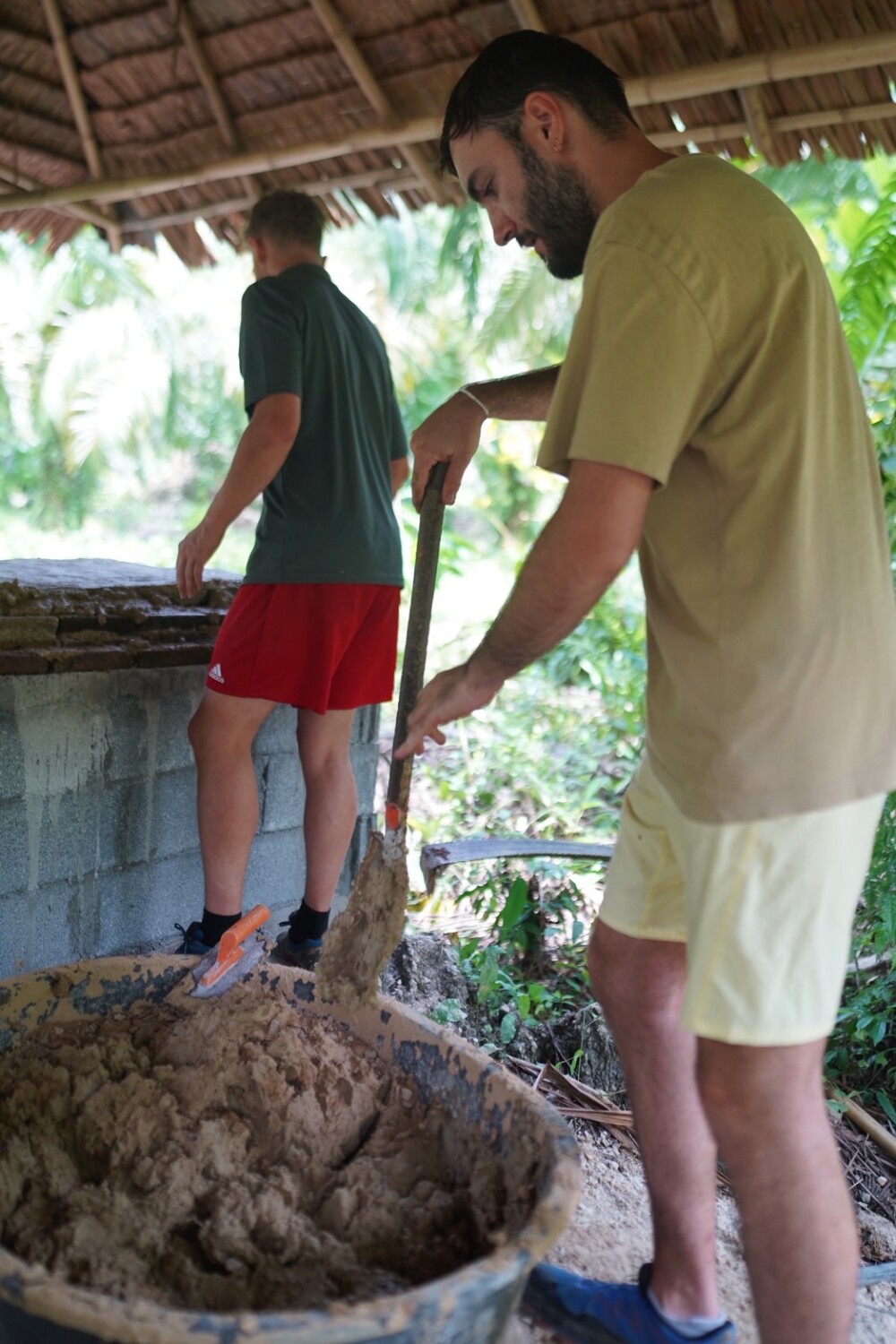

During the lunch break, hay was purchased for use in the final clay mix later in the week. On the way back, the group visited Bang Ree’s house, where he demonstrated the machinery used to split and prepare bamboo into thin, flexible straps. Twenty of these straps were purchased for use in the oven structure.
In the afternoon, the team cut the straps to size and, with Chaiyut’s guidance, constructed the dome form and door frame by weaving the bamboo into the correct shape.
Wednesday – Day 21 : Oven Wall Construction, Bamboo Support, and Clay Replenishment
Wednesday was dedicated to further developing the structure of the pizza oven. The students continued stacking bricks upward along the bamboo framework, carefully forming the arched shape of the top section and defining the entryway. Precision and teamwork were essential, as the dome needed to be both stable and symmetrical.
Once the brickwork was completed for the day, the team began coating the outer walls with the prepared clay mixture. This first outer layer served to bind the bricks together and create a sealed, insulated surface, which is essential for heat retention during baking.
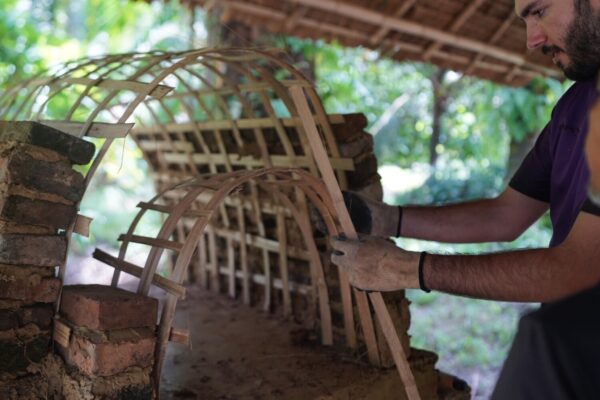
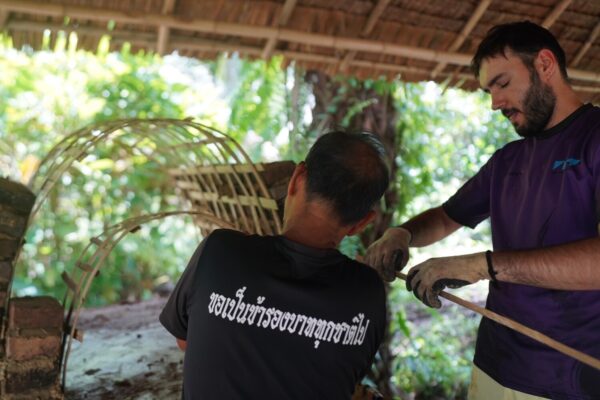
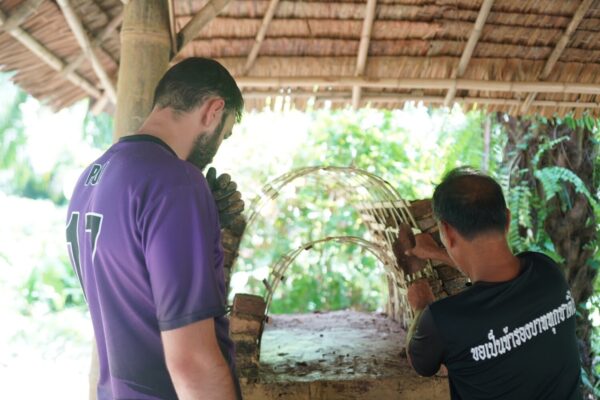
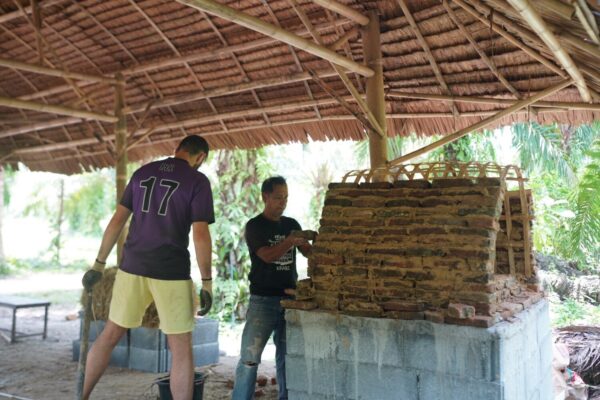
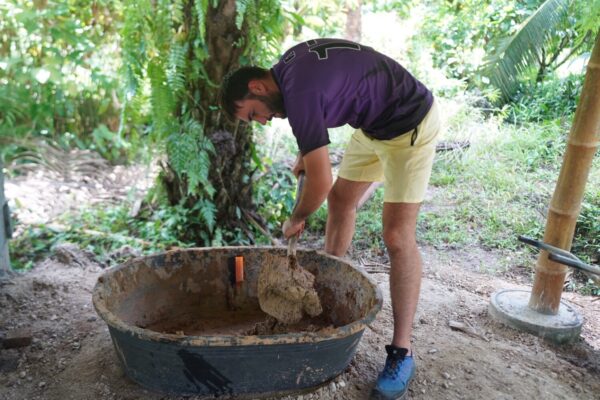
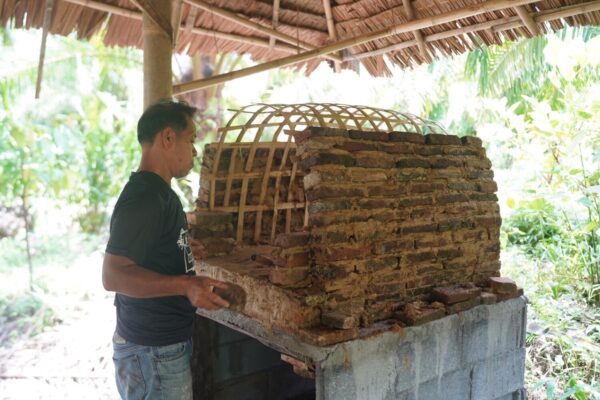

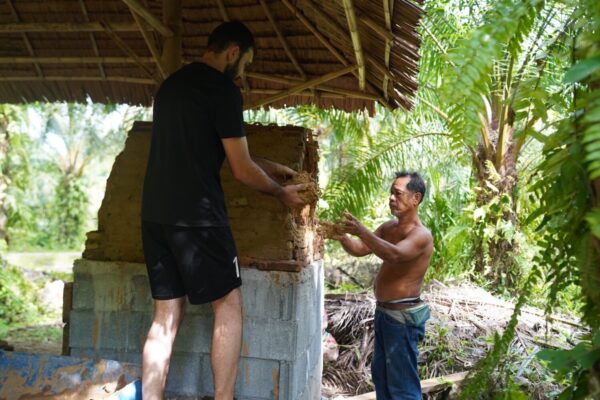
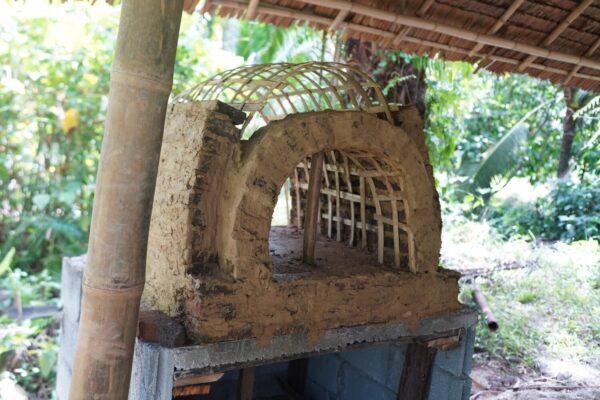
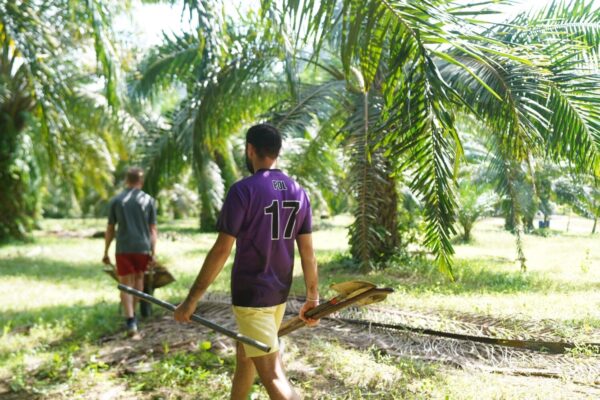
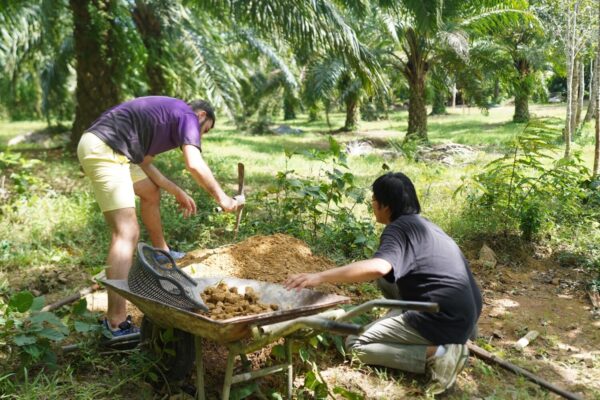
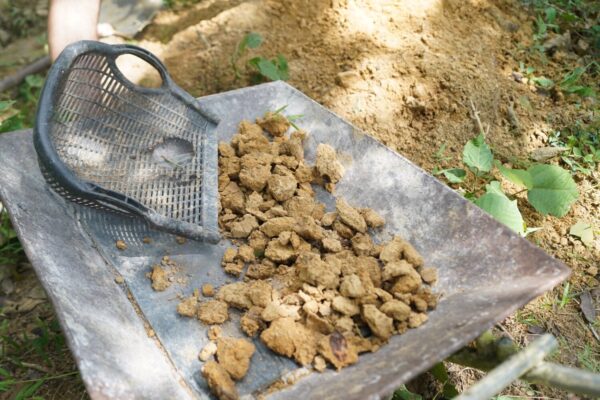
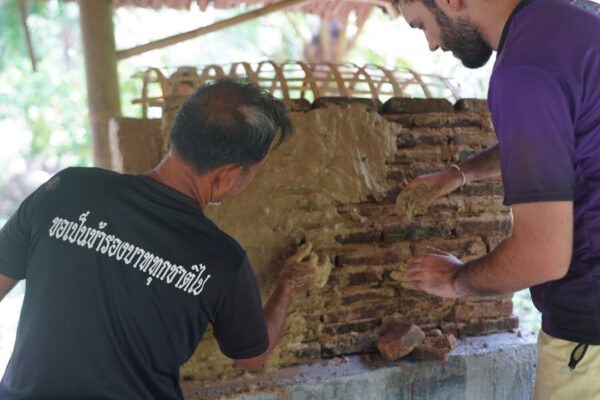

As the clay supply from earlier in the week was depleted during this stage, the students returned to the site where they had previously sourced termite nests. Under supervision, they collected a new batch of termite clay and mixed it with water back at the construction area to achieve the same thick, adhesive texture used earlier. The mixing process, which now came naturally to the students, demonstrated how much they had improved in understanding local construction materials.
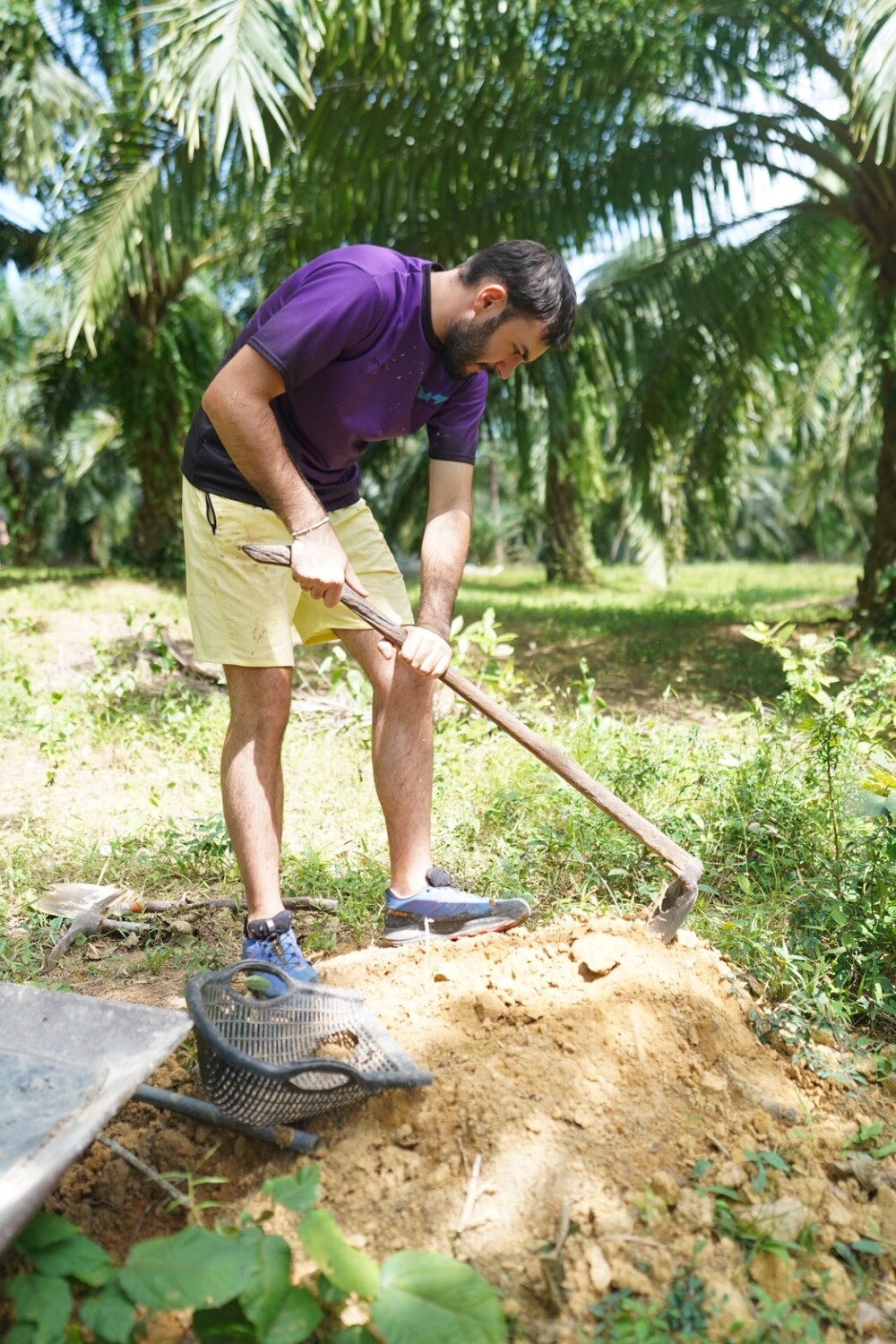
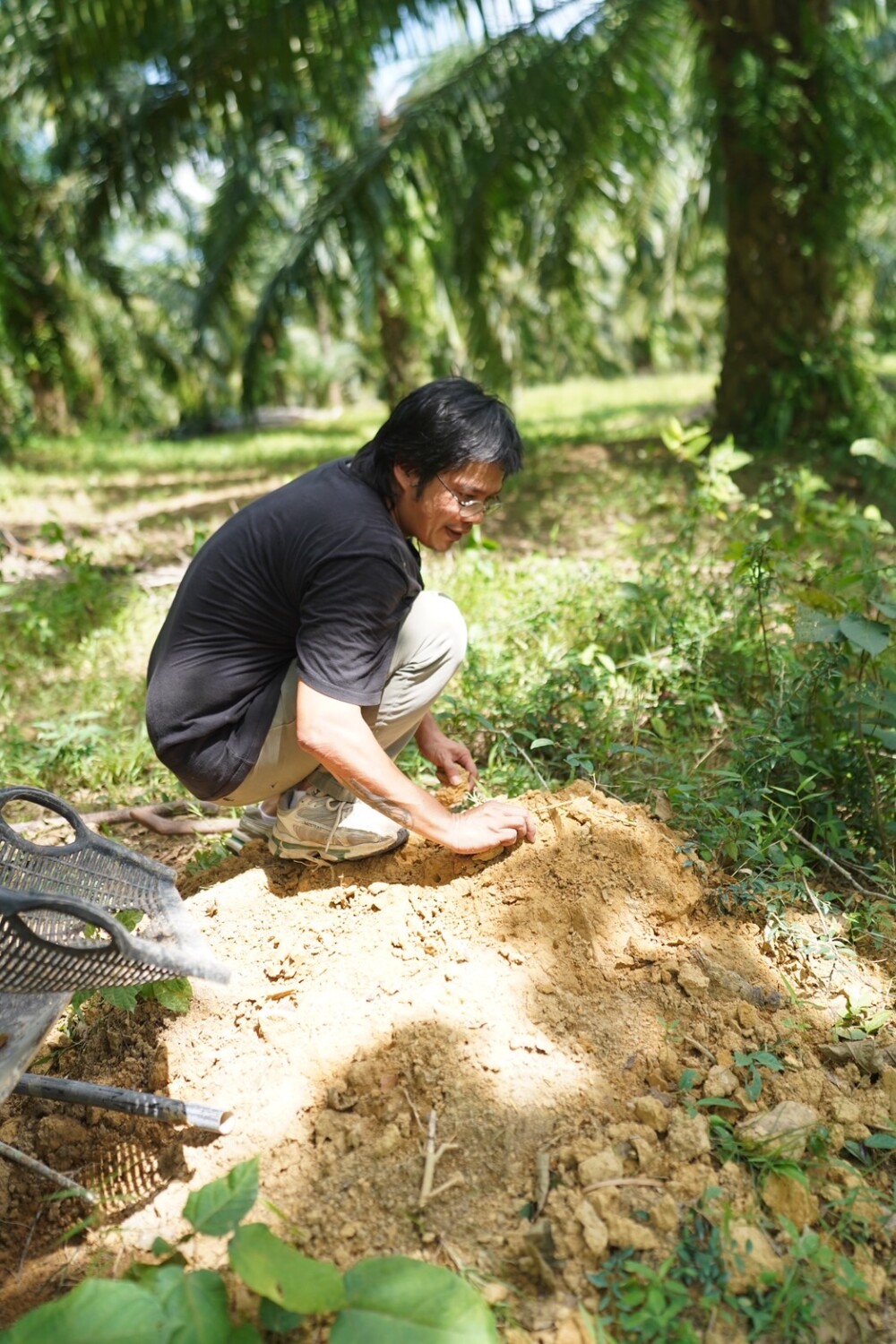
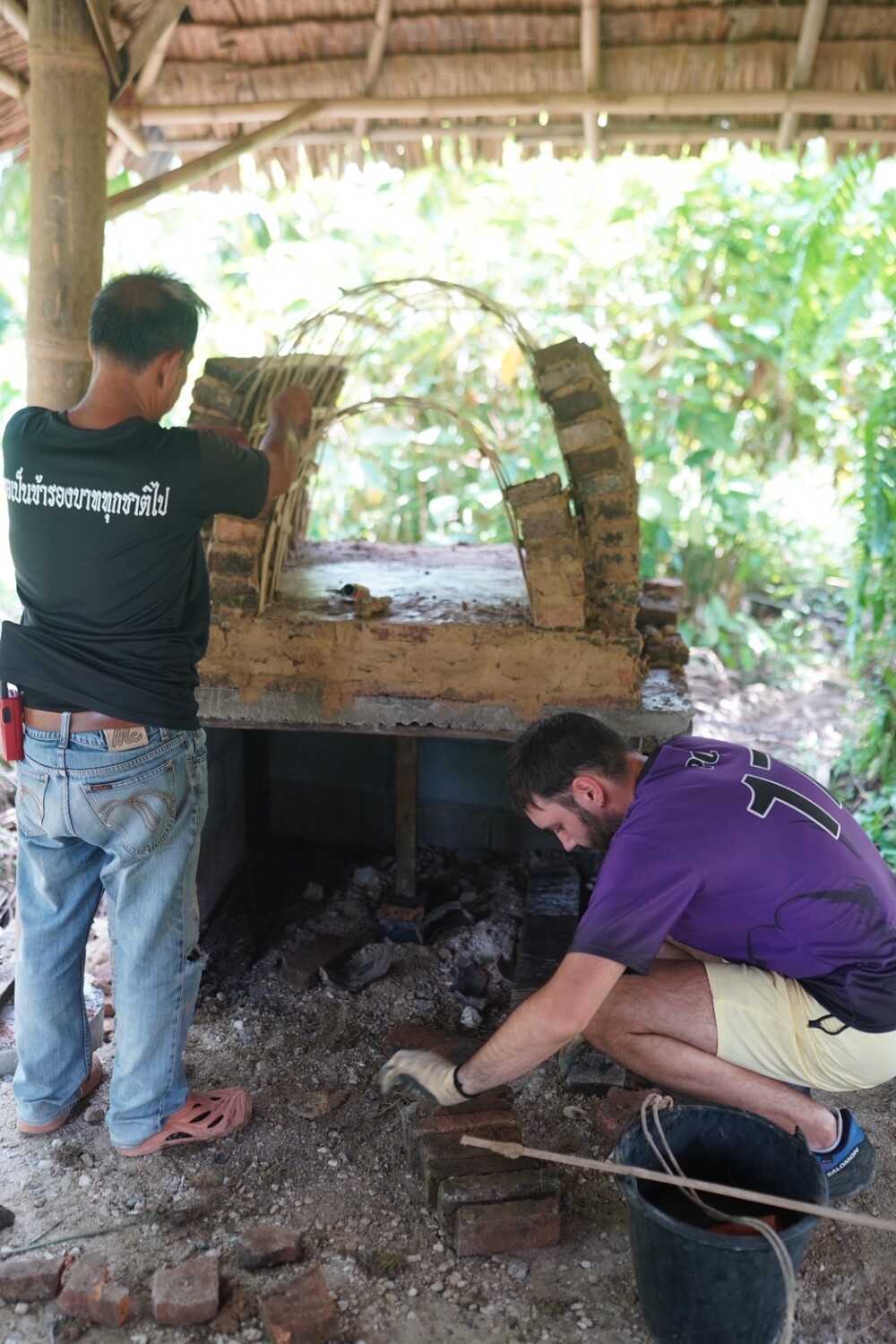
To prepare for the next stages of the oven’s interior, the clay was split into two batches:
One batch remained pure, to be used for surface applications and binding.
The other batch was mixed with hay, which improves insulation and internal structural integrity when applied inside the oven.
The day ended with material preparations complete and the oven structure taking clear shape, setting the stage for the next phase of internal filling and clay layering.
Thursday – Day 22 : Internal Filling and Cultural Field Trip
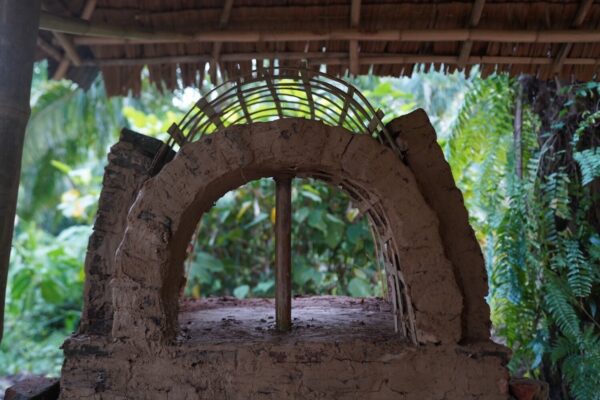
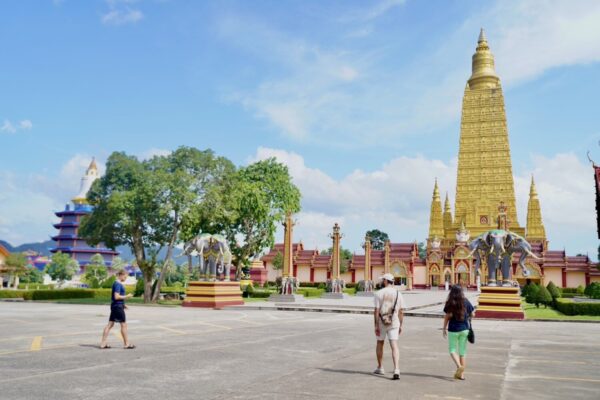


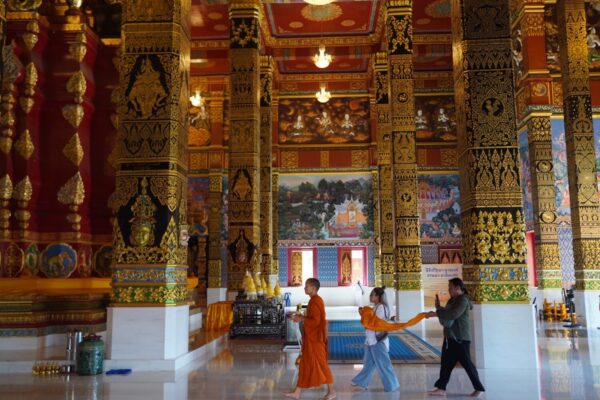
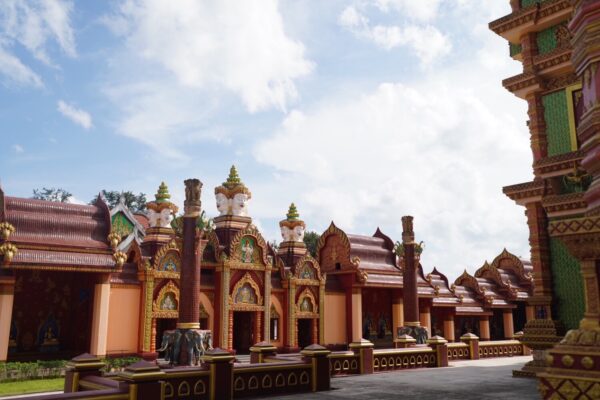

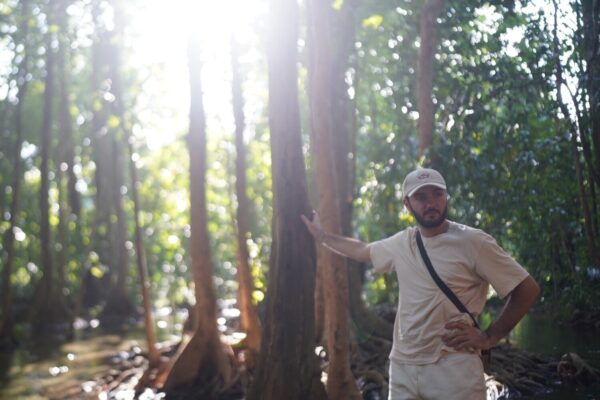
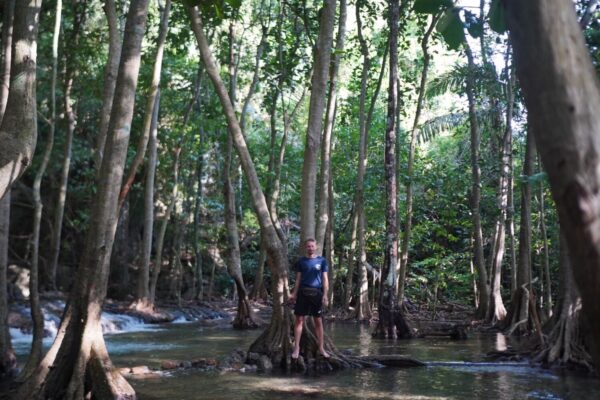


In the morning, students completed the structural brickwork on both sides of the oven and filled the interior cavity using the clay and hay mixture. With the oven structure nearly complete, the team left it to dry for several days.
In the afternoon, the group visited Wat Bang Tong, a renowned temple in Krabi Province. Wat Bang Tong is famous for its towering golden pagoda modeled in traditional Thai-Buddhist architectural style. The temple features intricate carvings and detailed murals both inside and out. This visit marked the students’ first time entering a Buddhist temple. They expressed awe at the spiritual ambiance and artistry, gaining meaningful insight into Thai religious culture and architectural heritage.
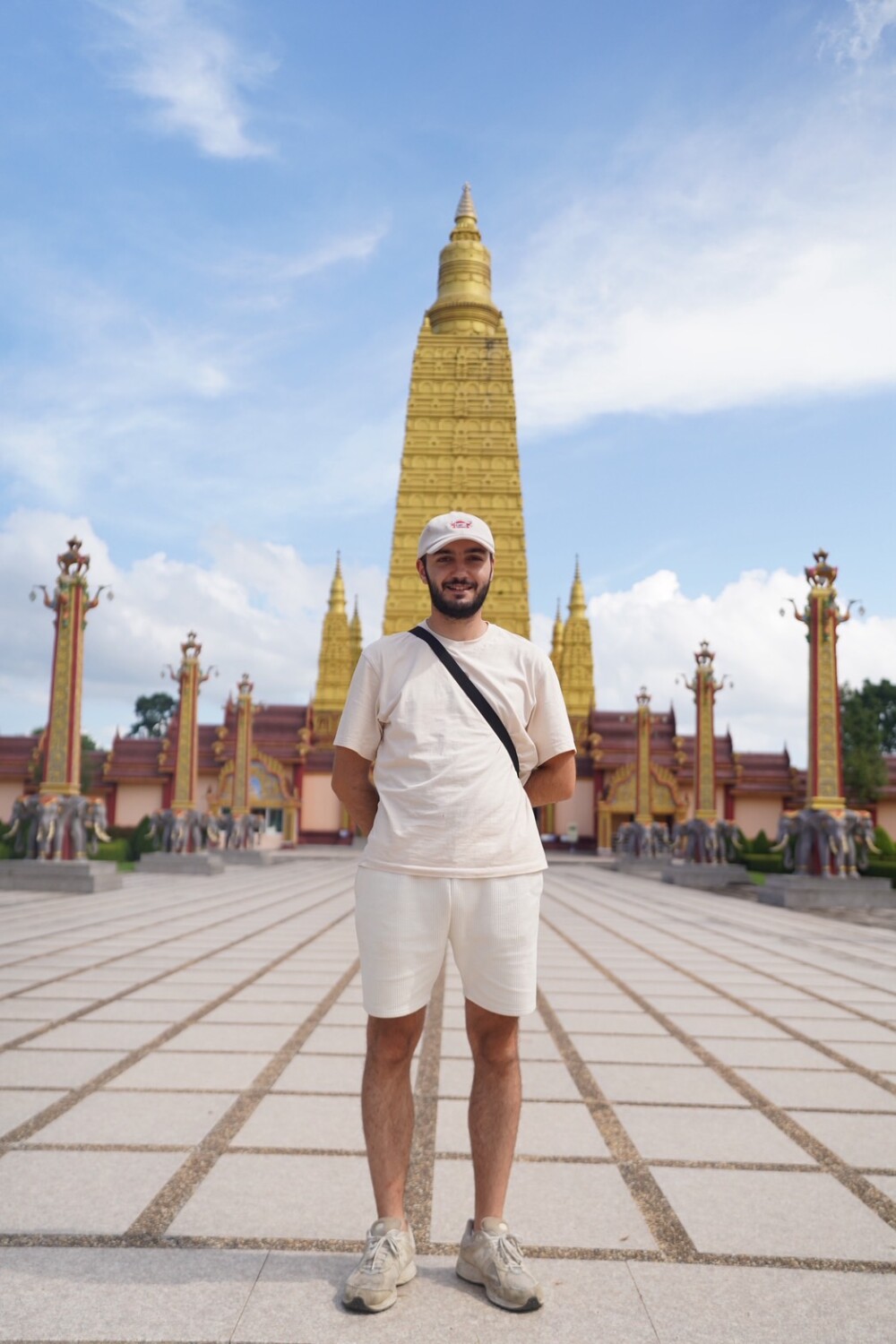
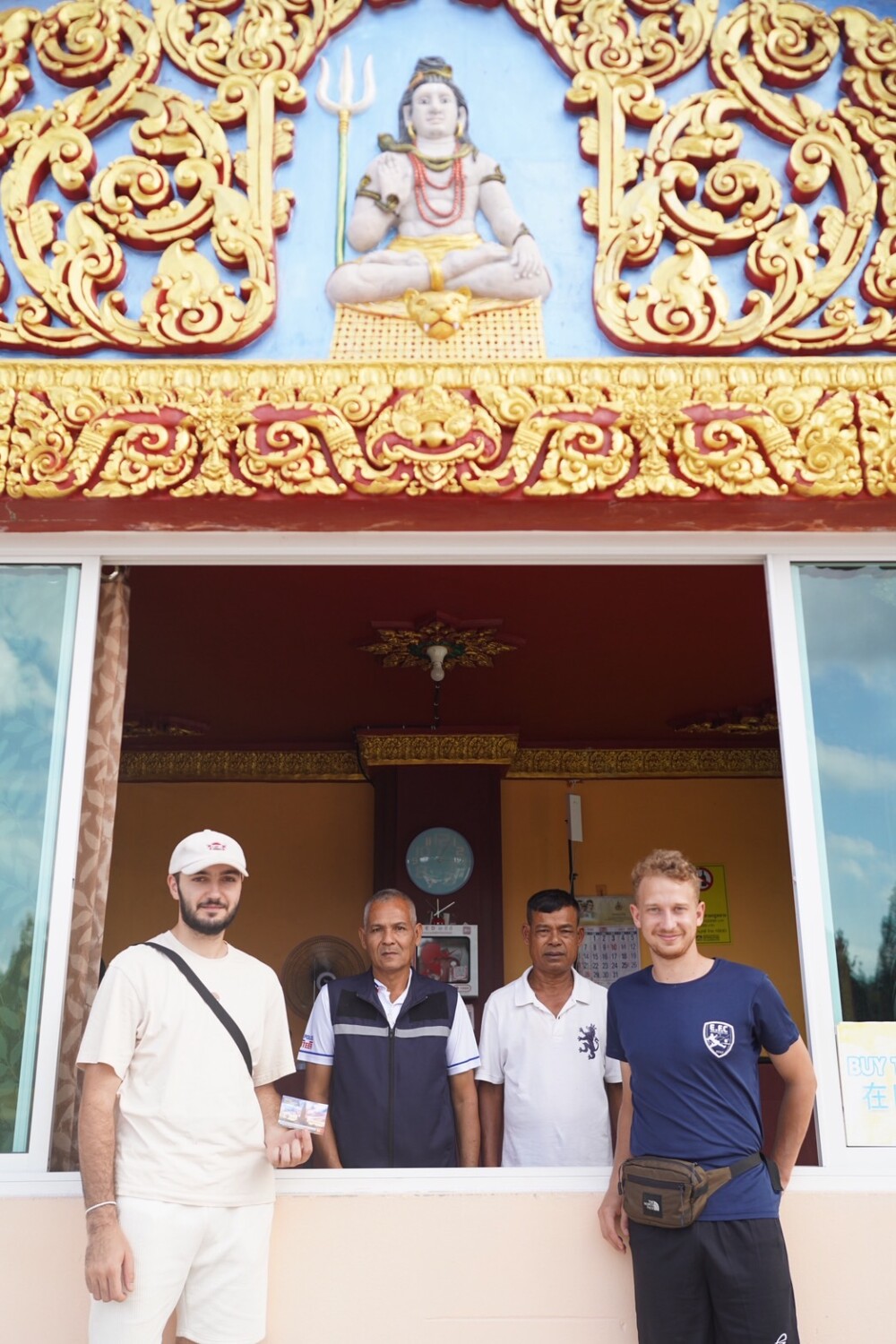

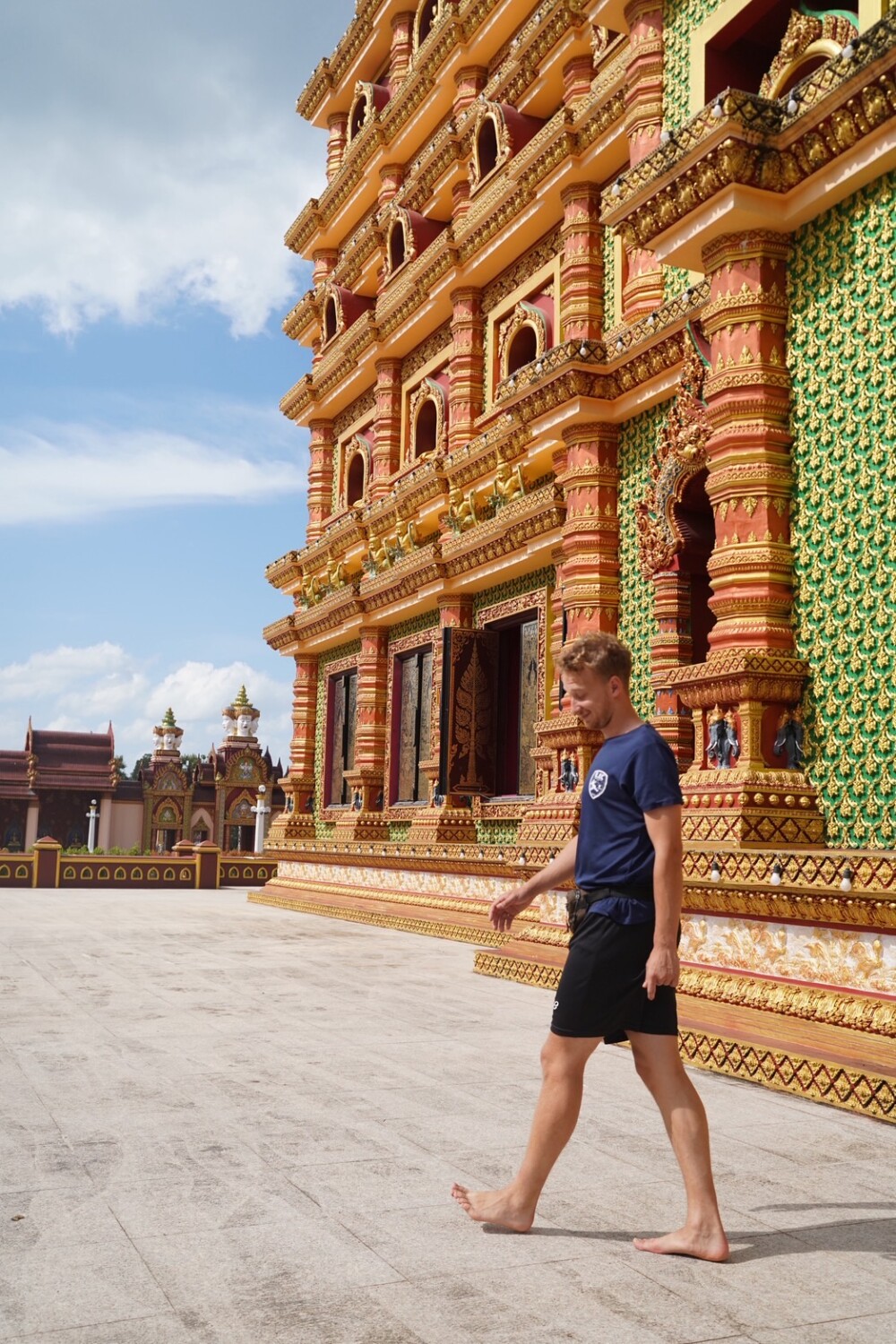
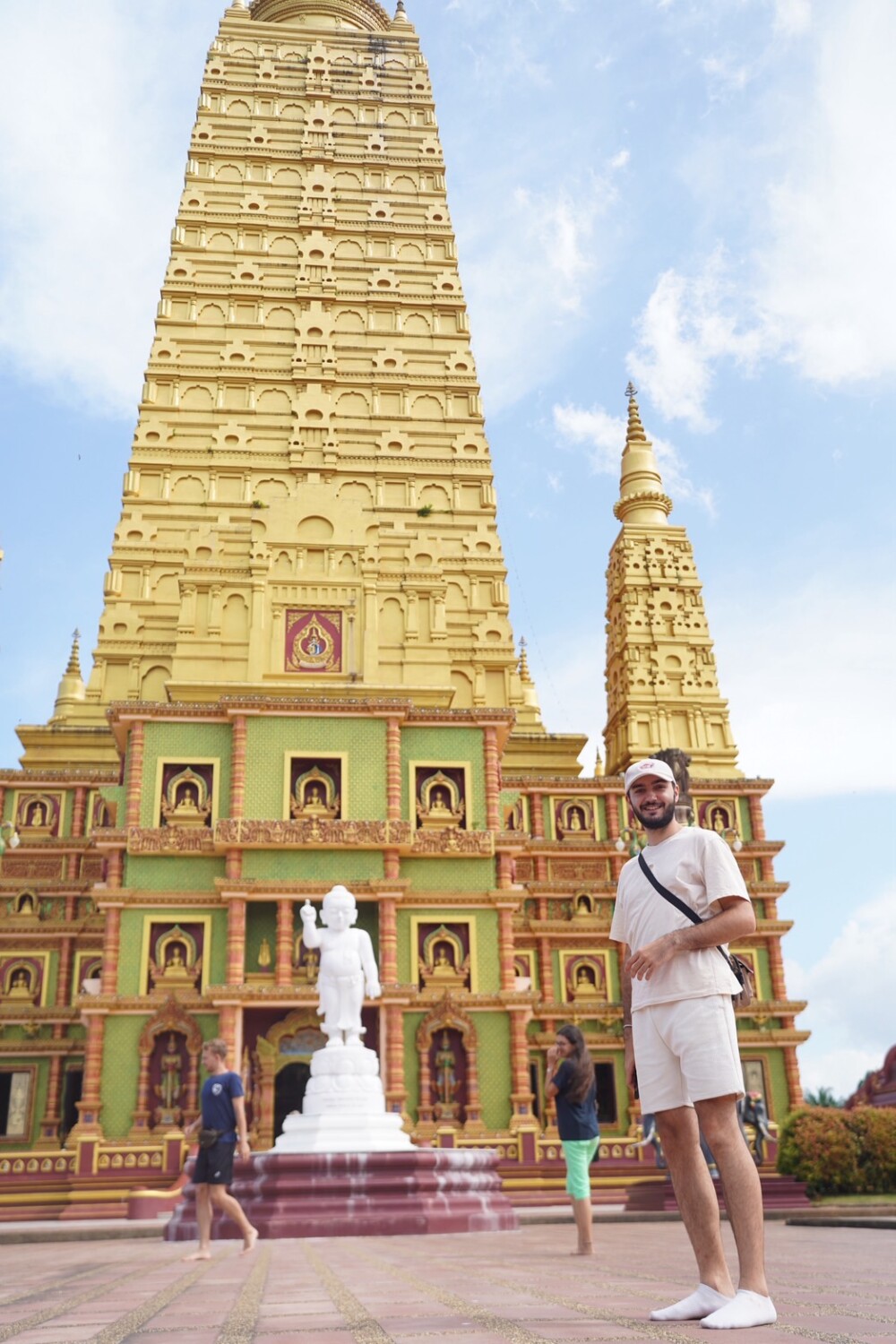
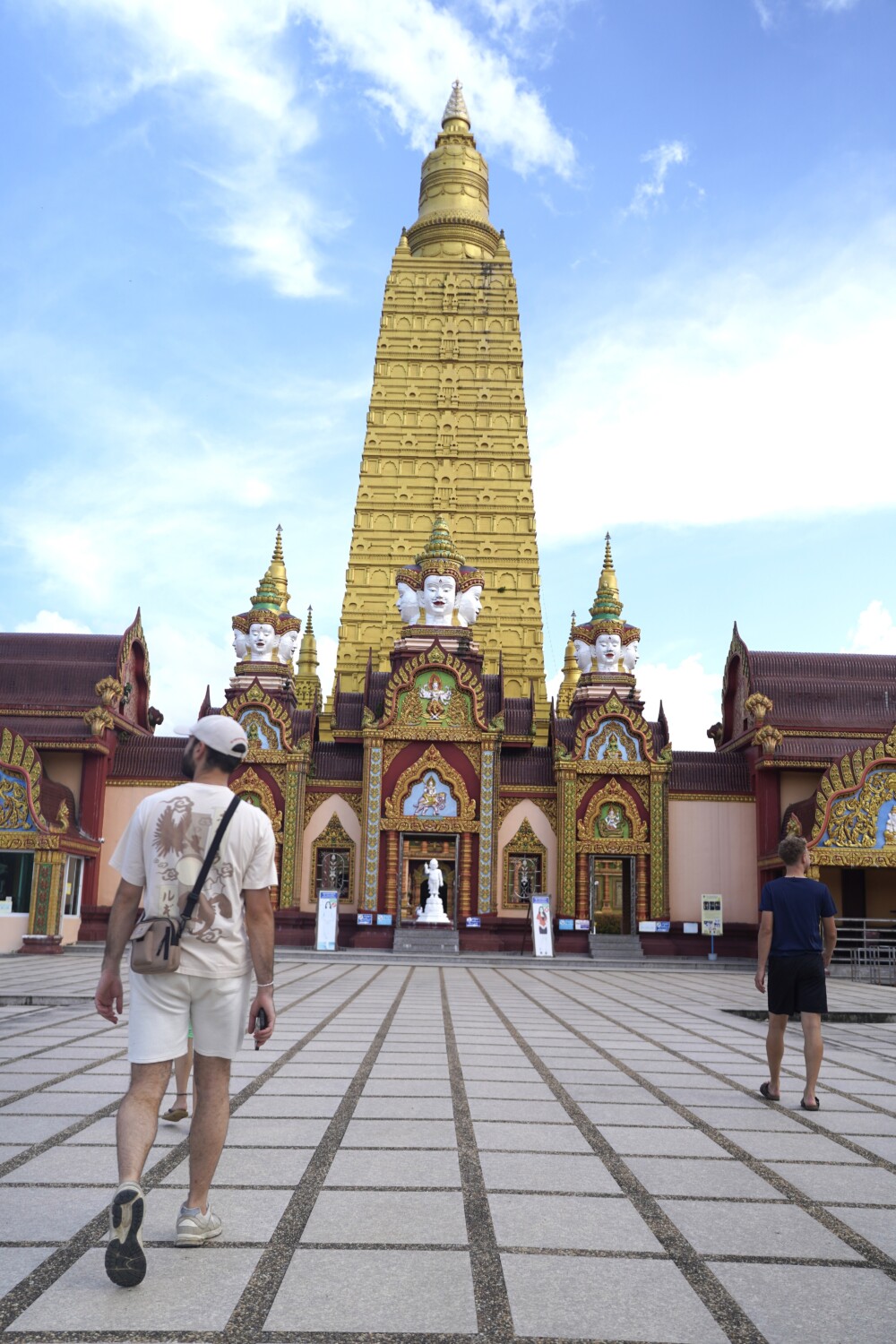

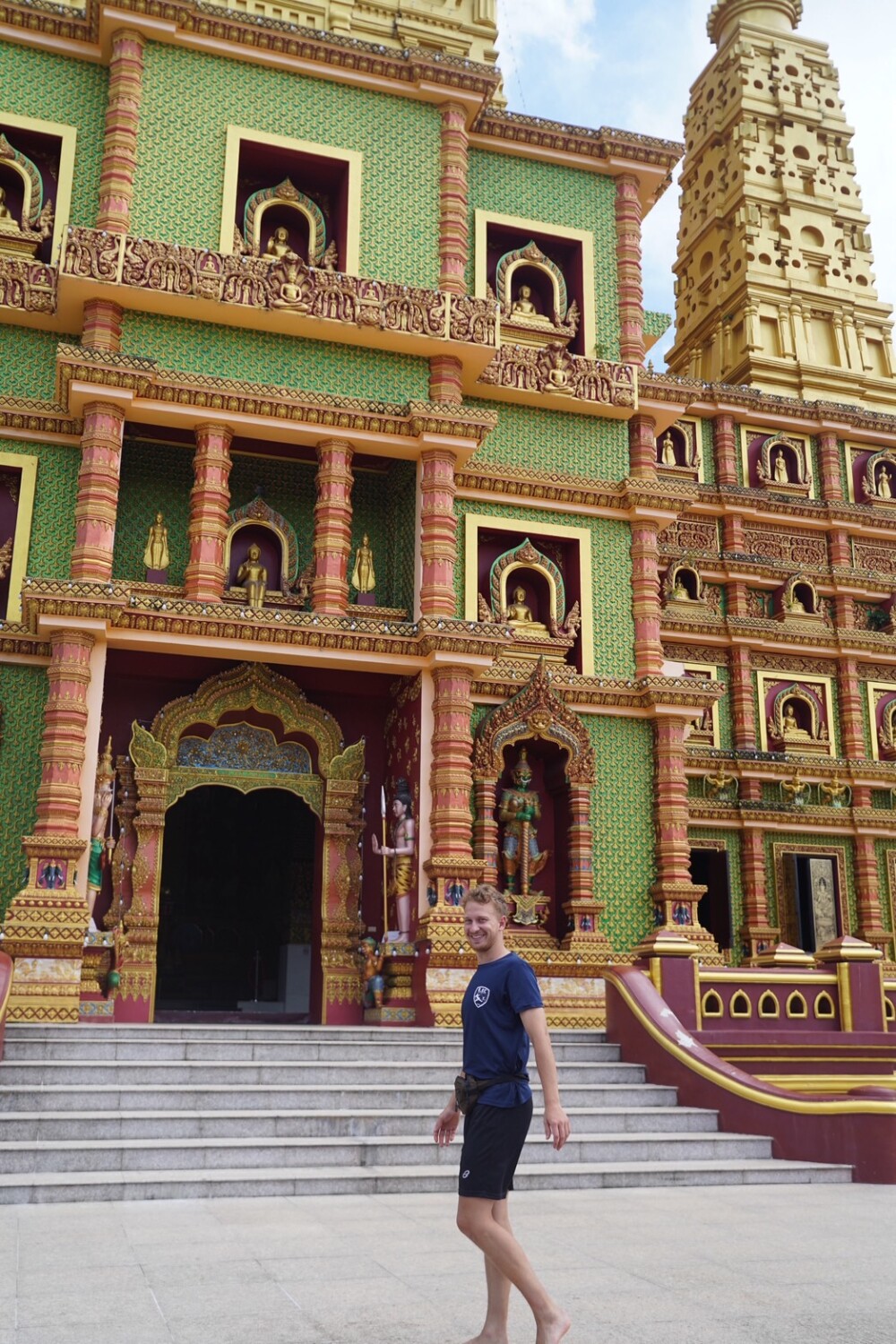
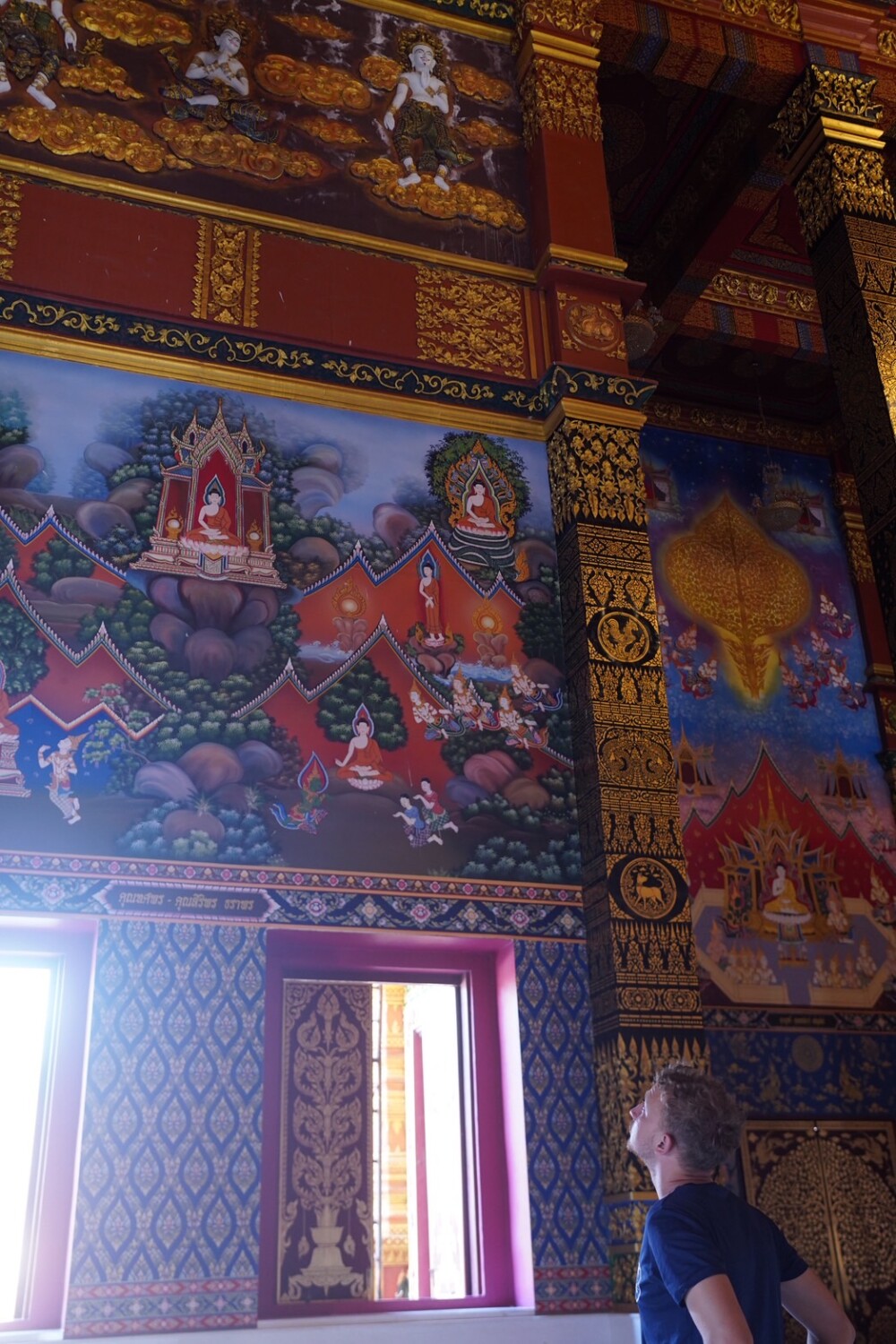
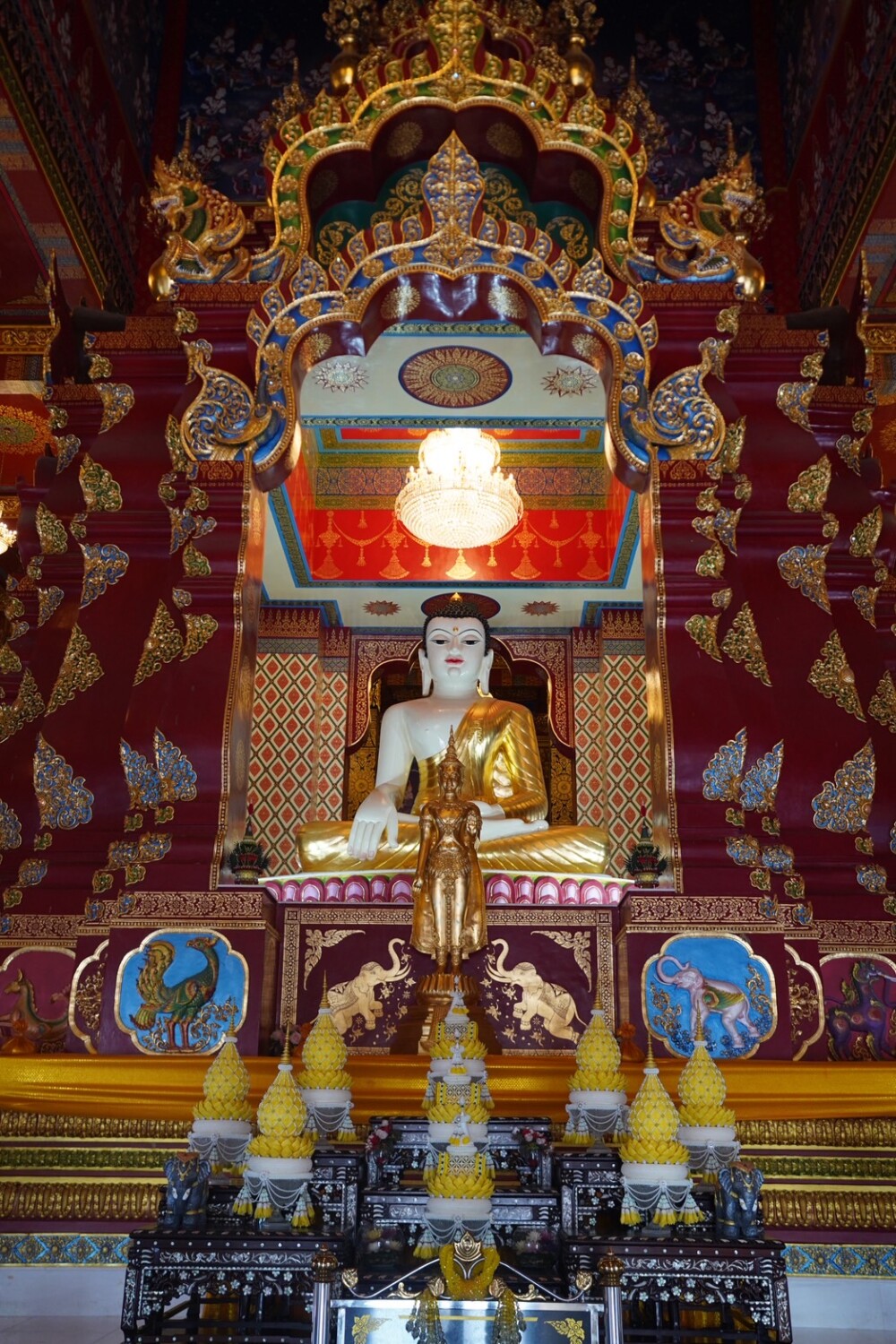
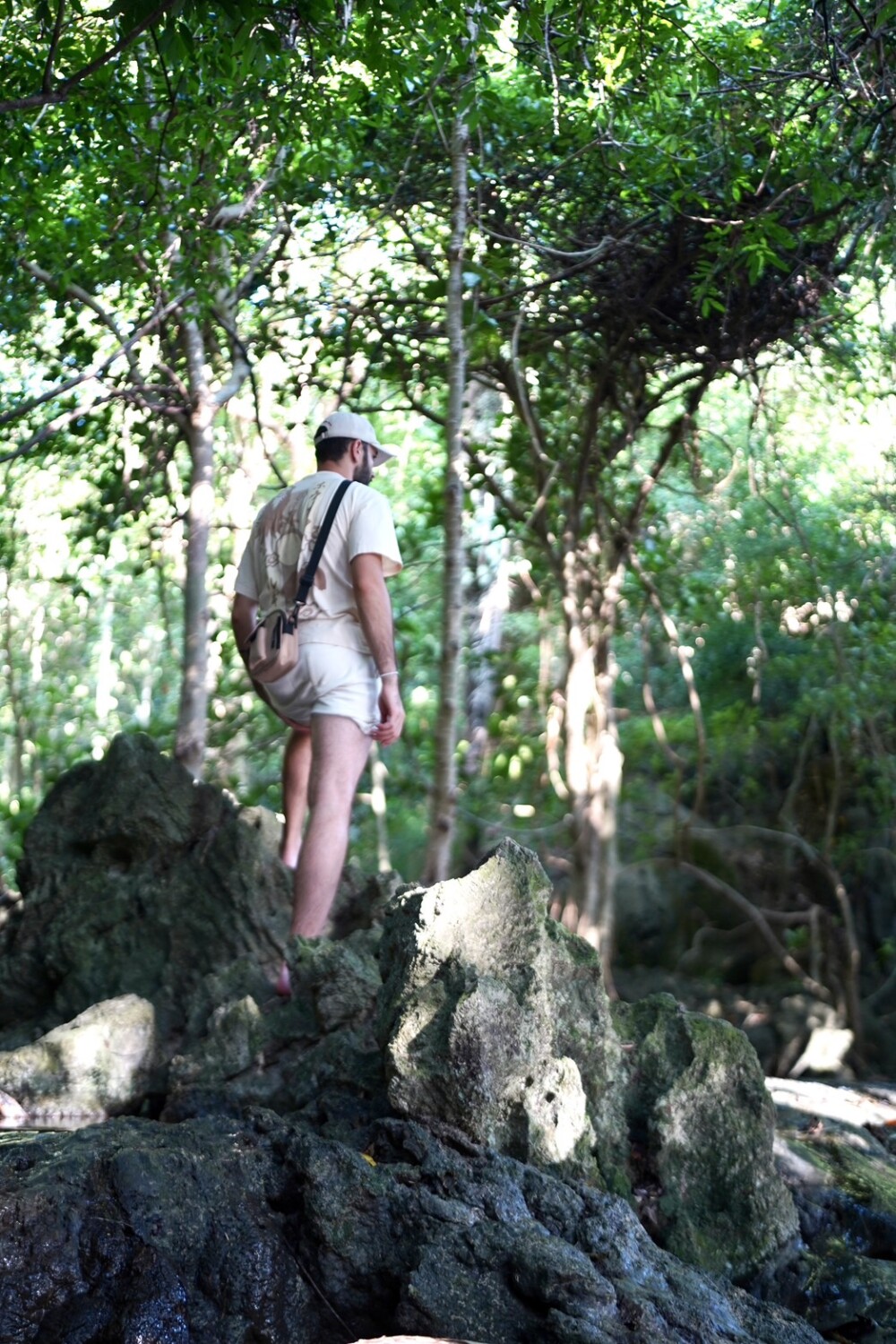

Following the temple visit, the group went to Ton Prao Jungle Pool for a refreshing break. While relaxing in nature, students opened up in informal discussions about their personal journeys, life in France, and aspirations for the future—strengthening bonds within the group and deepening their experience.
Friday – Day 23 : Clay Strengthening and Drying Phase
Friday was a lighter workday, as most sections of the pizza oven required drying. The students closed half of the back opening of the oven while allowing the other parts to remain open for ventilation. A second inner layer of clay mixed with hay was applied to reinforce the oven’s internal wall.

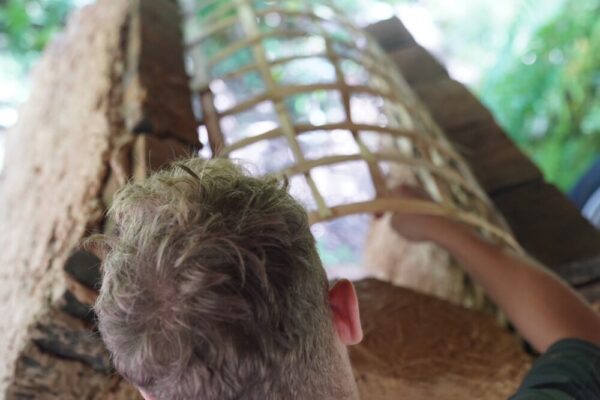

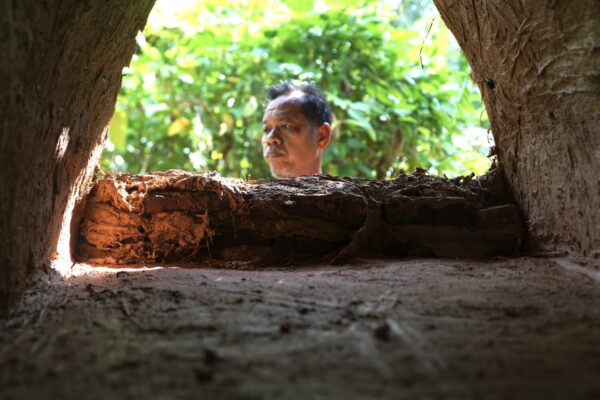
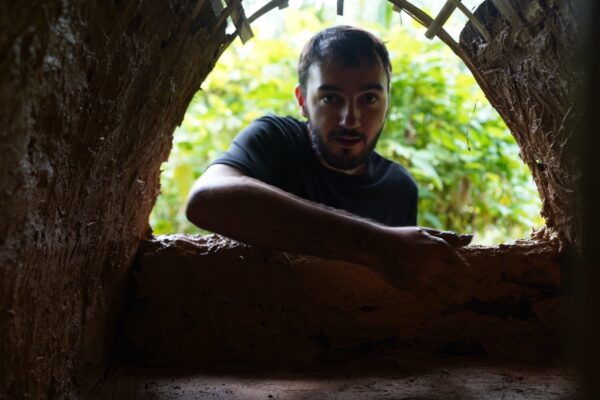
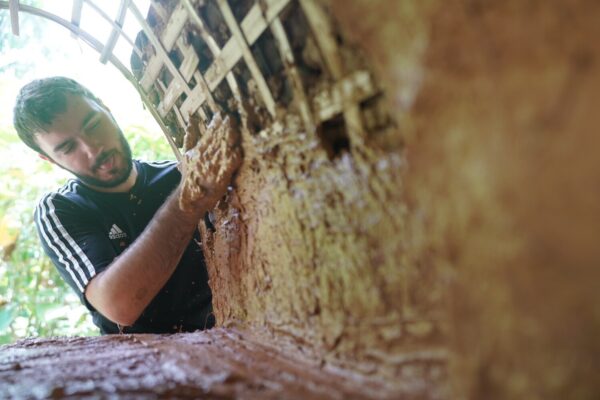
Additionally, students prepared a new batch of clay to be used in the upcoming week’s finishing work. The drying period is expected to last around four days.
Next week, the remaining clay will be used for final touches on the oven and its chimney. Afterward, the focus will shift to bamboo craftsmanship with Bang Ree and palm waste design with Chaiyut, allowing the students to explore additional sustainable material techniques and eco-design applications.
Eco Construction Report – Week 7
From Palm Waste to Bamboo Construction
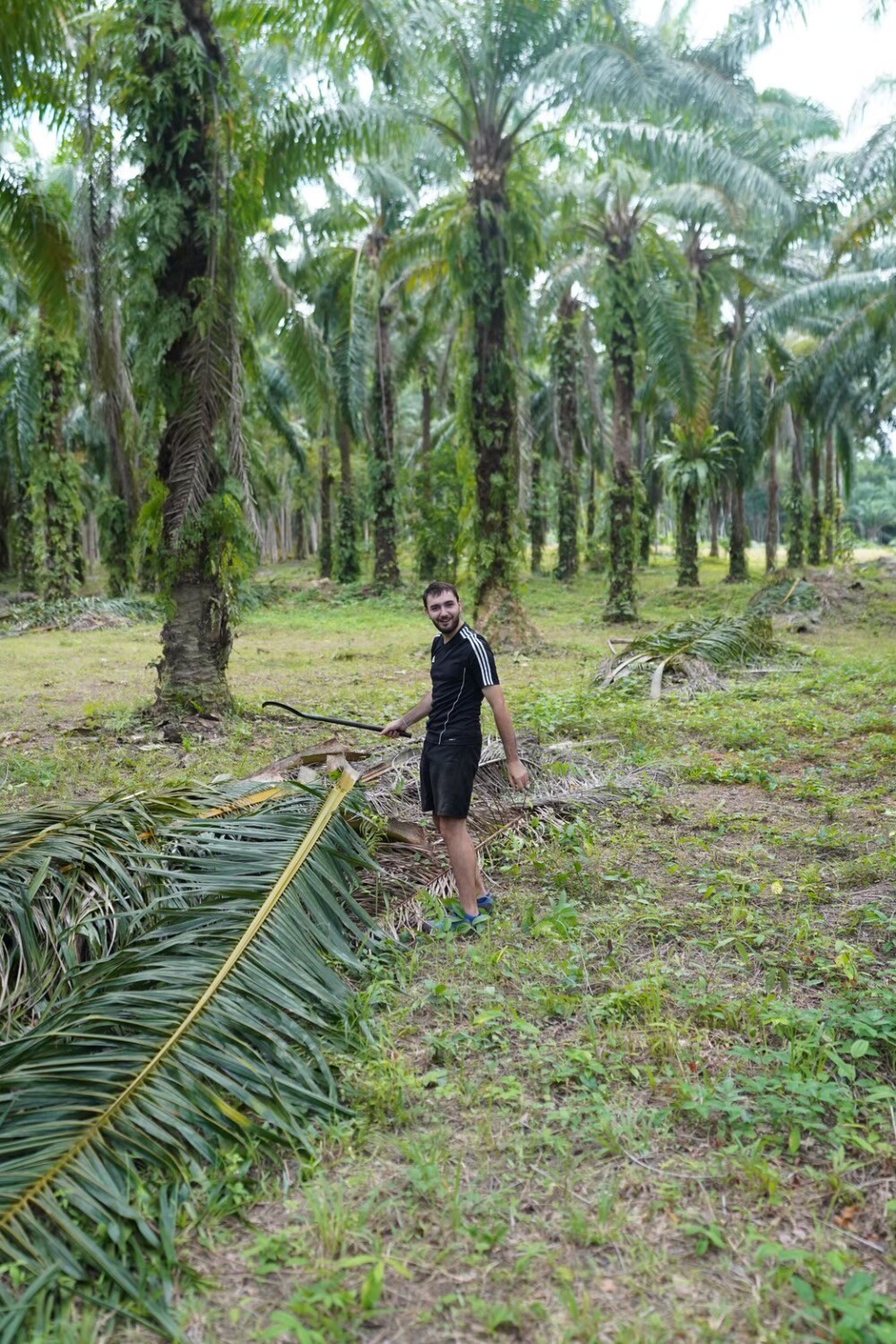
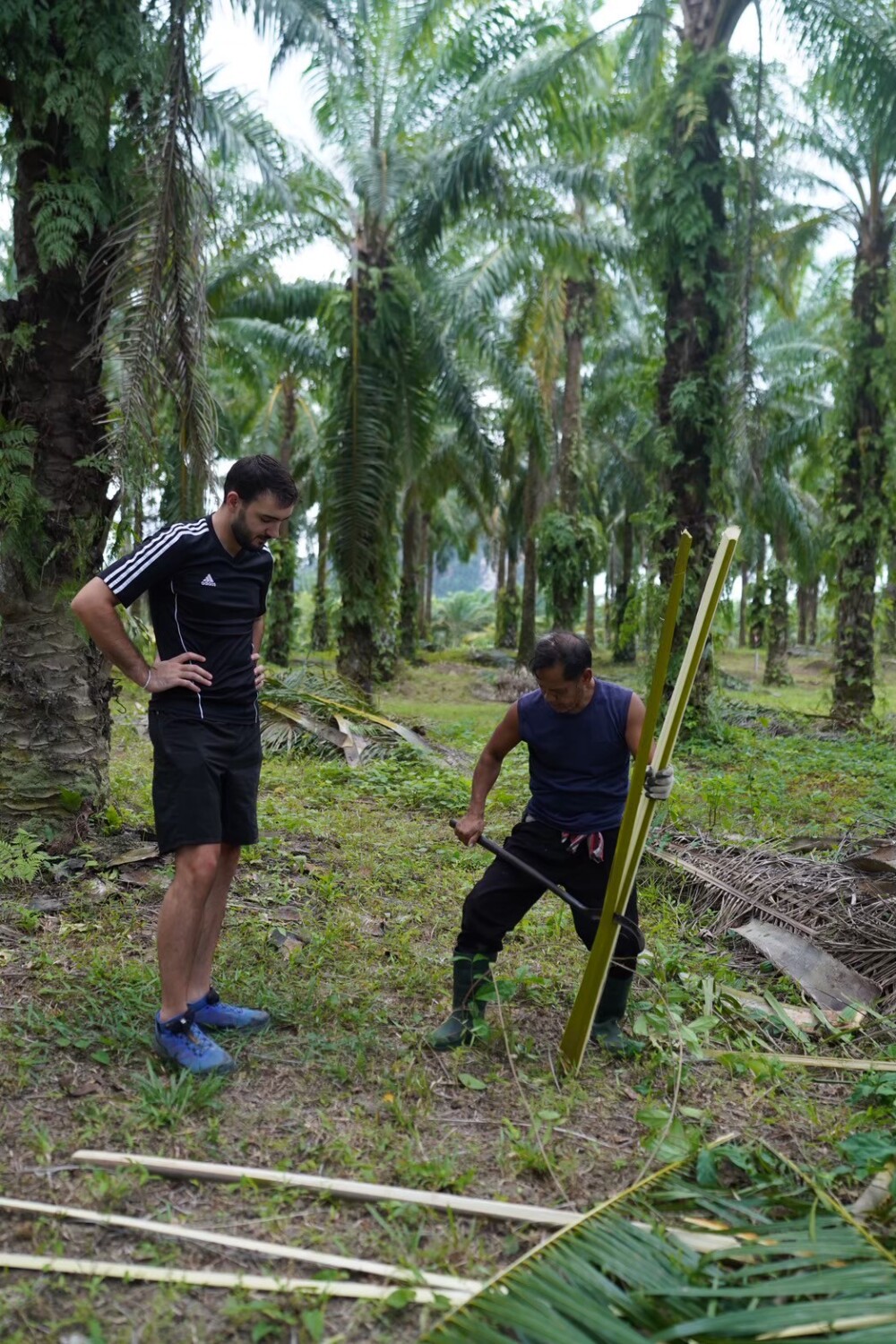
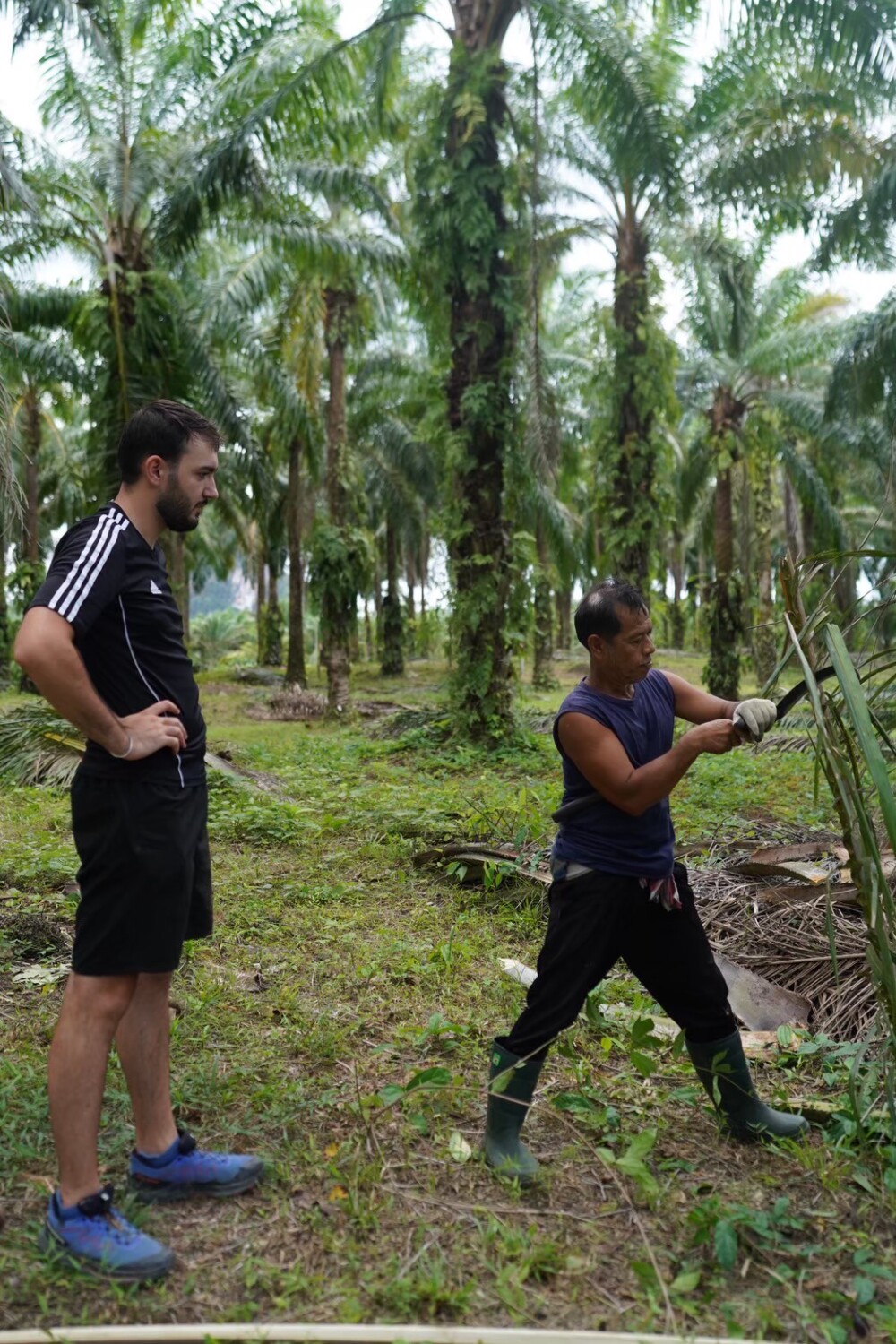
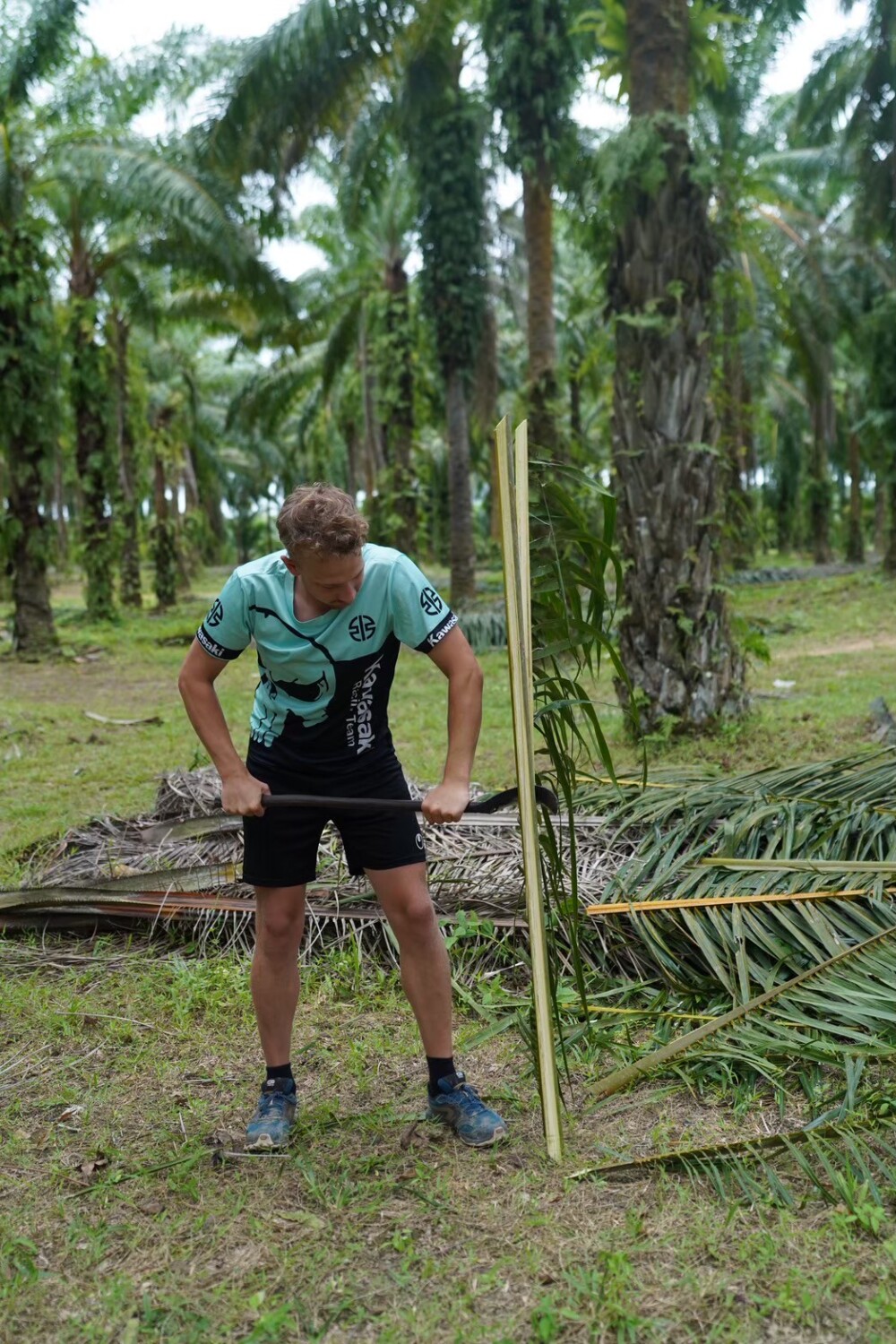
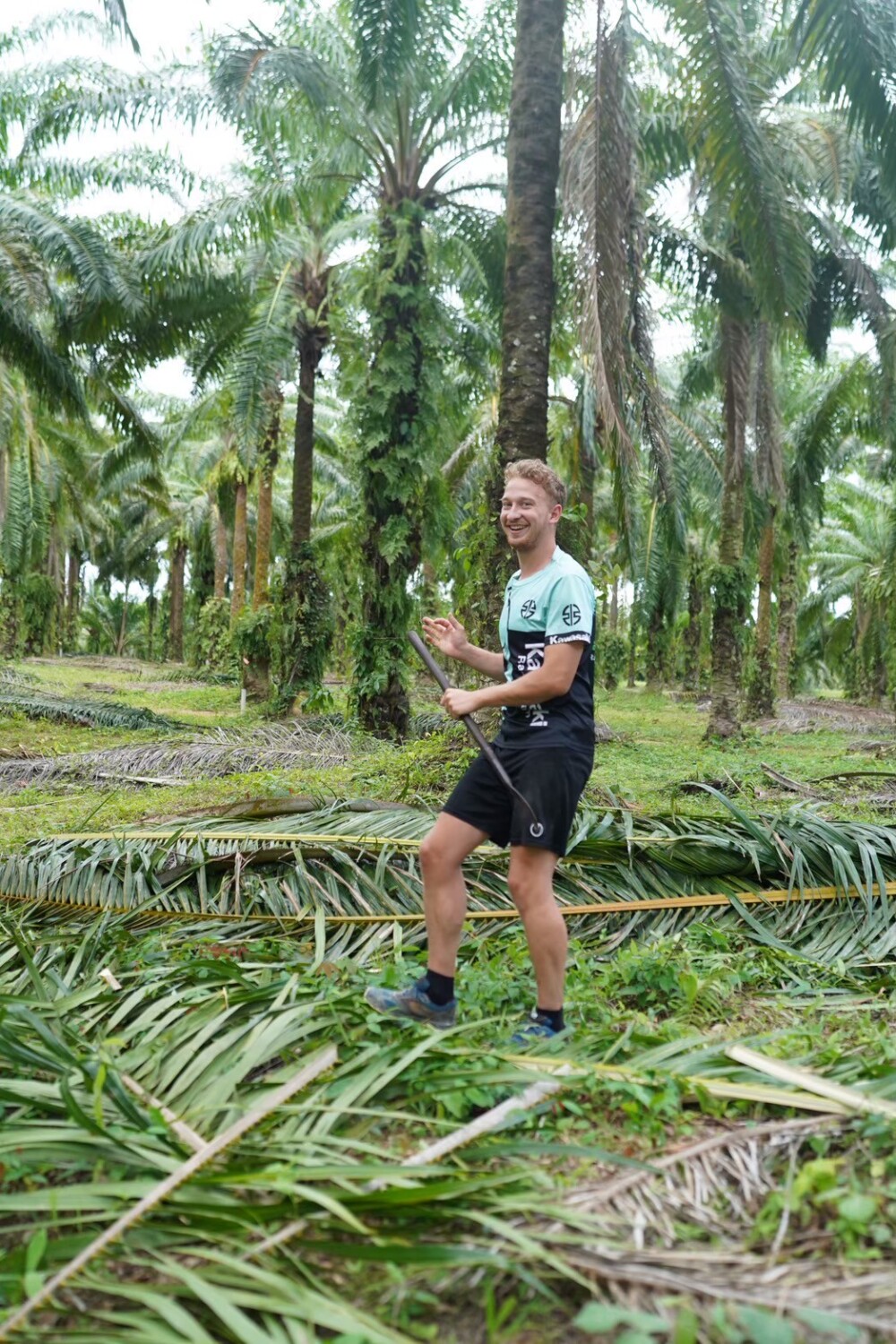

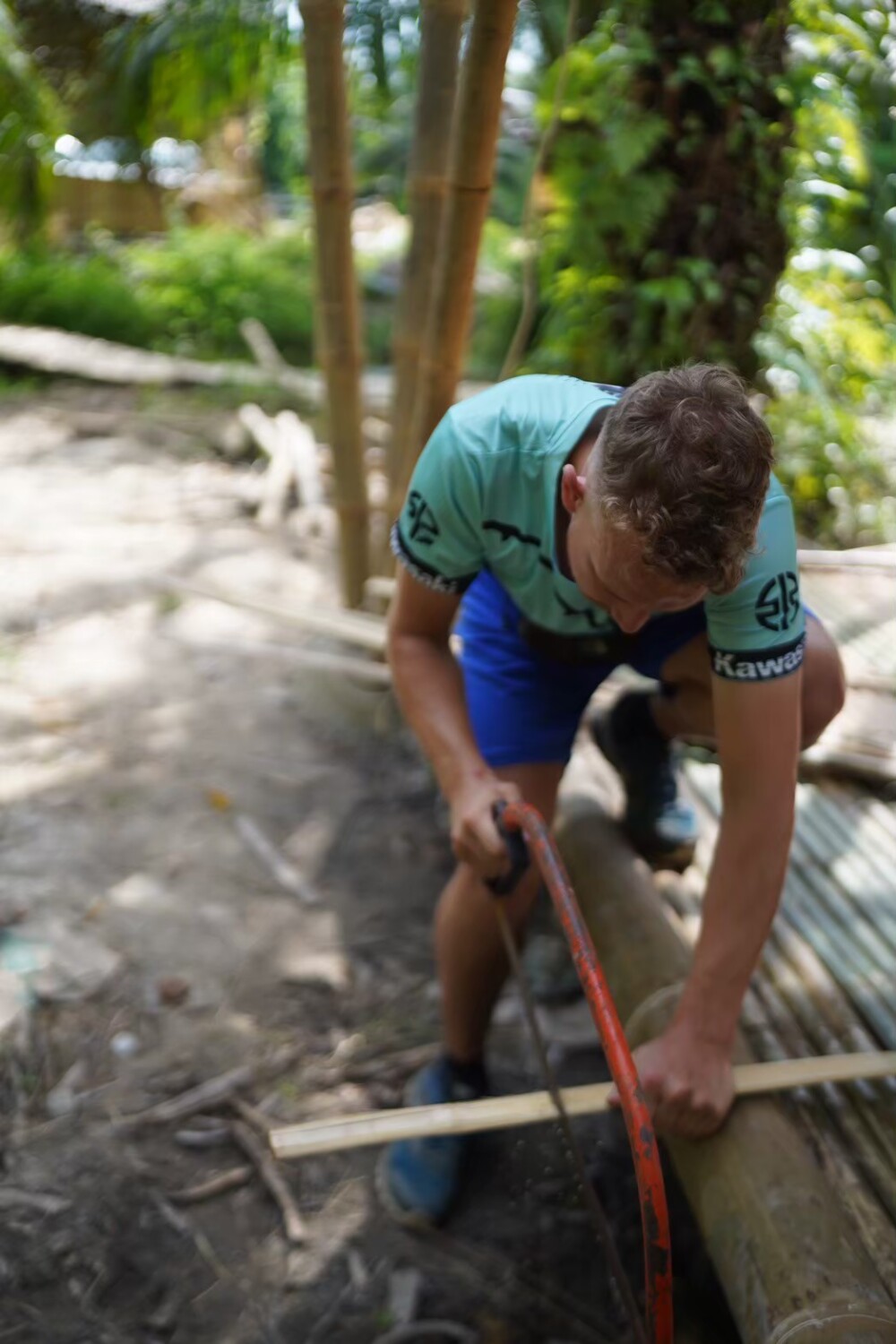

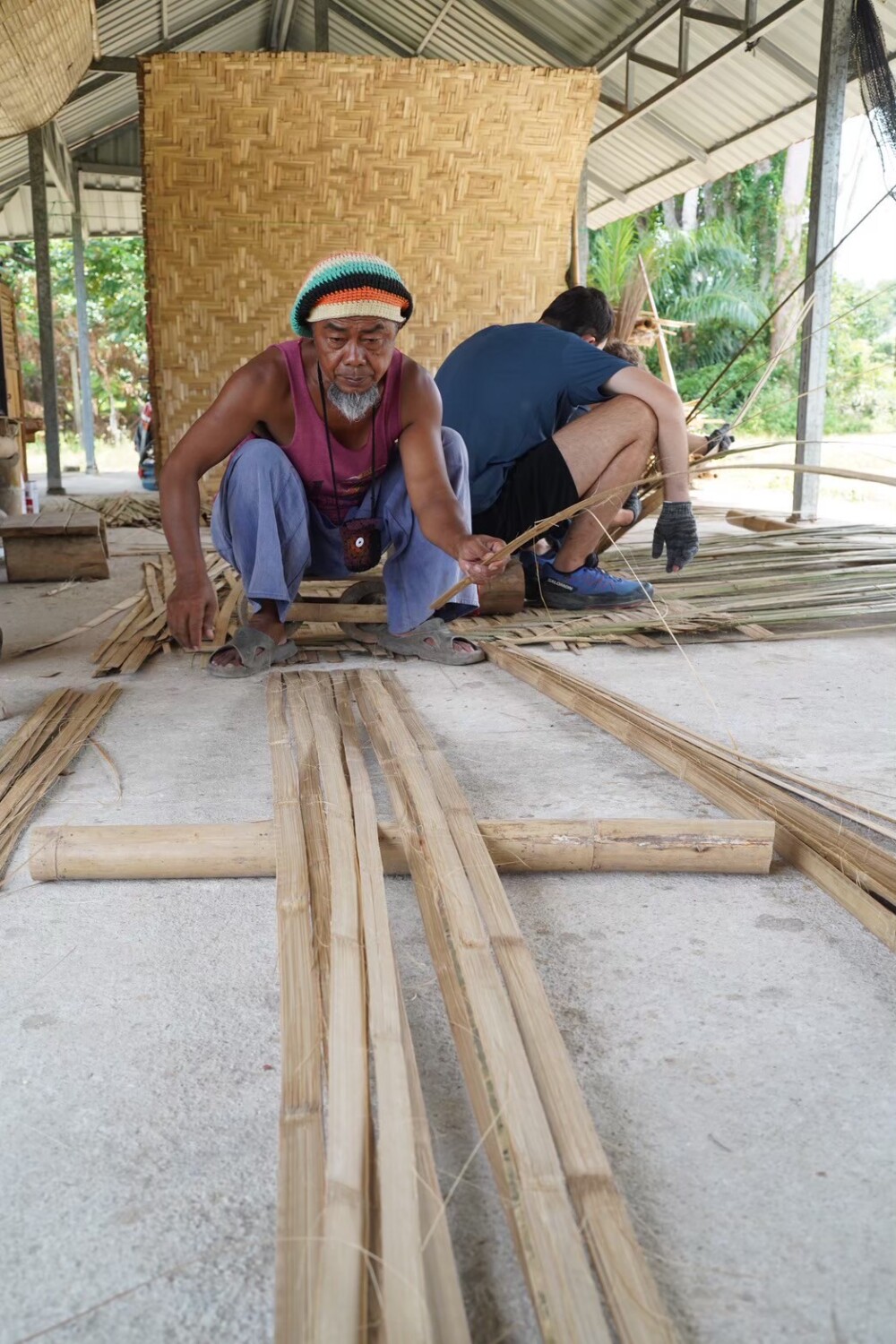
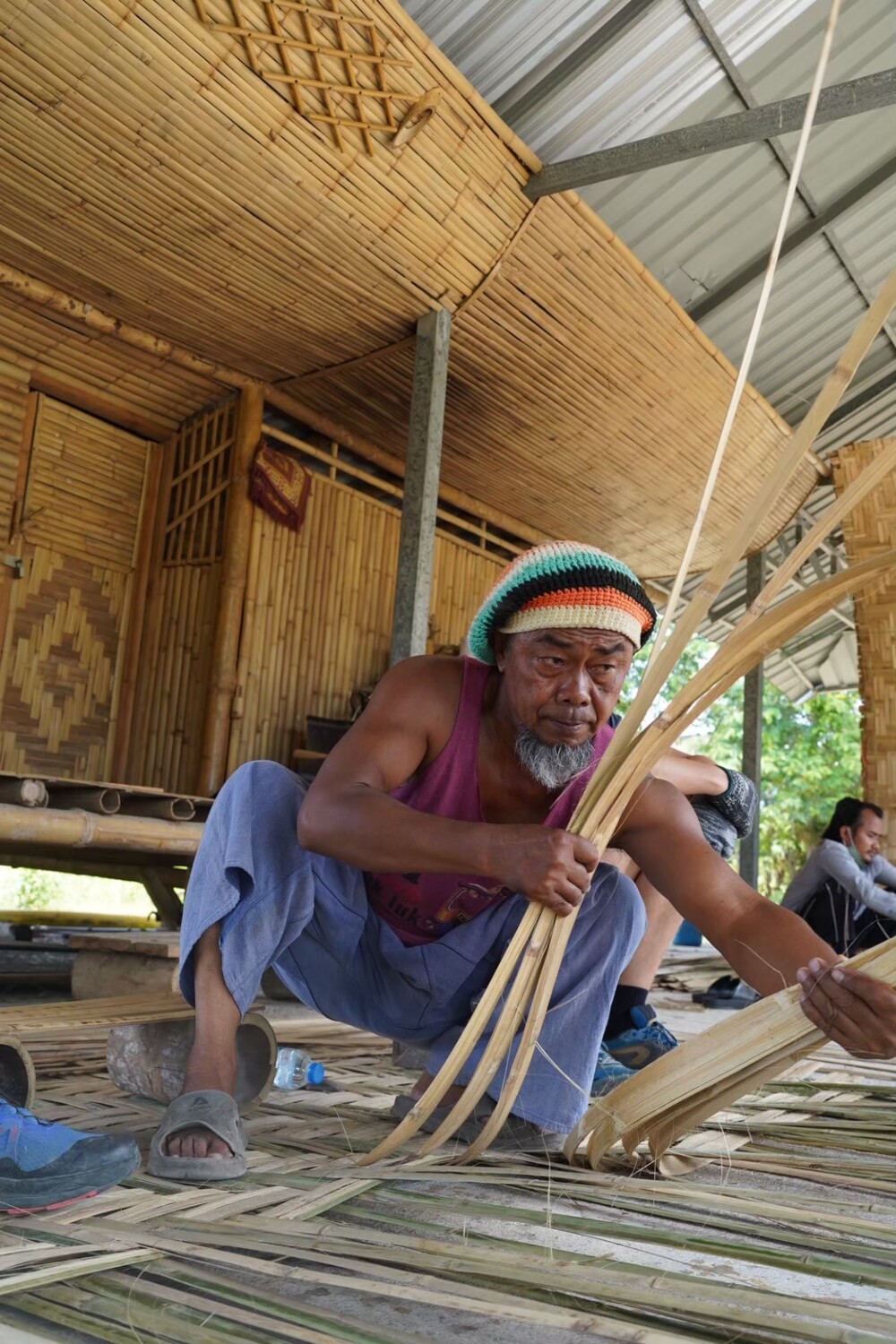

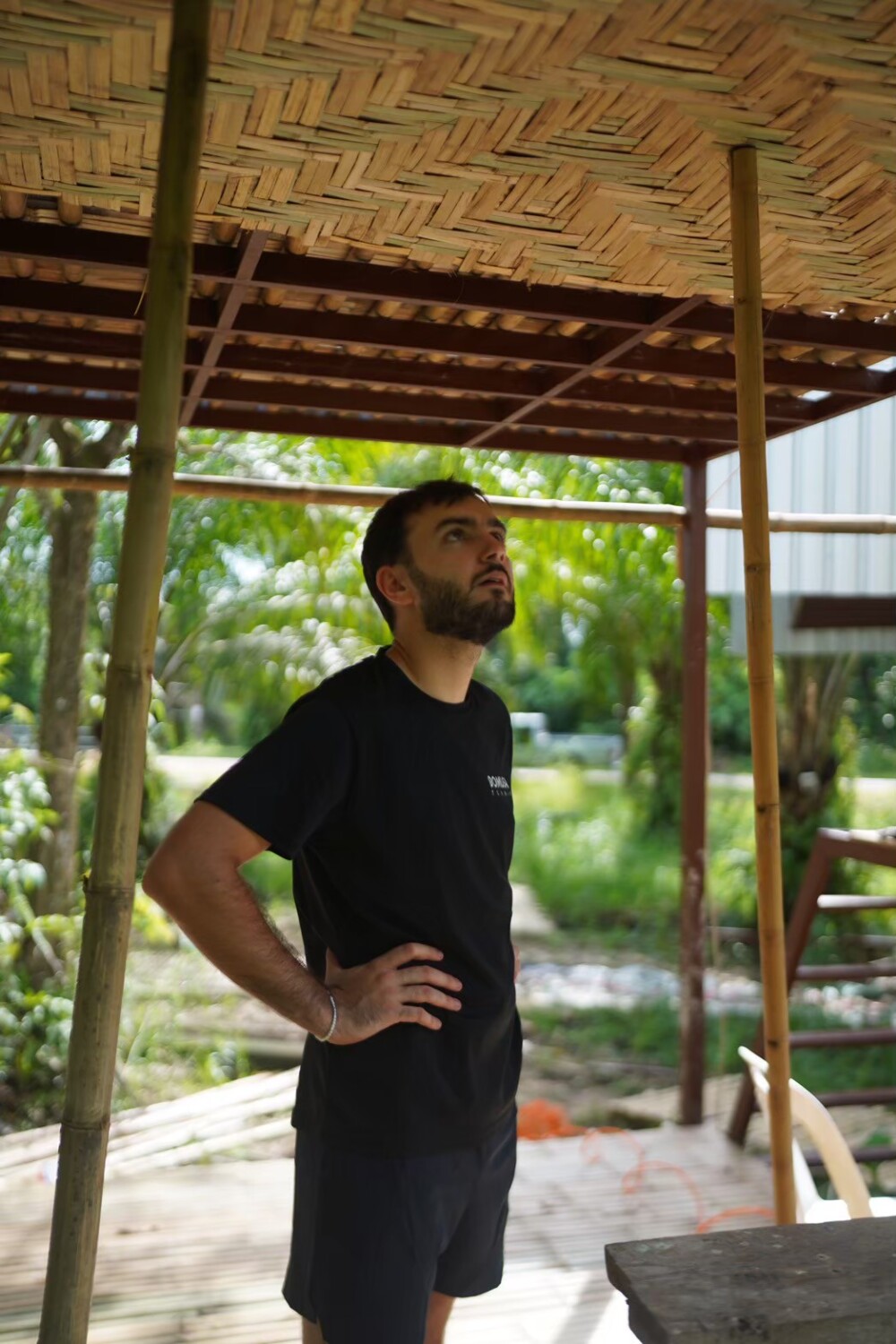
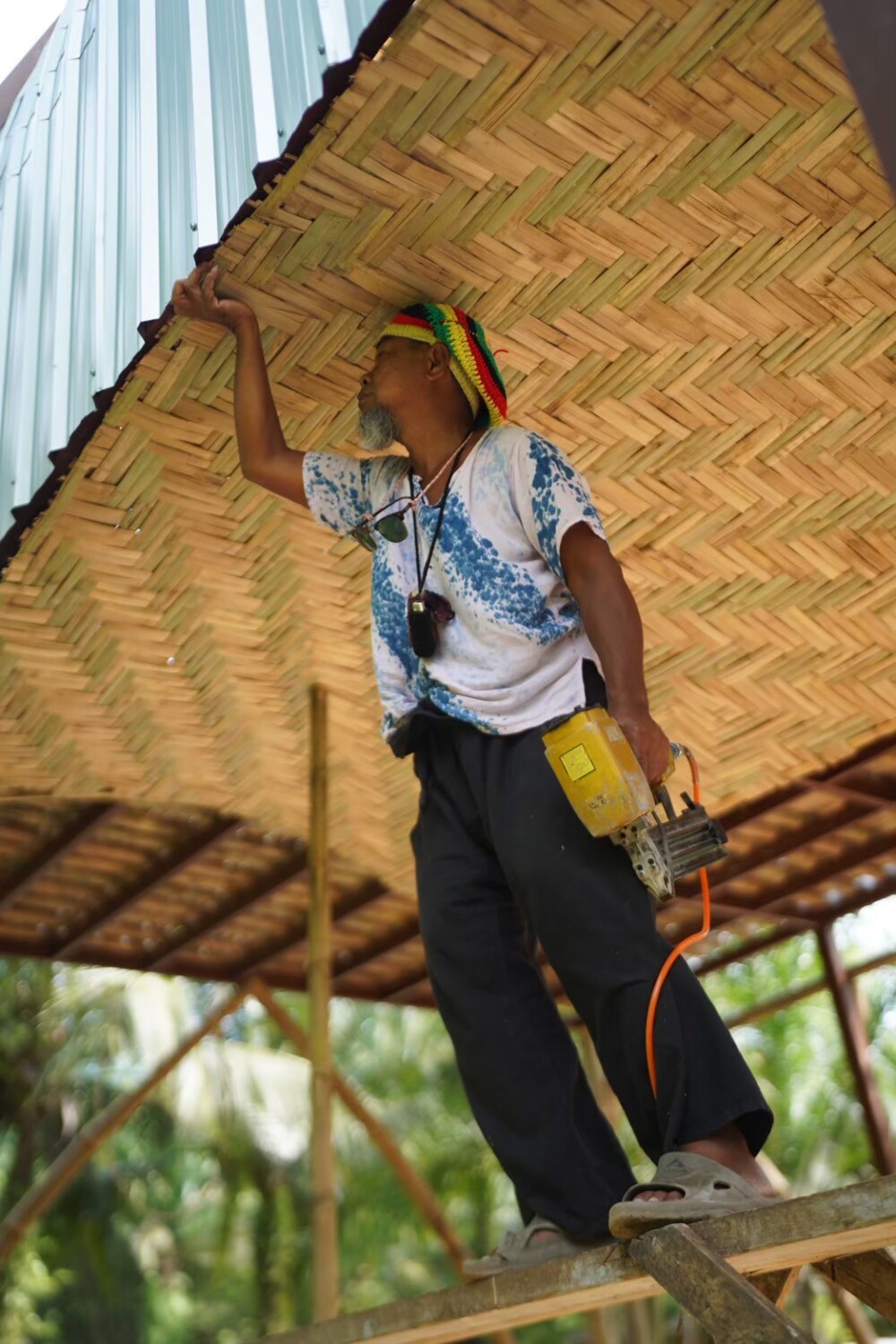
Tuesday (24th Day) – Palm Waste Collection & Lamp Design
With the pizza oven still drying, attention turned to creating kitchen decorations from palm waste. During a brainstorming session, the students designed a ceiling lamp made entirely from palm materials. Chaiyut guided the group to his palm field, demonstrating how to collect and cut the palm leaves into 1.8-meter-long straps. The base of the leaves was especially tough, and the students quickly realized the skill and precision required to work with them. Back at the site, they peeled the palm straps, saving only the soft inner part that would later be steamed for shaping. It was a hands-on introduction to local tools and traditional preparation techniques.
Wednesday (25th Day) – Steaming and Drying Palm Straps
The next morning was spent peeling more palm straps—a slow and detailed process. After a home-cooked lunch of sweet and sour chicken with rice, the students collected firewood from a nearby rubber field. Together with palm fruit waste, this wood fueled a homemade steam oven built by Chaiyut. In this oven, the peeled straps absorbed vapor from a boiling water tank below, softening after about an hour of steaming. Later, the straps were laid out in the sun to dry completely. This day gave the students practical insight into how raw natural materials are softened and prepared for crafting.


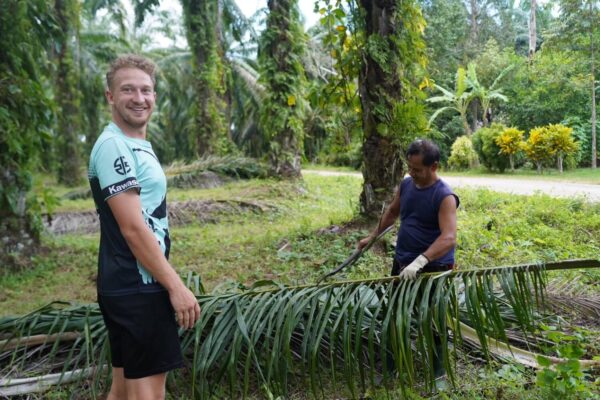
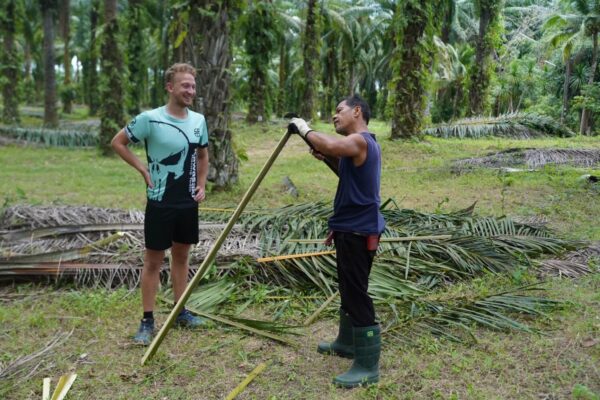
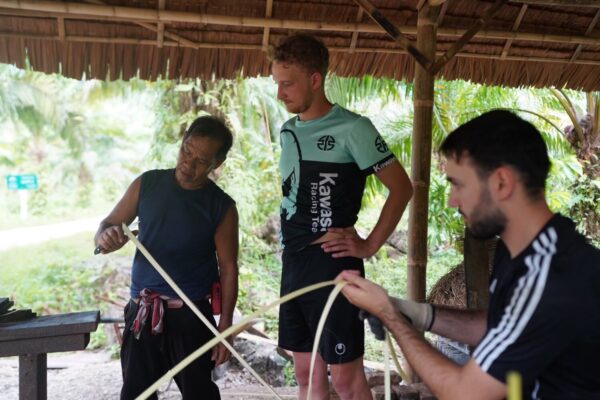
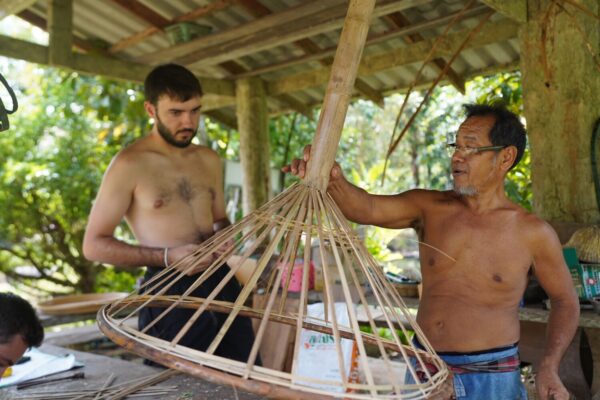
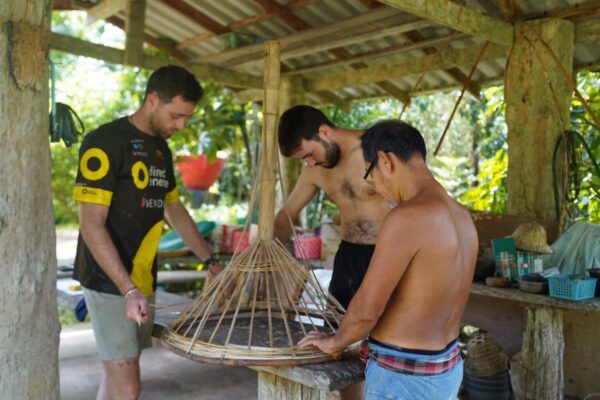

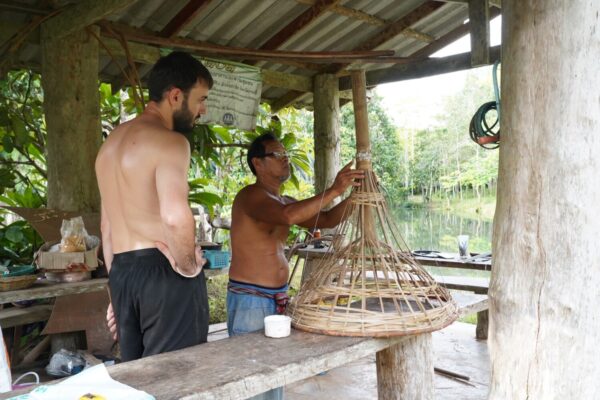
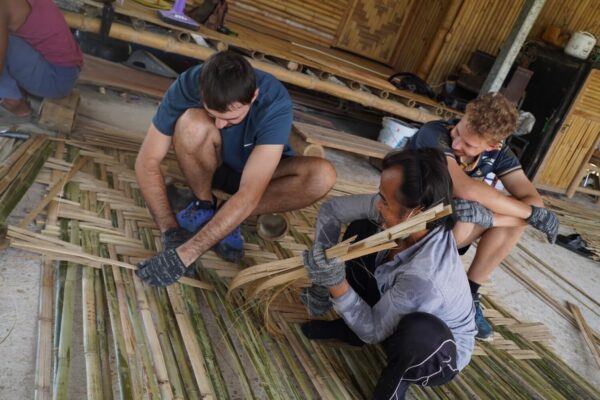

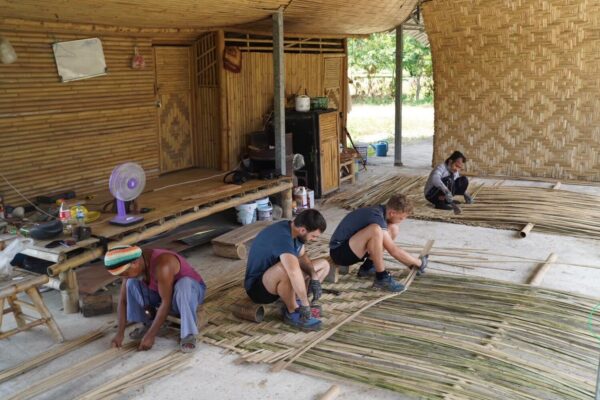
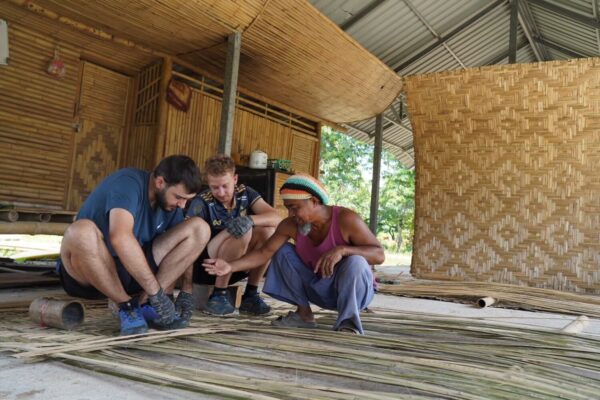
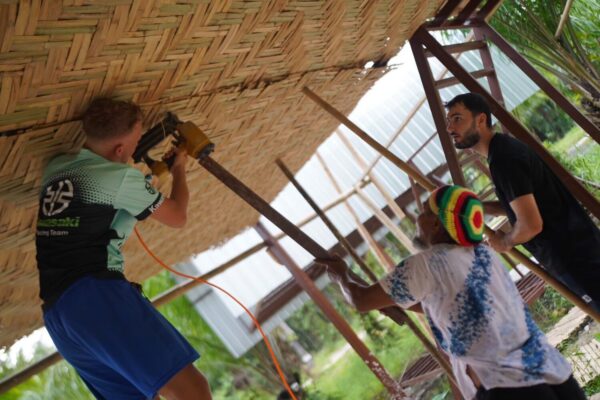
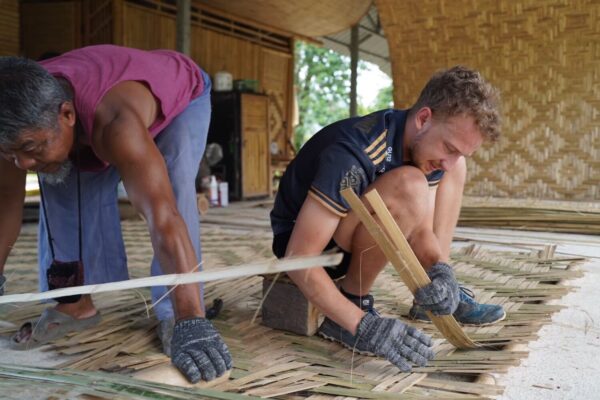
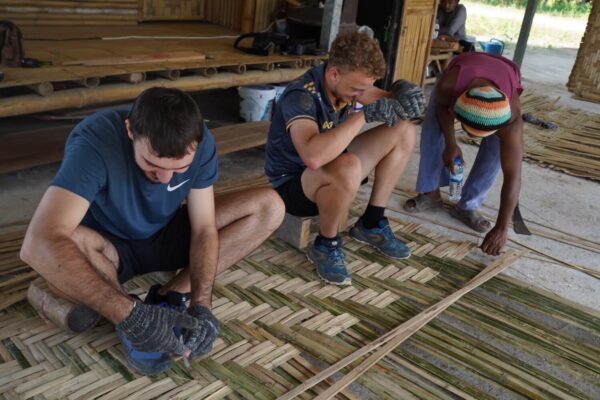
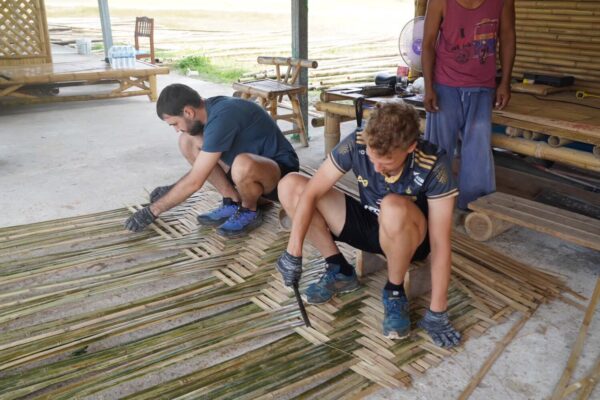
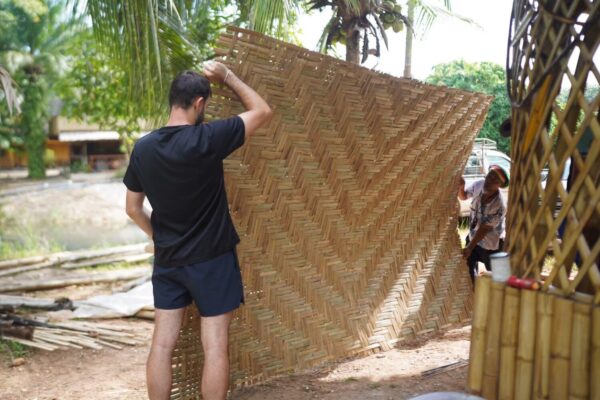
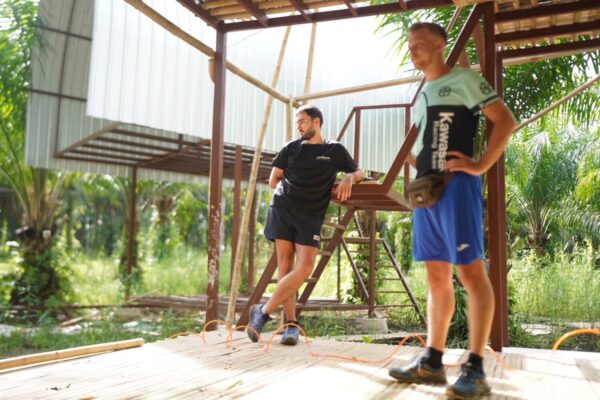
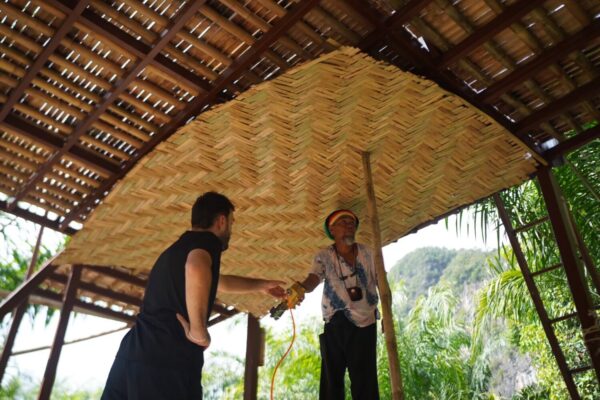

Thursday (26th Day) – Bamboo Weaving with Bang Ree
Thursday took the group to Bang Ree’s workshop to weave bamboo panels for eight new huts at Ao Luek Paradise. Under Bang Ree’s instruction, the students practiced a pattern used for walls and ceilings, gaining hands-on bamboo craftsmanship skills. In the afternoon, Bang Ree introduced them to his mother-in-law’s fruit orchard. The group helped harvest longans and tasted fresh jackfruit for the first time—a sweet cultural pause before returning to their weaving tasks.
Friday (27th Day) – Installation of Bamboo Panels at Ao Luek Paradise
On Friday, the focus shifted to installation. The students transported their woven bamboo panels across the construction site, trimmed the edges for a clean finish, and assisted Bang Ree in fitting them onto hut walls and ceilings. Working side-by-side with local craftsmen, they witnessed the transformation from raw material to a functional structure—an invaluable lesson in sustainable building techniques. The day ended with a shared sense of pride and accomplishment.
Eco Construction Report – Week 8
Celebrating Our Work: Cooking & Community
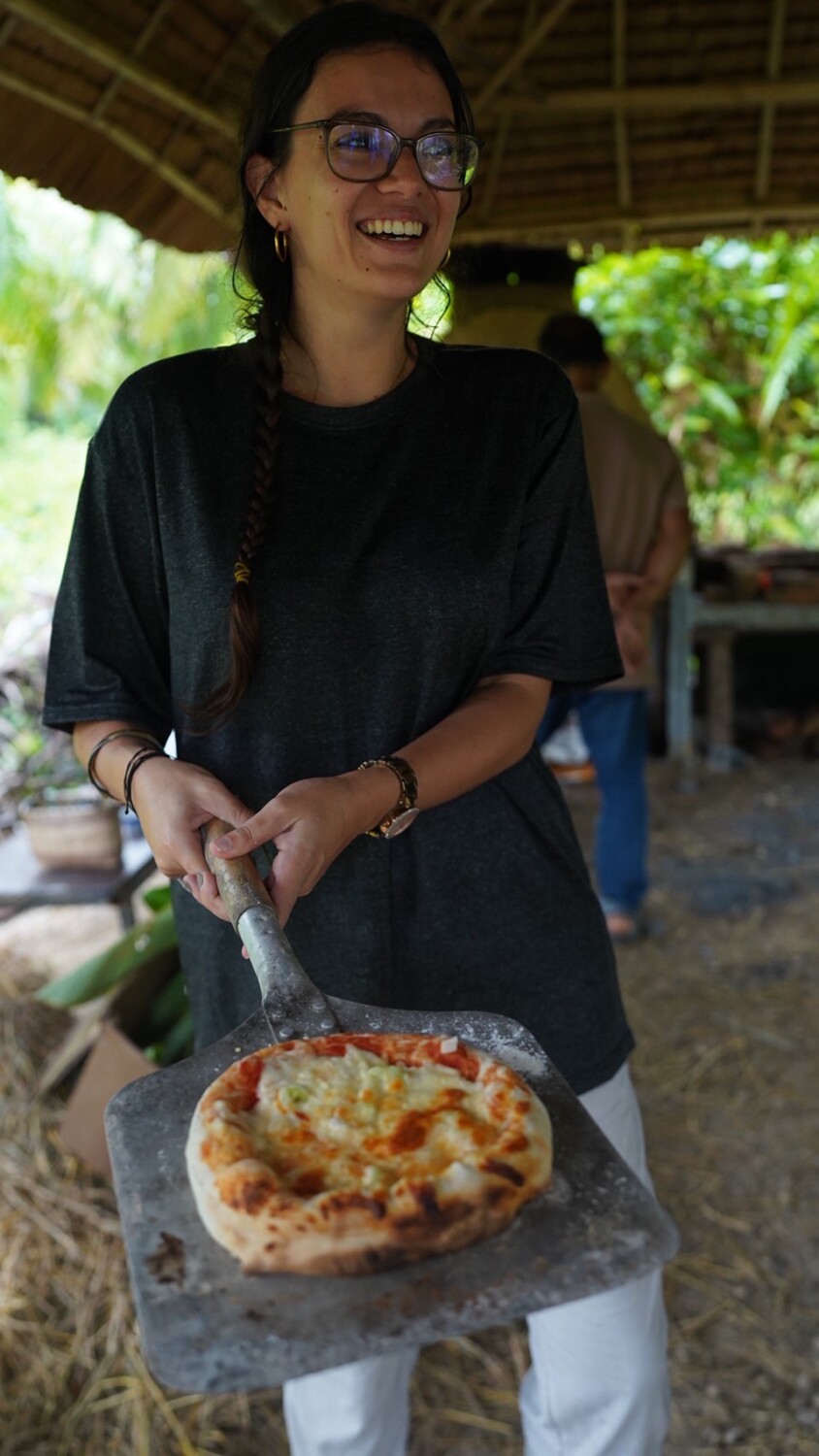
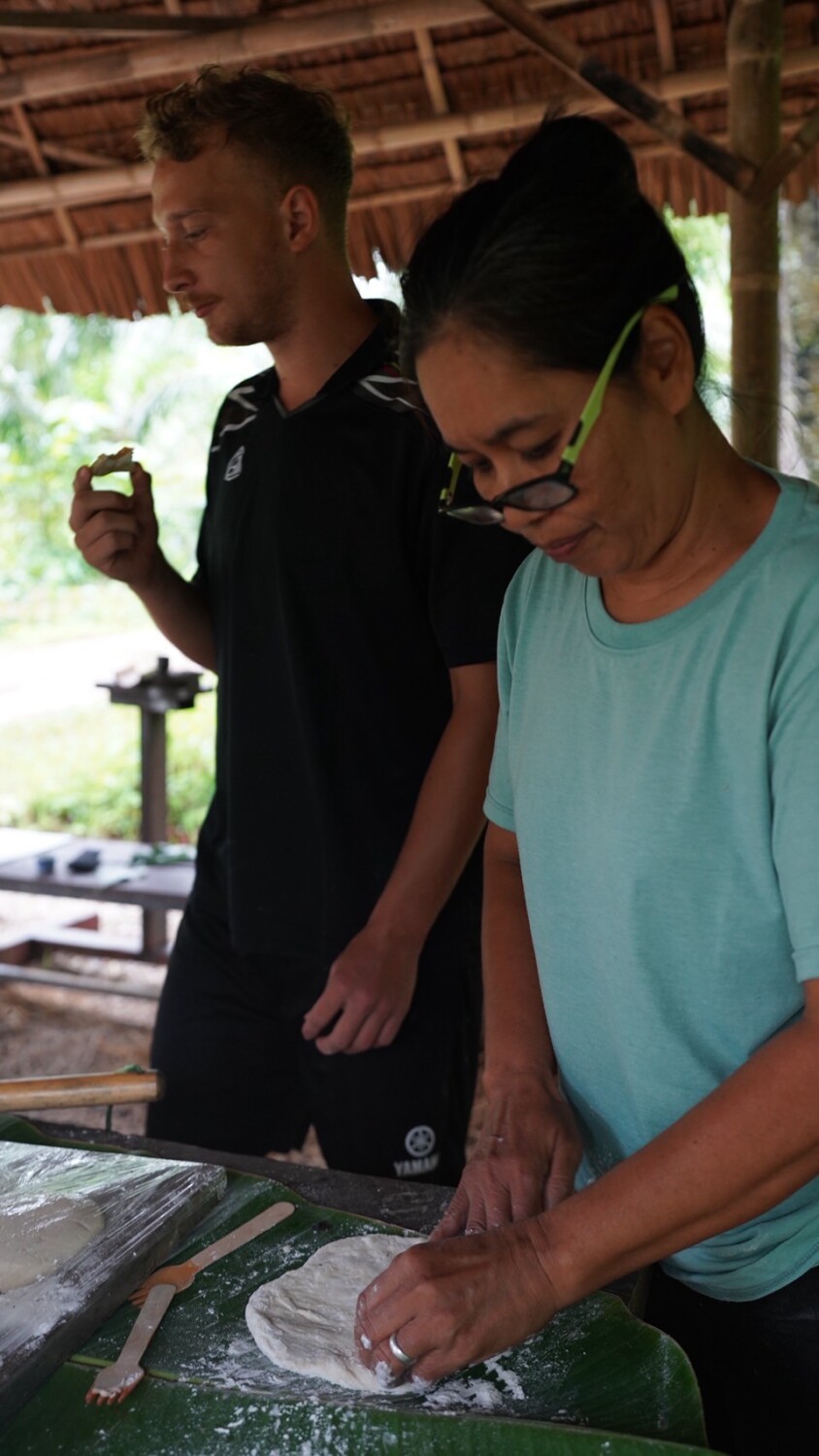
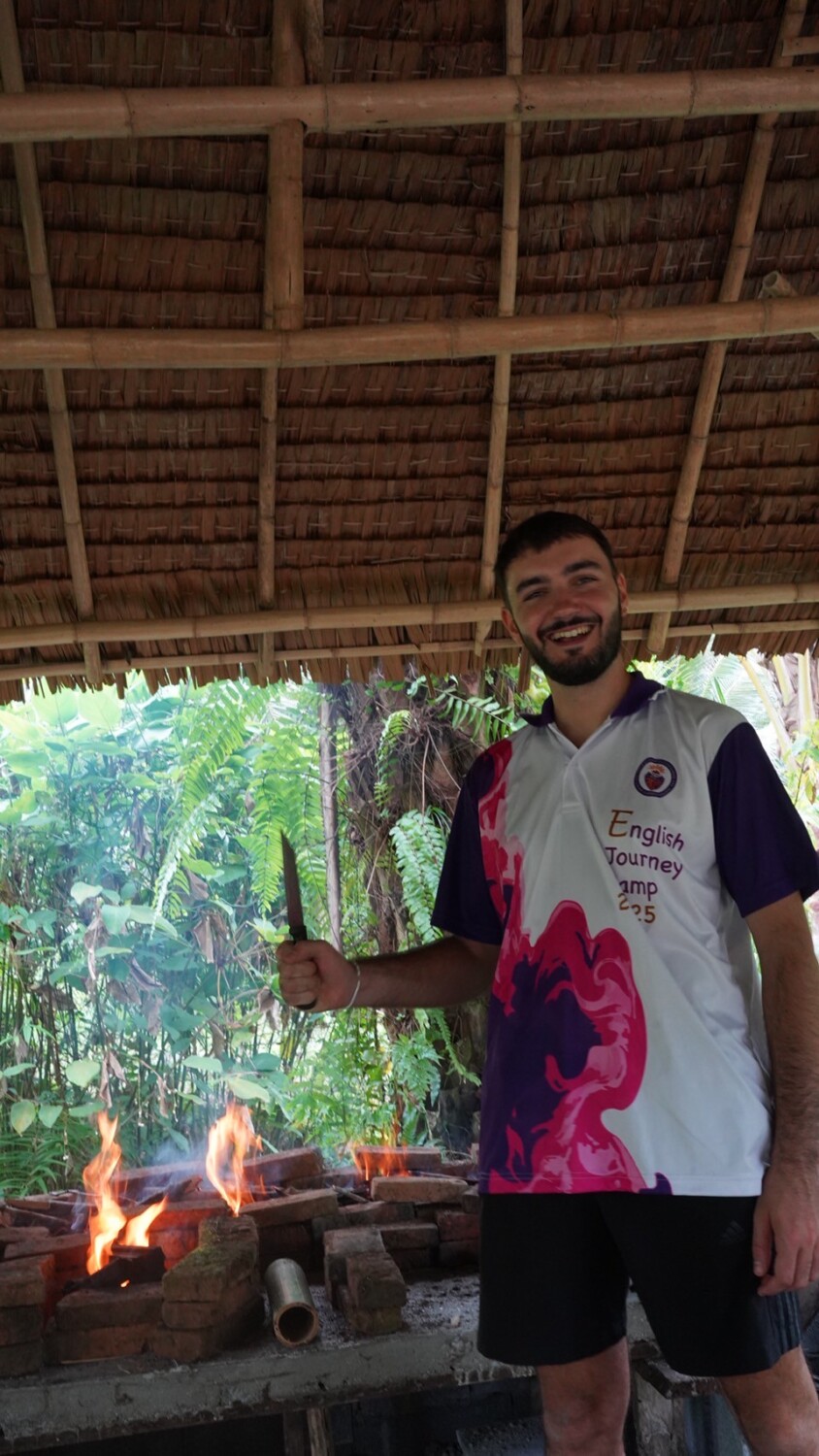


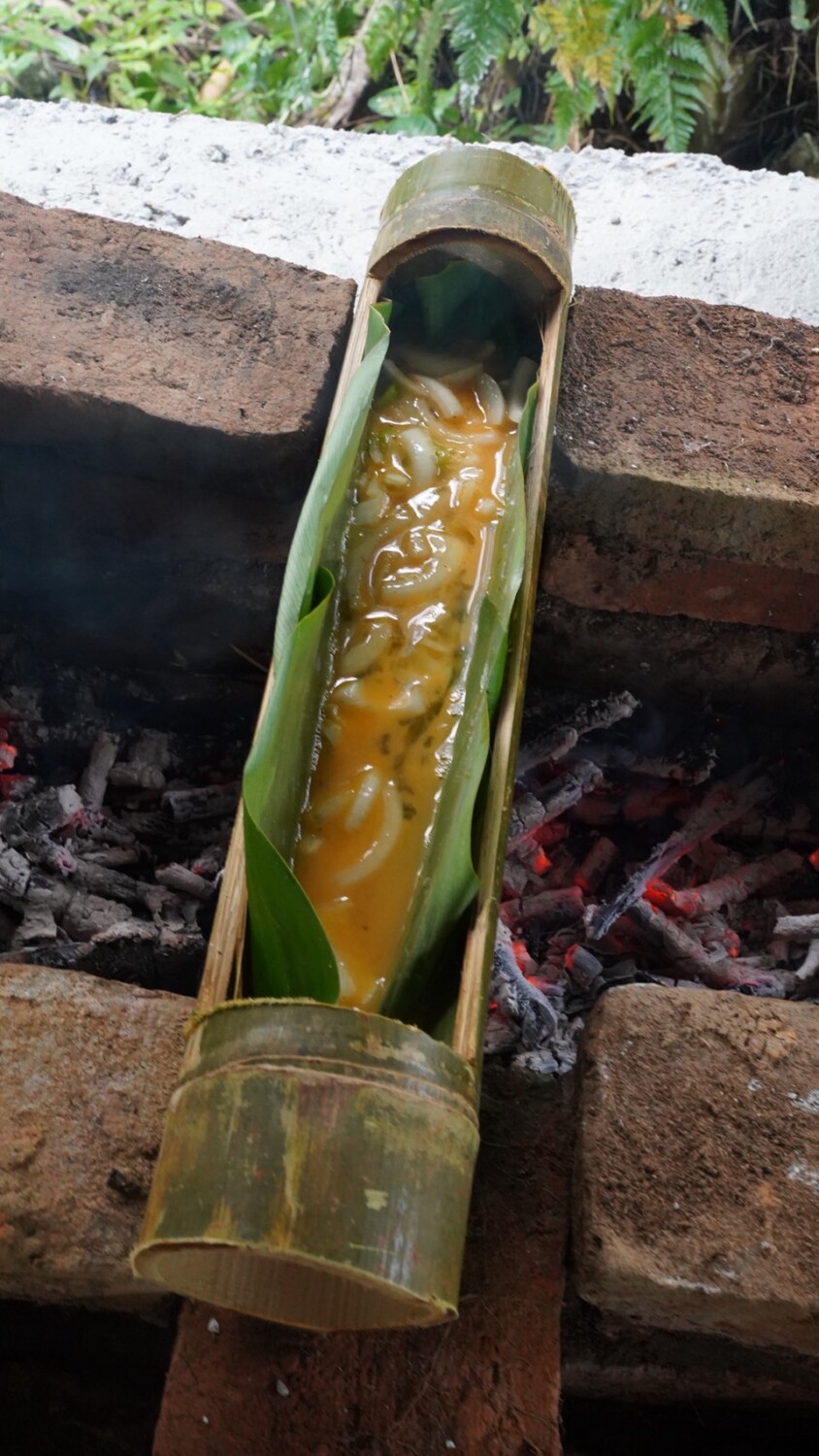
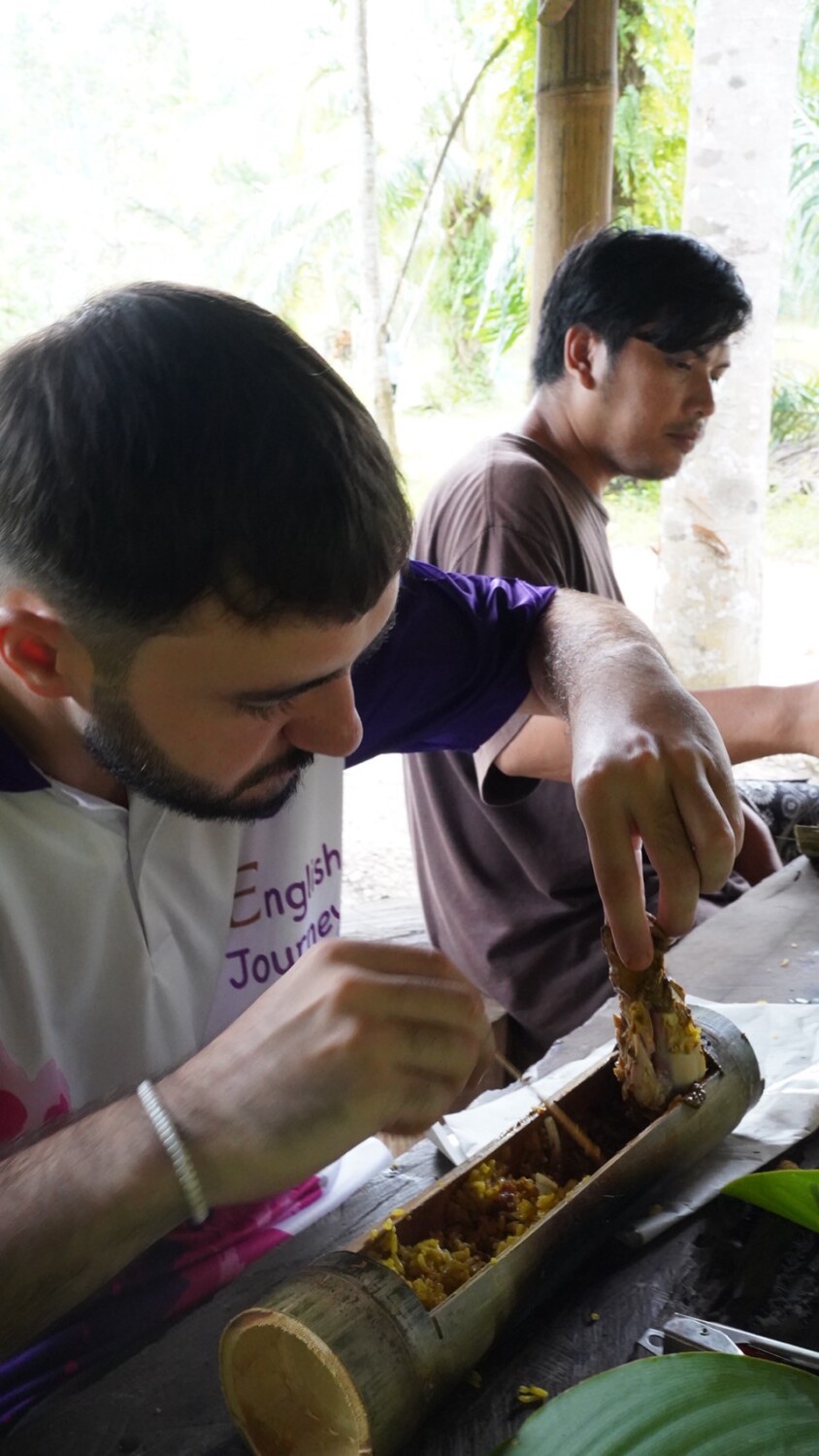
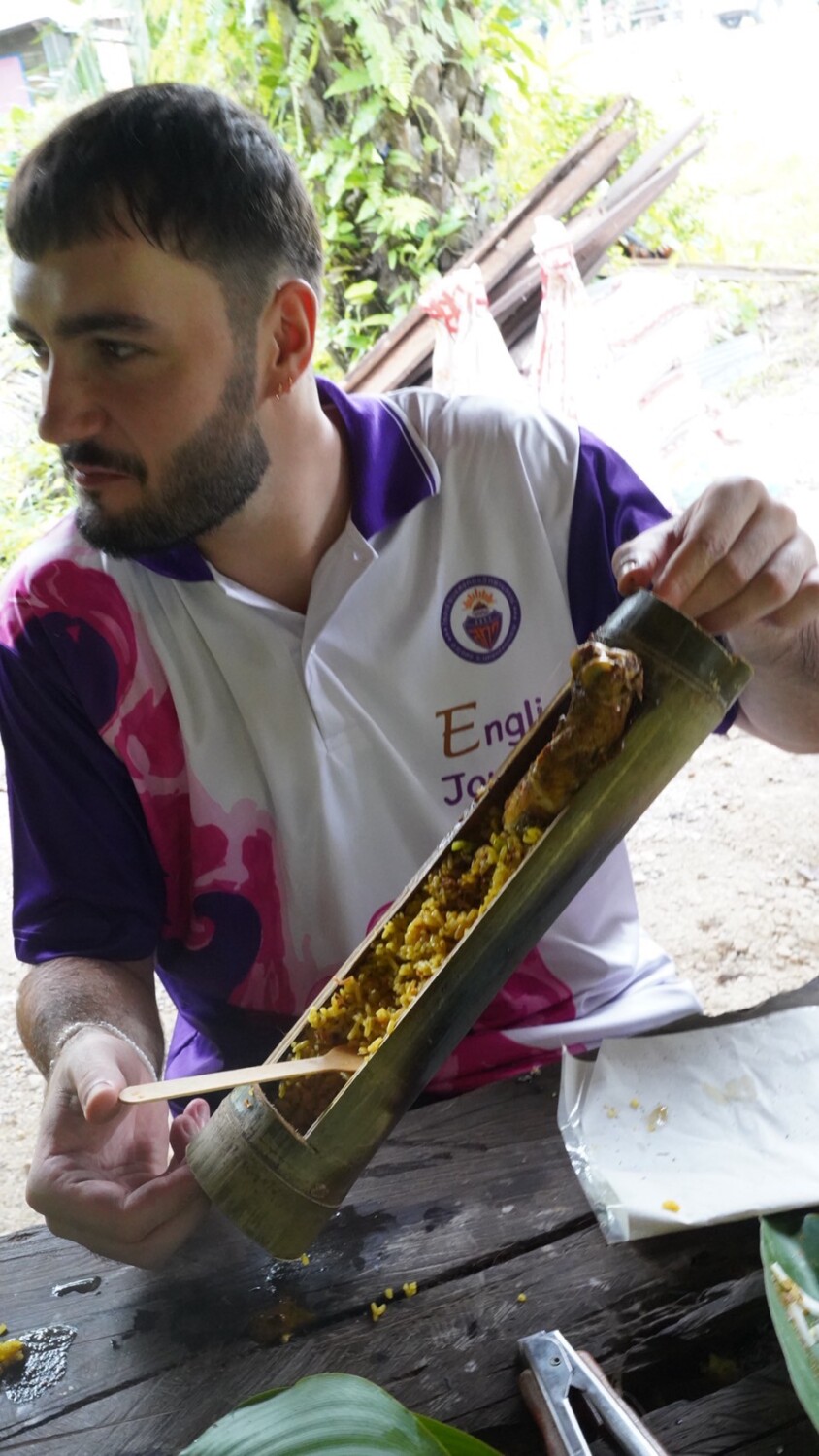
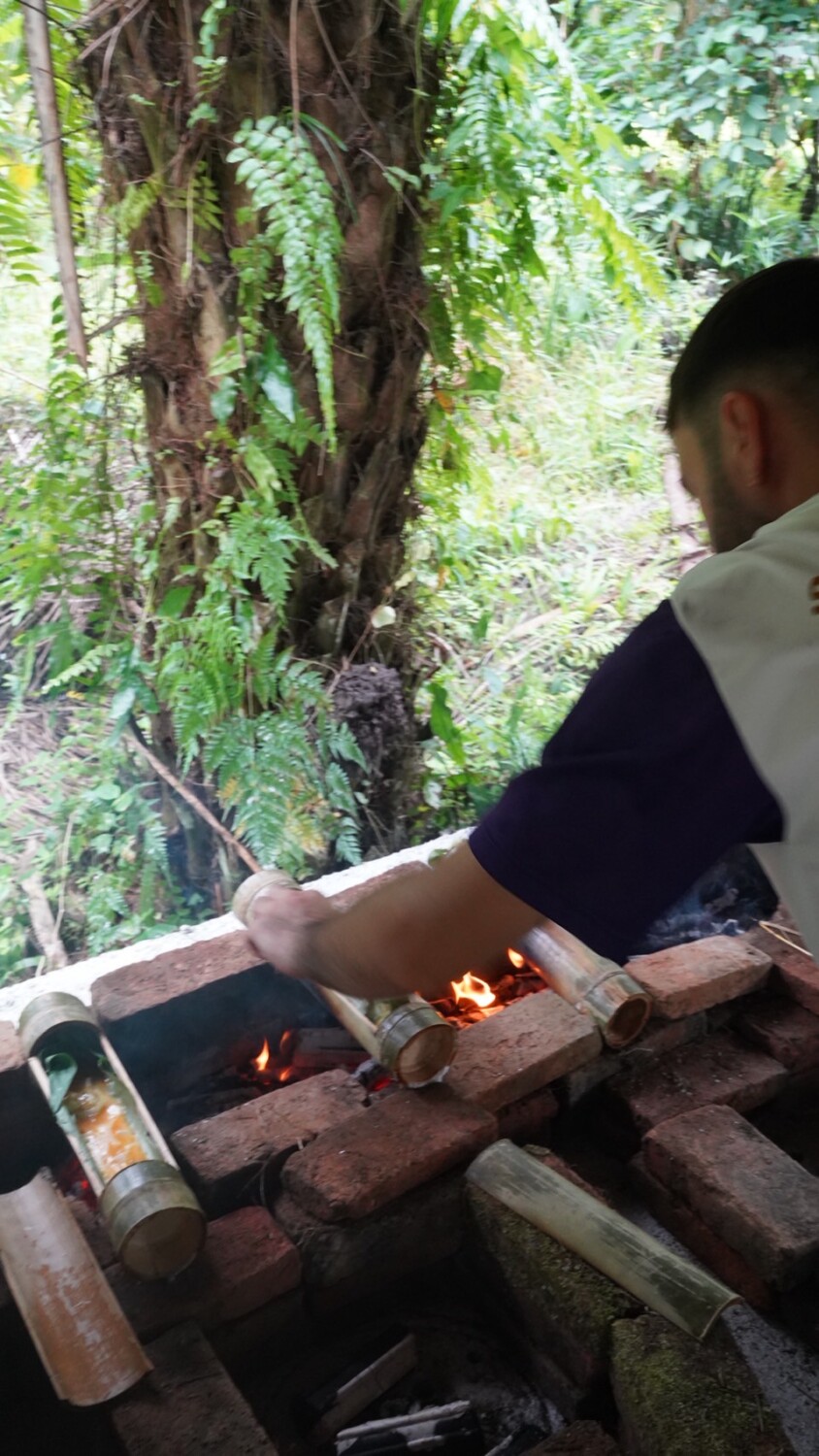
This final week marked the culmination of nearly three months of learning, building, and collaborating. It was finally time to test everything the students had worked so hard on—the outdoor kitchen, clay pizza oven, and fire stove. Rather than follow a strict schedule, the focus was on enjoying the experience of cooking together and celebrating their efforts, though plenty of preparation was needed.
Cooking with Nature
Alongside the pizzas, the team experimented with a new concept: cooking directly inside bamboo over the fire stove. Under Bang Ree’s guidance, beautiful bamboo containers were crafted to serve as zero-waste vessels for cooking, serving, and eating. Filled with aromatic biryani rice and tandoori chicken, the food was infused with a subtle bamboo flavor—a unique and sustainable dining experience.
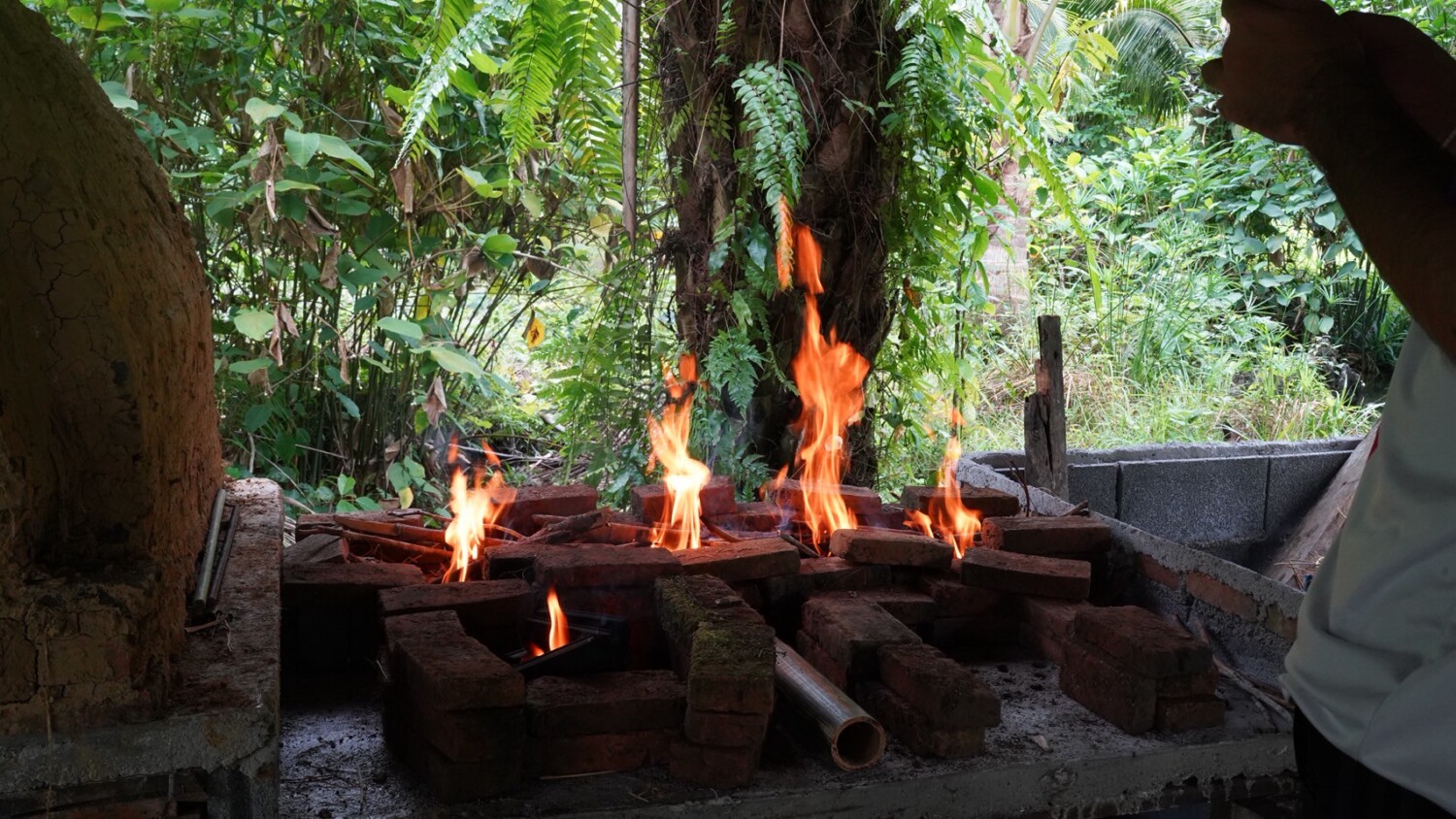

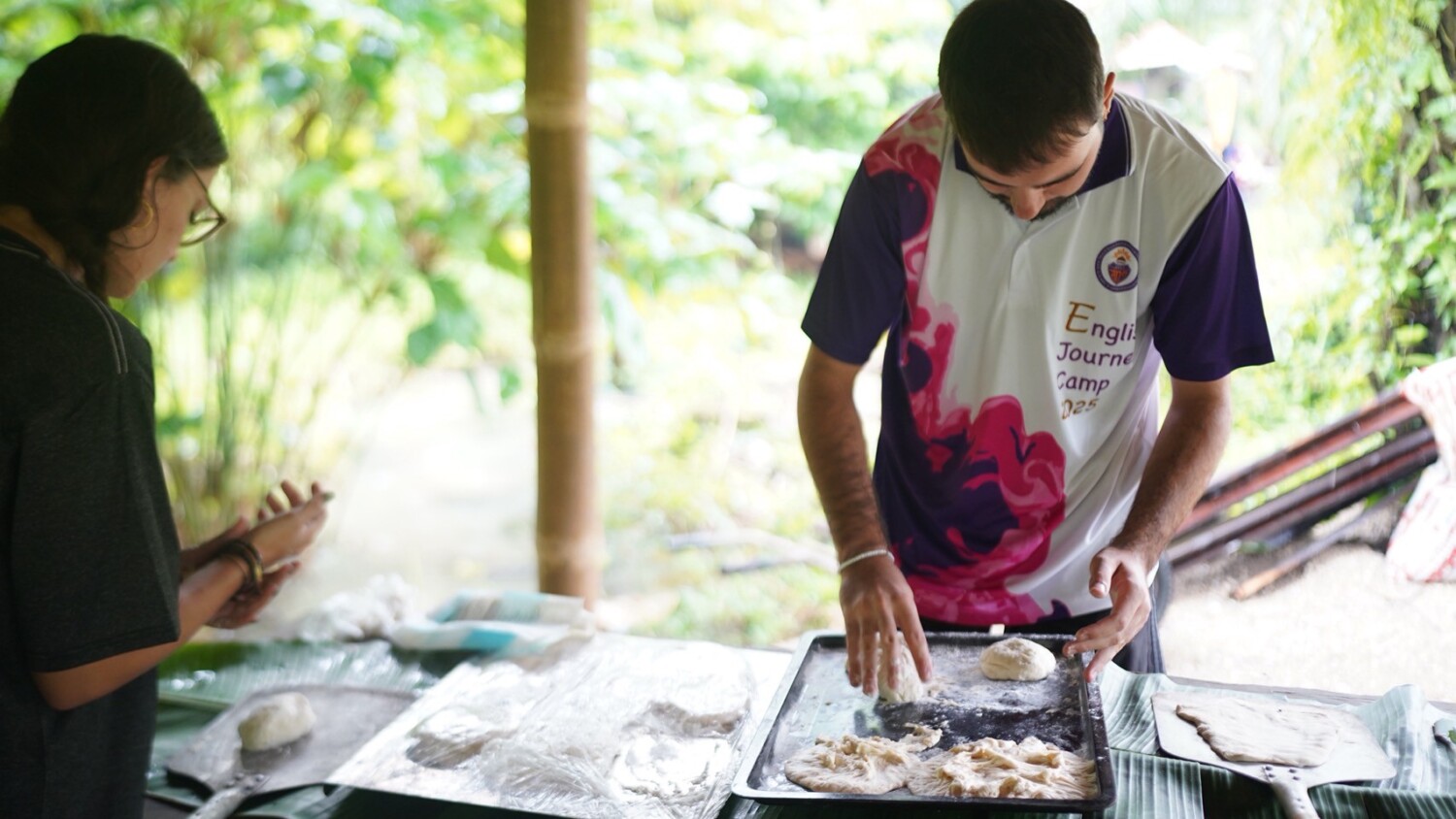
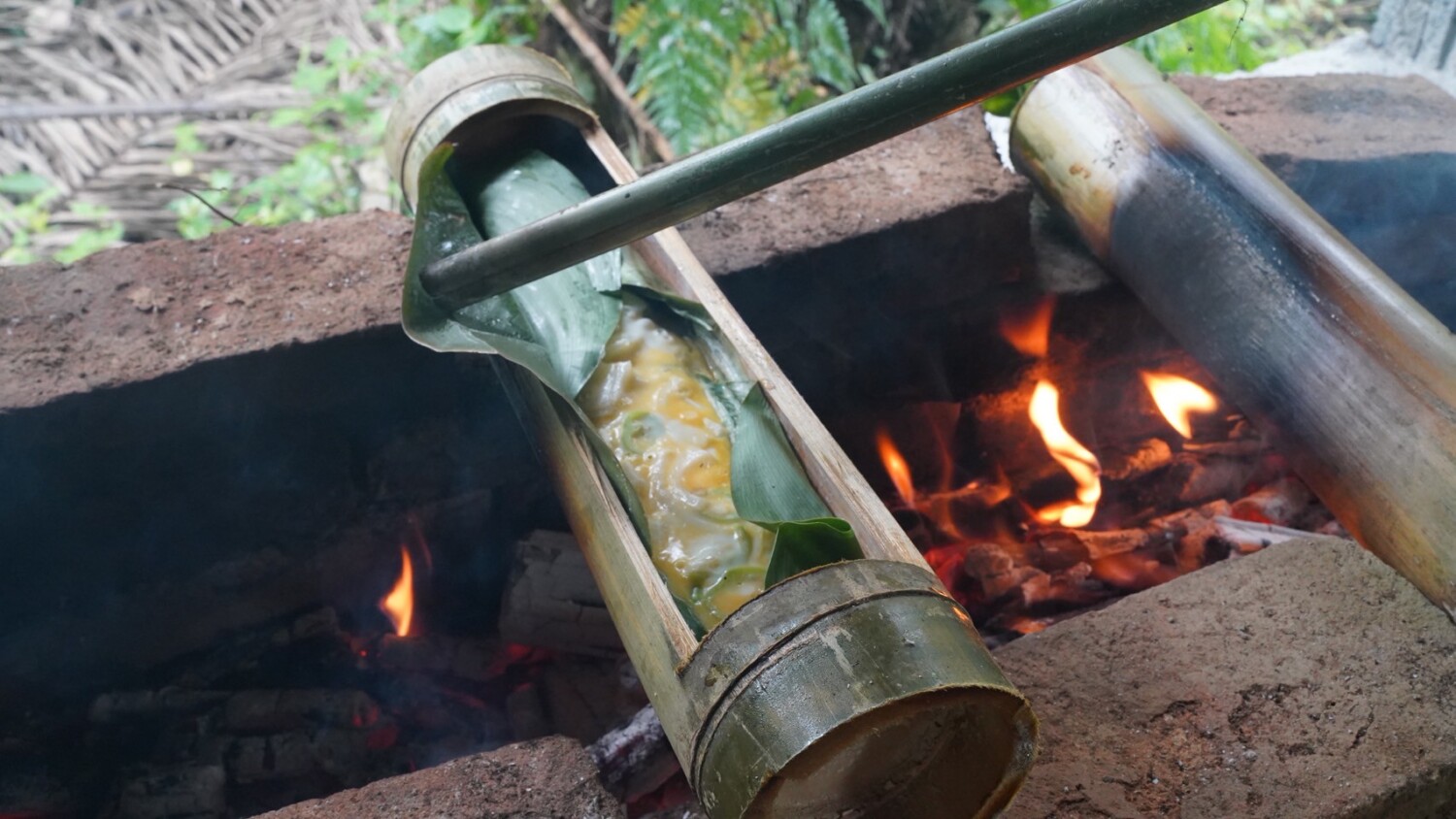
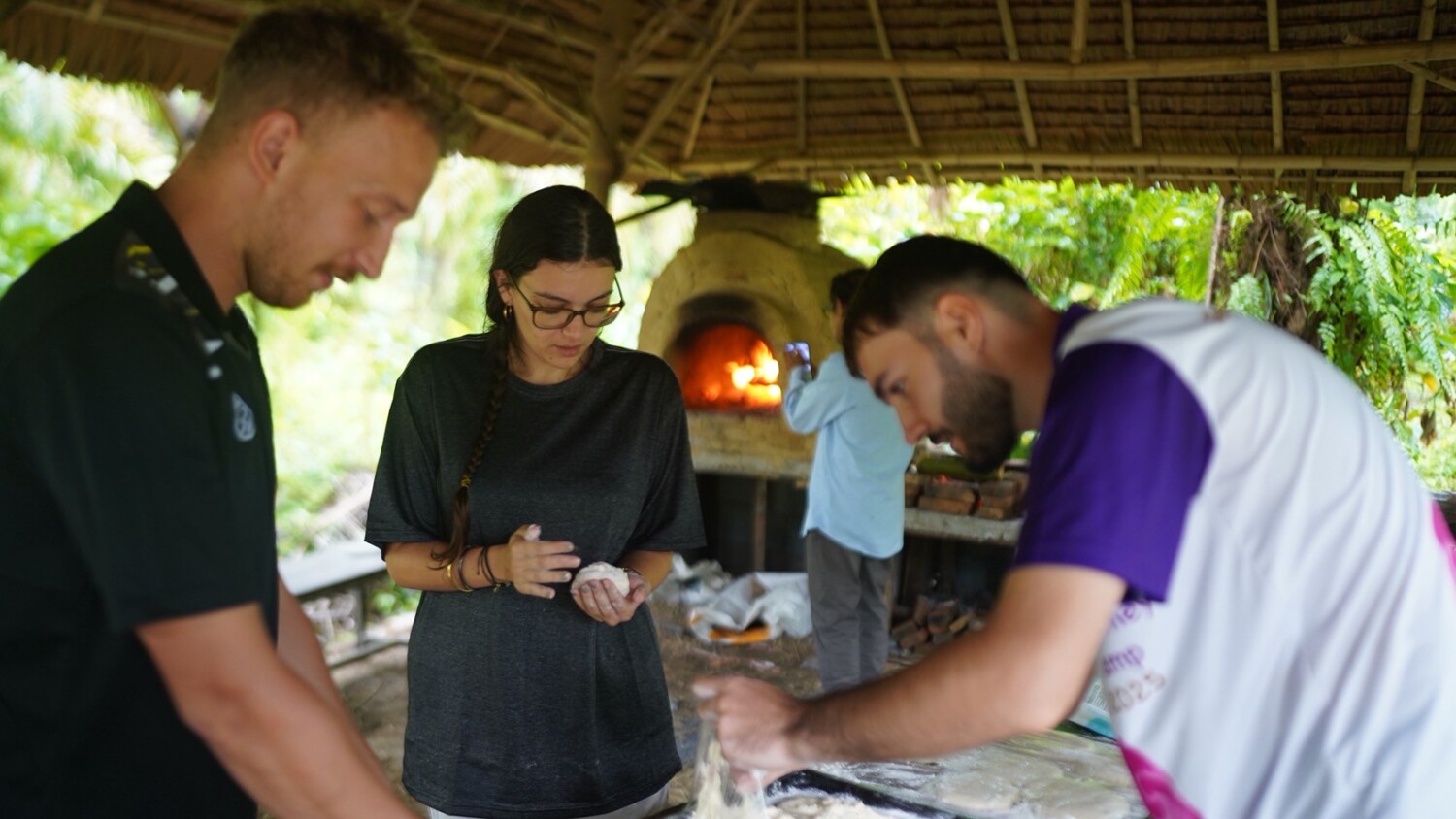
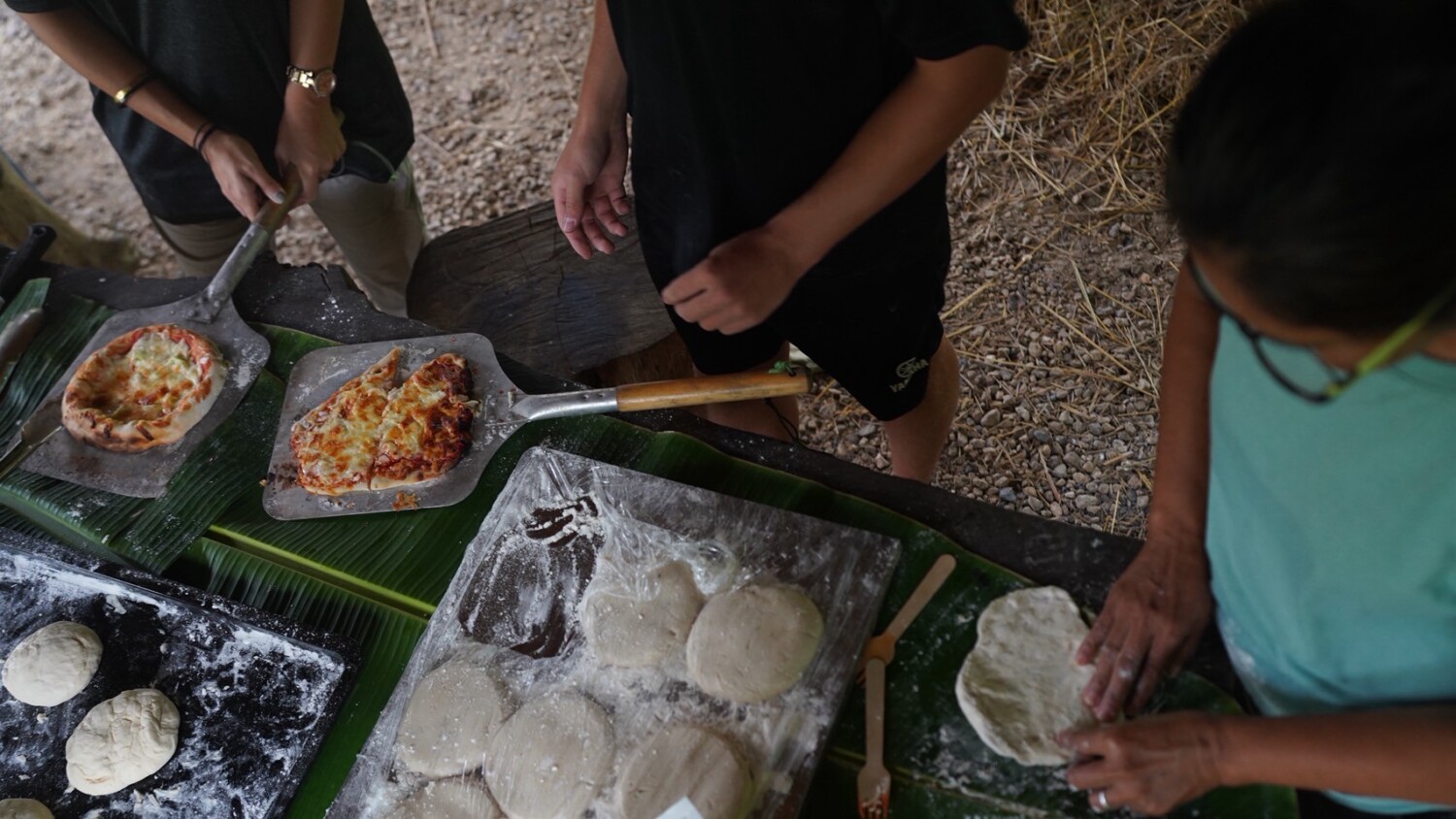
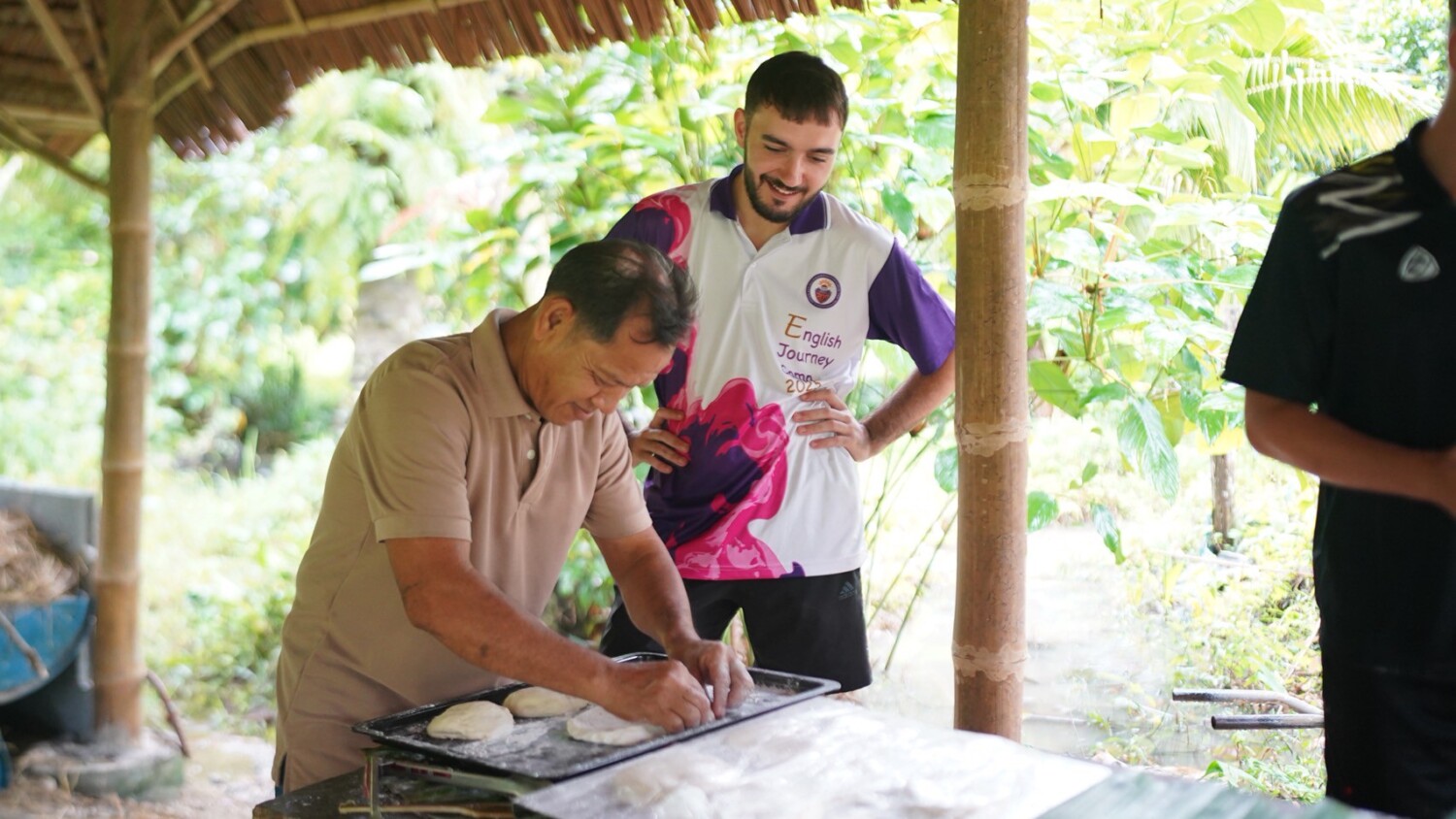
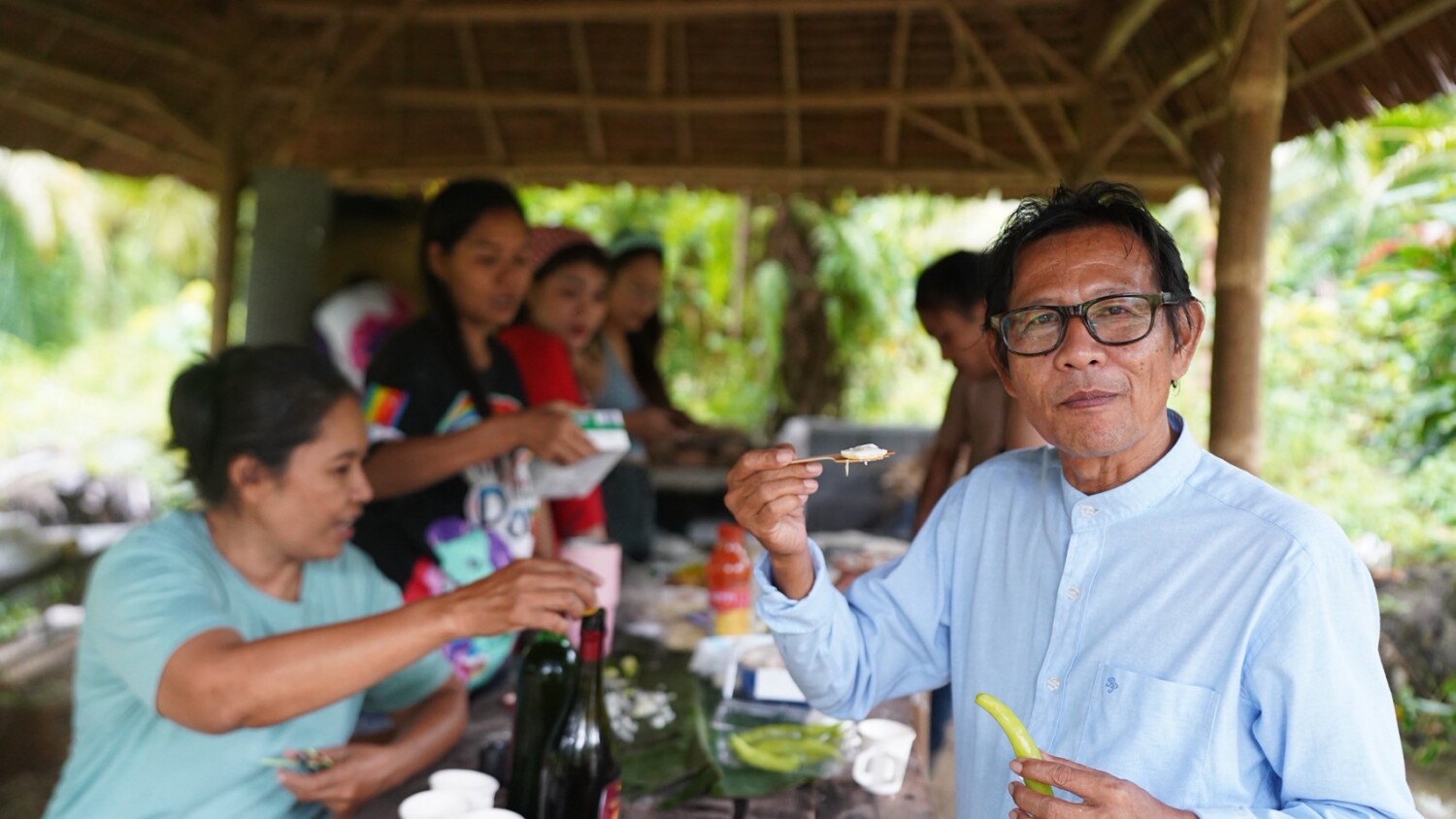
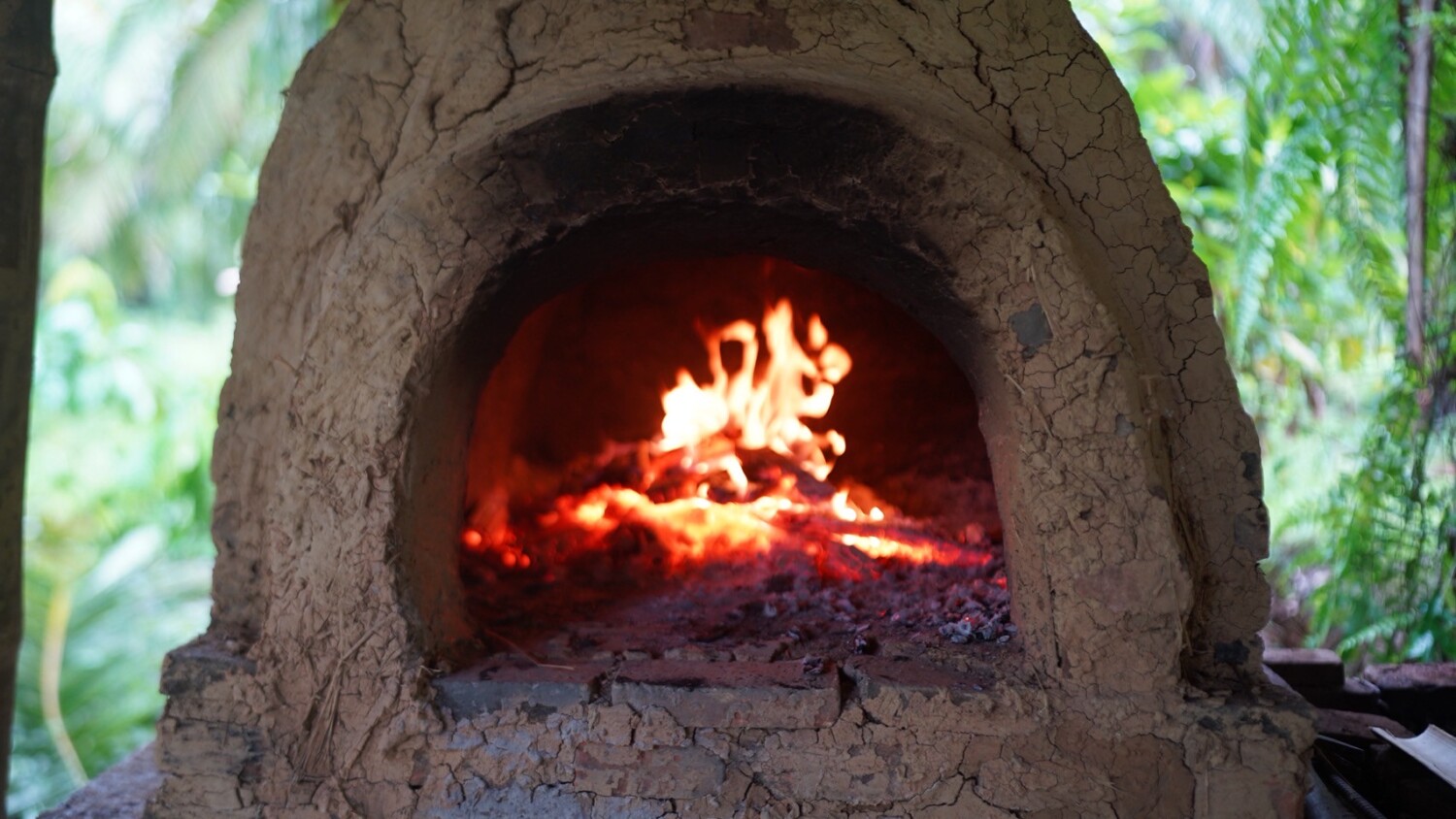
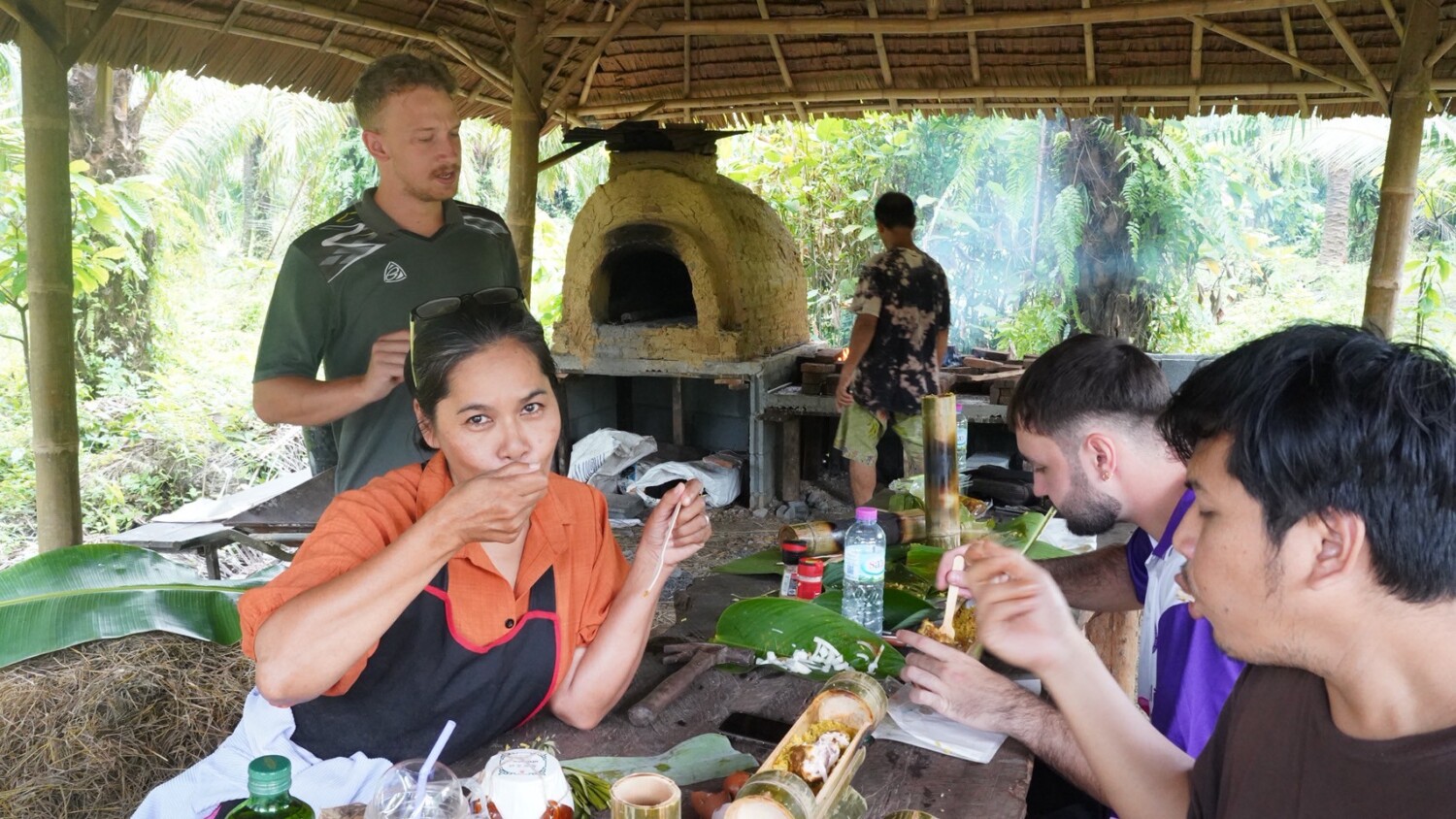
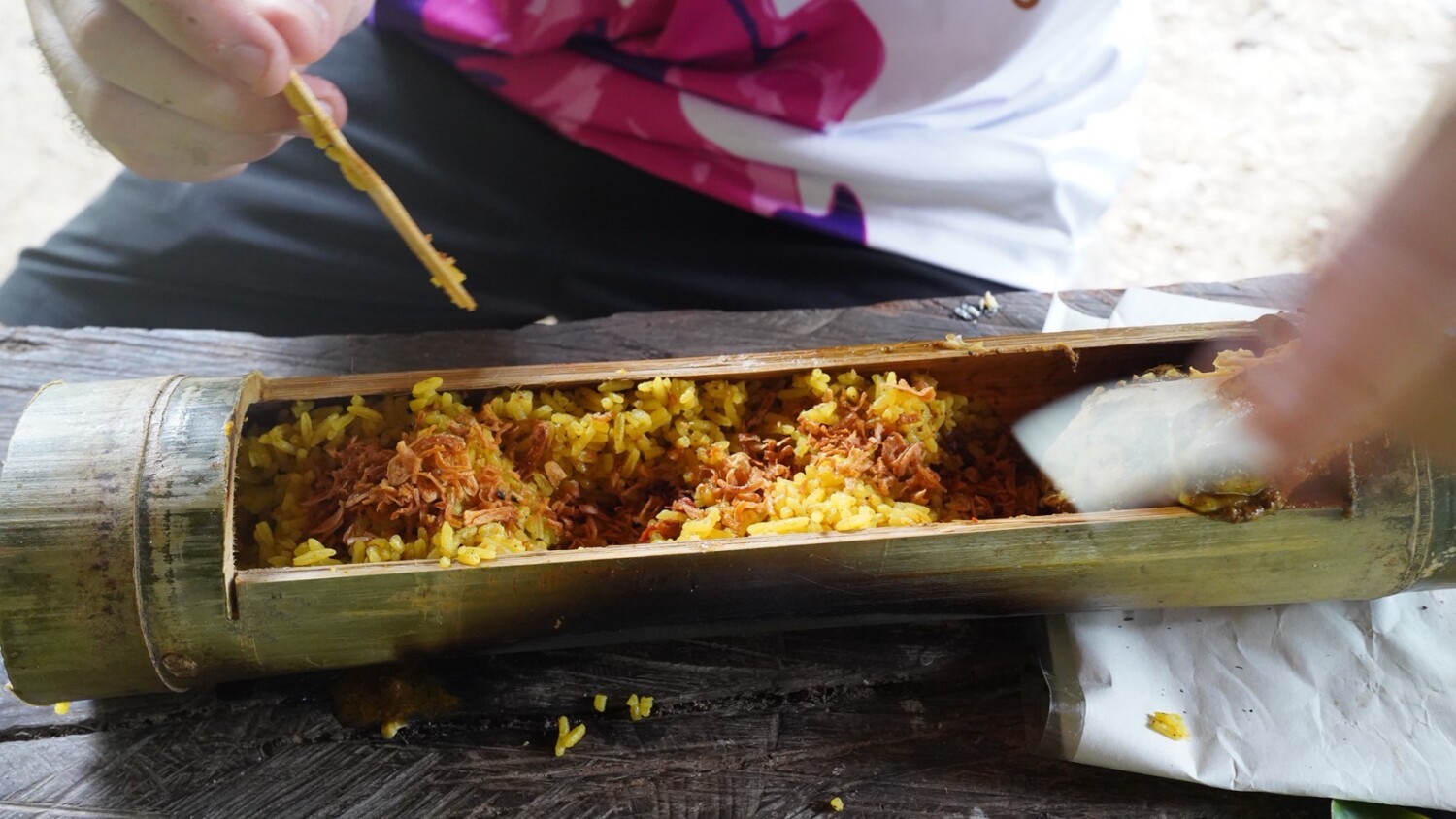

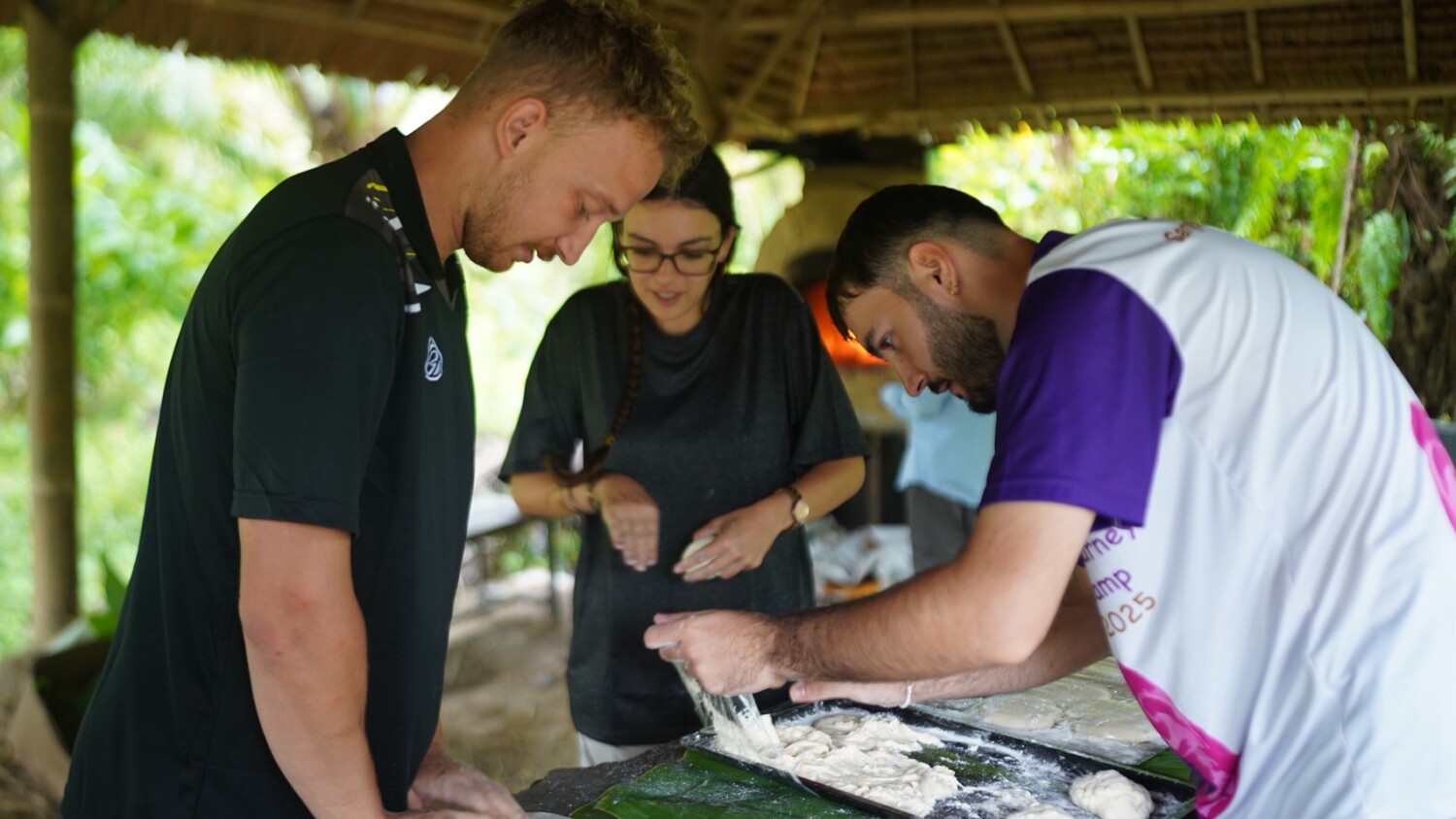
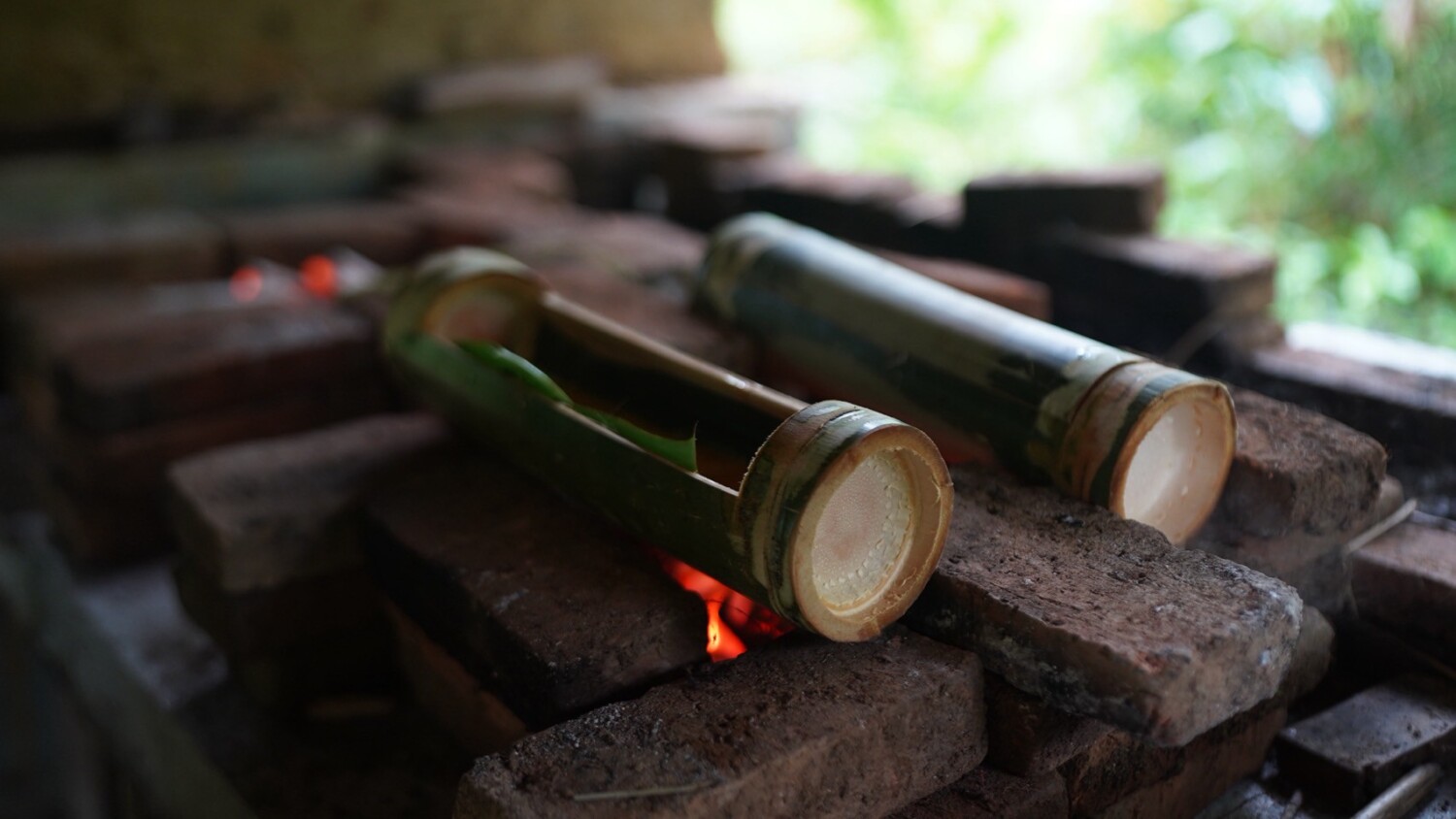
Perfecting the Pizza Dough
A trip to the local supermarket was needed to gather ingredients for the pizza dough and toppings. The biggest challenge was perfecting the dough recipe, as the yeast–water–flour ratio and ambient temperature had to be carefully balanced—a tricky task in Thailand’s rainy season. The students tested two different recipes, and their persistence paid off with delicious results.
A Celebration of Hard Work
On the final day of the internship, everyone gathered in the outdoor kitchen to celebrate. Together, they prepared pizzas, cooked the bamboo biryani, and shared a meal that symbolized months of dedication, creativity, and teamwork. The oven performed beautifully, and the space came alive with laughter, stories, and the aroma of fresh food.
This joyful gathering marked not only the successful completion of our eco-construction project but also the creation of lasting memories and friendships. It was the perfect ending to an inspiring internship—a true blend of sustainable living, cultural exchange, and community spirit.
Meet Our Team
